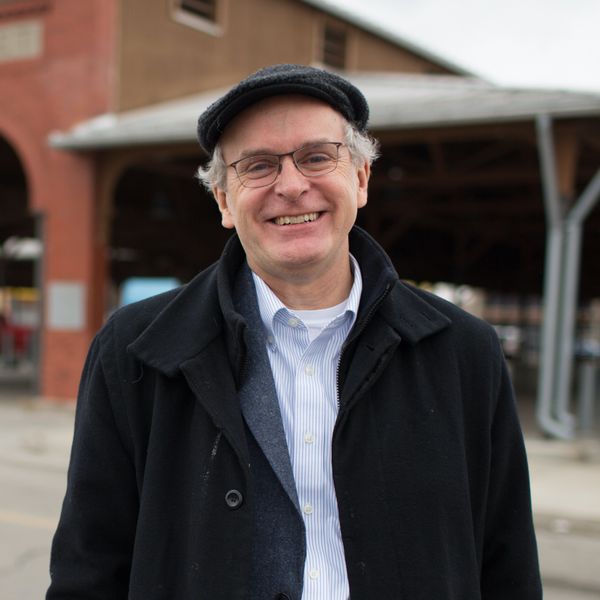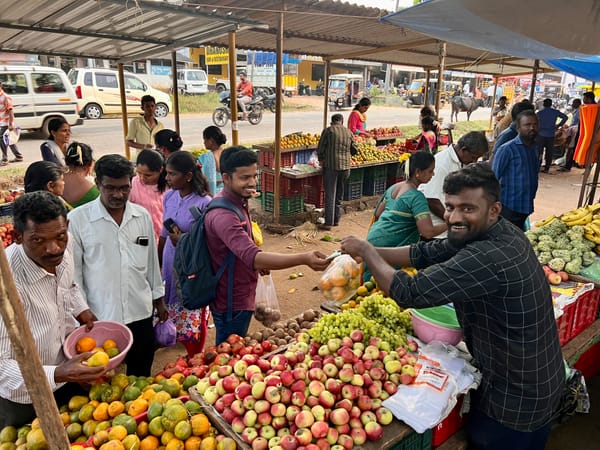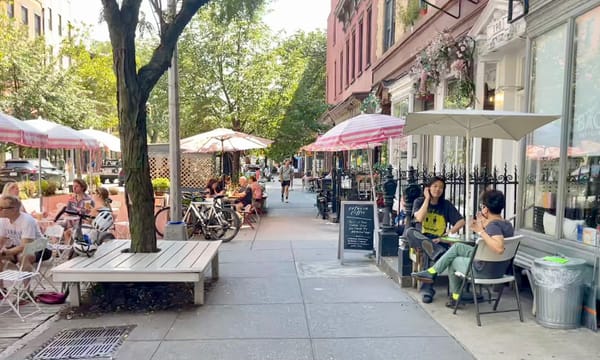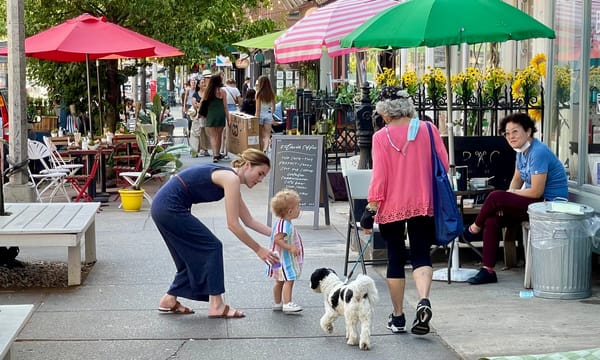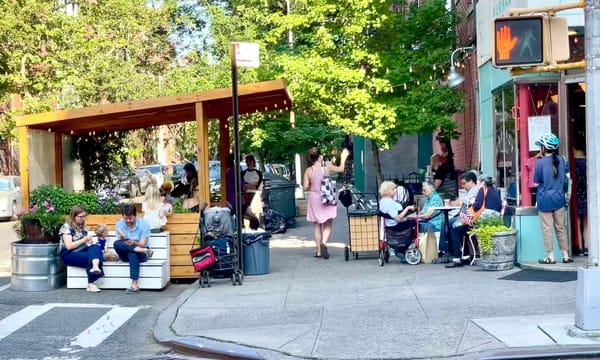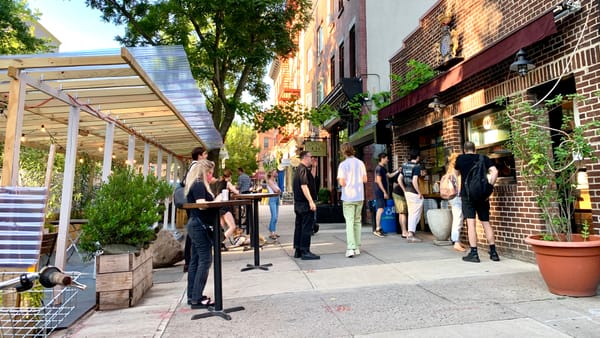The first principle of lively social life is putting people first and the sidewalks is where it has to start
For decades, traffic engineers honed their technical skills defined by a narrow discipline to systematically rip through cities and especially smaller towns, widening streets and "improving" intersections to facilitate traffic flow. Sidewalks, once so full of life and vitality, became narrow paths, often with barely enough space to walk.
However, streets and sidewalks are the arteries of community life. Many of the most vital parts of our social lives play out on them. And this can only happen if they provide us with safe, comfortable, and pleasant spaces in which to stroll, shop, and gather. A fundamental shift is imperative to make this possible – changing our focus from vehicle throughput to social life when it comes to how we define a great street. Streets and sidewalks are places for people and it's about time we take them back for community life.
Looking to the Past
In these historic images, one can't help but notice that there is significant casual/social activity on the streets. The streets are "shared" with people roaming throughout all areas, including those where cars and public transit are. There do not seem to be pedestrians in platoons walking along the sidewalks. Rather, people gather in small groups, socializing with friends and even strangers.
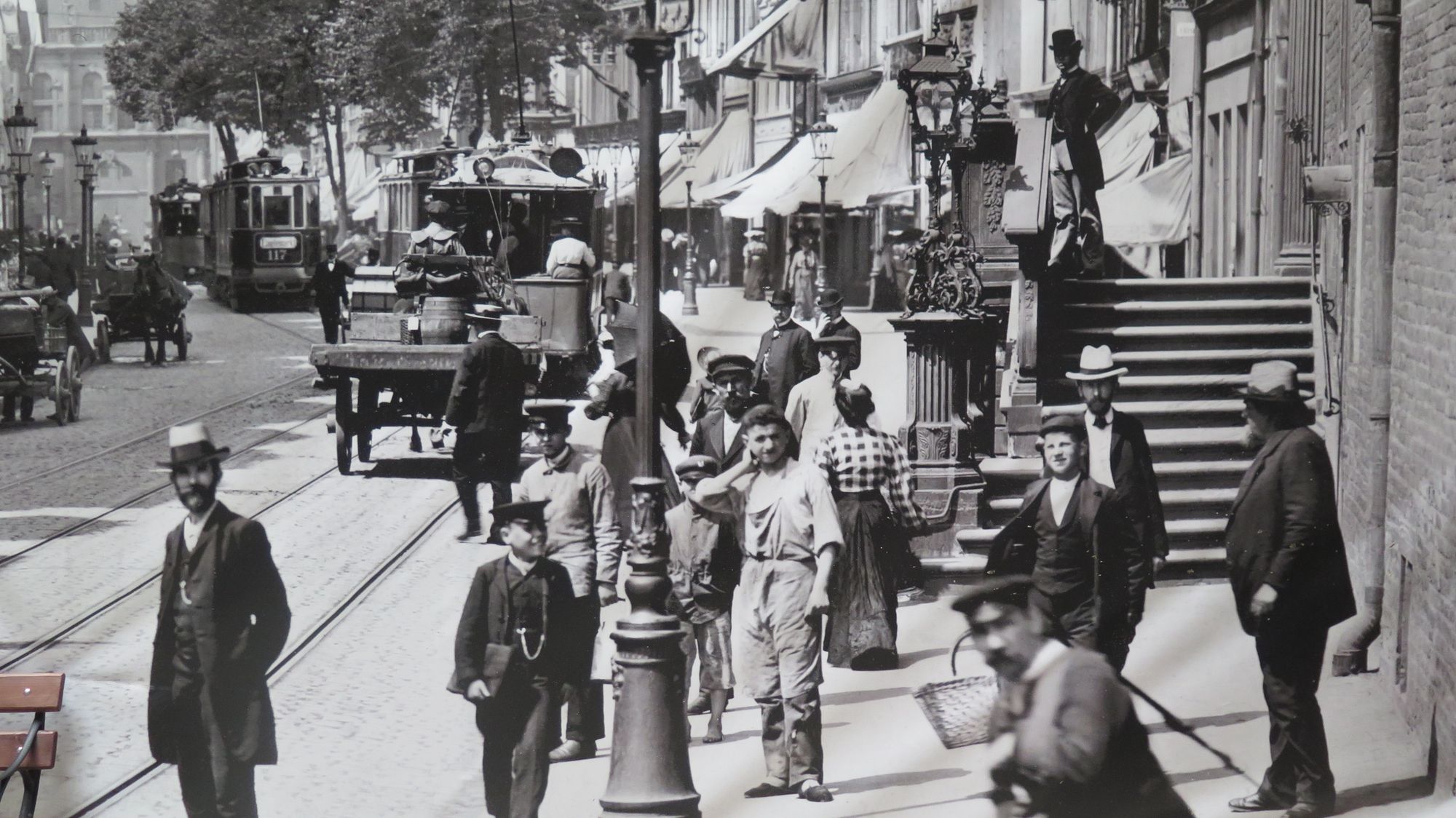
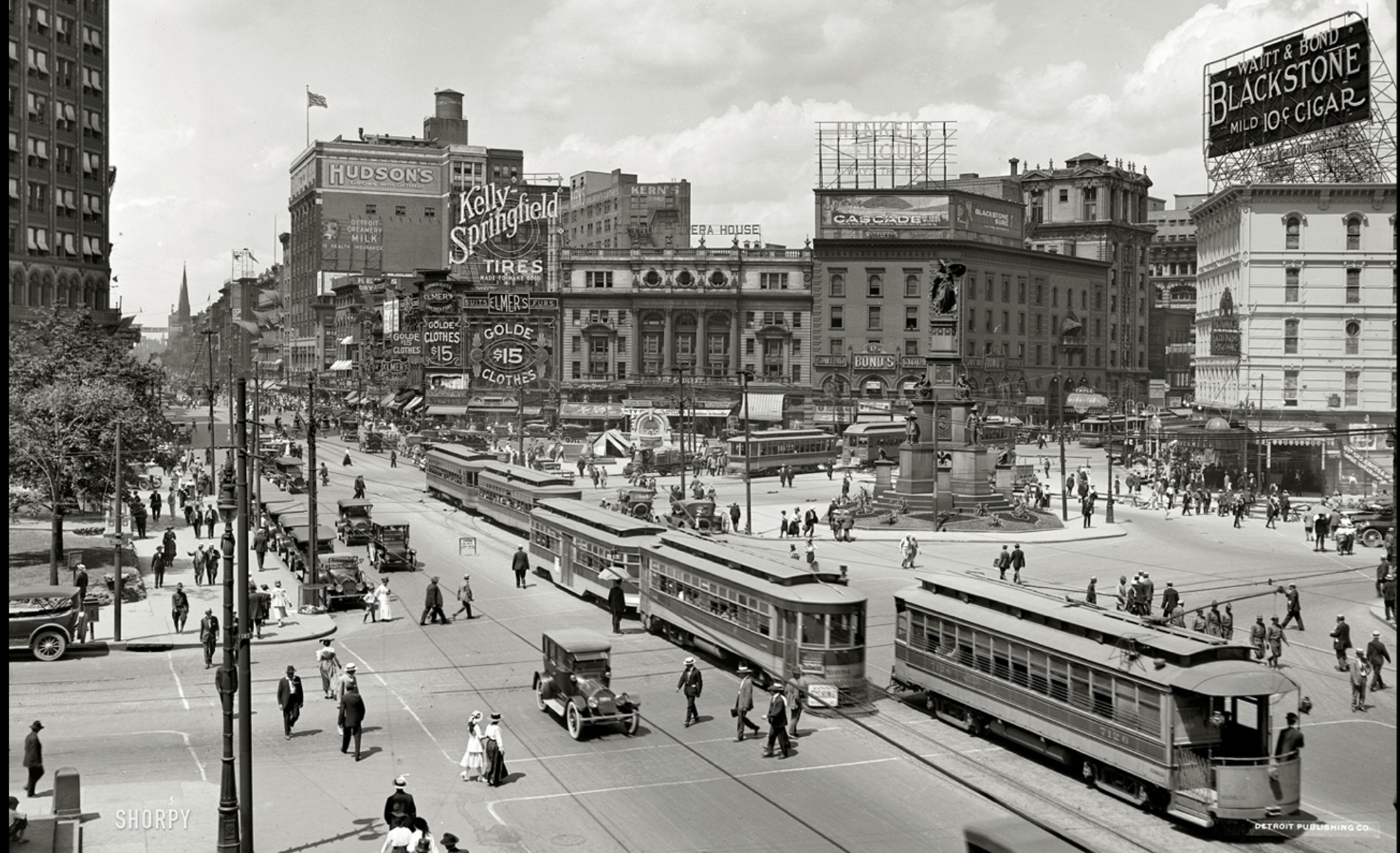
The abundant social life of sidewalks at the turn of the 20th Century: Gdansk, Poland (left) and downtown Detroit's Campus Martius (right).
The resulting erosion and gradual disappearance of street life on the sidewalks was, and continues to be, a disastrous loss of life in our communities. A loss of social and economic wealth, and even of pride, in the places we once called home.
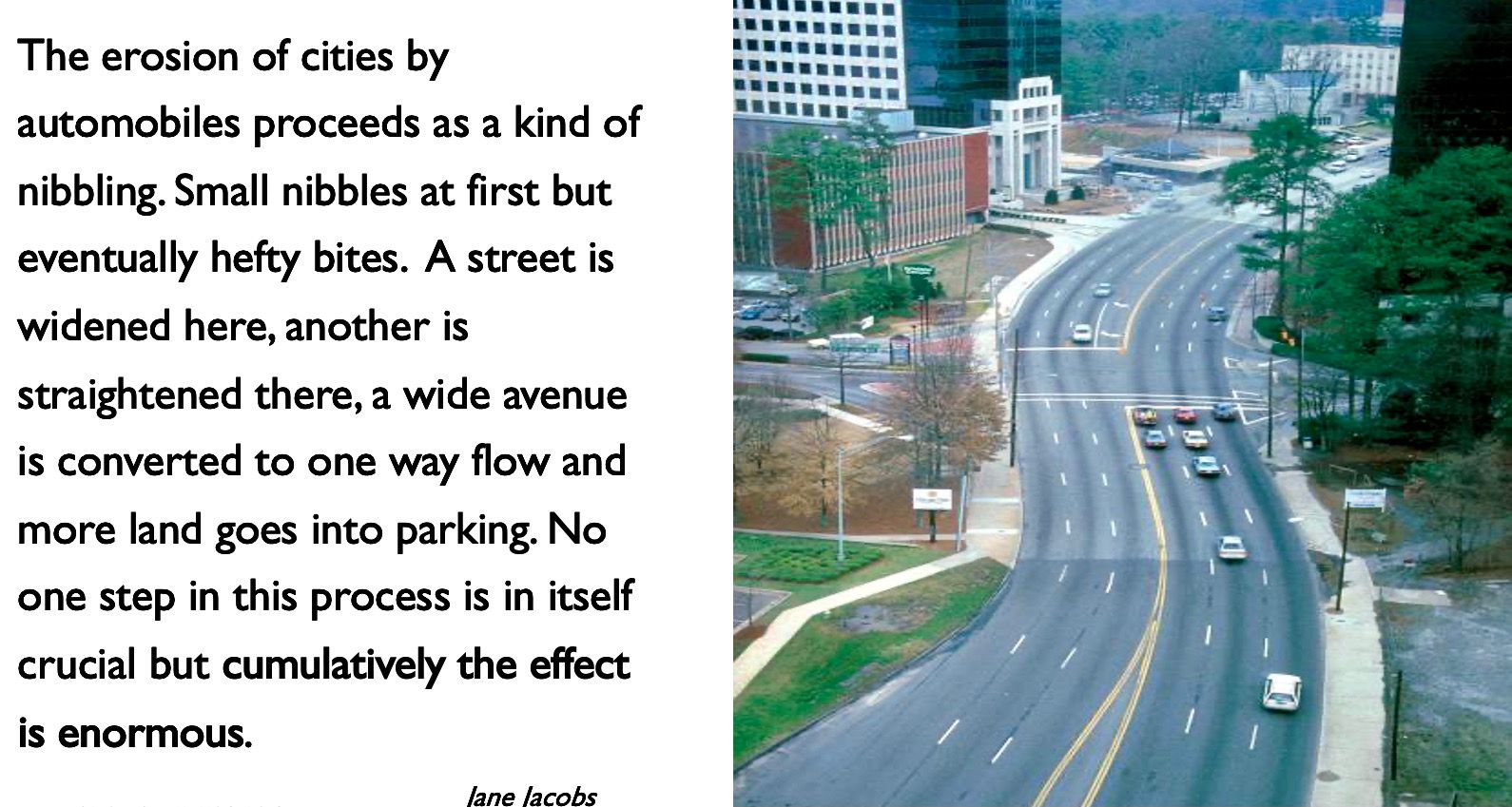
It continues to bewilder us why so little attention is given to people on foot which, really, is all of us. Disregard for walkers is apparent even in our language. Indeed, the word "pedestrian" also means "lacking inspiration or excitement: dull," according to the Oxford English Dictionary. We disagree! The dullest, most uninspiring streets in the world are those where walkers do not feel safe or comfortable.
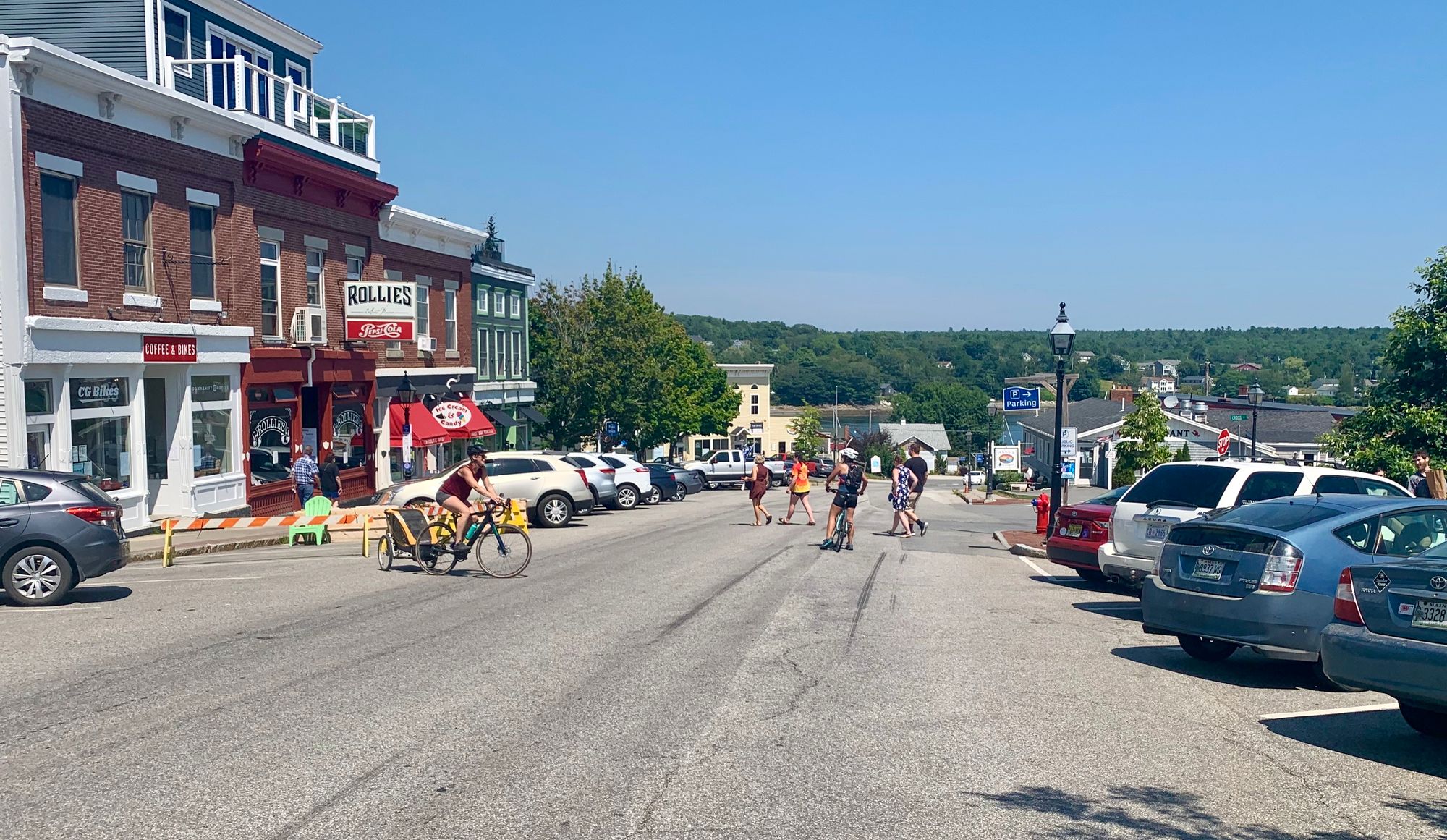
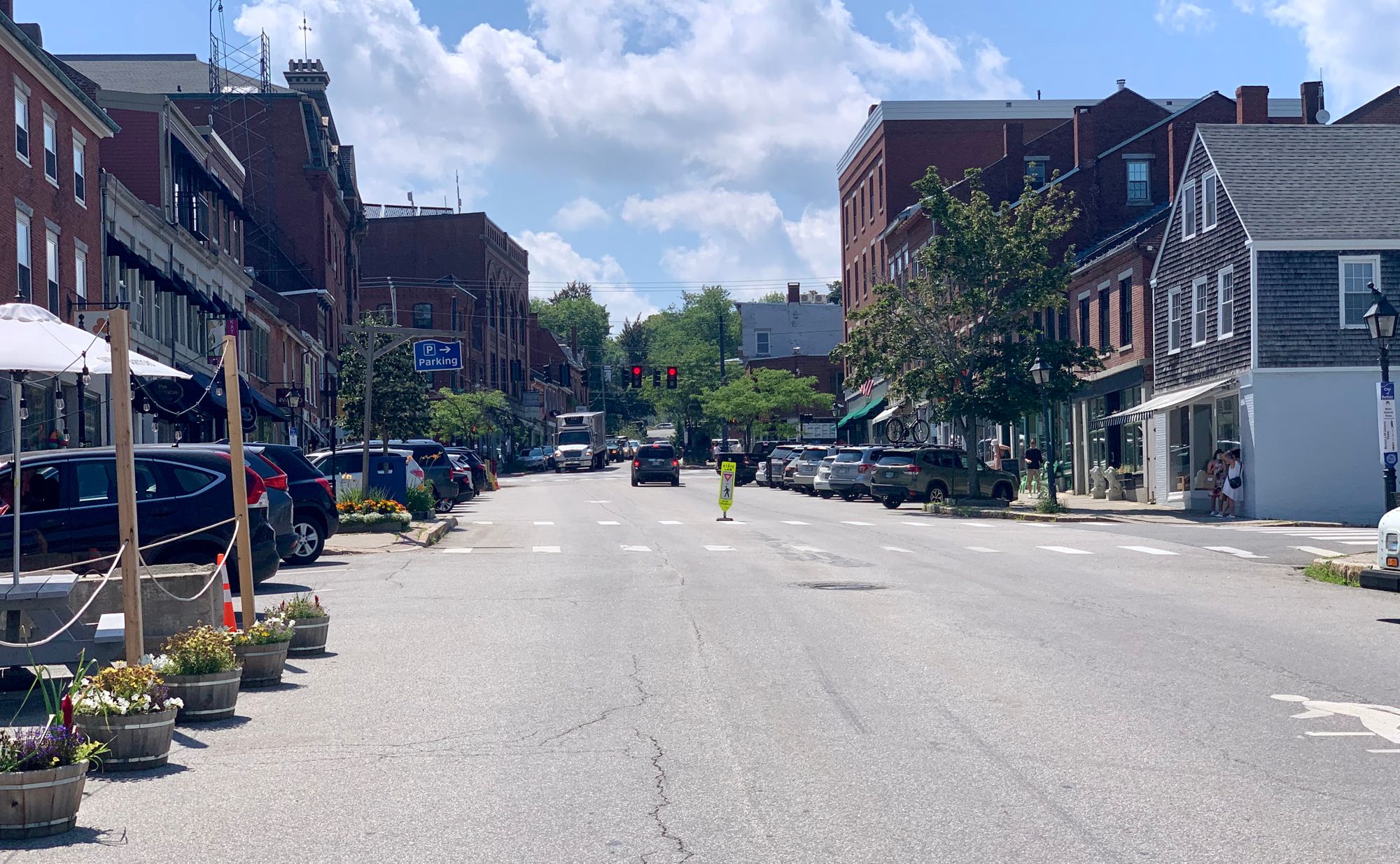
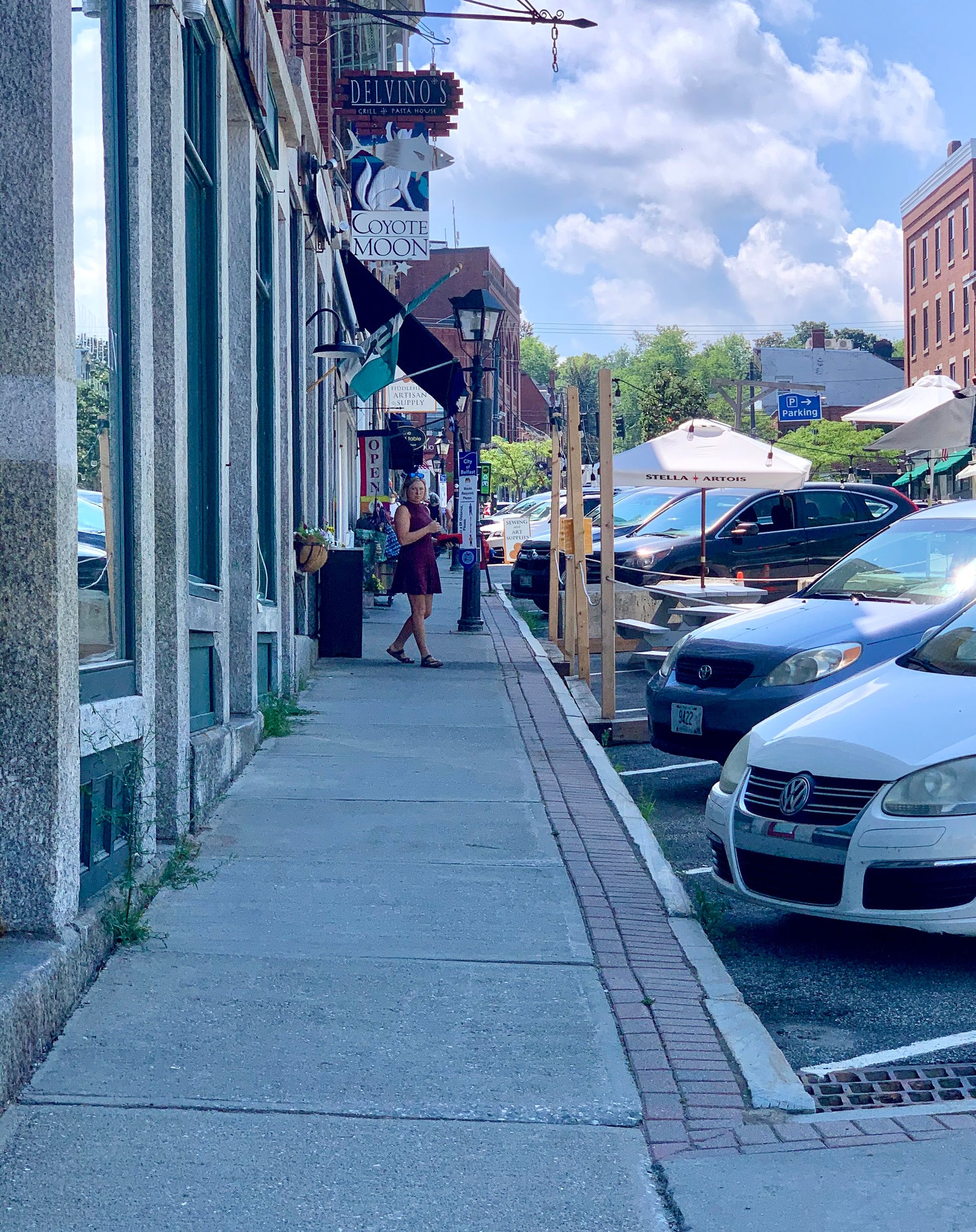
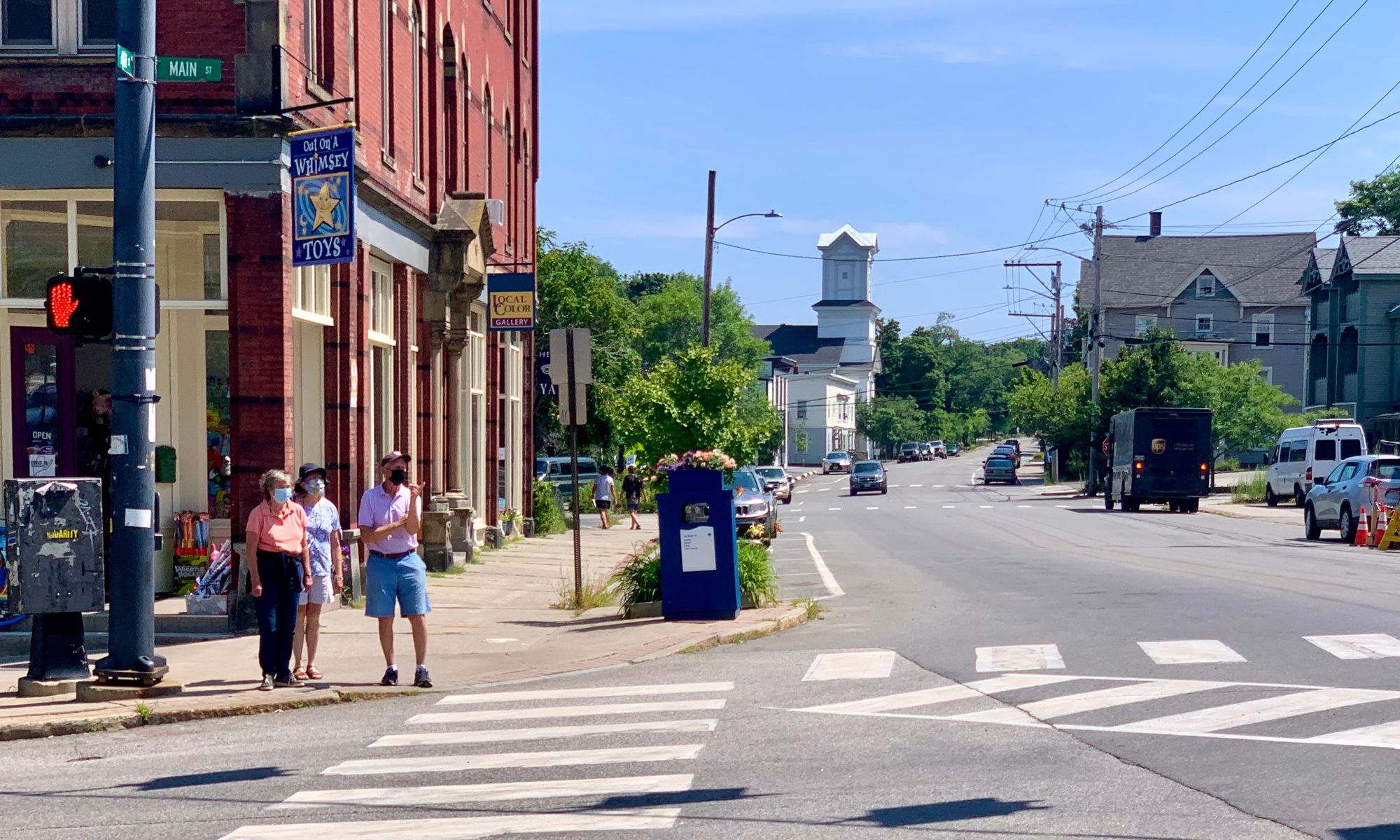
Belfast, Maine, a beautiful downtown with narrow sidewalks and a far too wide and dangerous street. This scene is common in most communities.
The mission of the Social Life Project is to build our communities around people and places.
To get there we need to turn the planning process "upside down," by focusing first on sidewalks as the best path to vitality, sustainability and equity. This often means widening or improving the sidewalks so they can adequately accommodate walkers as well as many other activities that contribute to the flourishing social life of a community: sidewalk tables, cafes, outdoor shop displays, buskers, benches and enough space for people to stop for a chat.
The second step is to soften the overall feel of the street so that traffic speeds and volume do not squelch, but rather enhance, social life. Traffic calming improvements, shared streets, streets closed to traffic, and/or intersections made more safe for all users are important tools to make sidewalks and our communities better public spaces. They are not ends in themselves.
What Makes So Many Streets Inhospitable and Unsafe
As we’ve traveled around scouting for great places (which almost always have great streets), we began documenting the problems that clearly demonstrate the issues that people face when simply trying to walk down a street.
Here’s what we found:
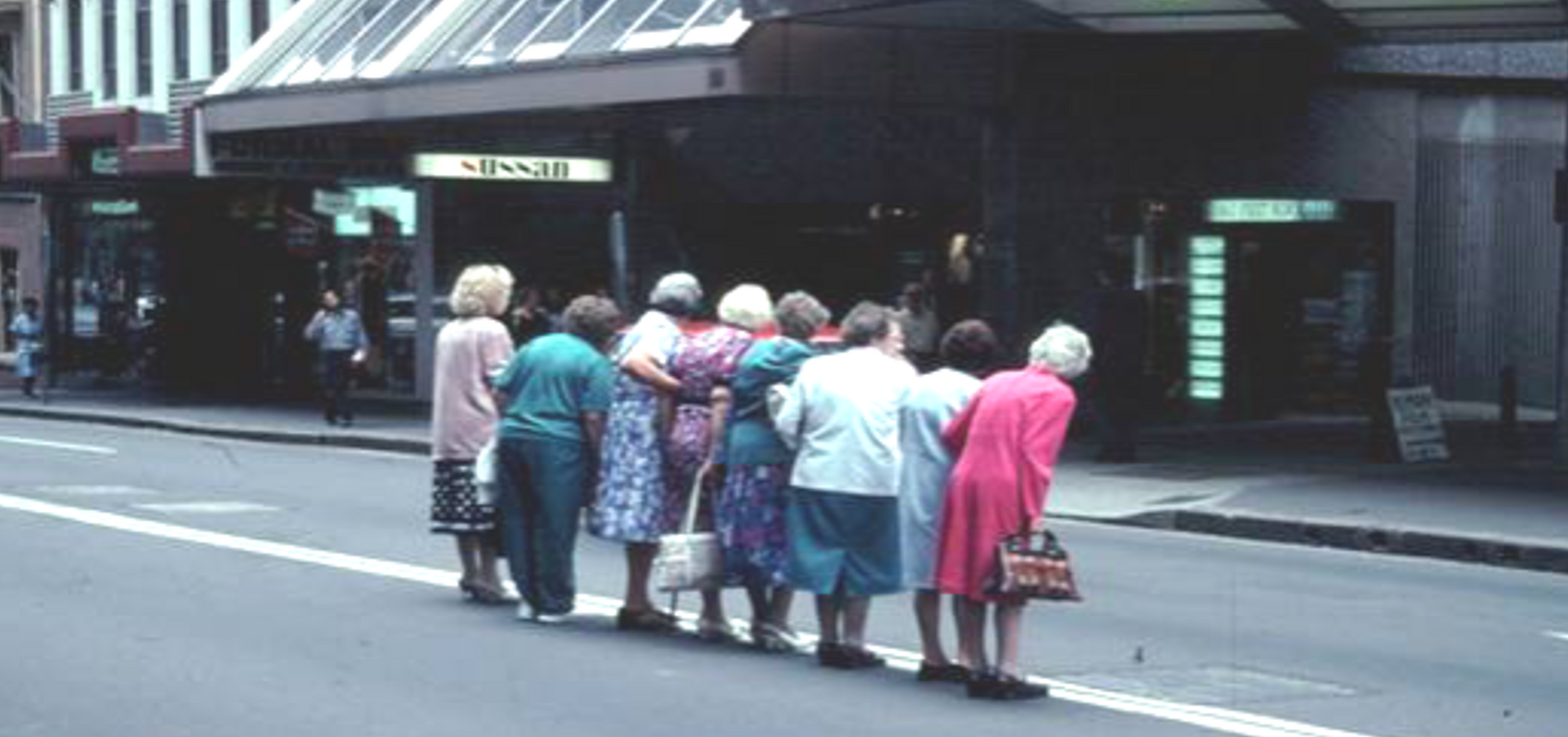
Danger in crossing streets: The lack of reasonably placed crosswalks is a problem around the globe. Look at these eight ladies trying to cross a block in Sydney, Australia that is 800-feet in length. Luckily they were finally able to stay safe by holding on to each other. This photo was taken nearly 40 years ago, on George Street in Sydney, Australia, but only now is George Street being made more pedestrian-friendly.
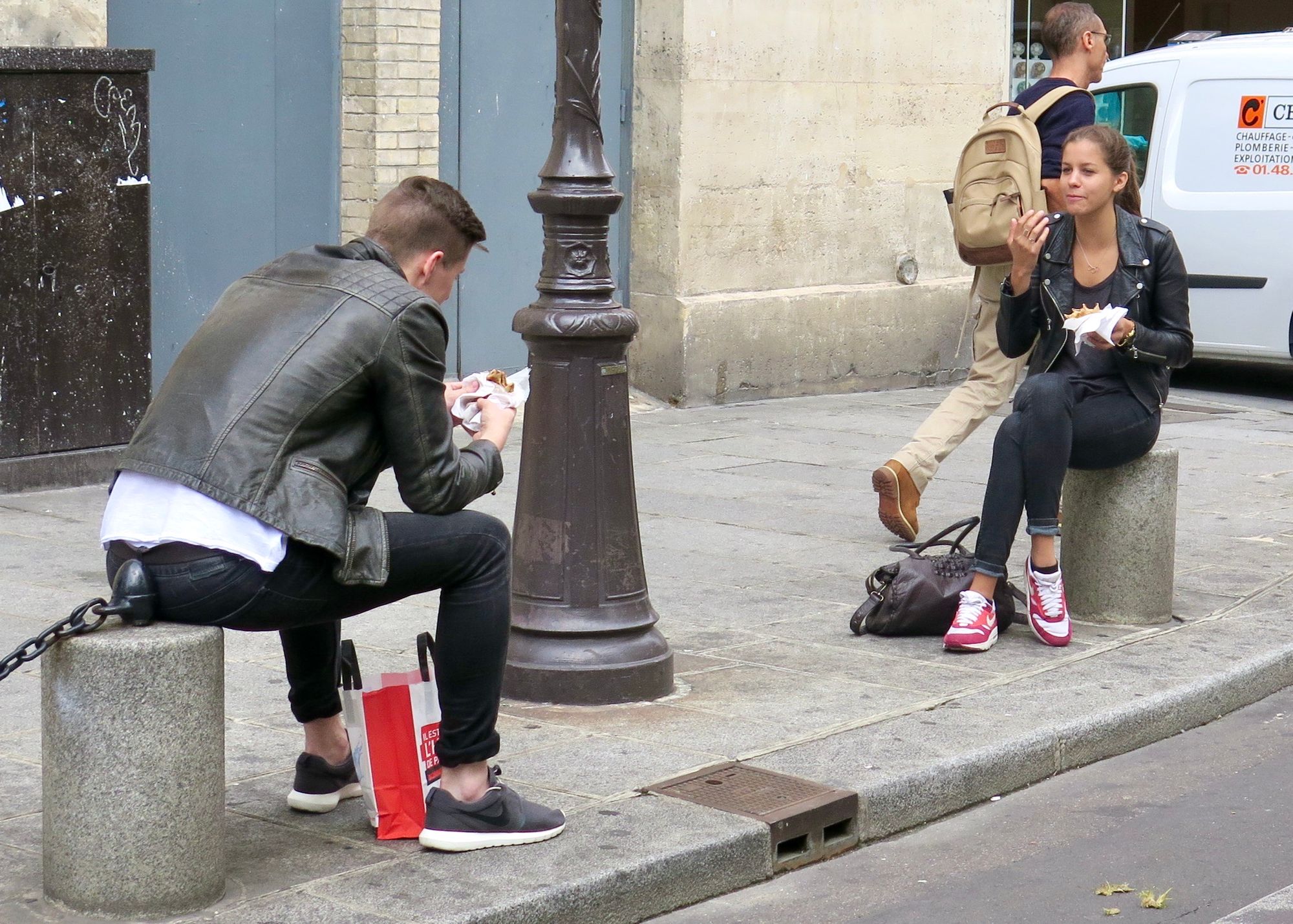
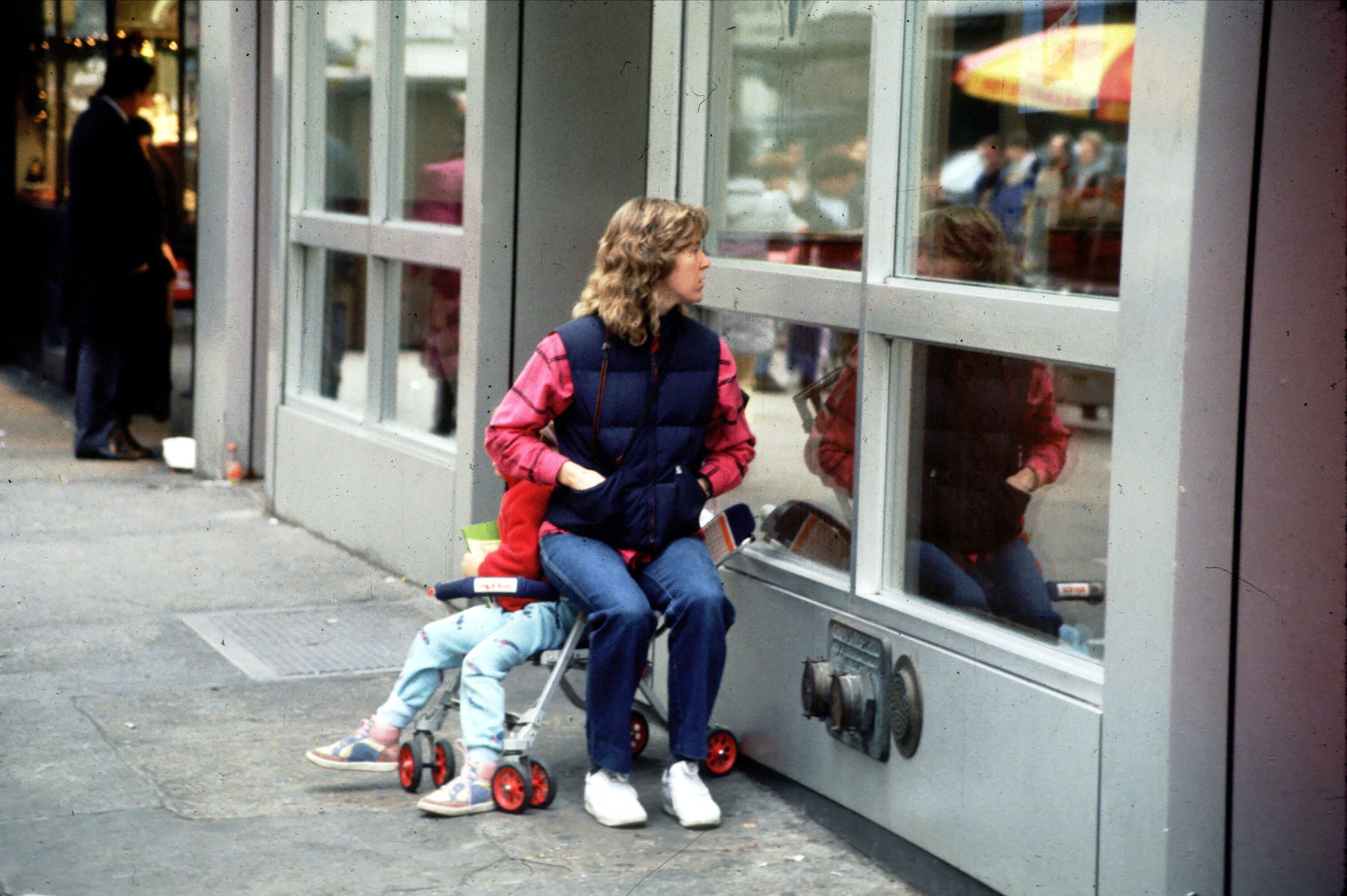
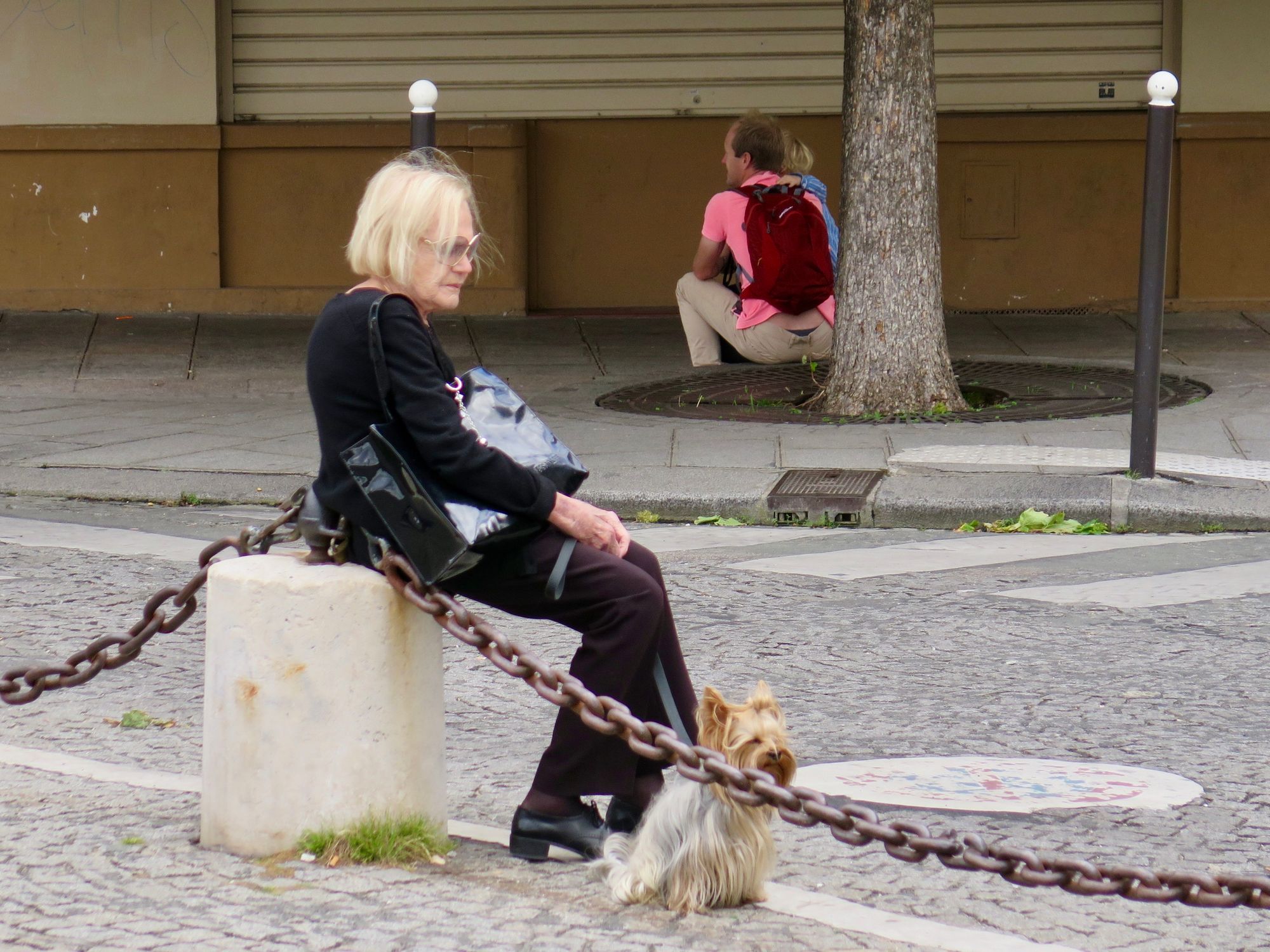
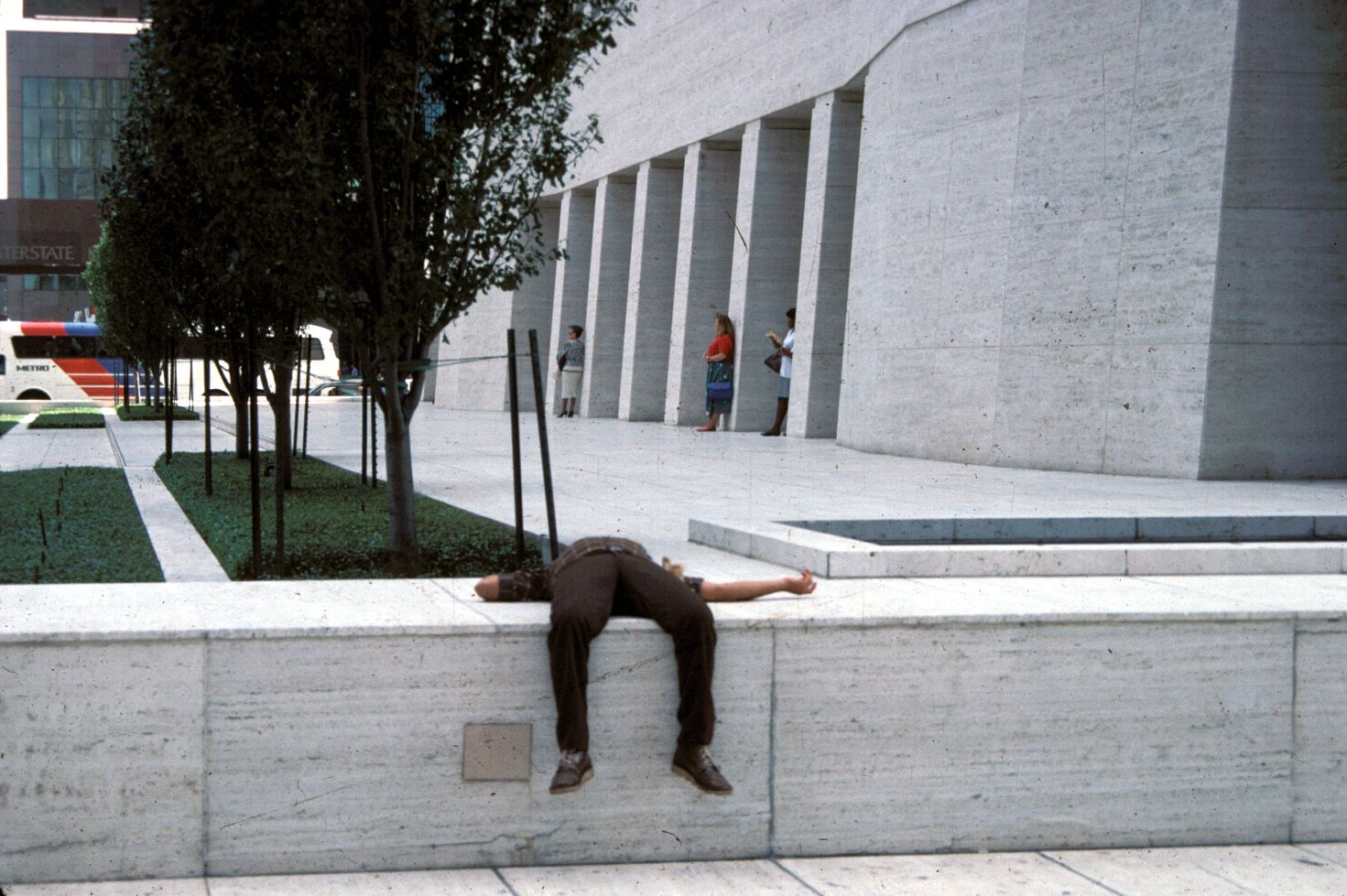
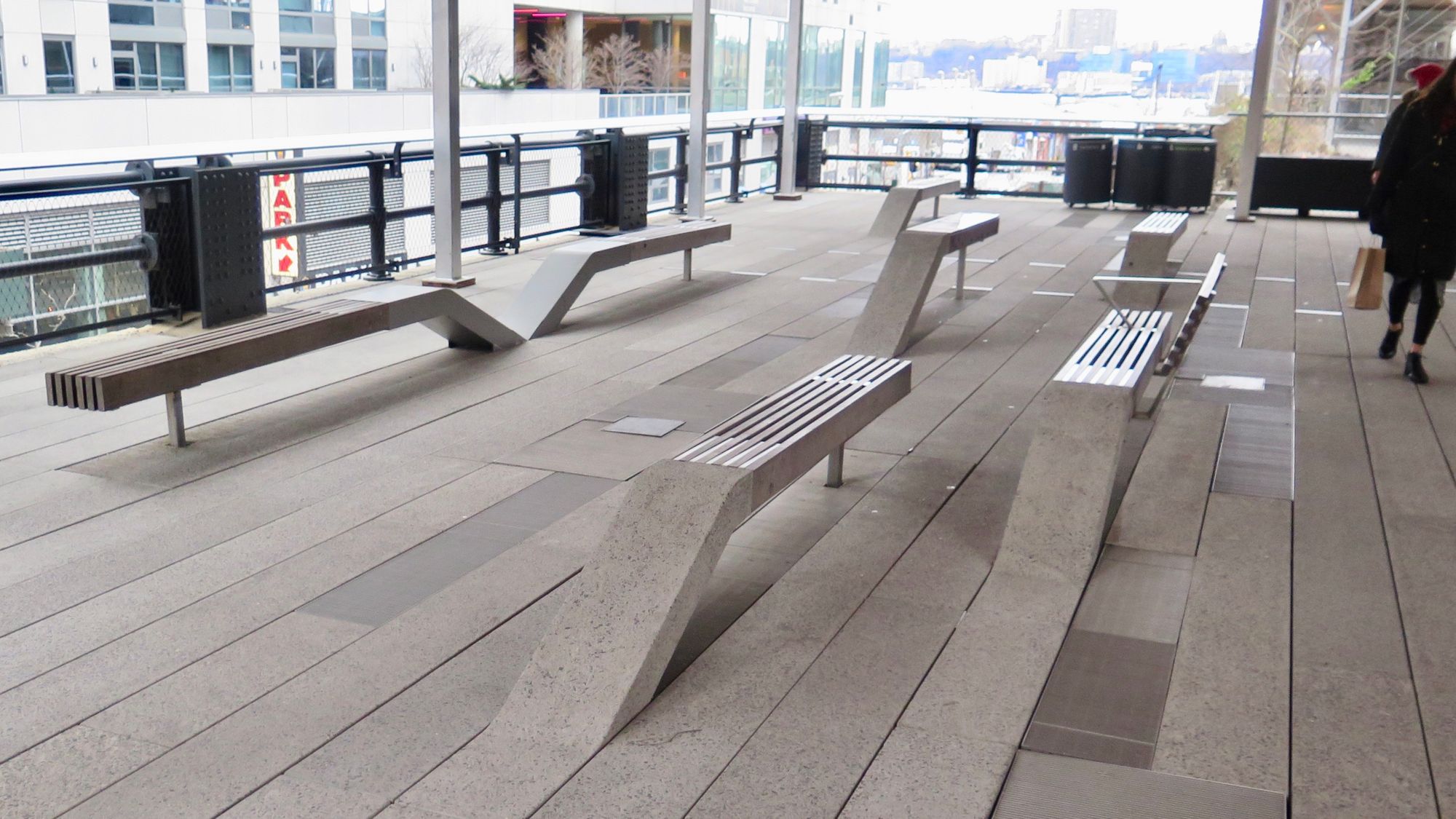
Lack of good seating: Comfortable spots to sit are rare on most city streets, despite their importance to older people and anyone who wants to relax a bit. Clockwise from the top: 1) This couple is "social distancing" before the concept was invented; 2) This woman had nowhere to sit except on top of her child; 3) This woman and her dog, as well as the man with a child across the street have no place to wait; 4) This man just gave up on finding a comfortable spot to rest; 5) The dismally uncomfortable seating on New York's High Line.
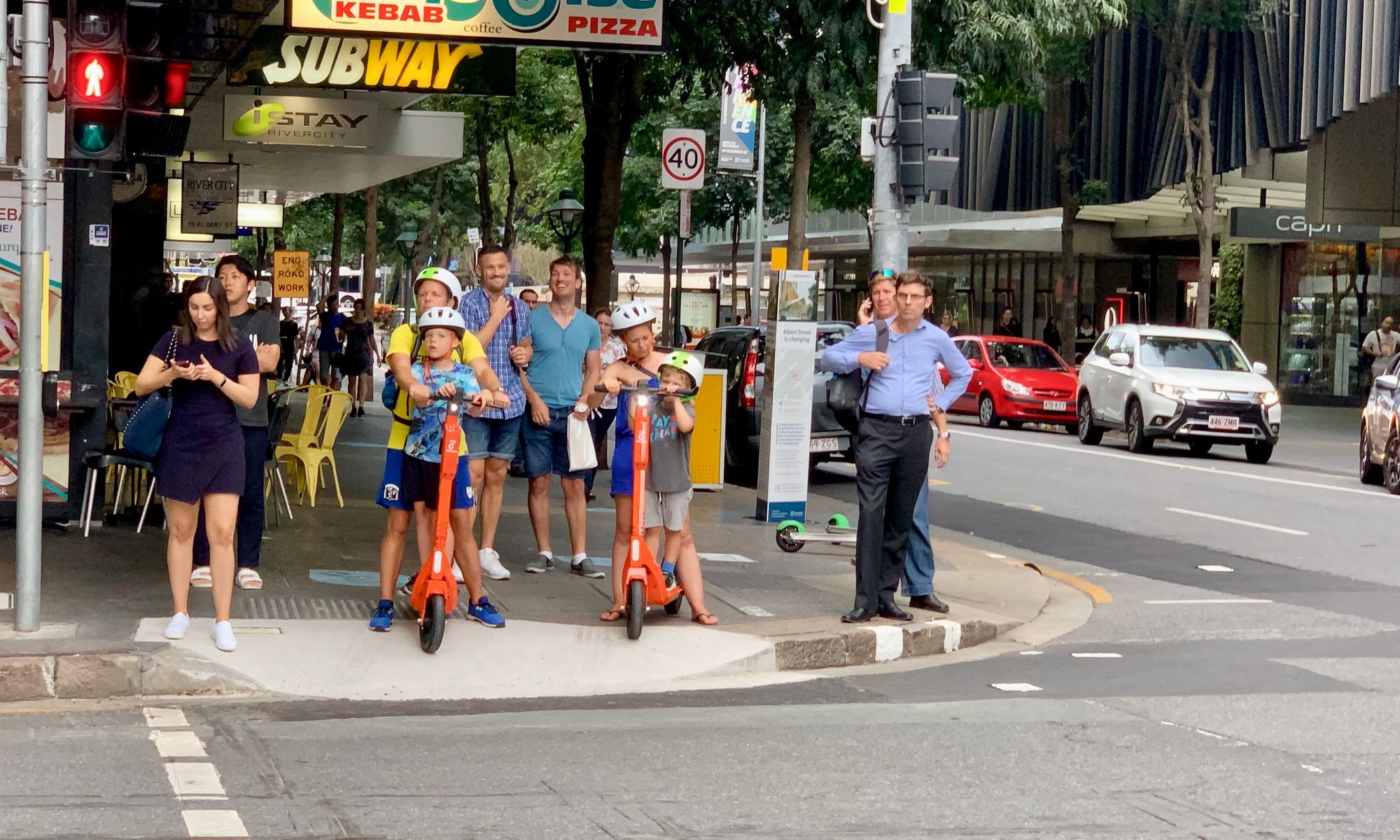
Segregation of streets exclusively for vehicles: In the Australian city of Brisbane, bikes and motorized scooters are required to use sidewalks so as to not slow car traffic. The upshot of this regulation is that "pedestrians" feel less safe, bike- and scooter-riders are not well-served and, ultimately, the social life of the city is diminished.
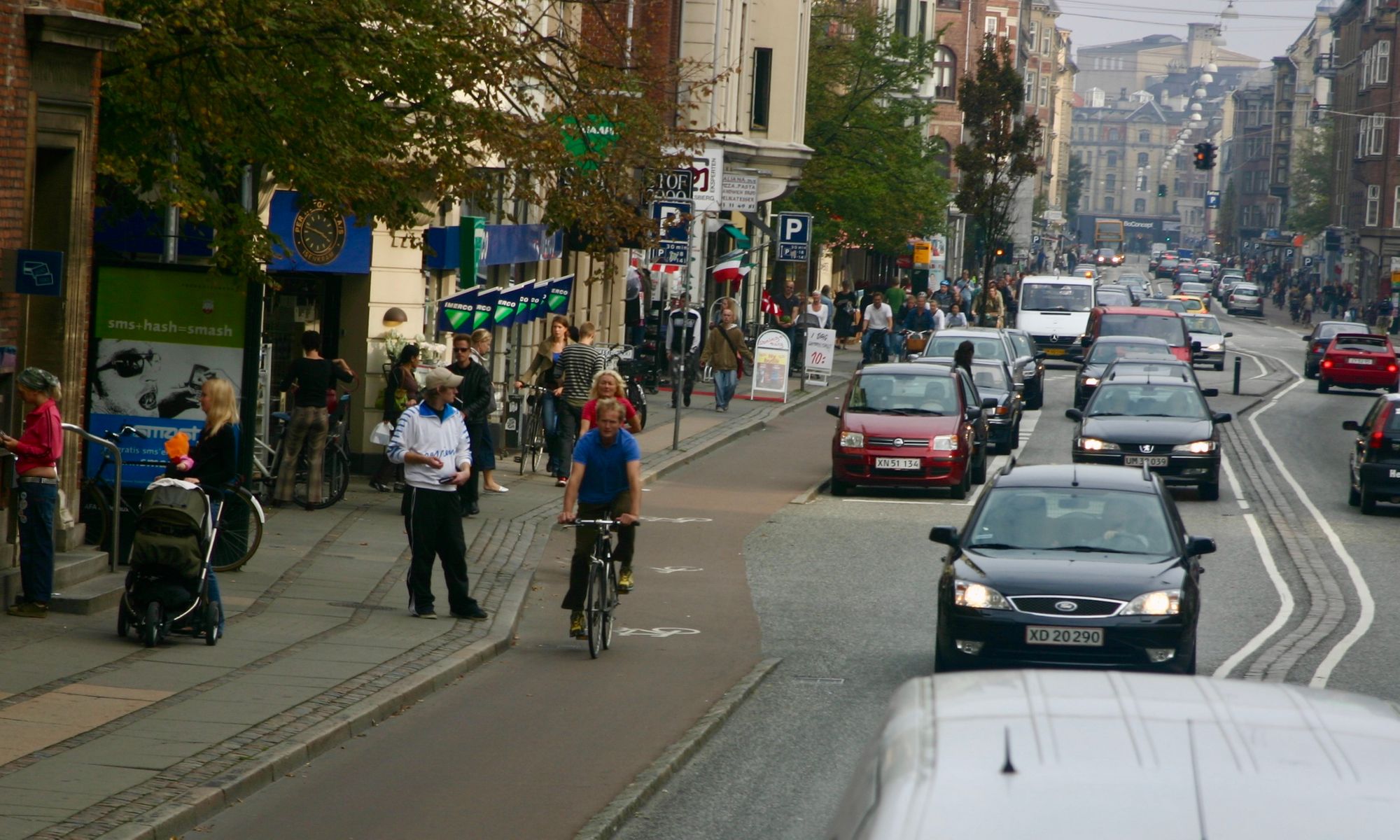
Outside the center of Copenhagen, many sidewalks have become "slivers of pavement" creating claustrophobic and unsafe conditions for walkers
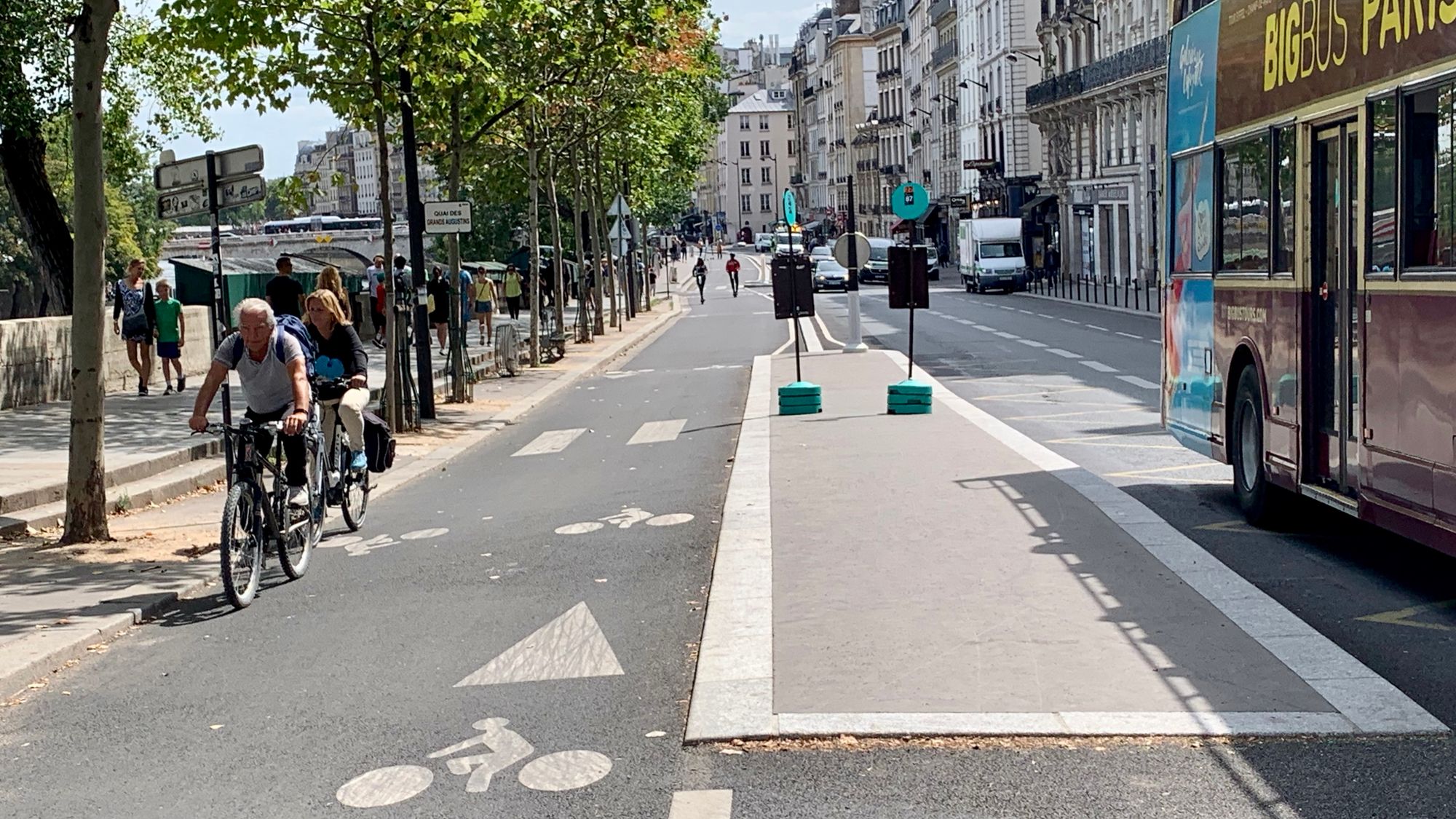
In Paris, lanes set aside for pedestrians, bicycles and vehicles create a "wall" that isolates each group and creates a "frictionless" environment in order to maintain fast travel along corridors.
Street space divided up into separate zones: In many cities, when you leave the historic center, little space is devoted to sidewalks, so walking becomes unpleasant. And today, bicycle riders are gaining increasing portions of the public right-of-way, so pedestrians are stuck with whatever scraps are leftover. This limits other popular uses of the sidewalk, such as outdoor cafes or street markets.
Creating Better Streets and Sidewalks:
In order to create streets and sidewalks for people instead of vehicles, we have to keep in mind the following:
If we want people to spend time on sidewalks, they need to feel safe. Ample distance between pedestrians and cars is important, and/or barriers between people and car lanes, such as bollards and street trees.Often, the easiest way to make sidewalks more pleasant and safer is to make streets narrower. When streets are narrow, cars naturally drive slower because they recognize that they are sharing the space with people. Inside out design makes sidewalks enjoyable places to be. A great street has interesting storefronts, outside seating, external displays of goods, and all kinds of interactions between the internal world and the public realm. Great sidewalks are those that give people what they need and want. People need to rest, eat and drink, and be protected from the elements. They want to be entertained and have pleasant social experiences. Great public places are the ones that offer all of these things.
The Best Streets in the World - Where Social Life Thrives
The world's best streets – the ones that people travel thousands of miles to walk along and the ones that are always full of activity – are those that feel welcoming for people instead of cars. Streets are the places where we lead most of our public existence. They provide the forums for connection and enterprise that determine the quality of our lives and the opportunities in our futures.
They are the places we cross paths with our neighbors, stroll with our families, visit stores, interact with community, express our thoughts, congregate with friends, hold events, and more. In order to flourish, they need us as much as we need them. And in order to draw us out of our homes, they need to hold the promise of interesting encounters, pleasant experiences, comfortable and enjoyable trips, and opportunities for discovery.
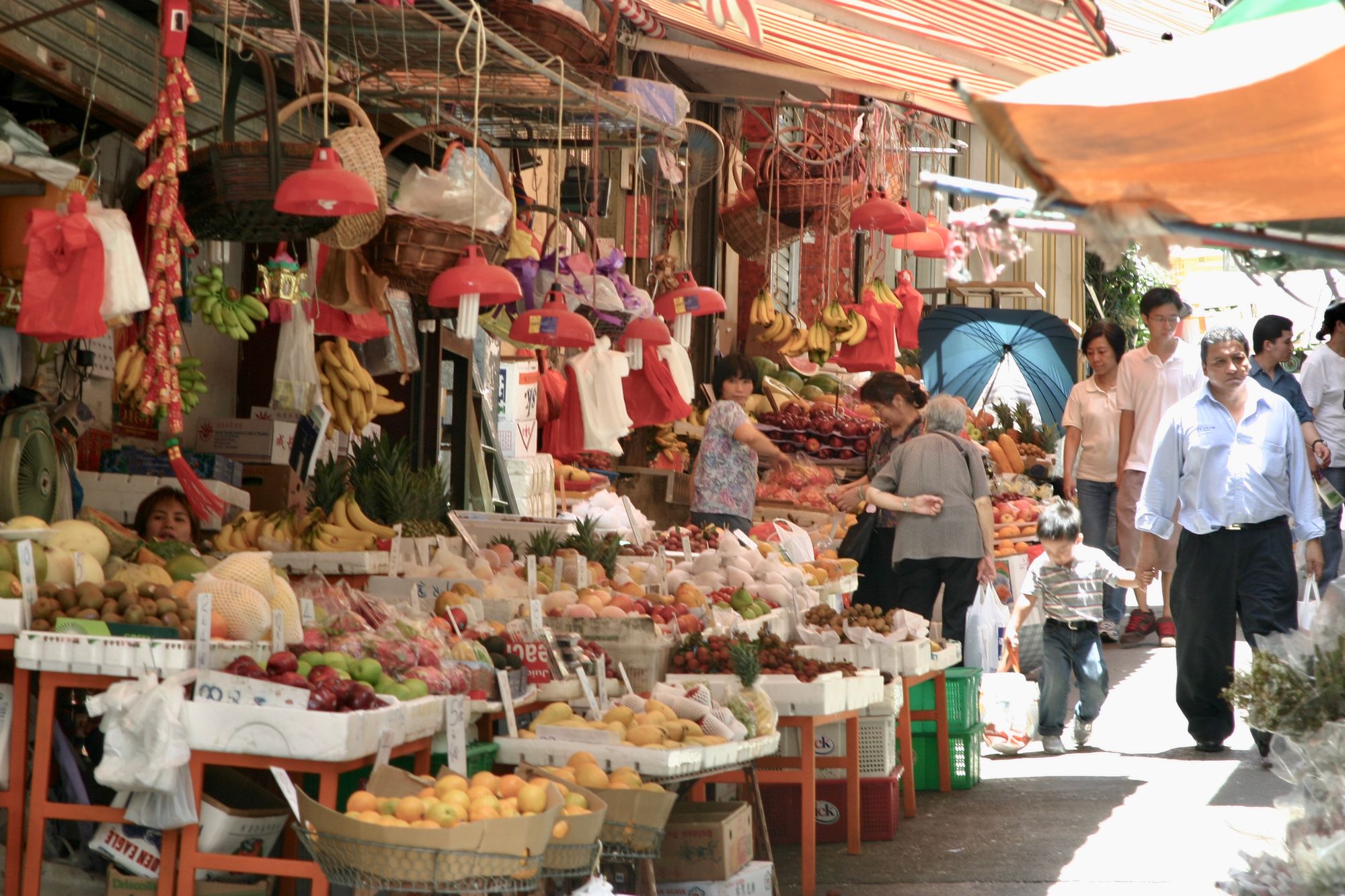
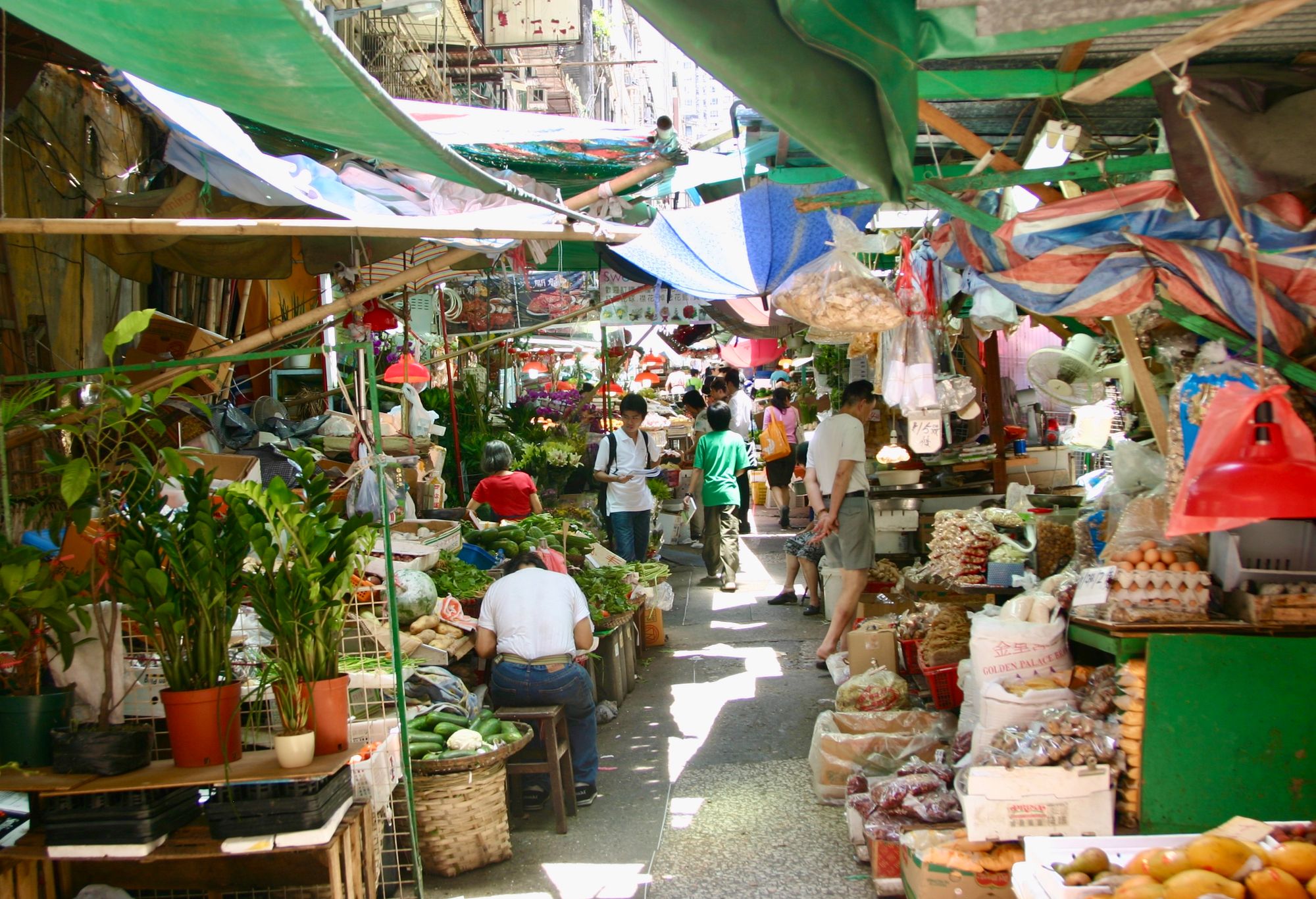
Streets in Hong Kong double as vibrant street markets.
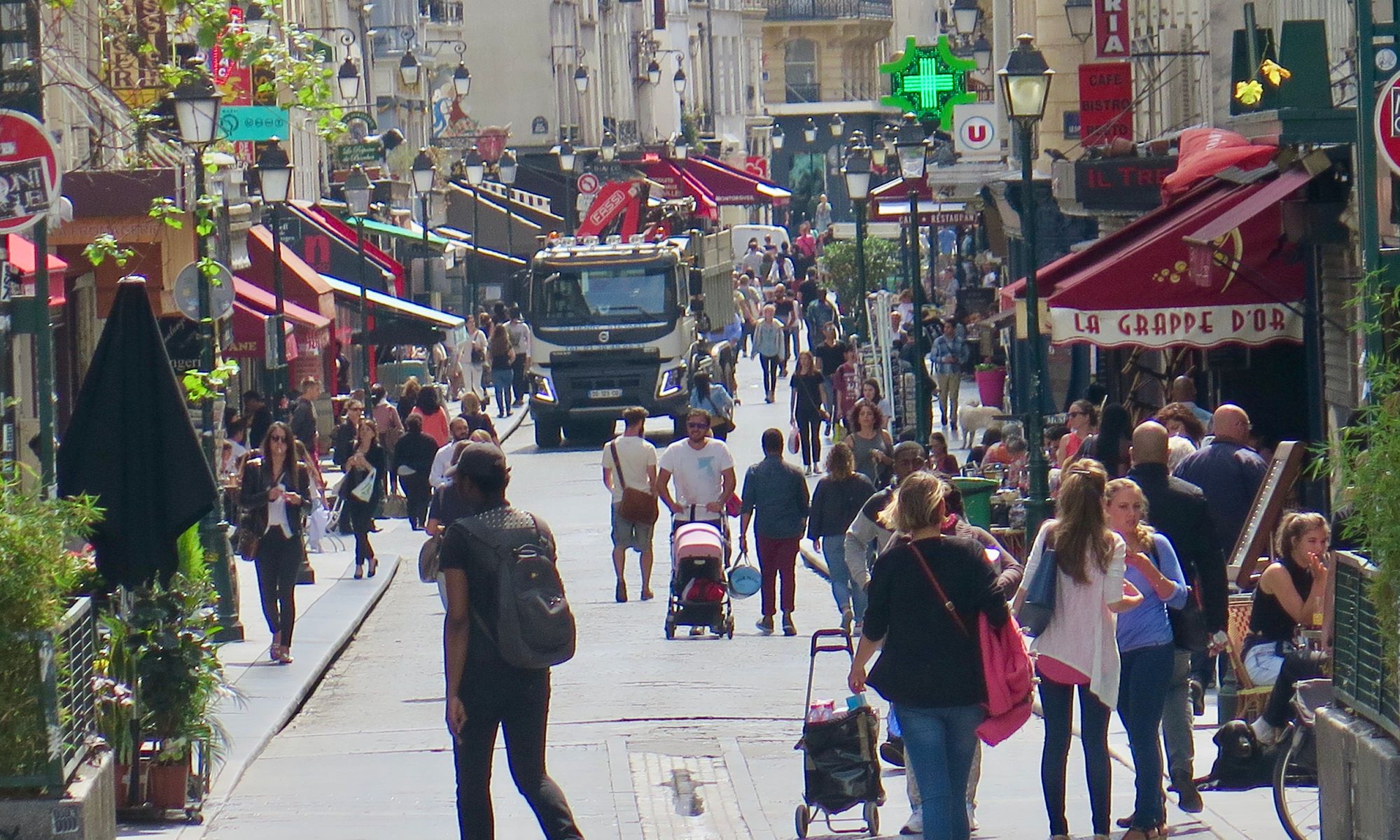
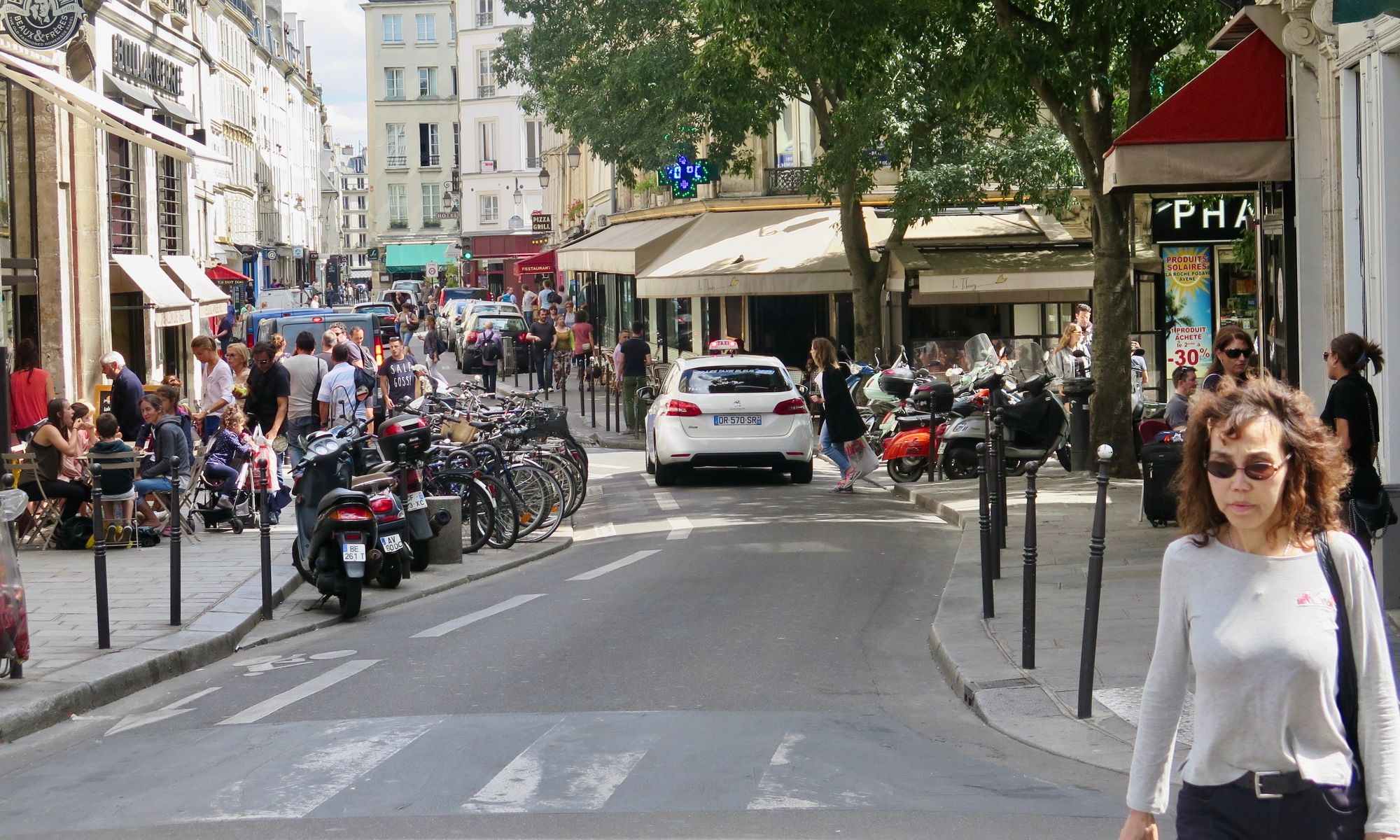
On narrow streets in Paris, the distinction between "storefront, "sidewalk," and "street" become wonderfully blurred.
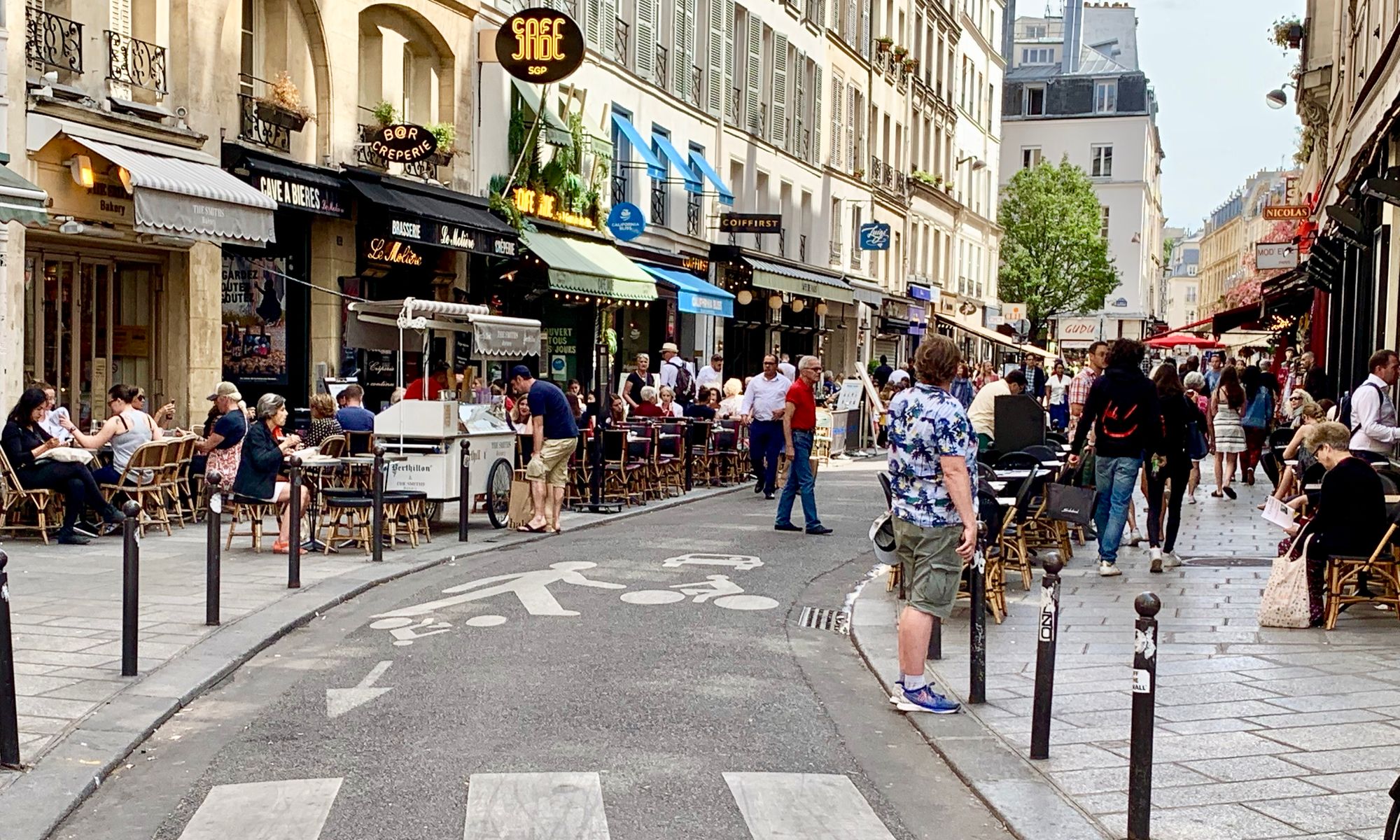
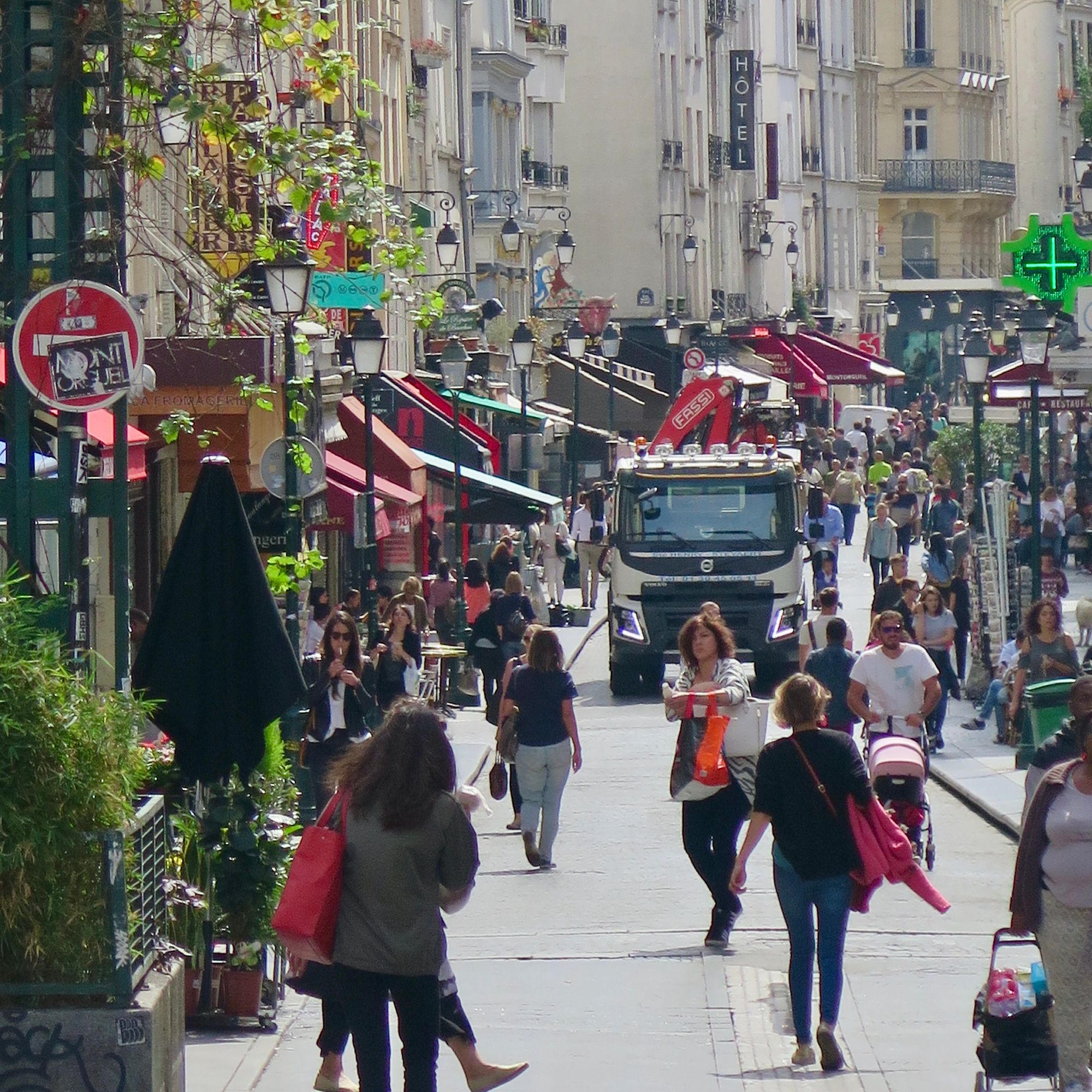
Rue de Buci and Rue Montorgueil, two of many streets in Paris that accommodate vehicles, but are primarily local community centers for residents and visitors
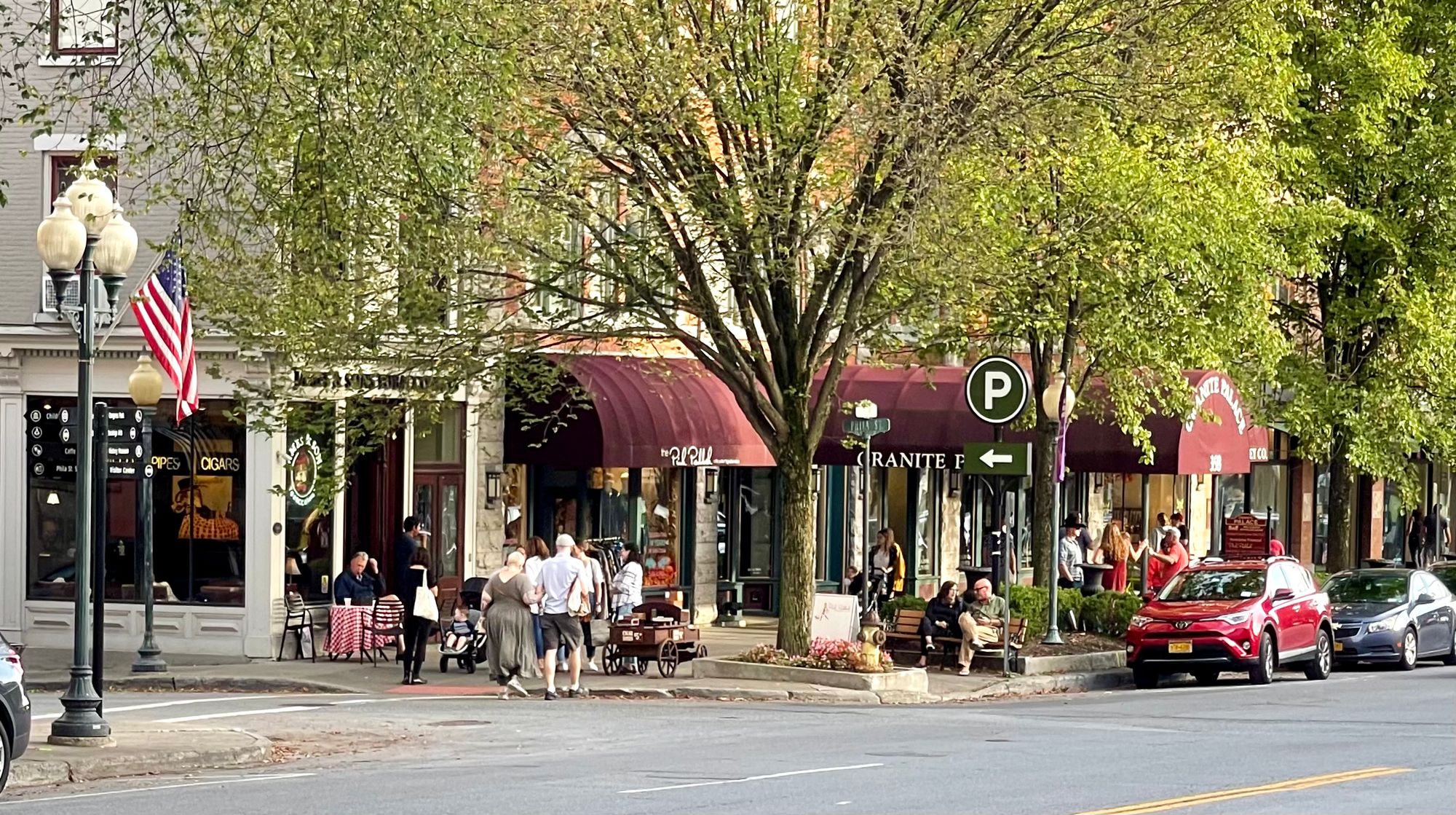
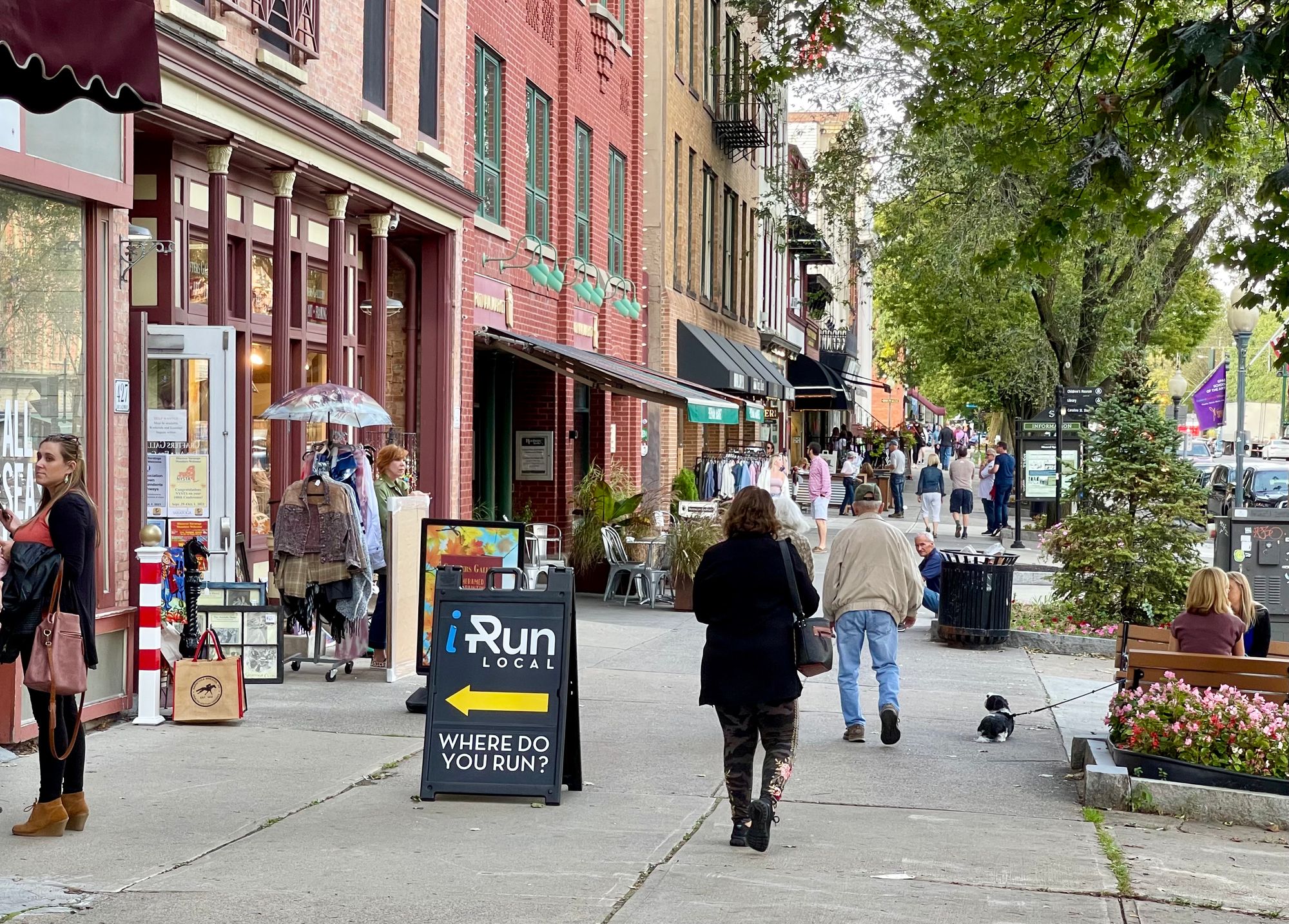
Saratoga Springs in upstate New York has some of the best sidewalks on a Main Street that is also a major state highway
The Invigorating Social Life of Sidewalks
Everyone wants to walk on sidewalks where they can connect, stroll in a relaxed way, and just spend time. The streets we love are those that people enjoy because they are designed to be pleasant for pedestrians rather than convenient for vehicles.
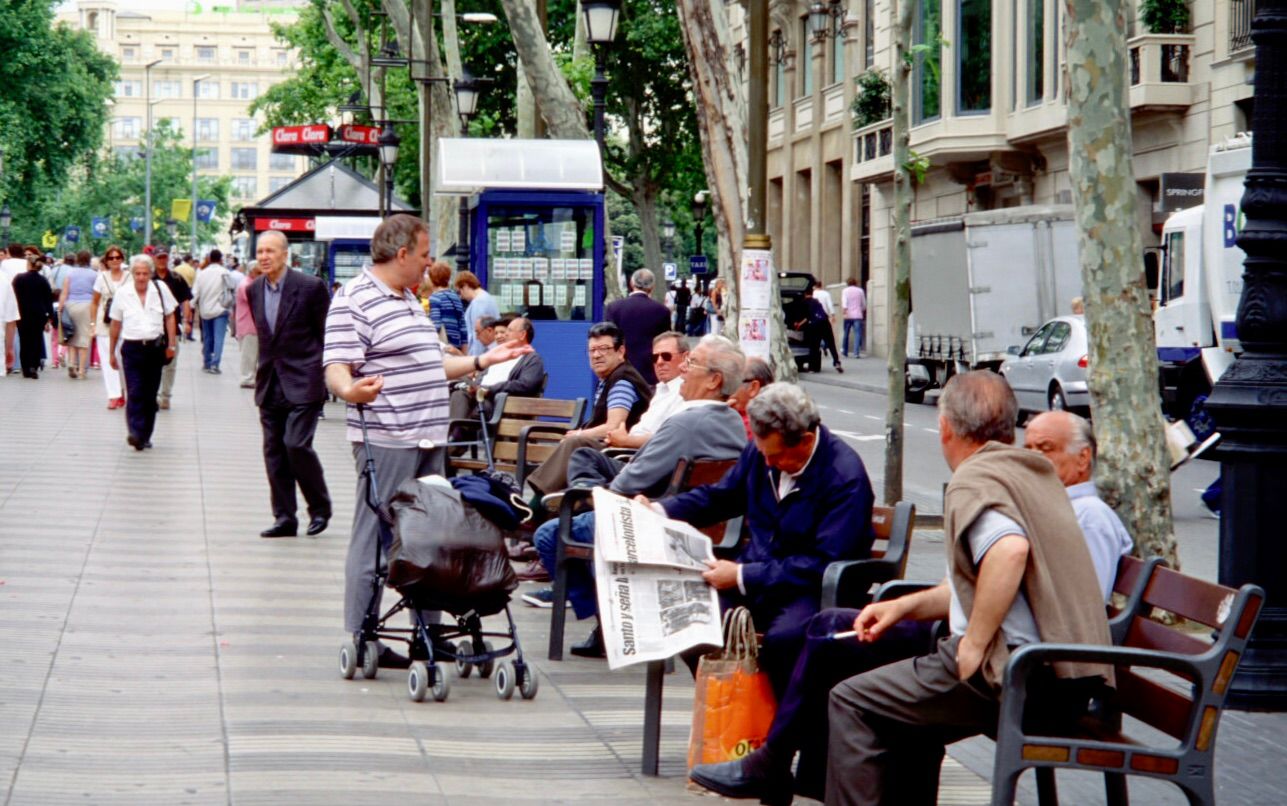
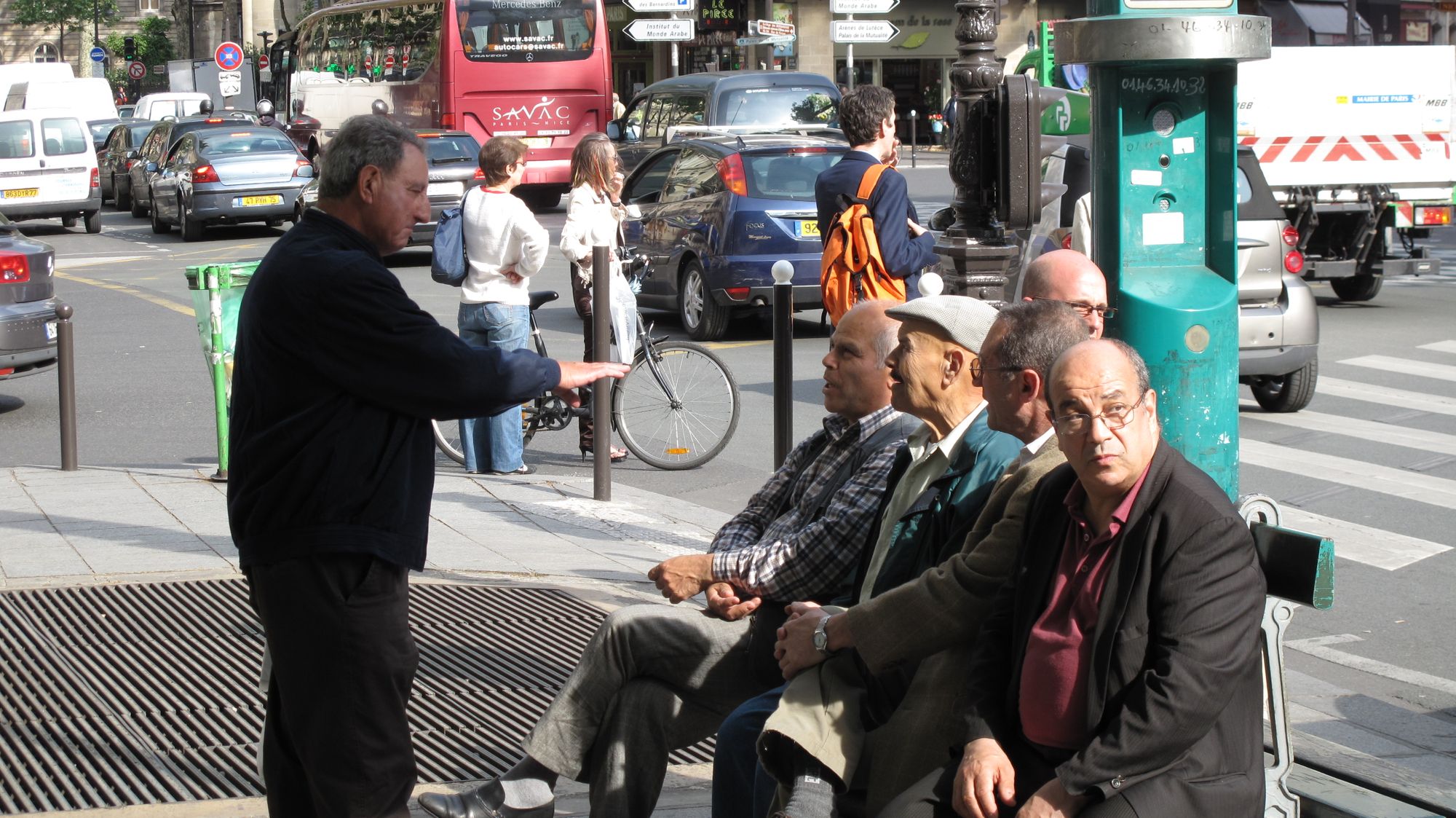
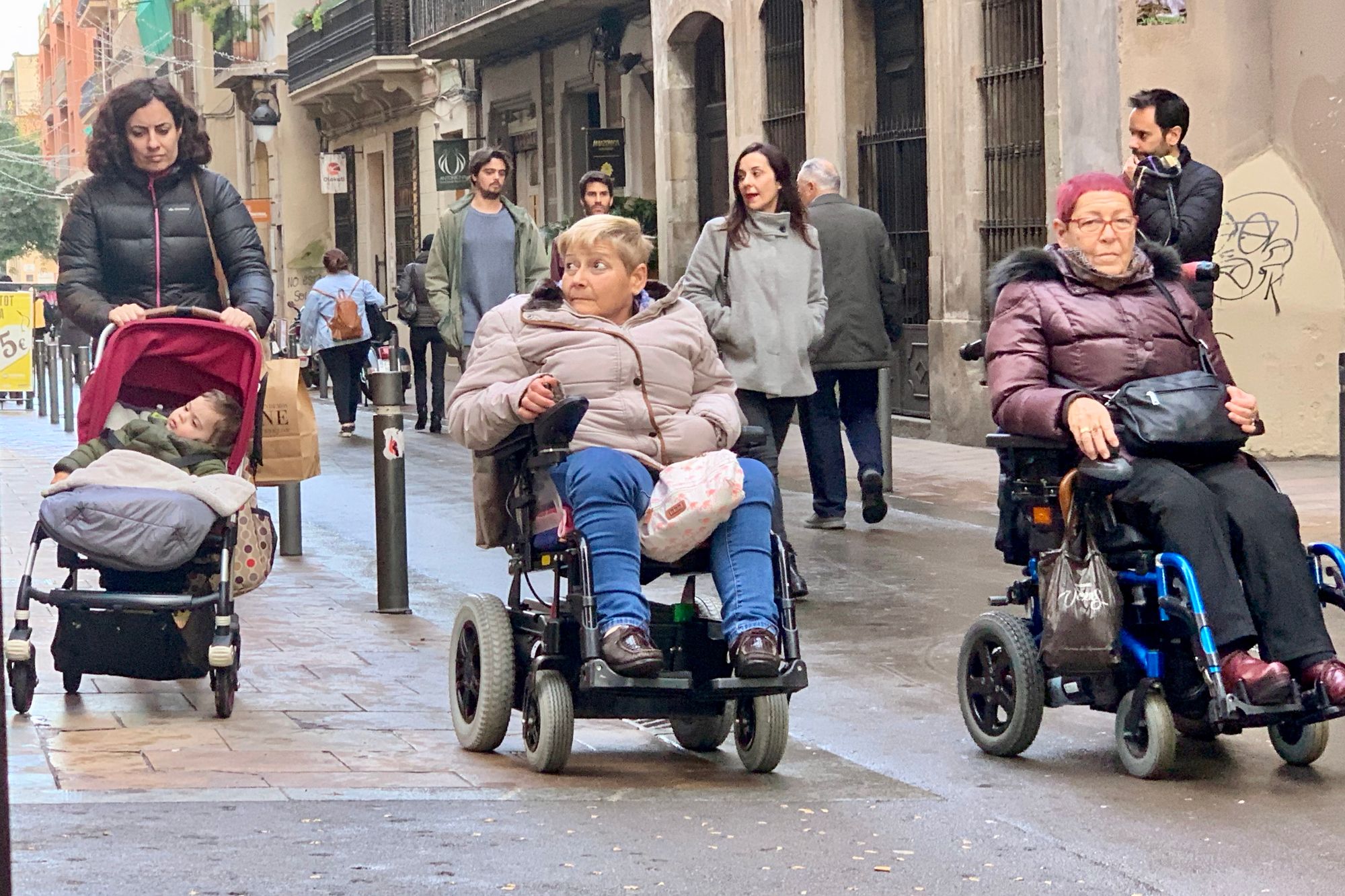
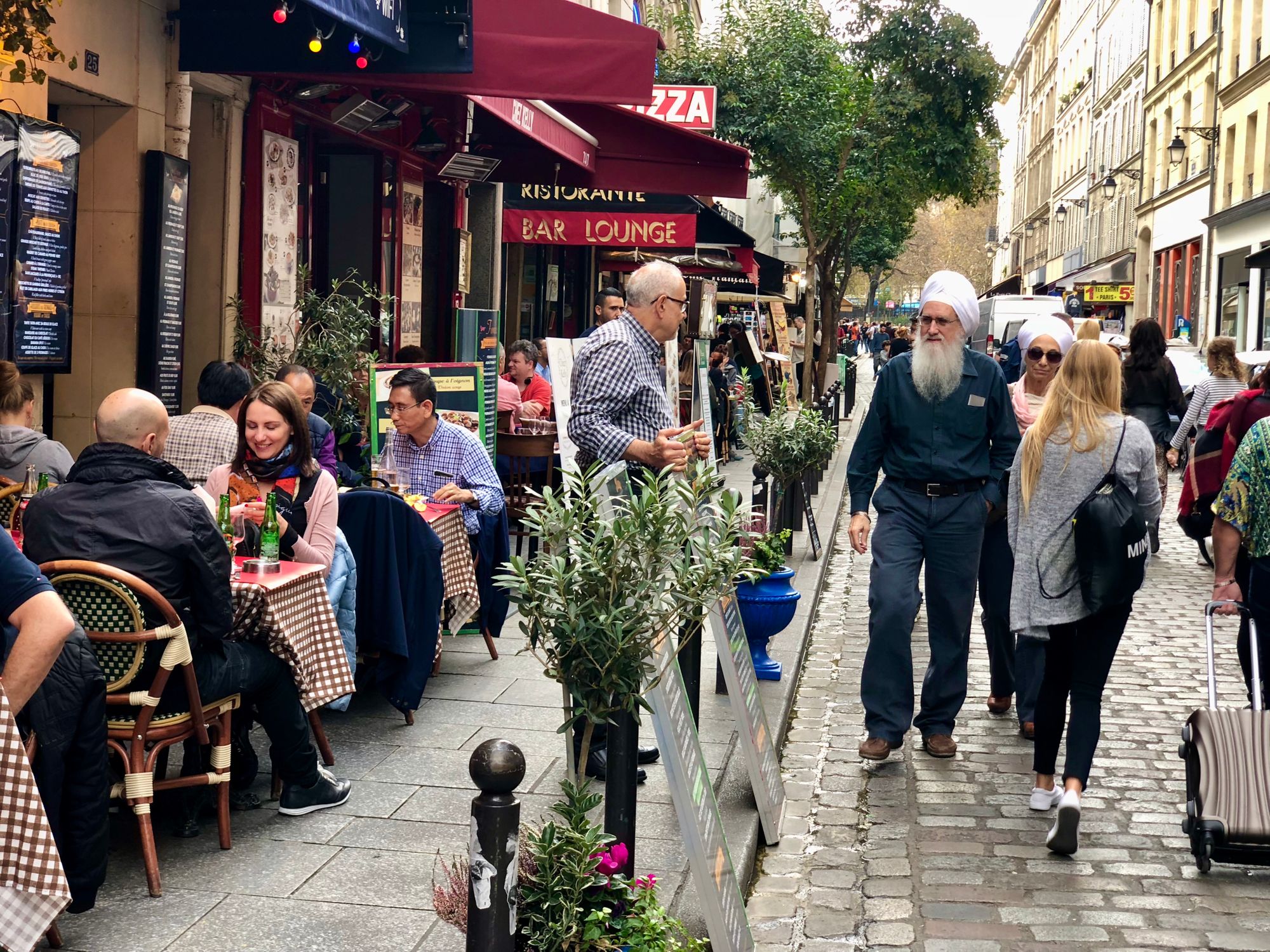
People strolling, socializing, talking at cafes...all basic activities on popular streets in Barcelona and Paris
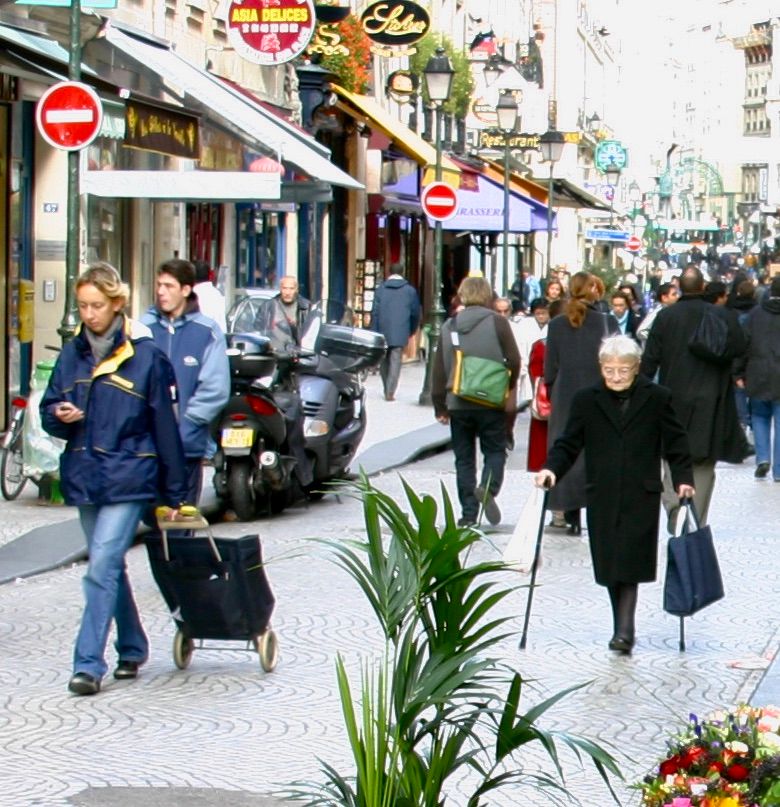
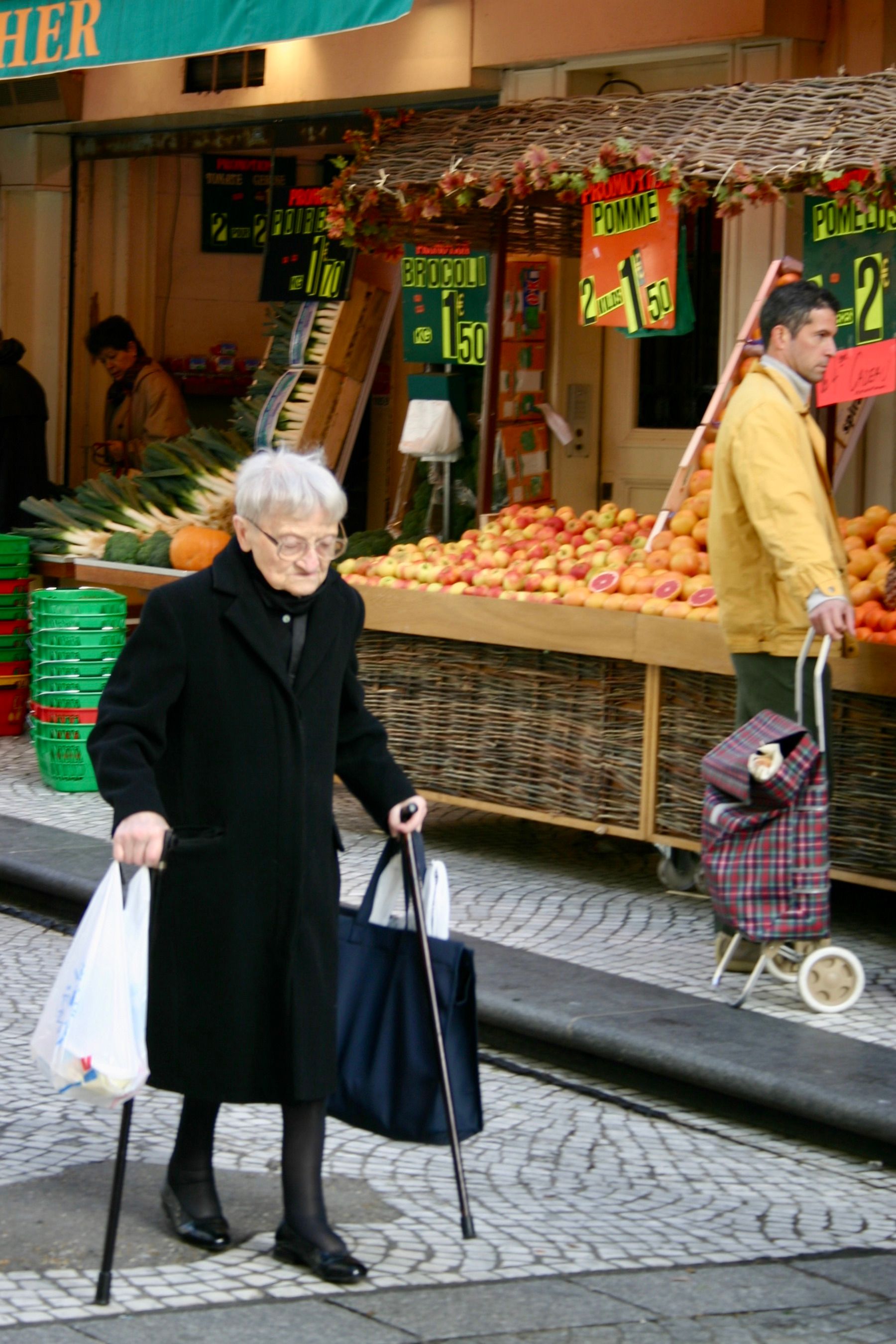
This older woman is able to live an independent life because she can do daily errands on a commercial street in Paris that is free of traffic. Taking care of people on foot is a basic responsibility for every city
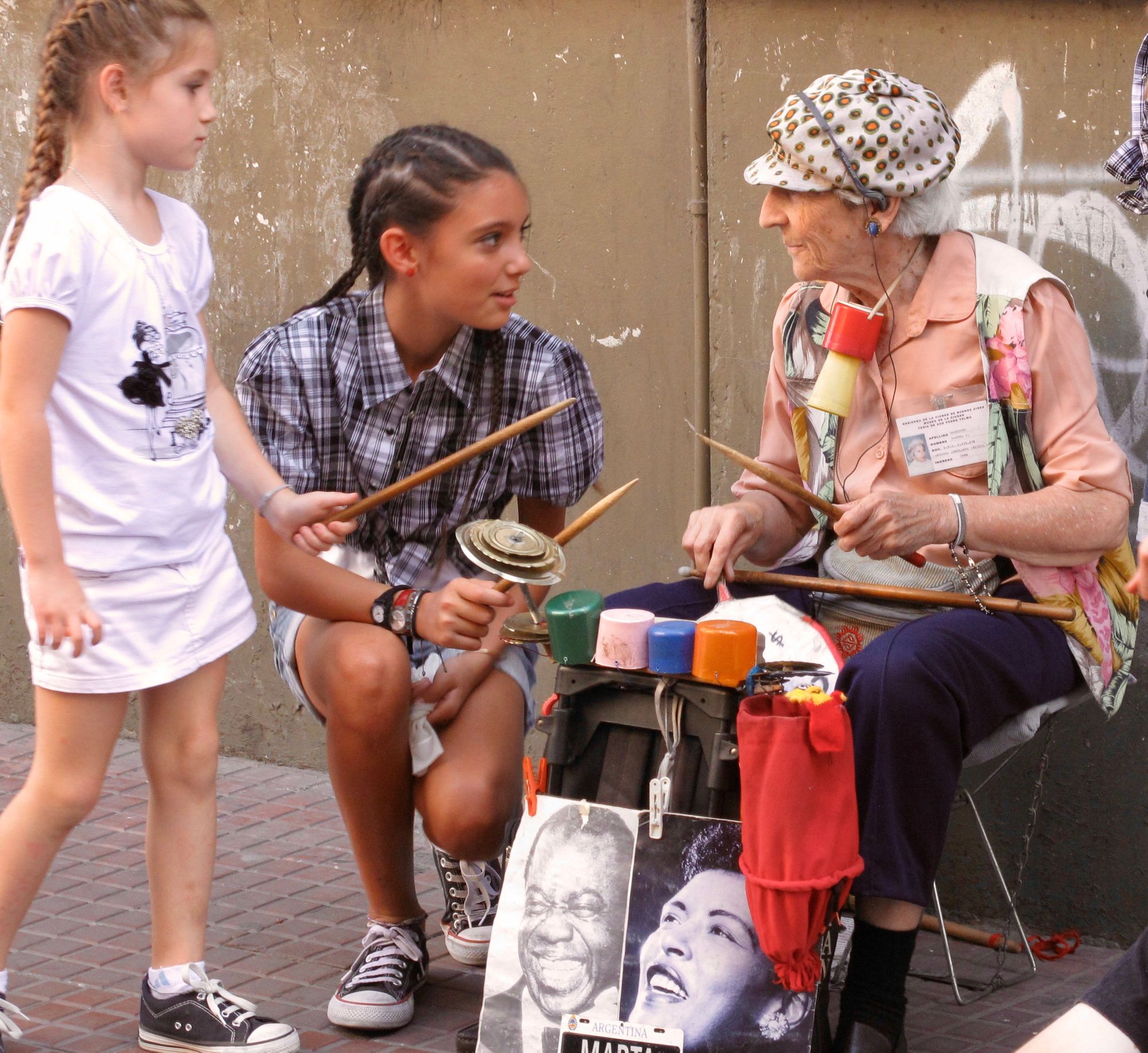
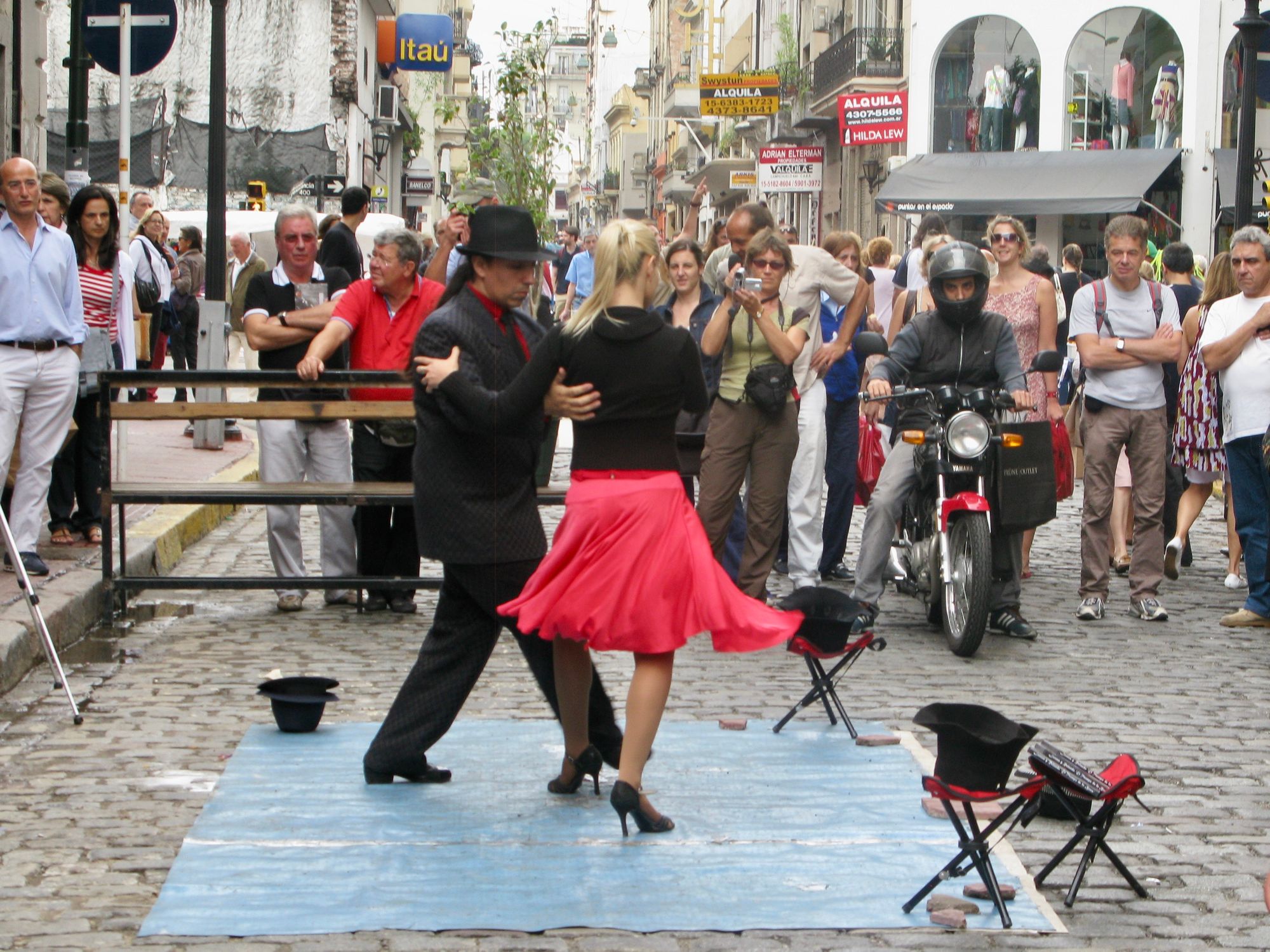
La Defensa street in Buenos Aires brings people together every Sunday with an array of fun activities
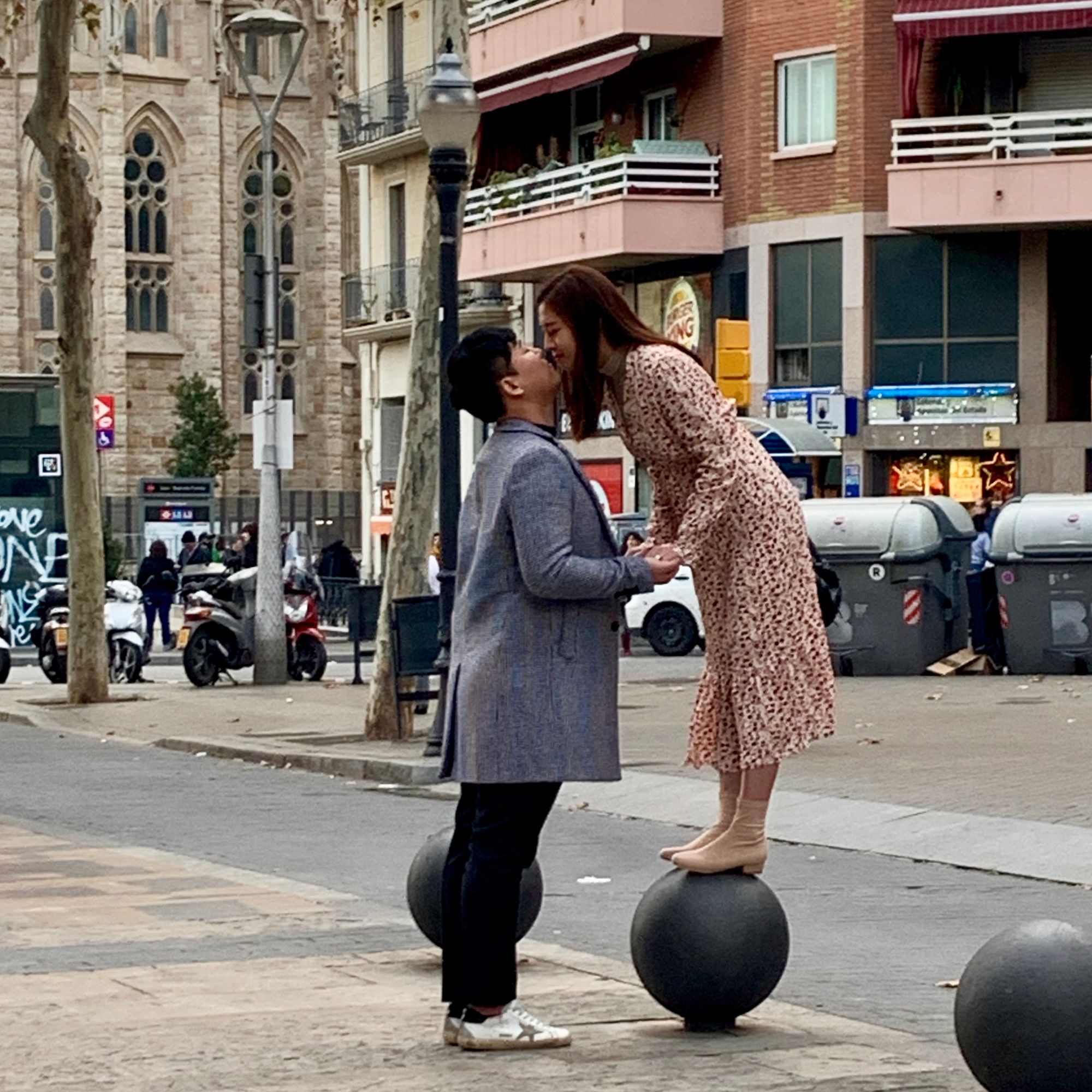
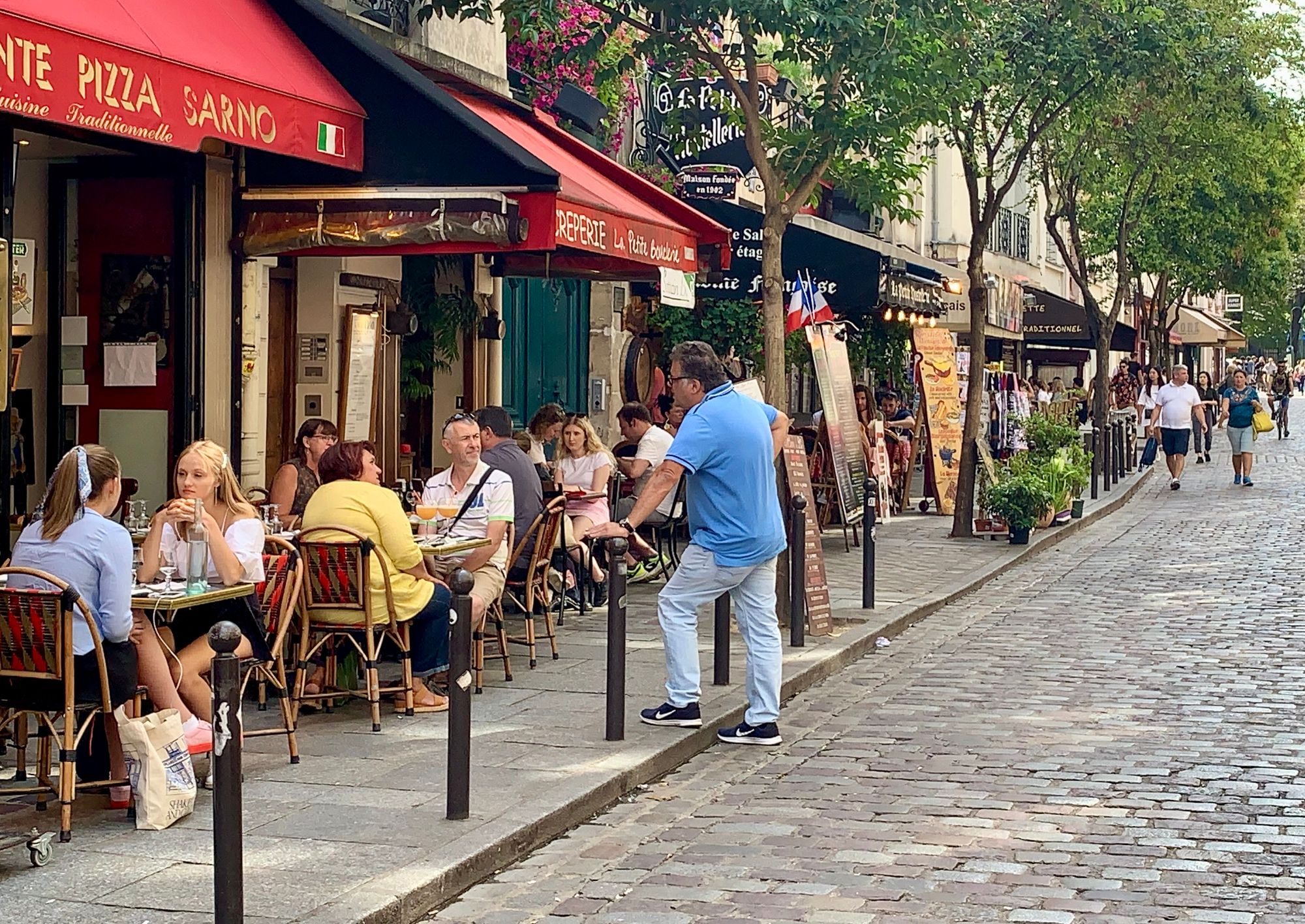
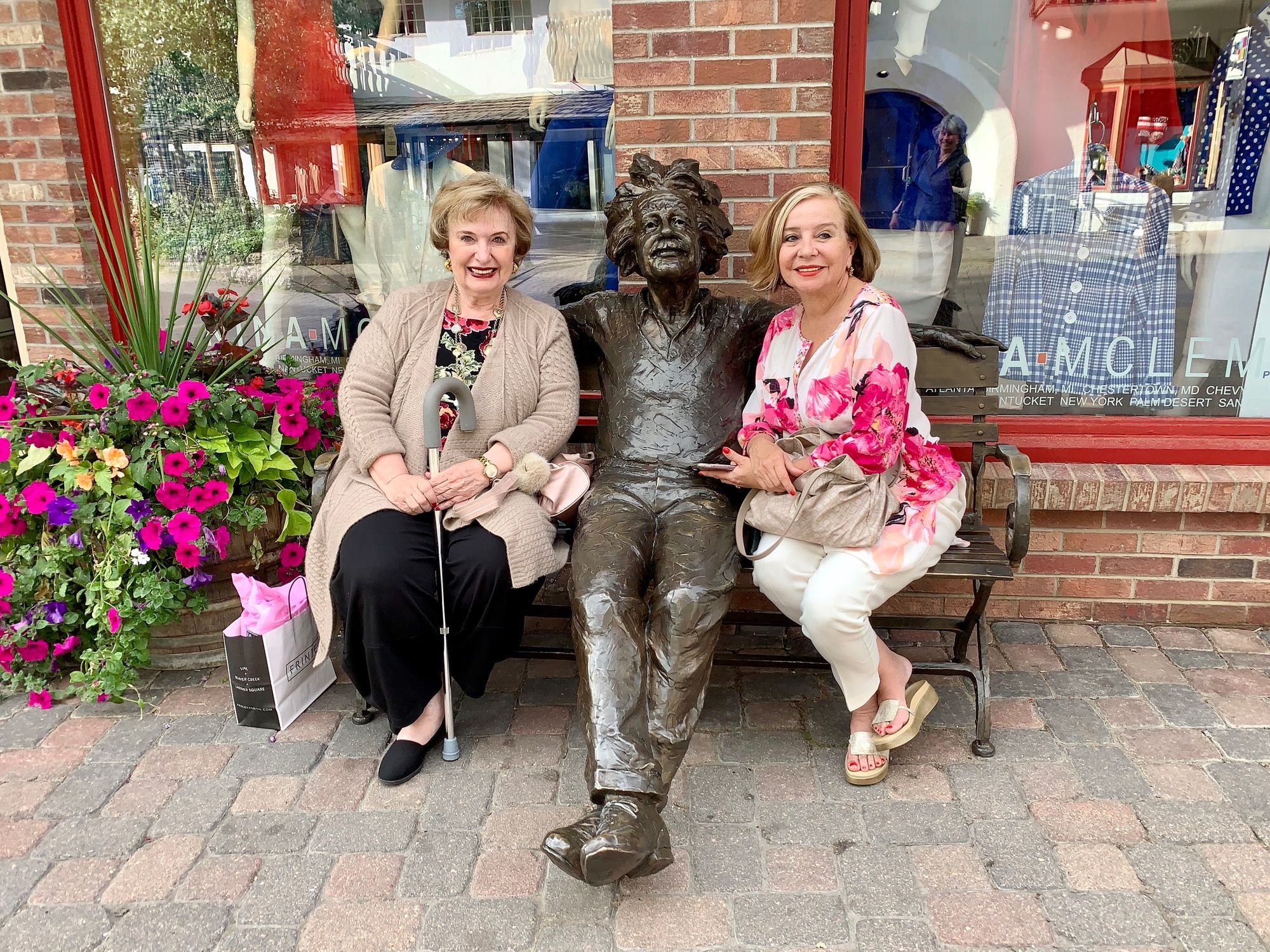
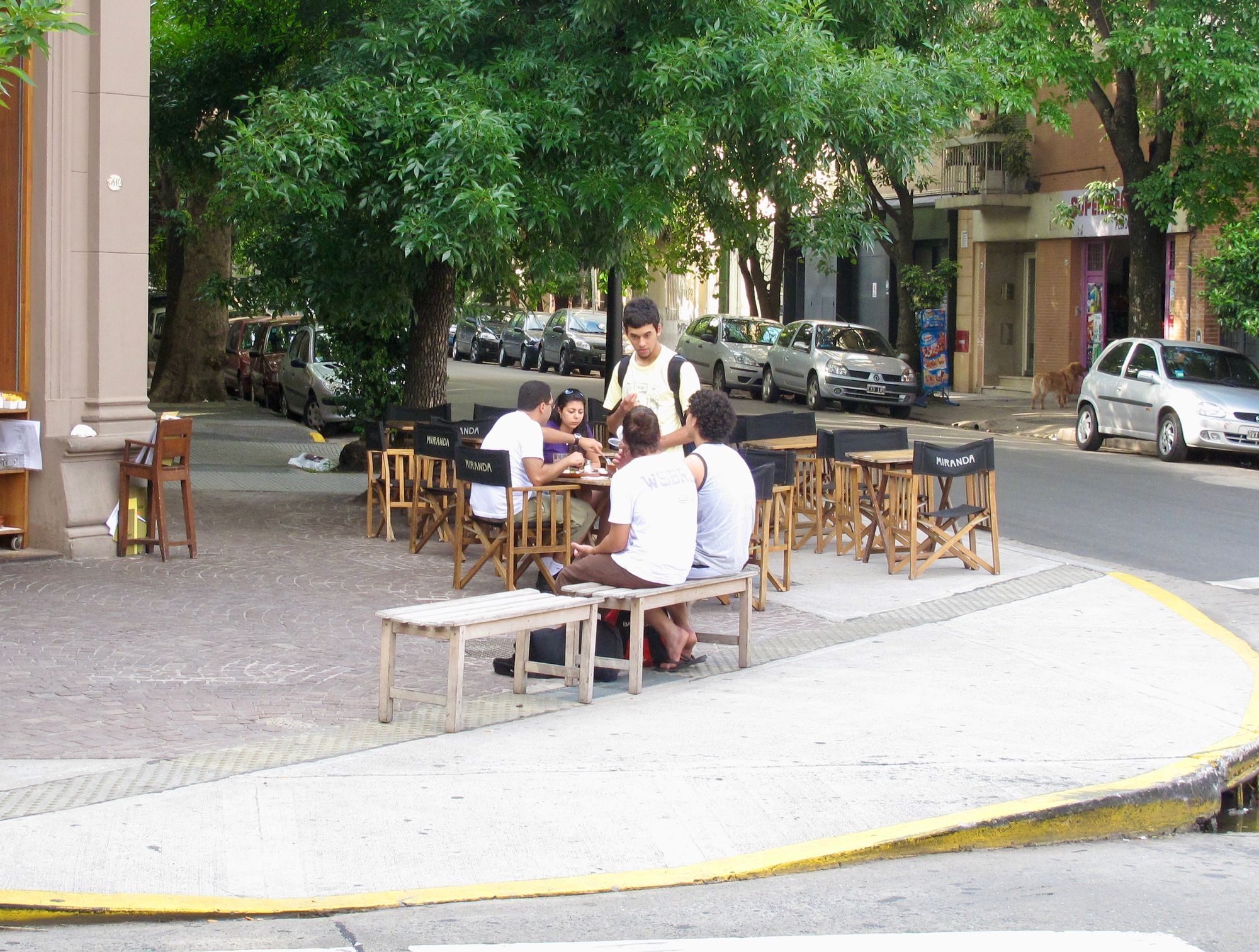
Engaging in the life of the streets
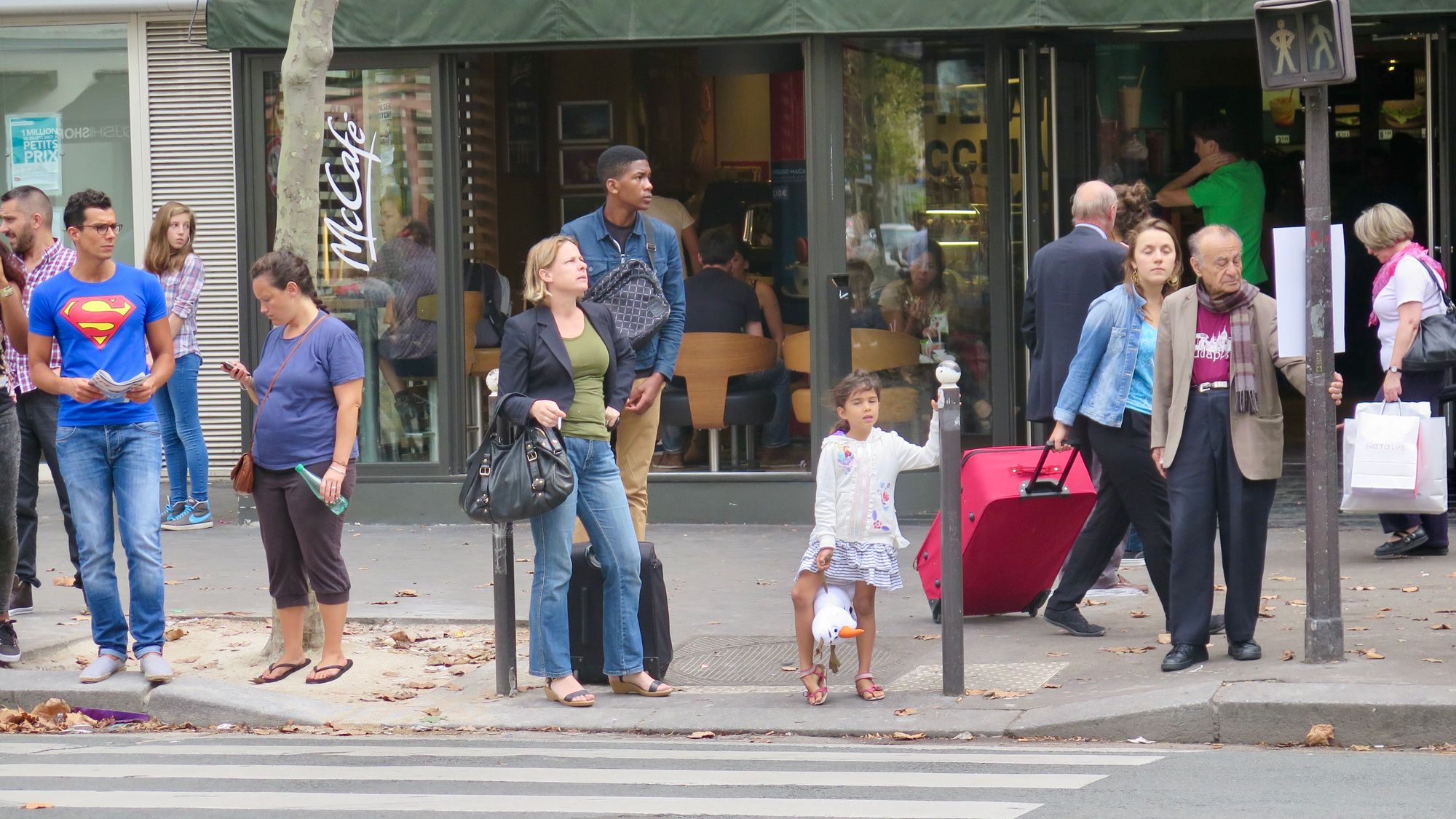
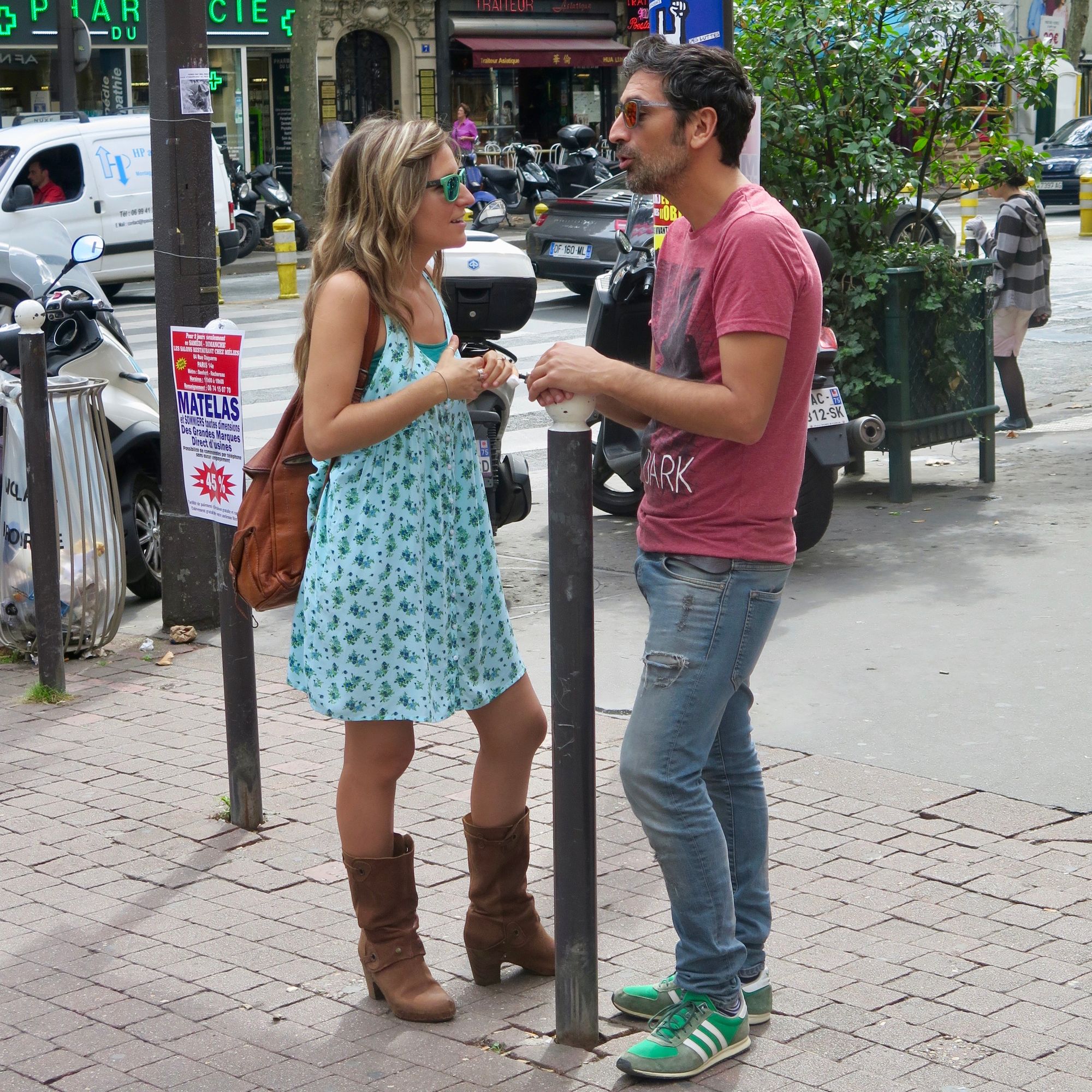
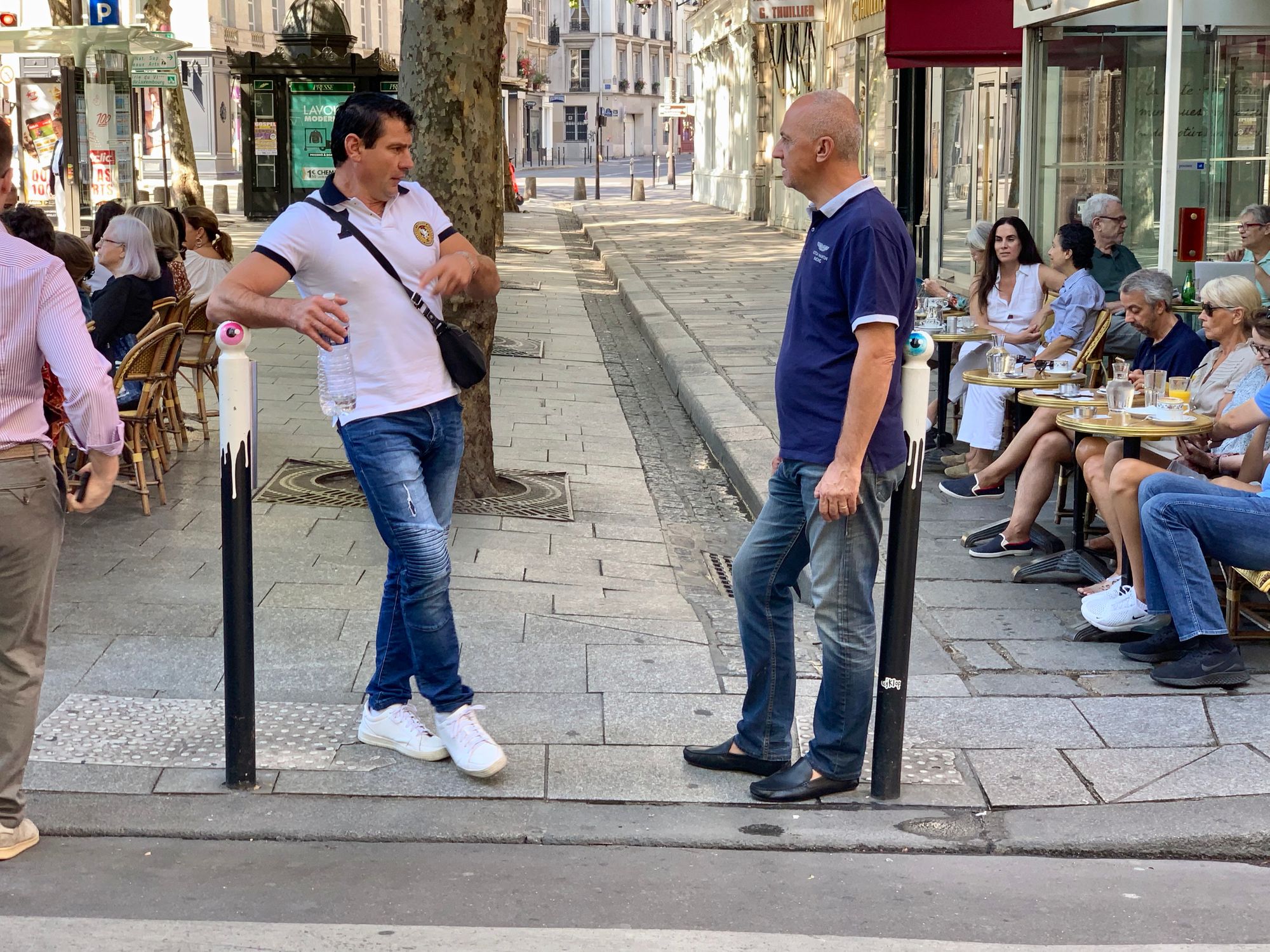
A crosswalk or street corner is a natural place to gather
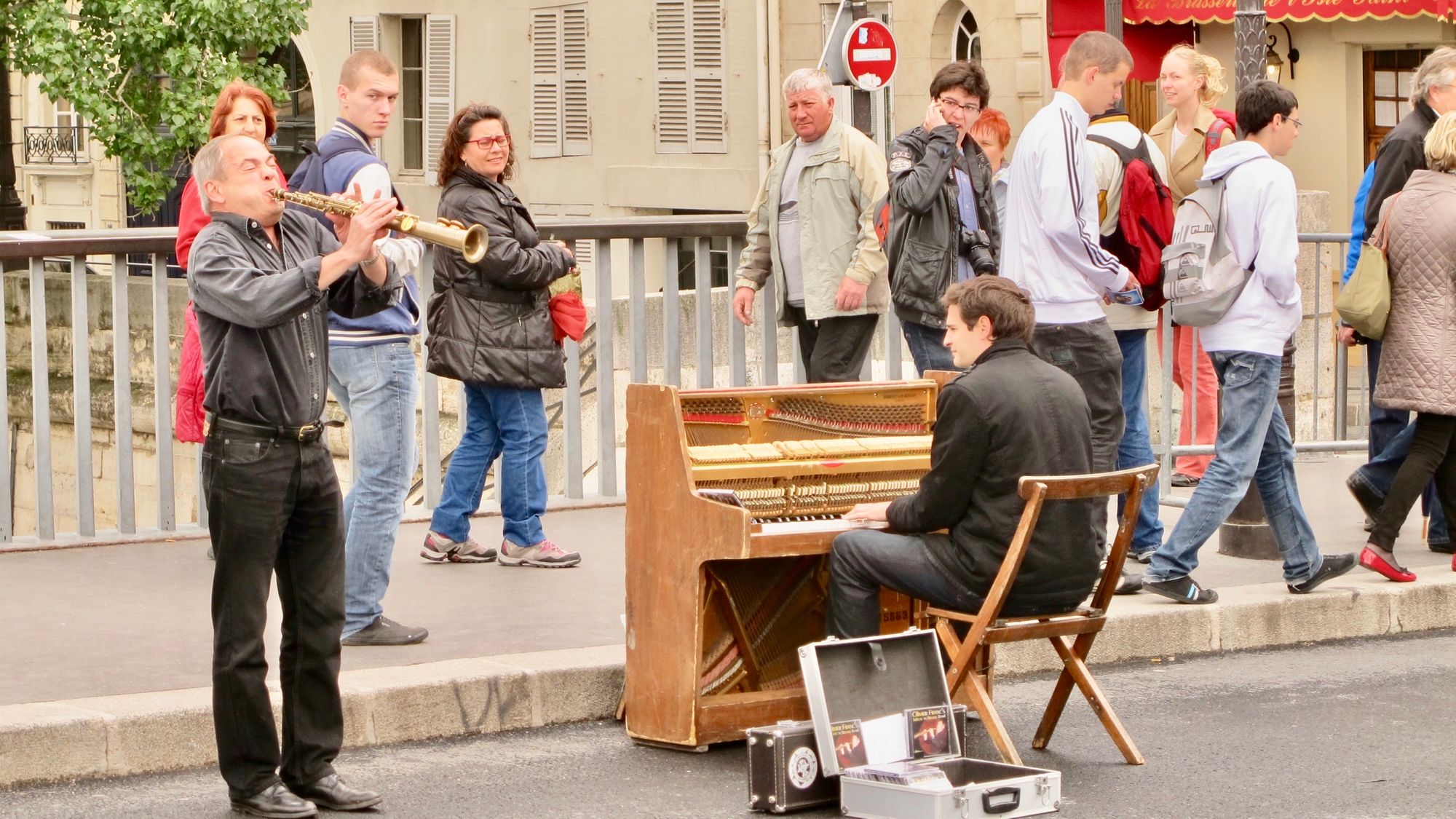
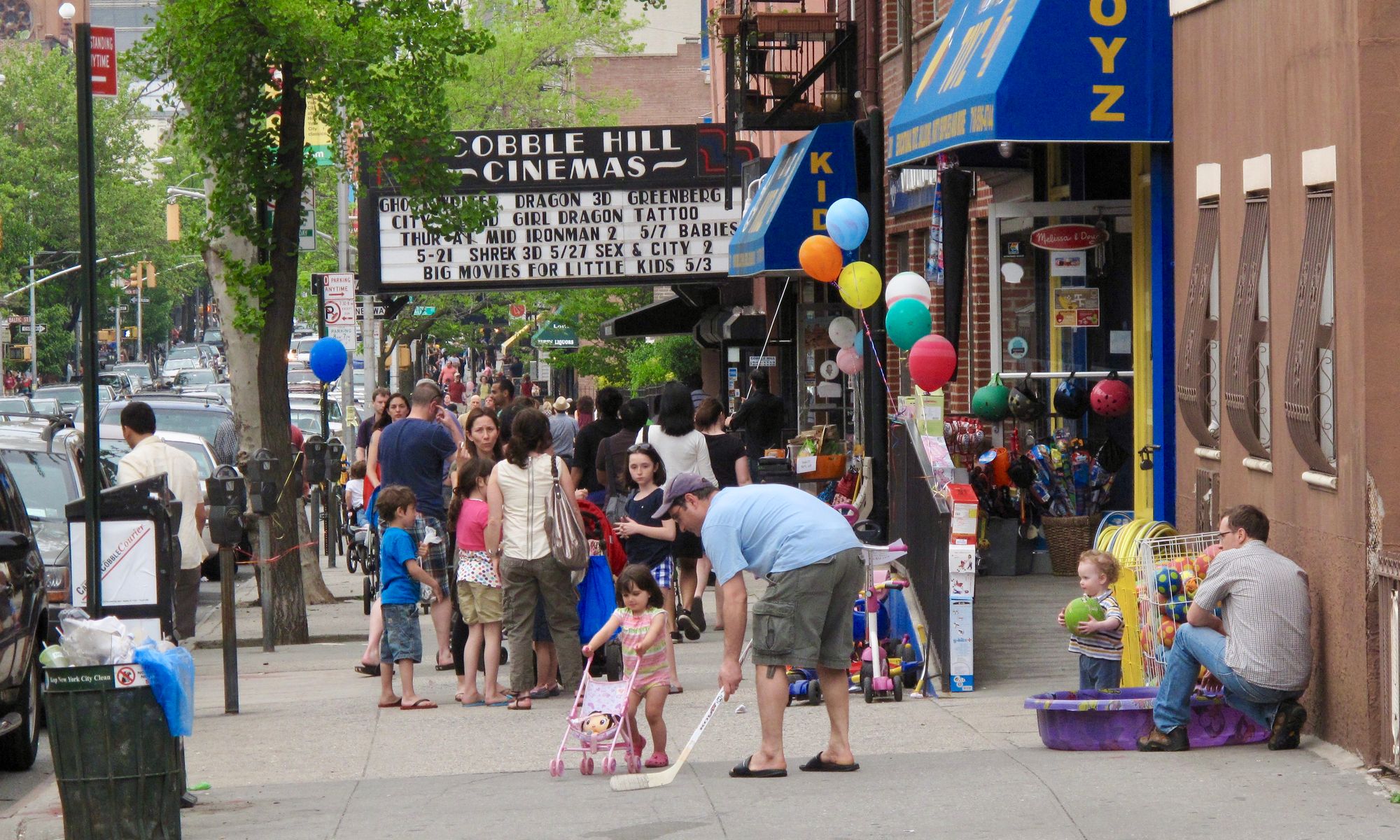
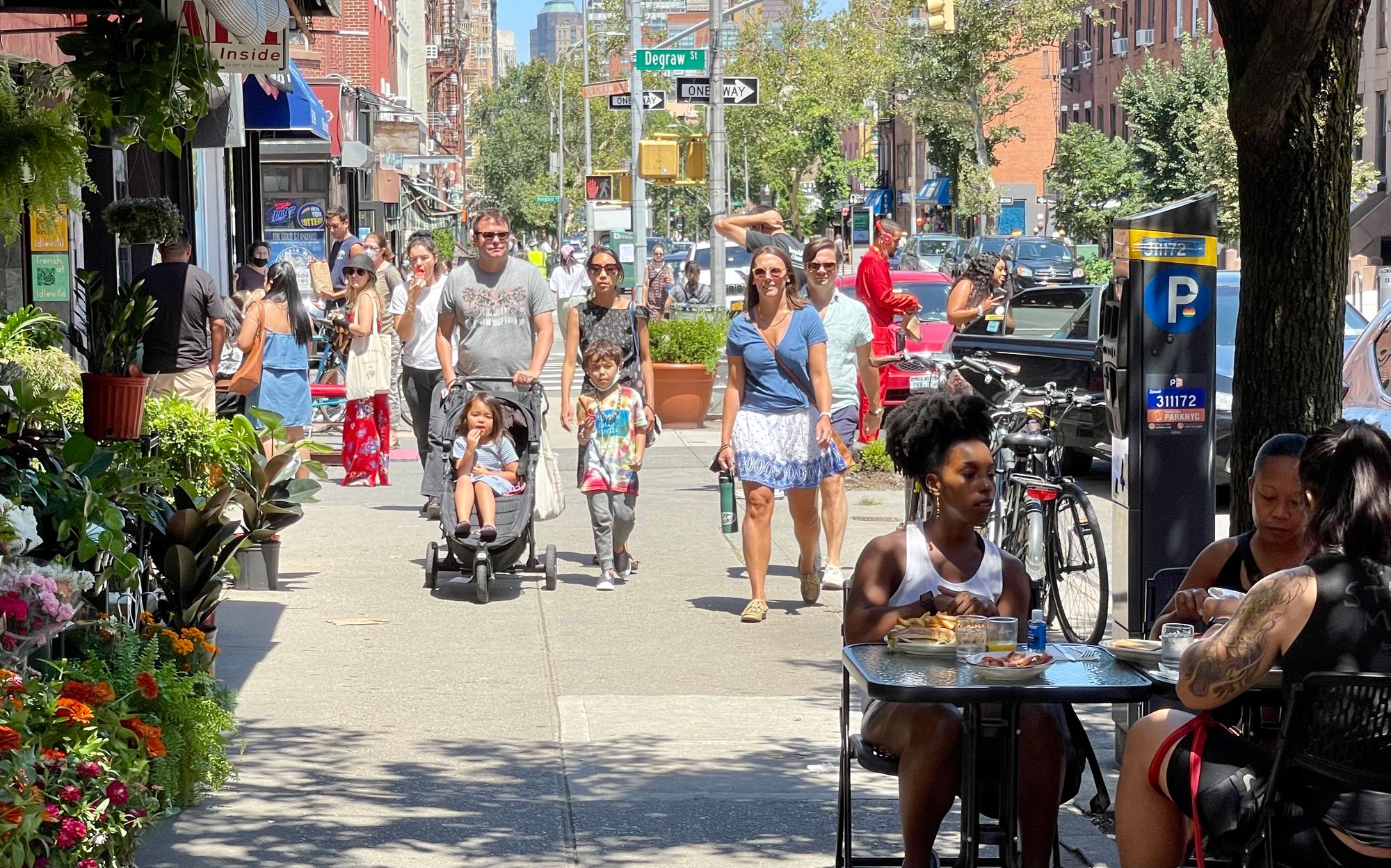
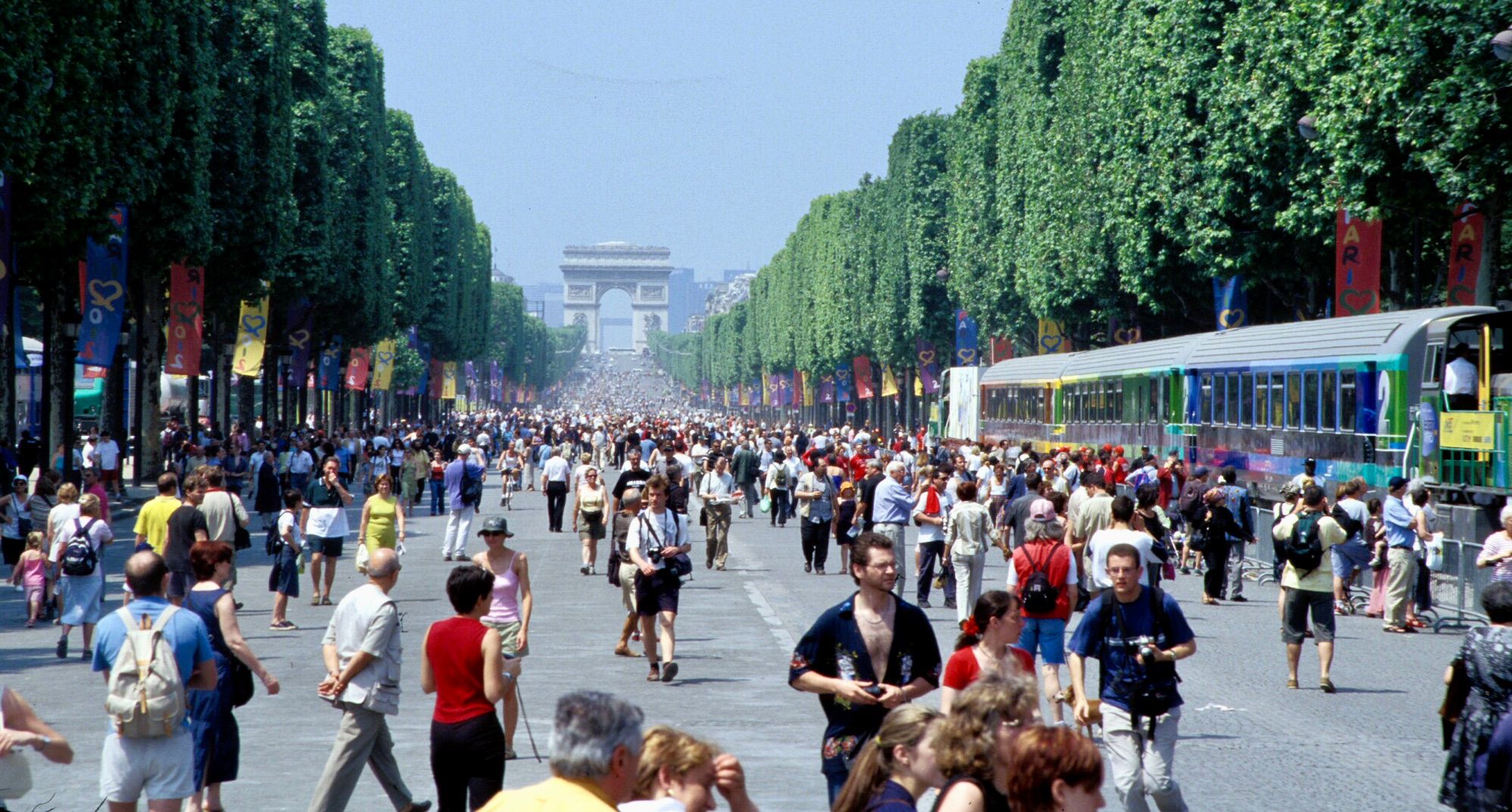
Paris, Amsterdam and Brooklyn
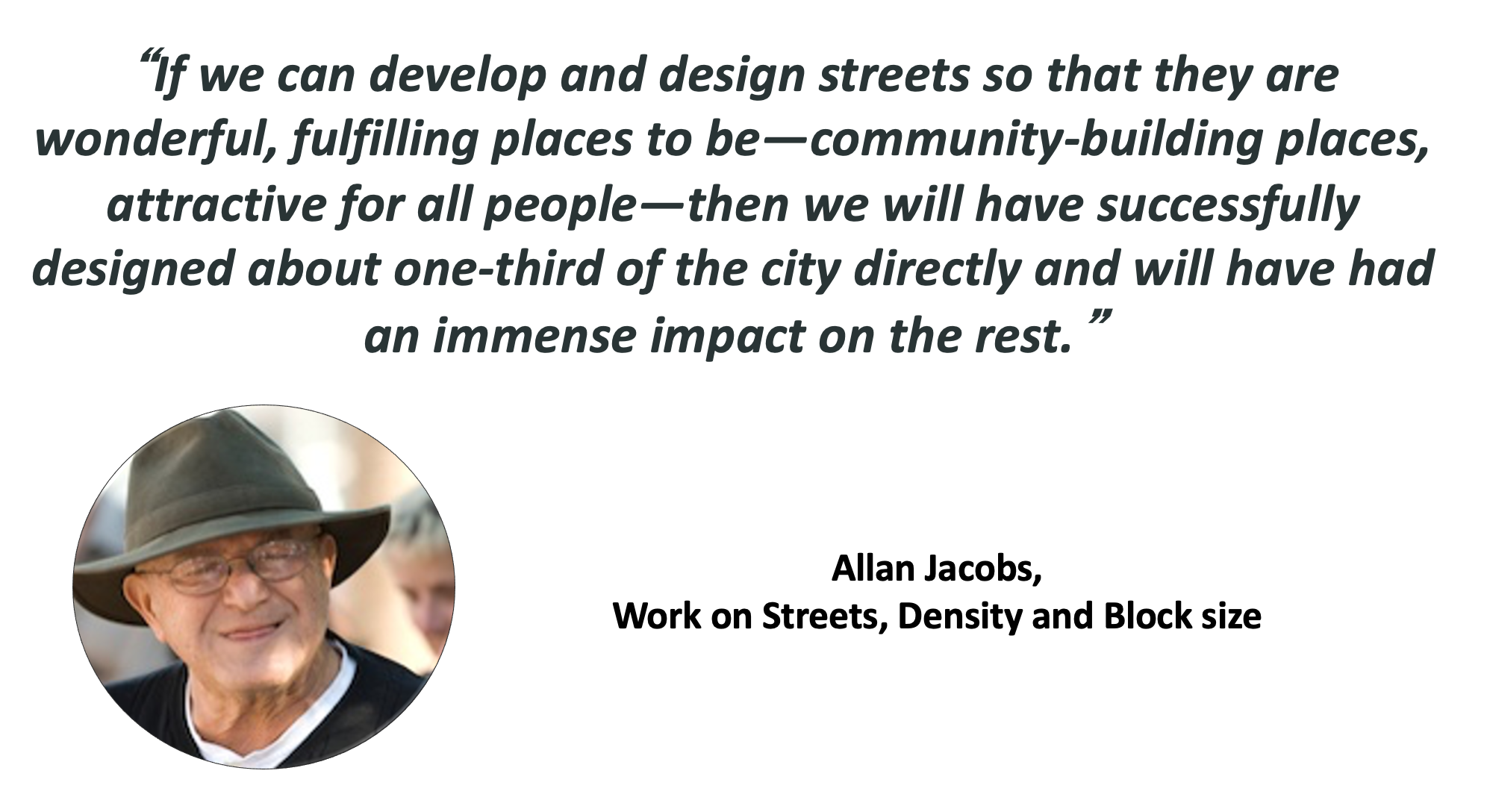
Starting with a focus on sidewalks and social life is the key to making the street a place where people want to spend time. In doing so, we can get back to the kind of vibrant communities we want. We can even save the planet, because creating interesting sidewalk experiences is the key to drawing people out of their cars and getting them walking around the public realm.
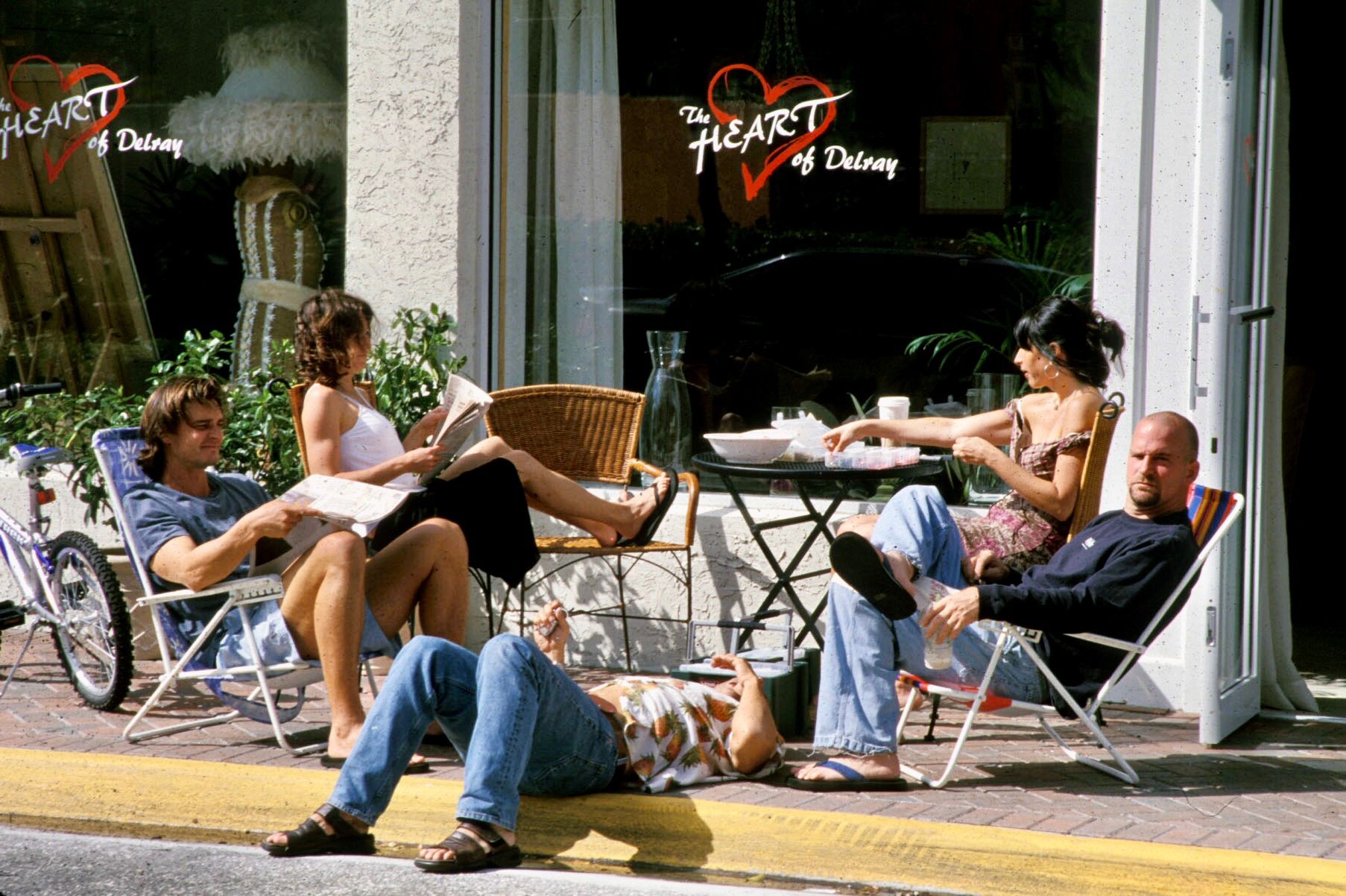
The Different Kinds of Streets
Promenades
Streets intended for pedestrians are those where the stroll is the main act and there are no cars to distract from it. On promenades people walk and enjoy their surroundings while chatting with friends, getting a treat from a street vendor and doing some window shopping. Pedestrians are the stars of the show, front and center, and it is a pleasure to be around.
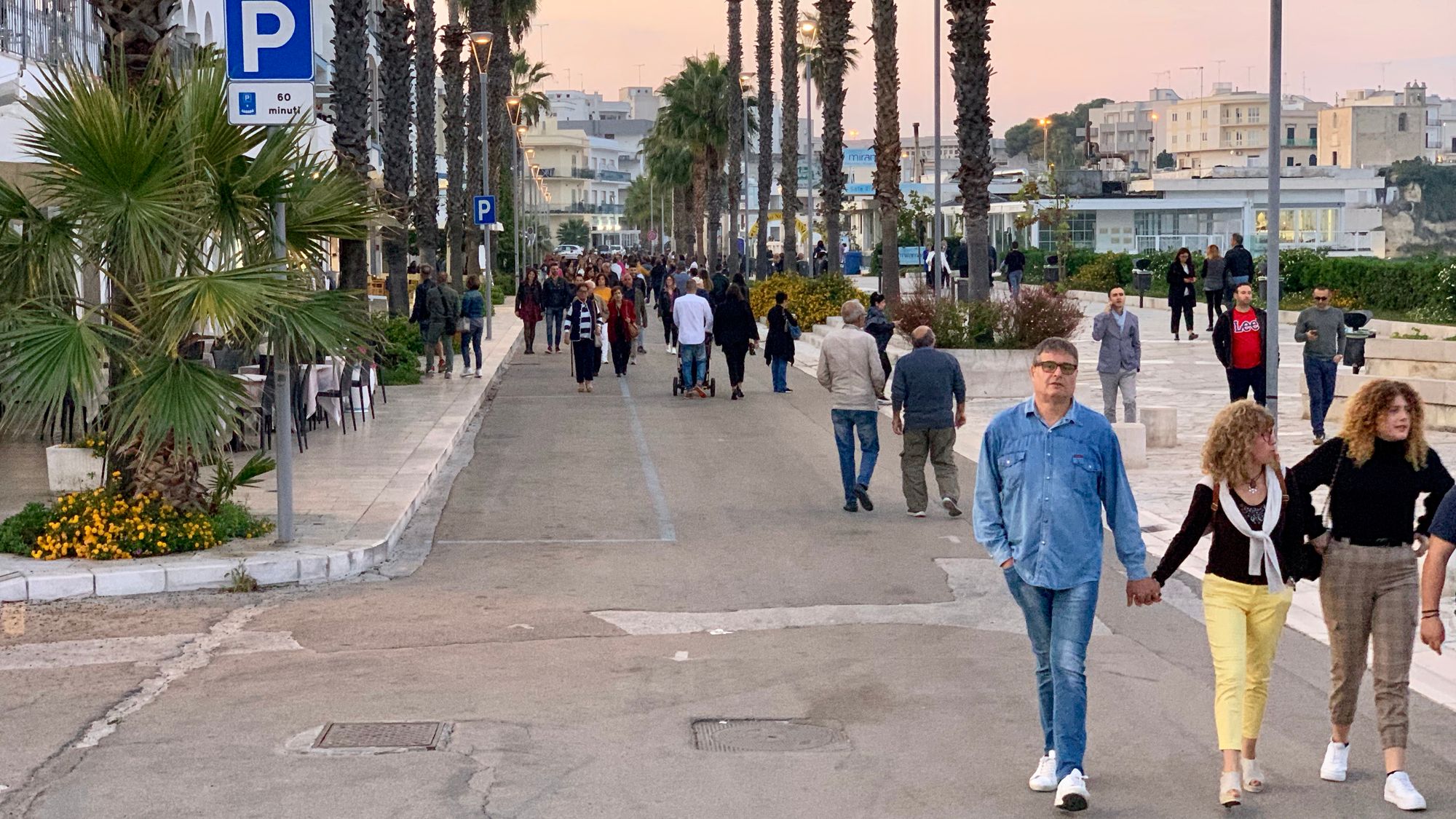
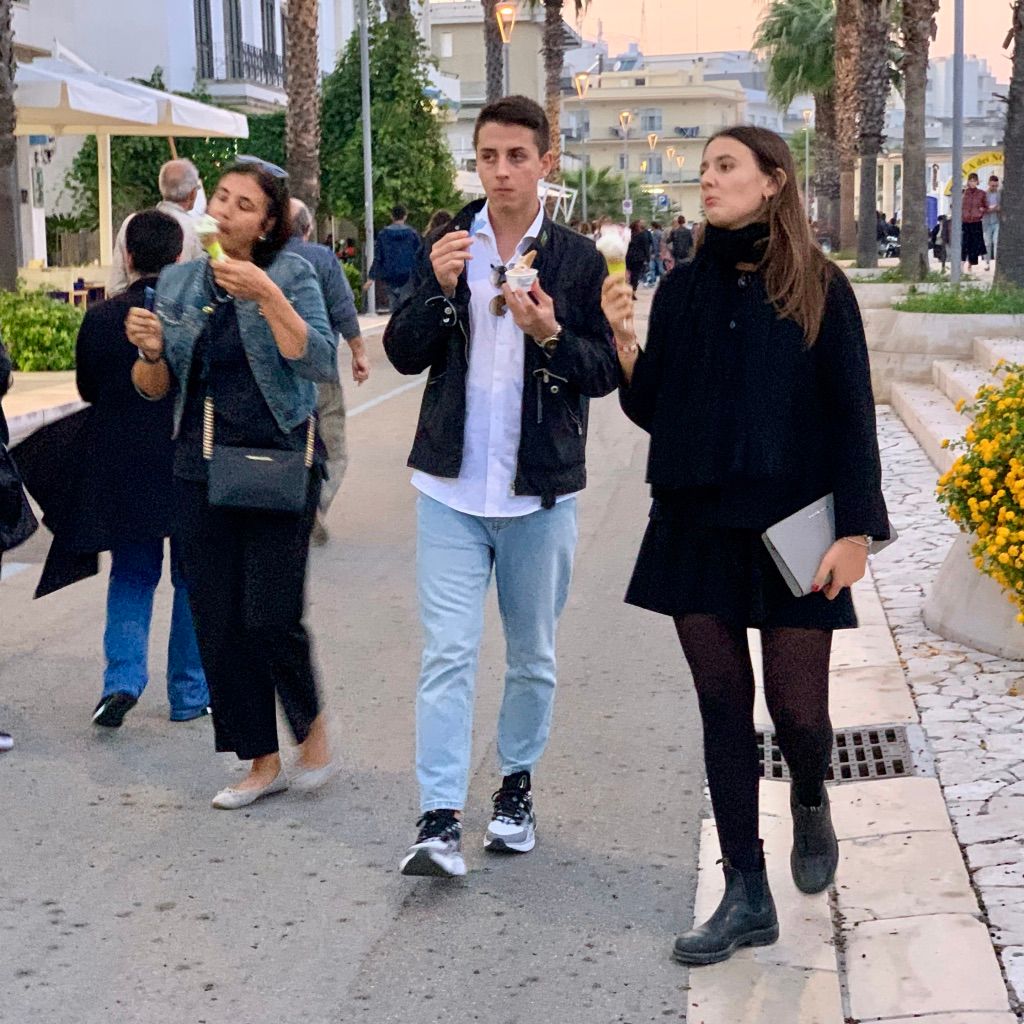
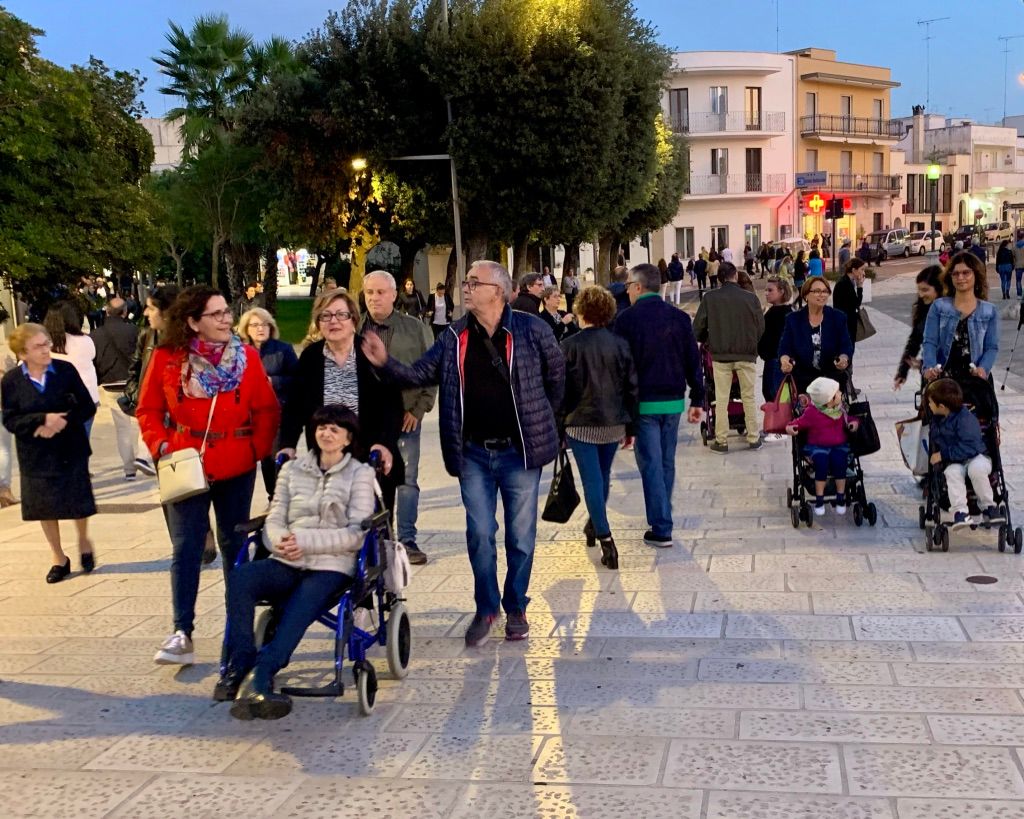
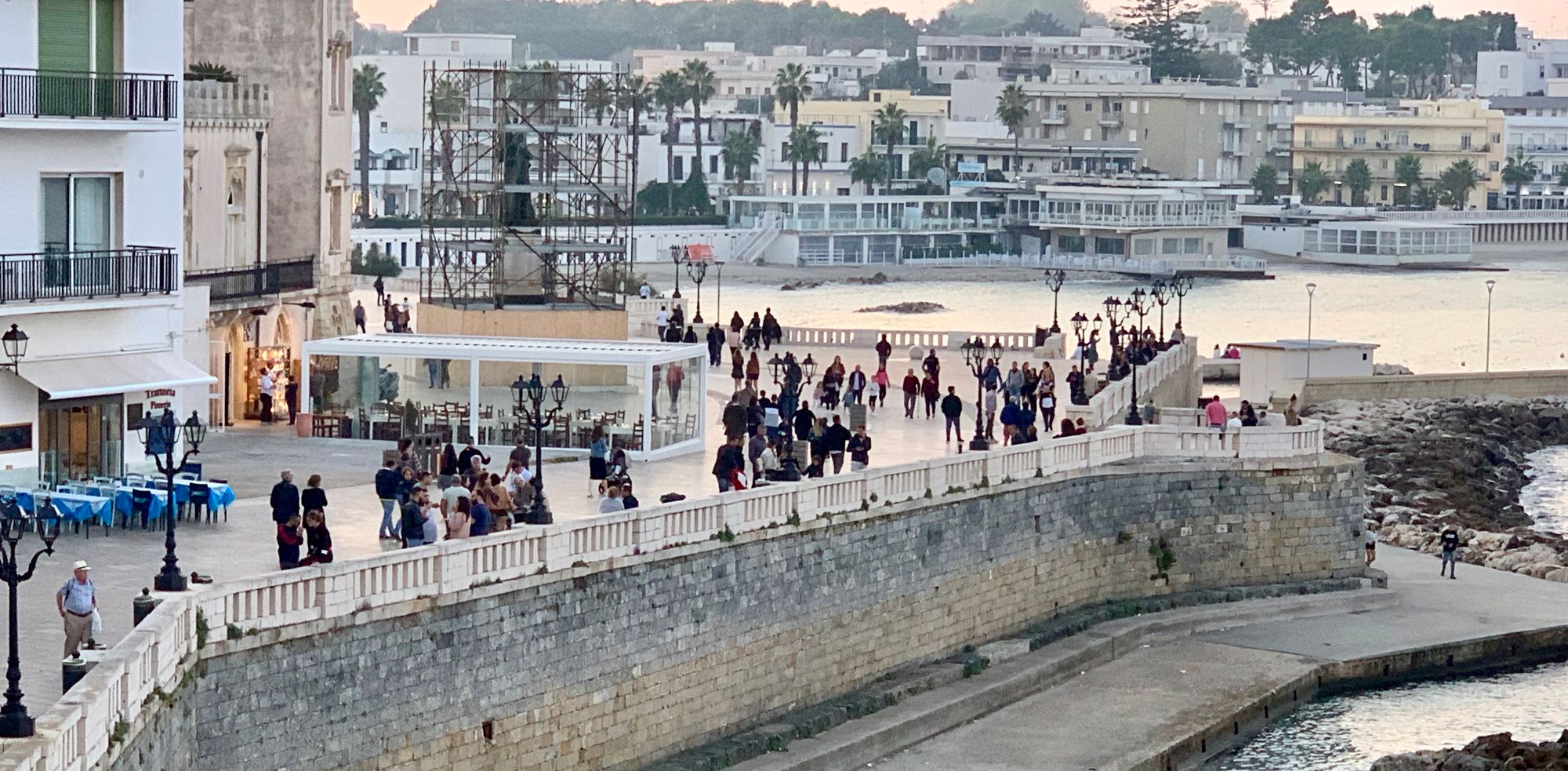
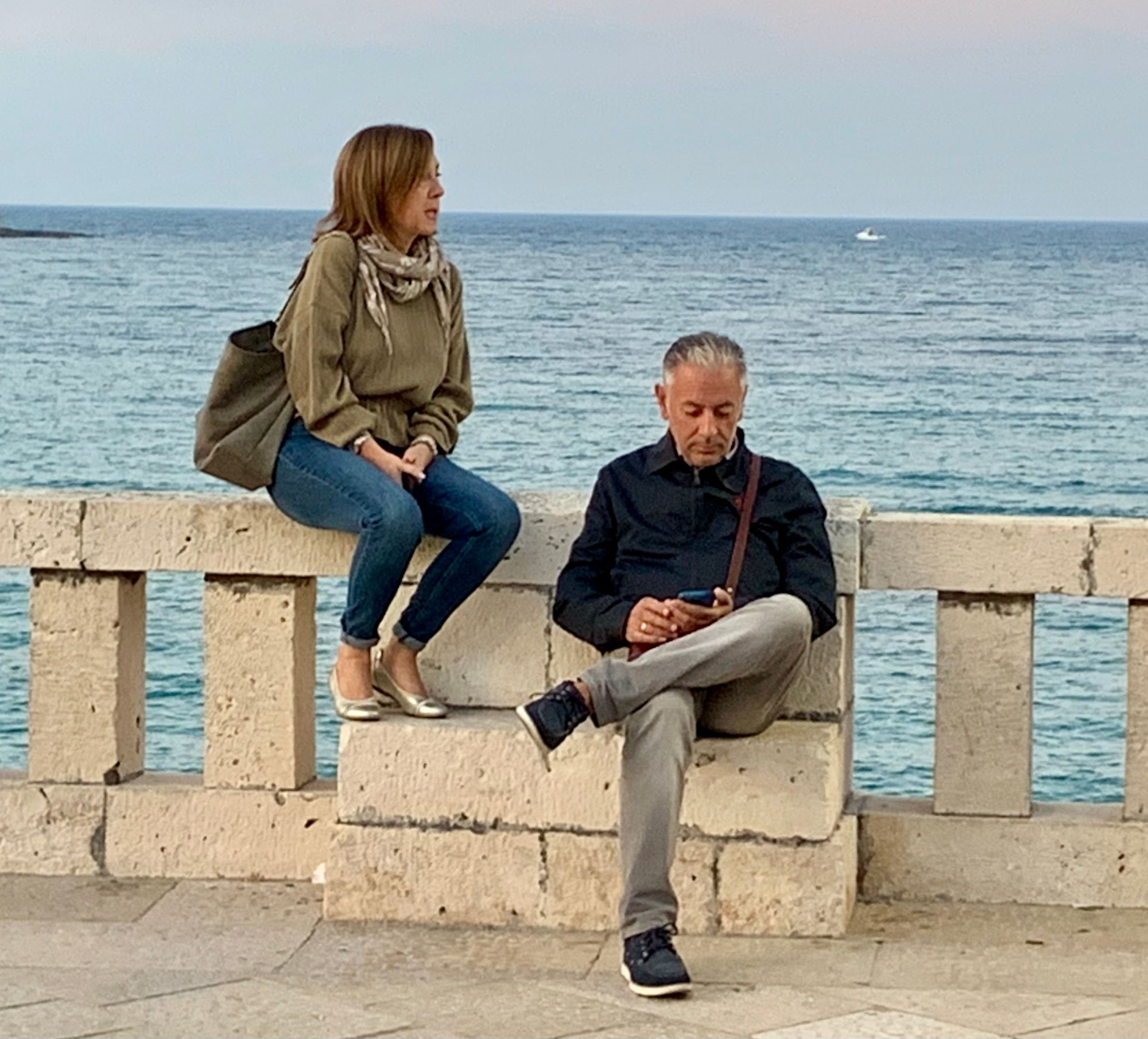
Humans share a basic instinct to gather in groups, seeking fun and strengthening social bonds
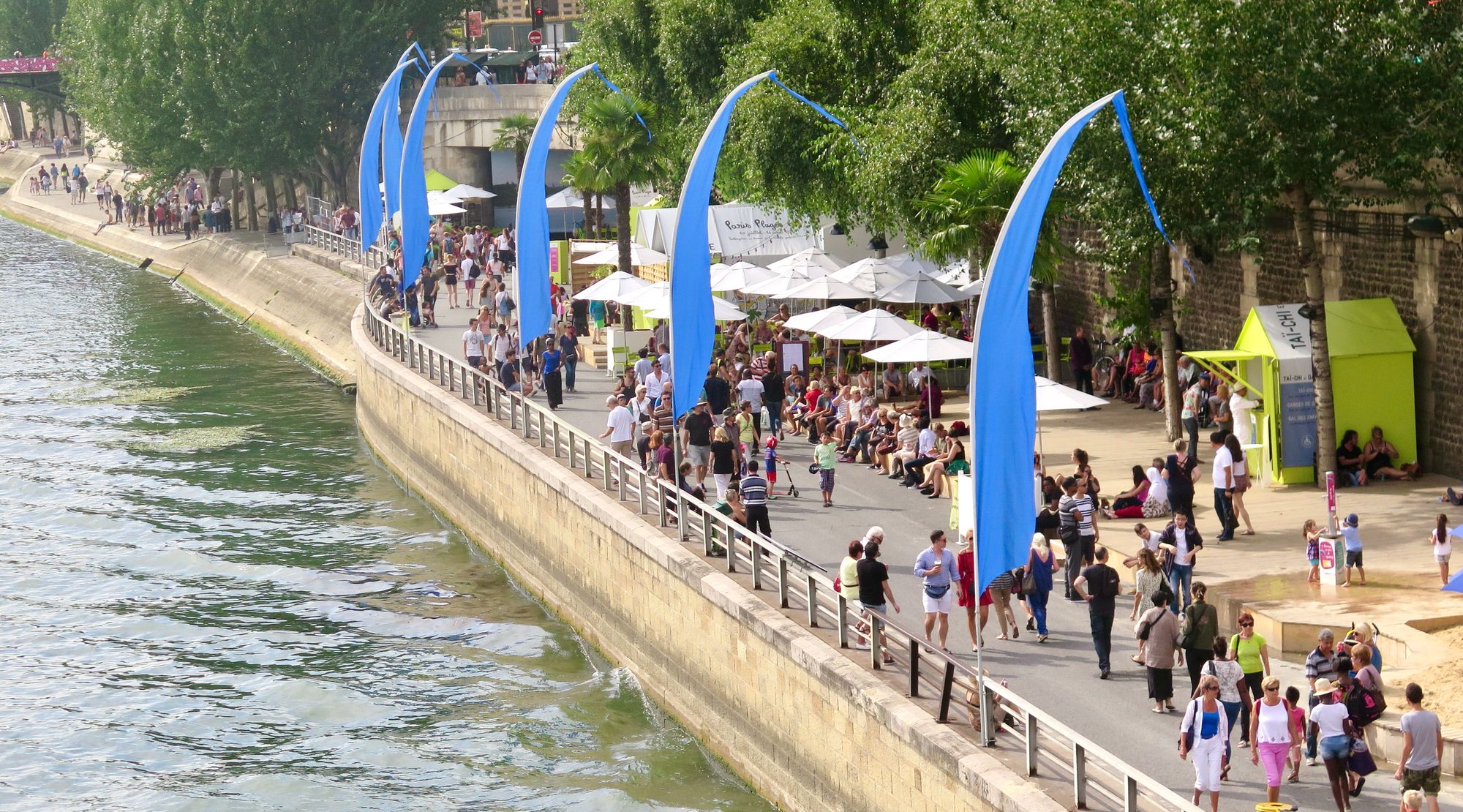
Great Pedestrian Streets:
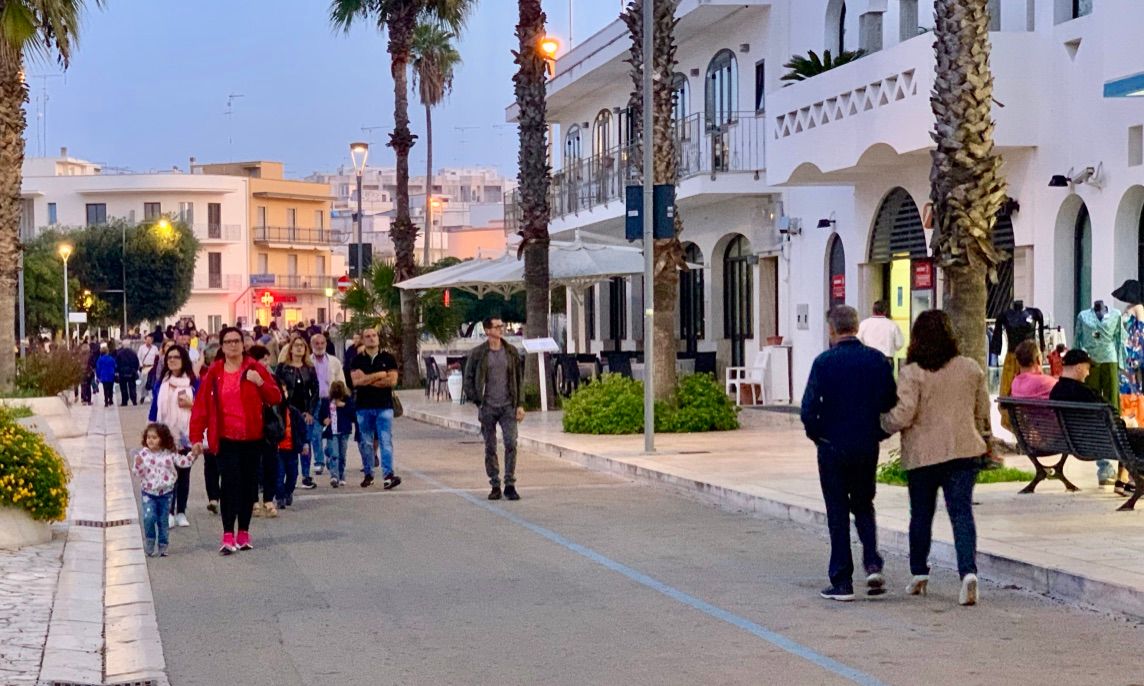
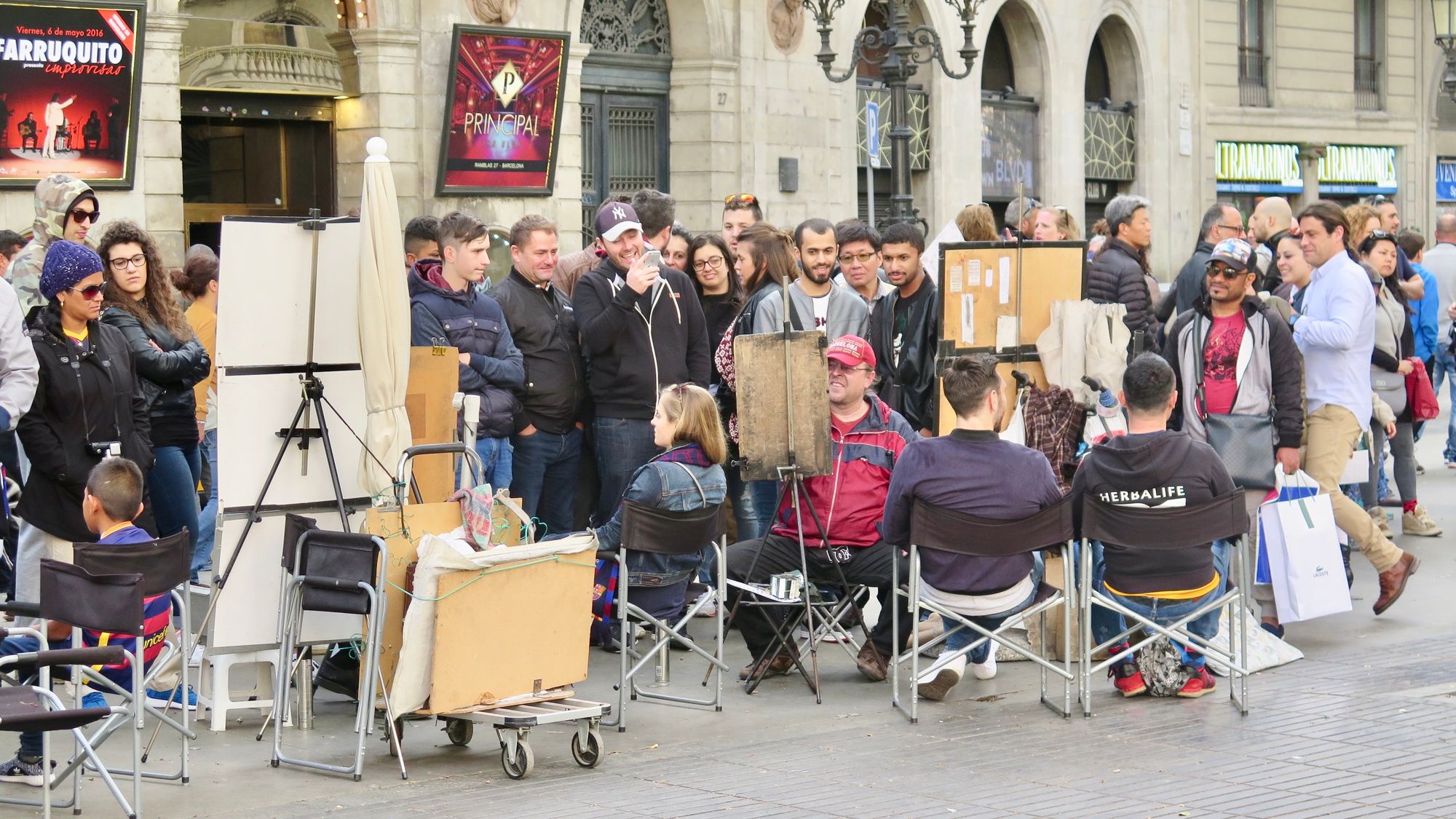
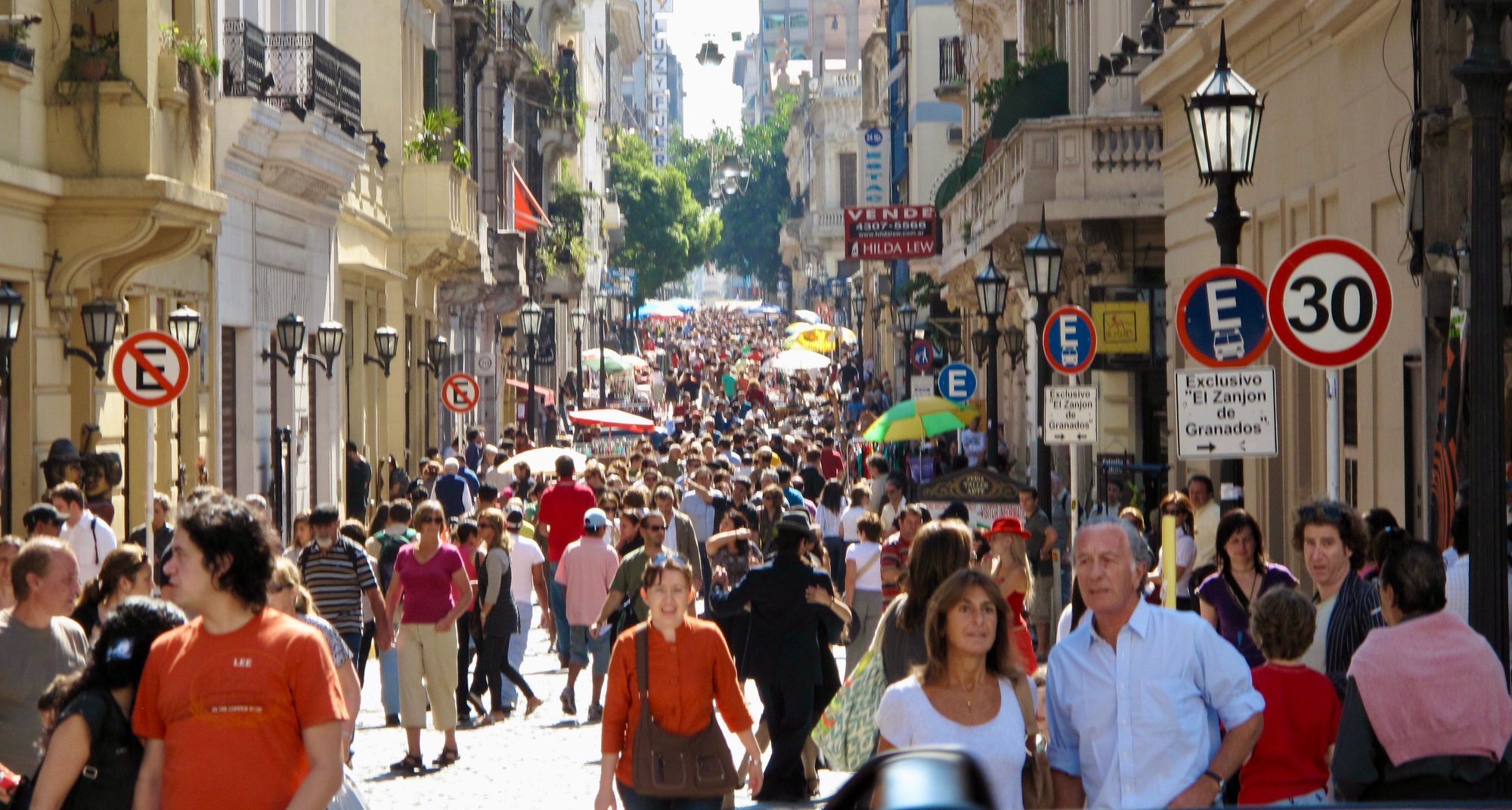
Waterfront Promenades
People are naturally drawn to views of the water. Bodies of water are beautiful, relaxing, and awe-inspiring. Because of this, capitalizing on a location by the water through assets and amenities is a wise, some would say logical, move. Half the work of attracting people has already been done by Mother Nature.
By adding a great walkway, cafés or restaurants with outside seating, activities, performances, and all manner of other things that people enjoy to see or participate in, a waterfront becomes a the top destination wherever it makes its home. It fosters a sense of pride in residents because it combines nature's gifts with the community's appreciation and craftsmanship. In this way, a waterfront is strongly linked to a city's identity.
Paris, France
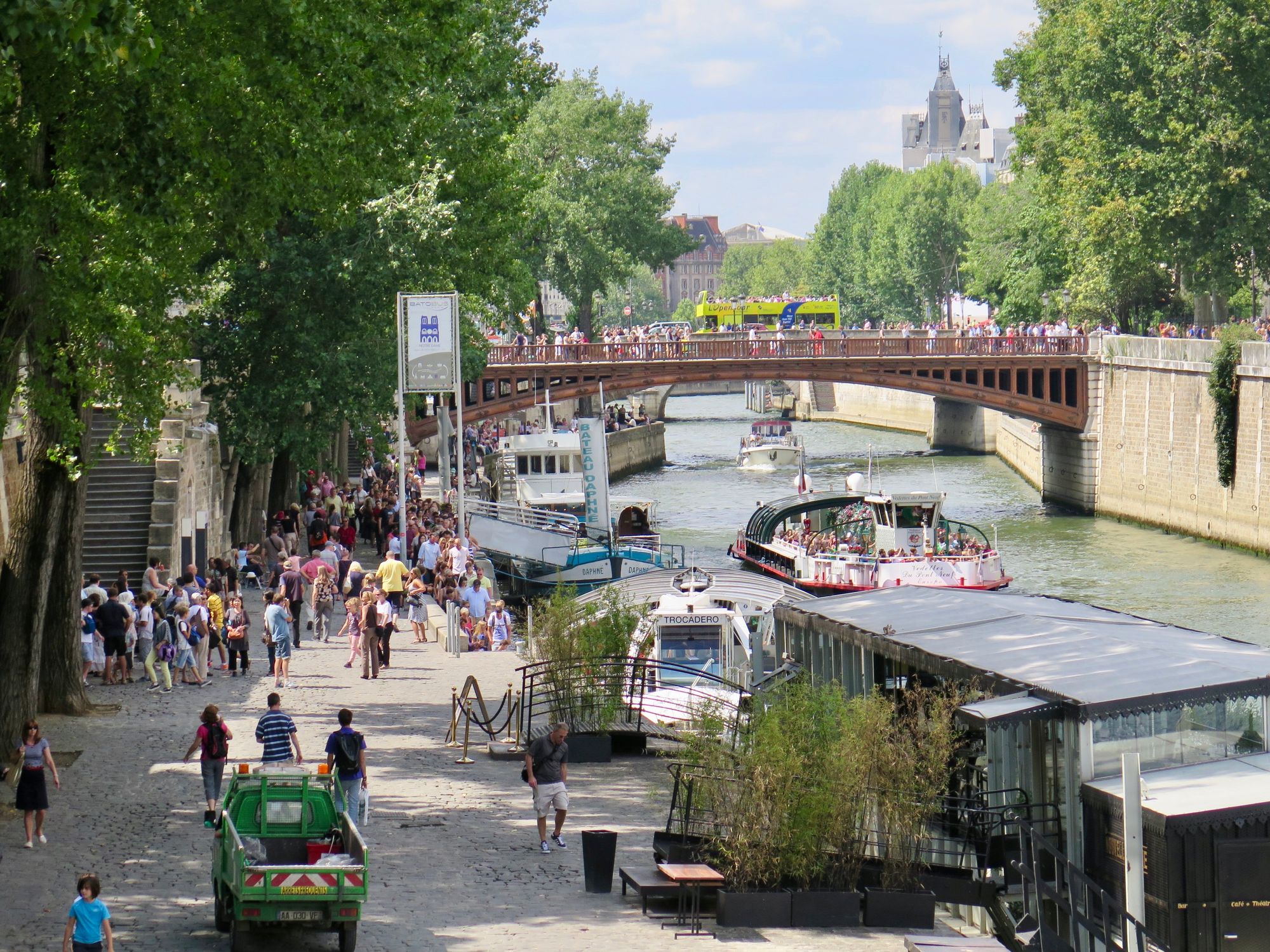
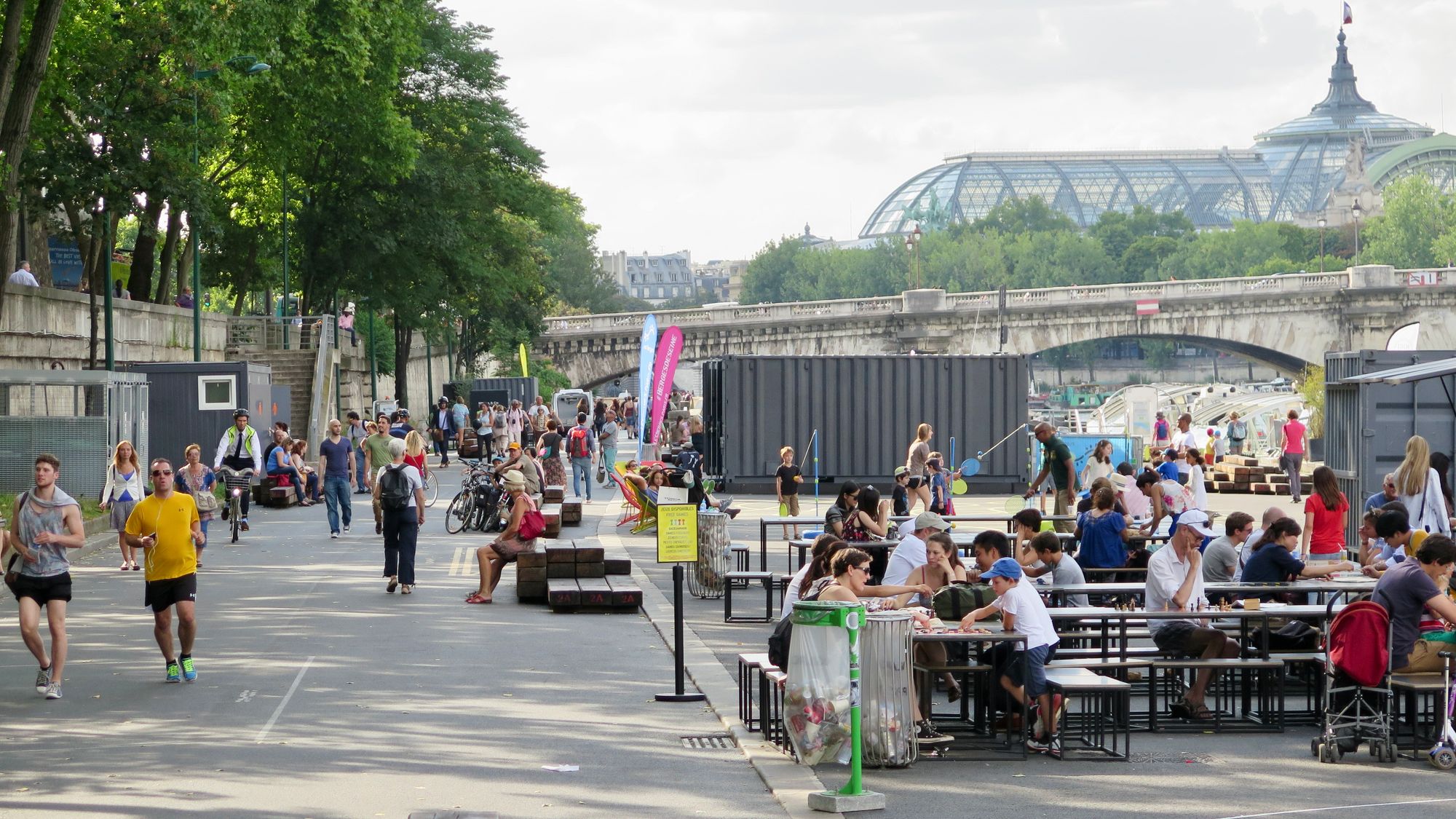
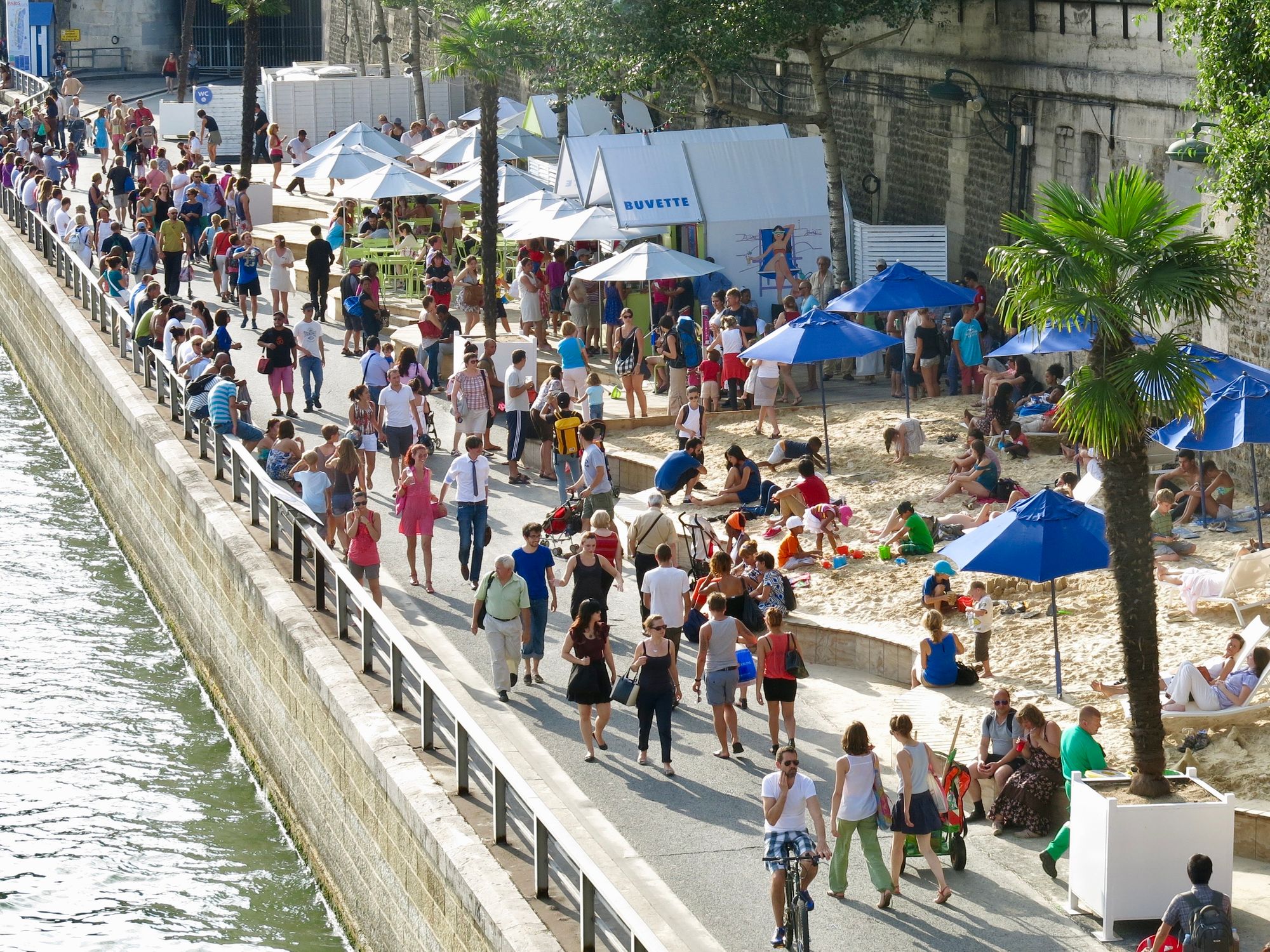
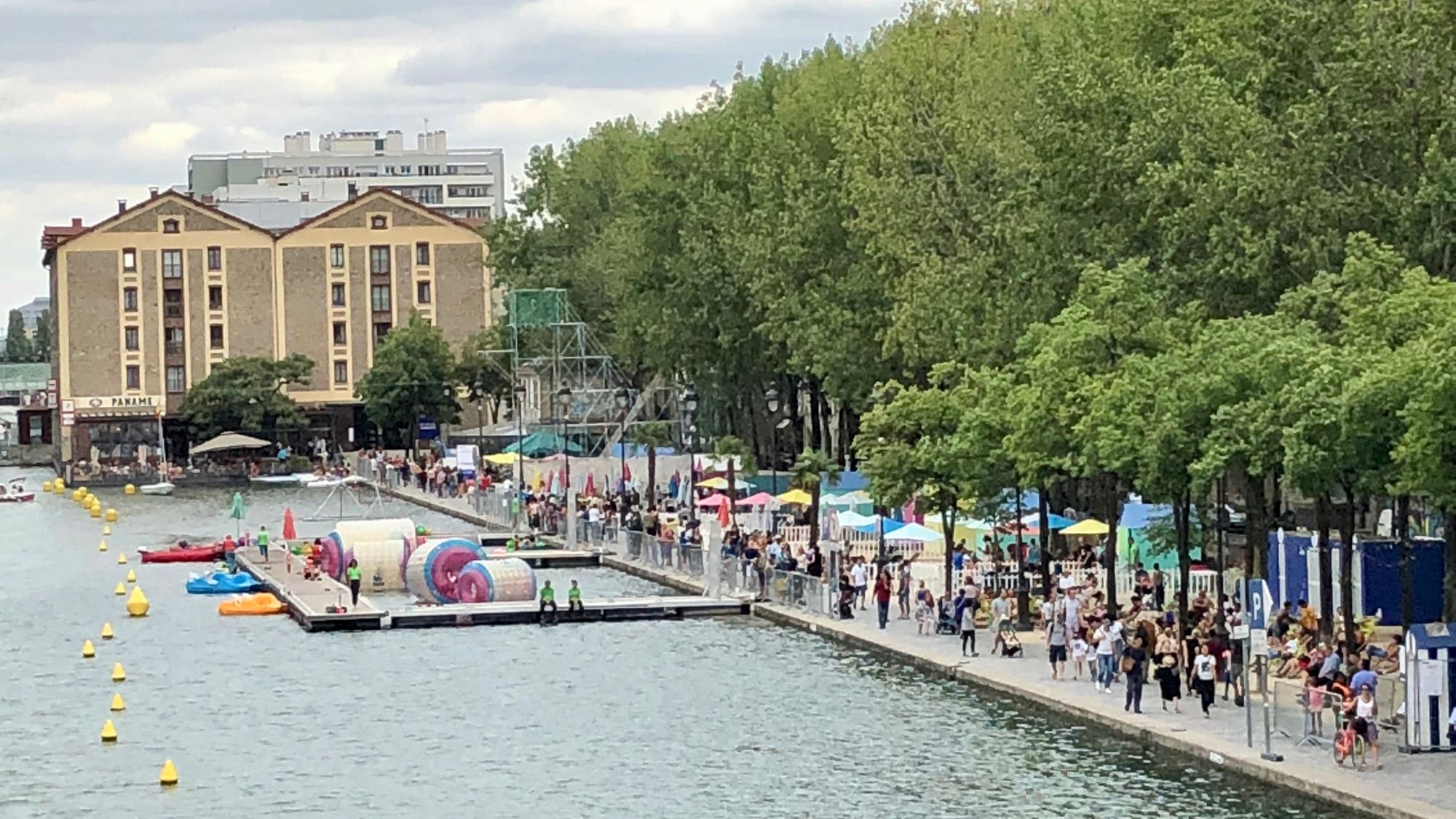
Stockholm, Sweden
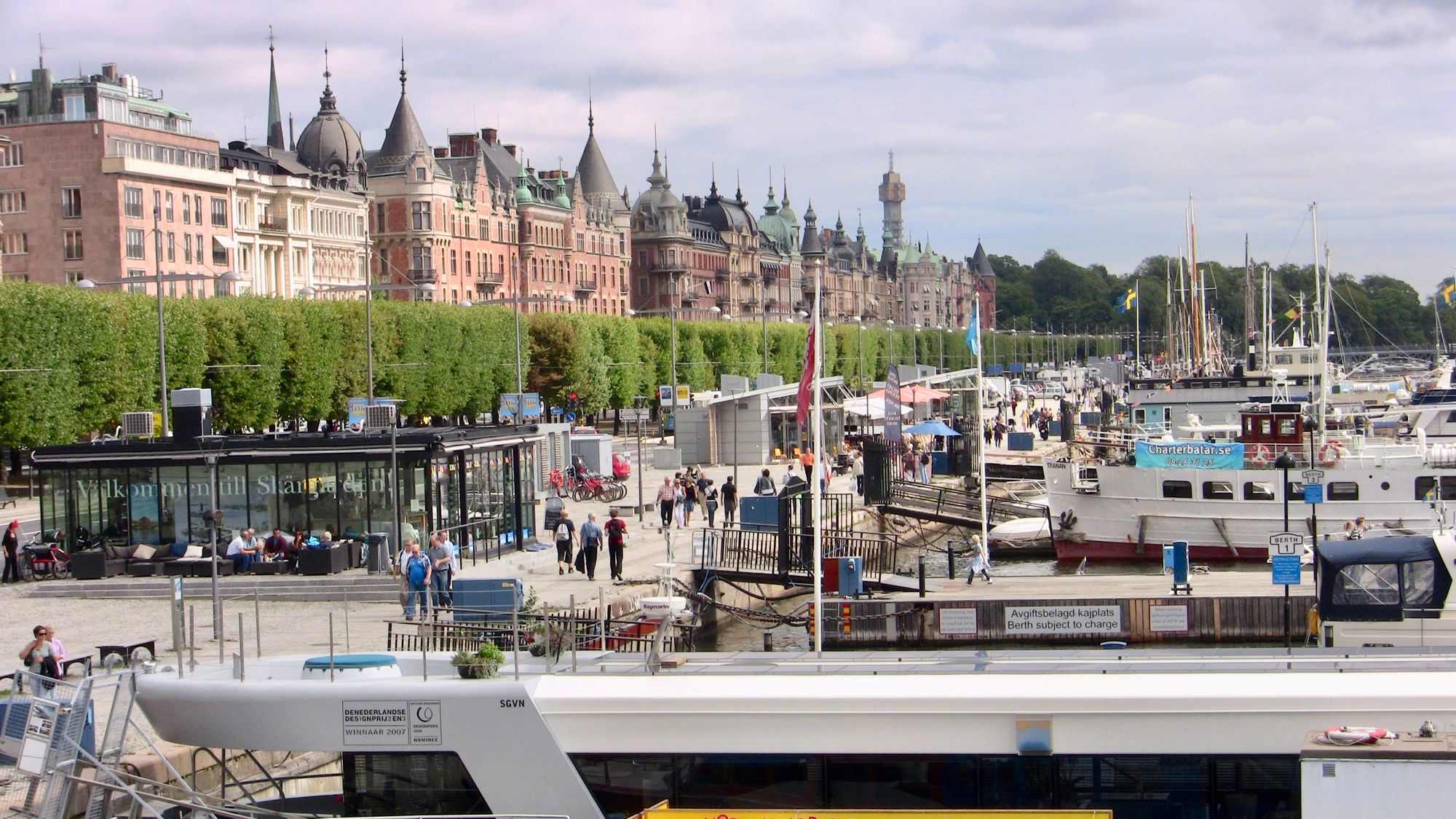
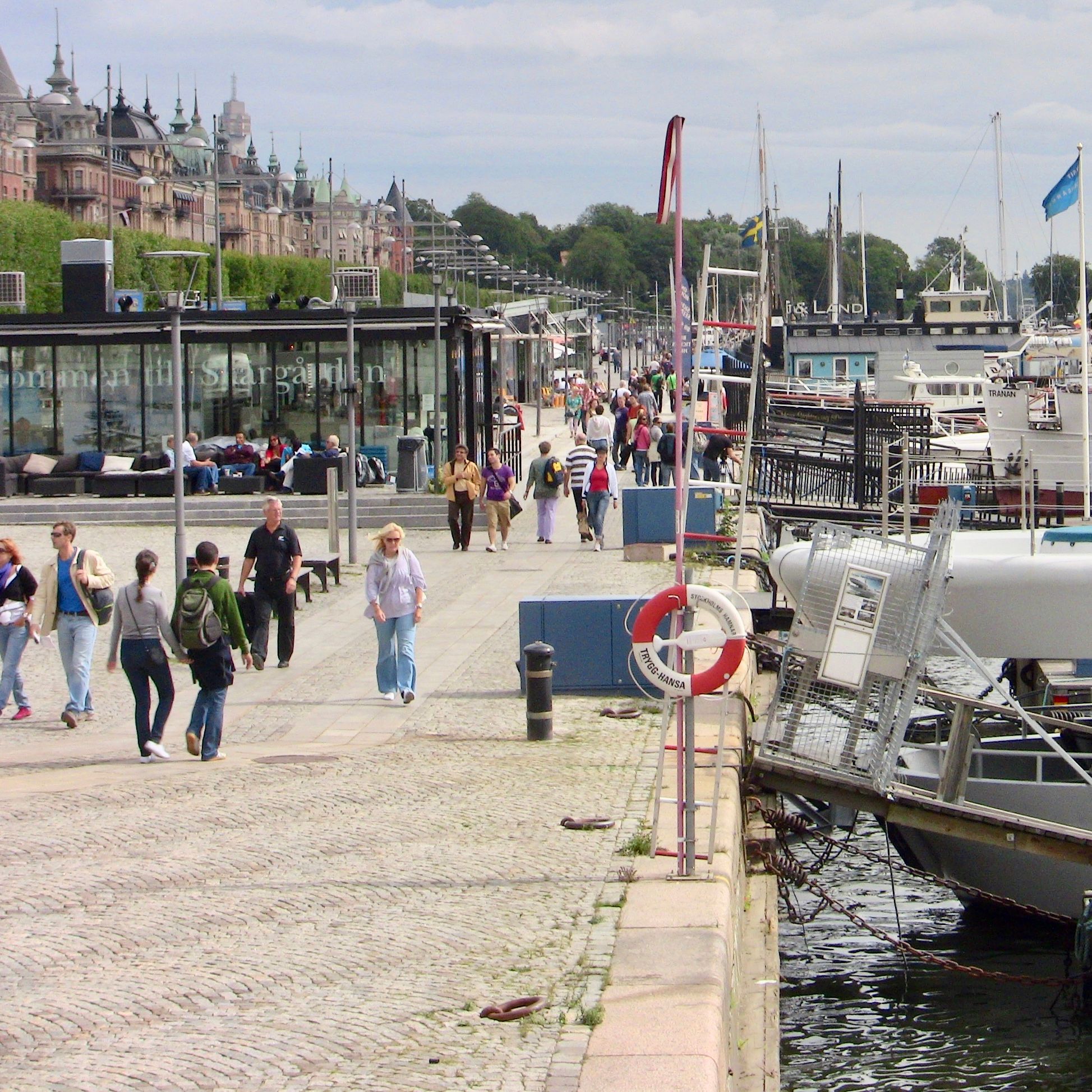
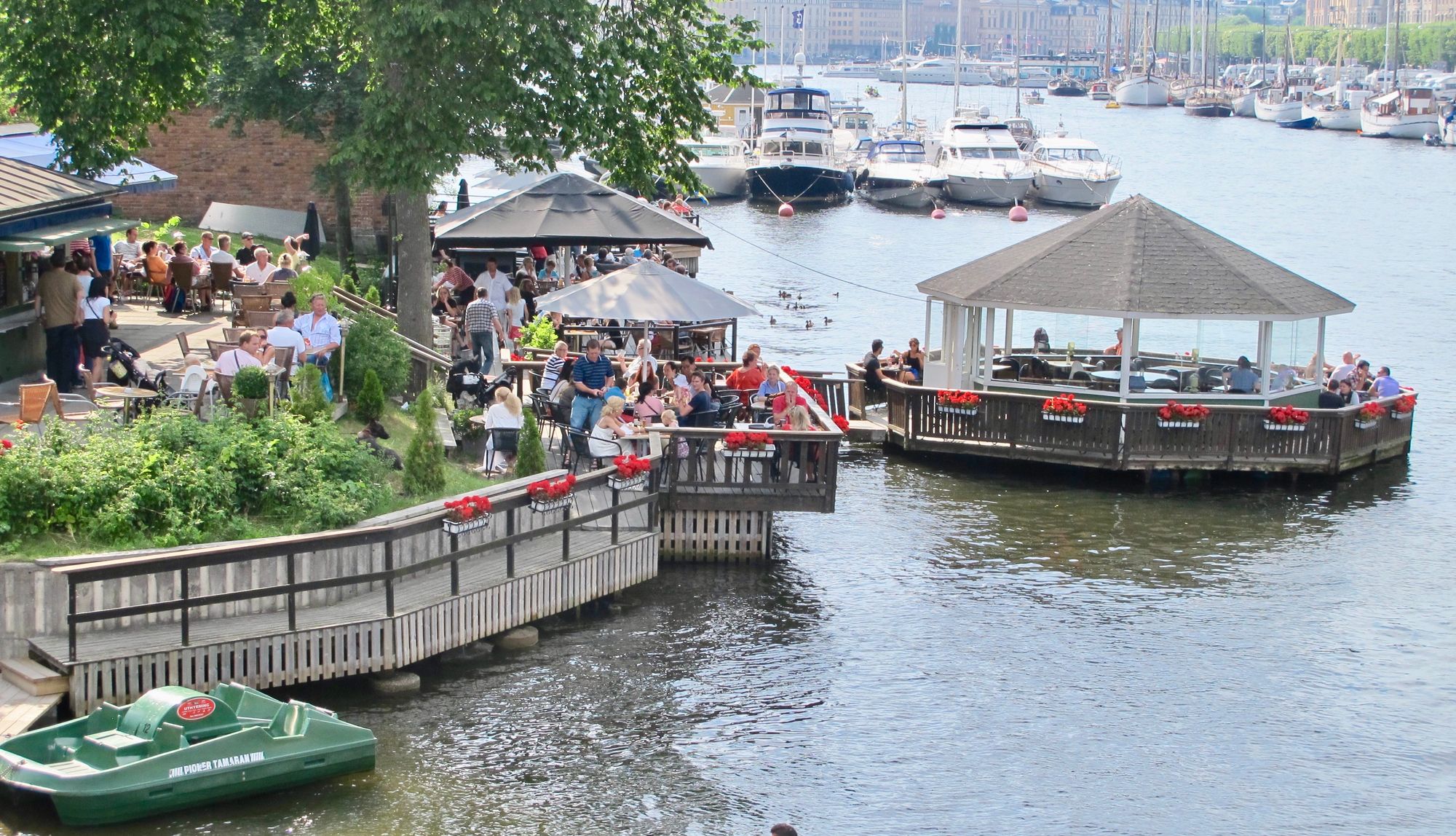
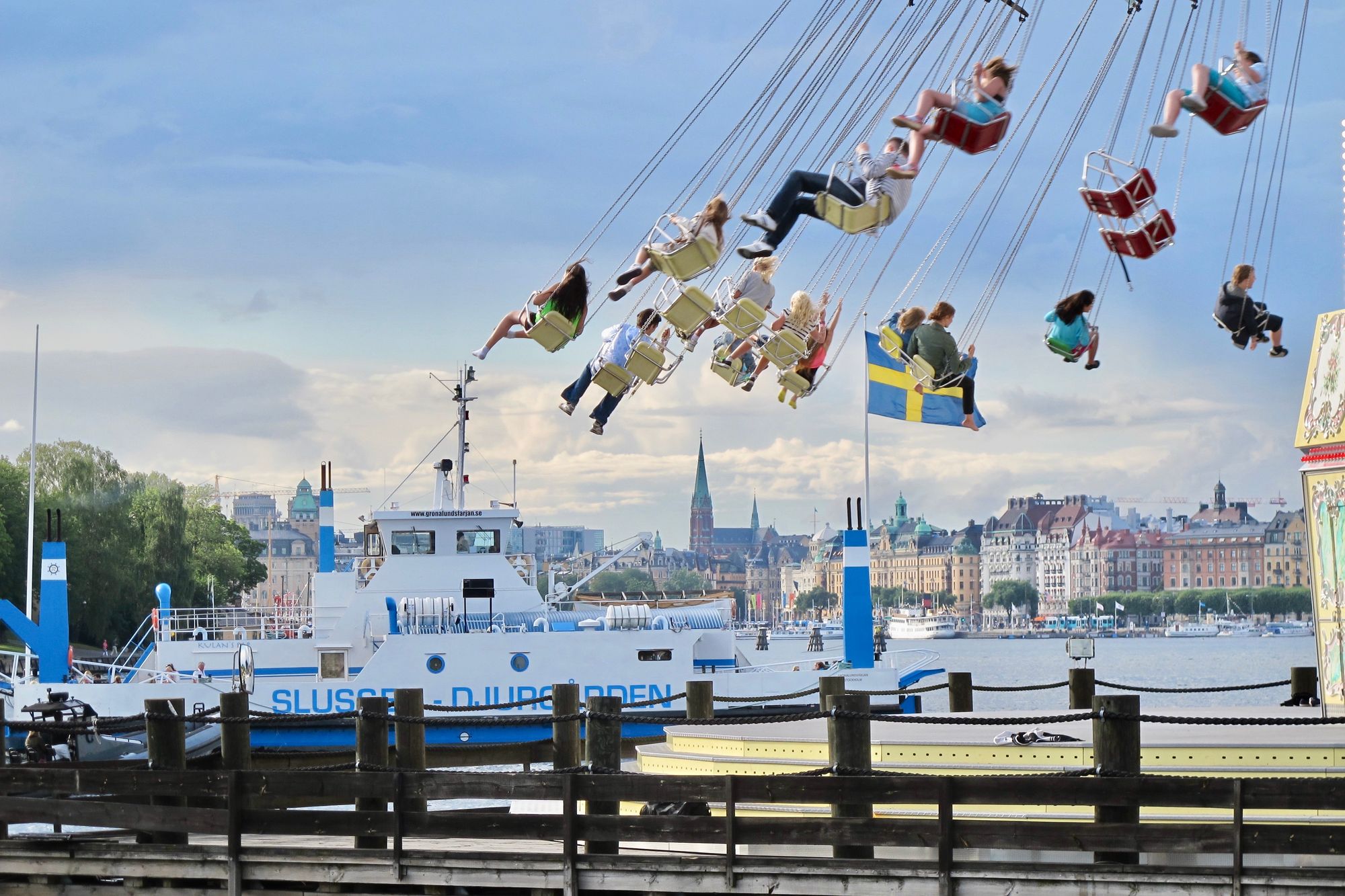
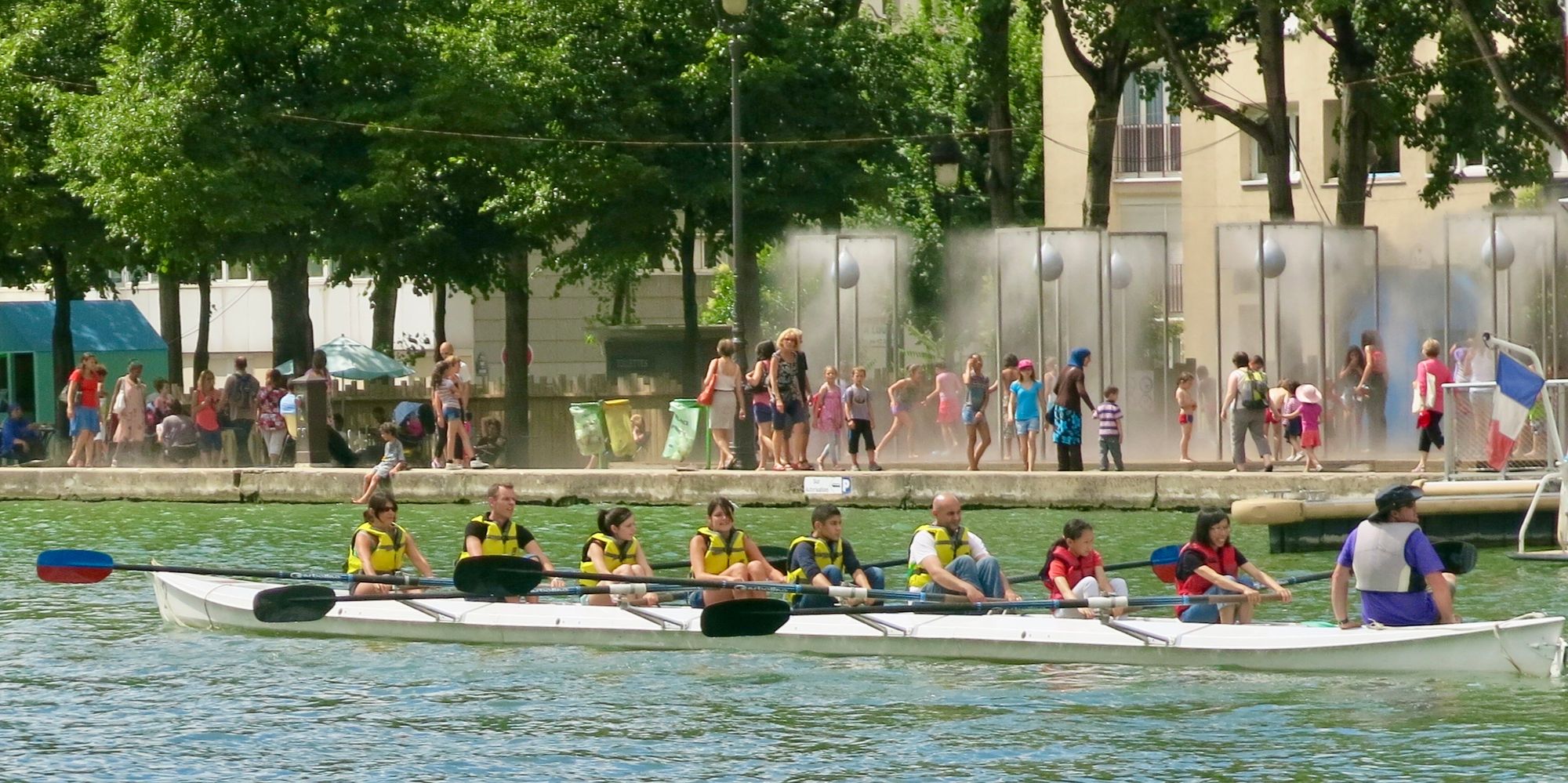

Boulevards
Boulevards usually include segments for cars either in the center or along the sides of the pedestrian pathway, but the important thing is that they also have very wide sidewalks to balance them out. These sidewalks are so spacious that the cars don't really affect the pedestrian experience.
Paris - Champs Élysées
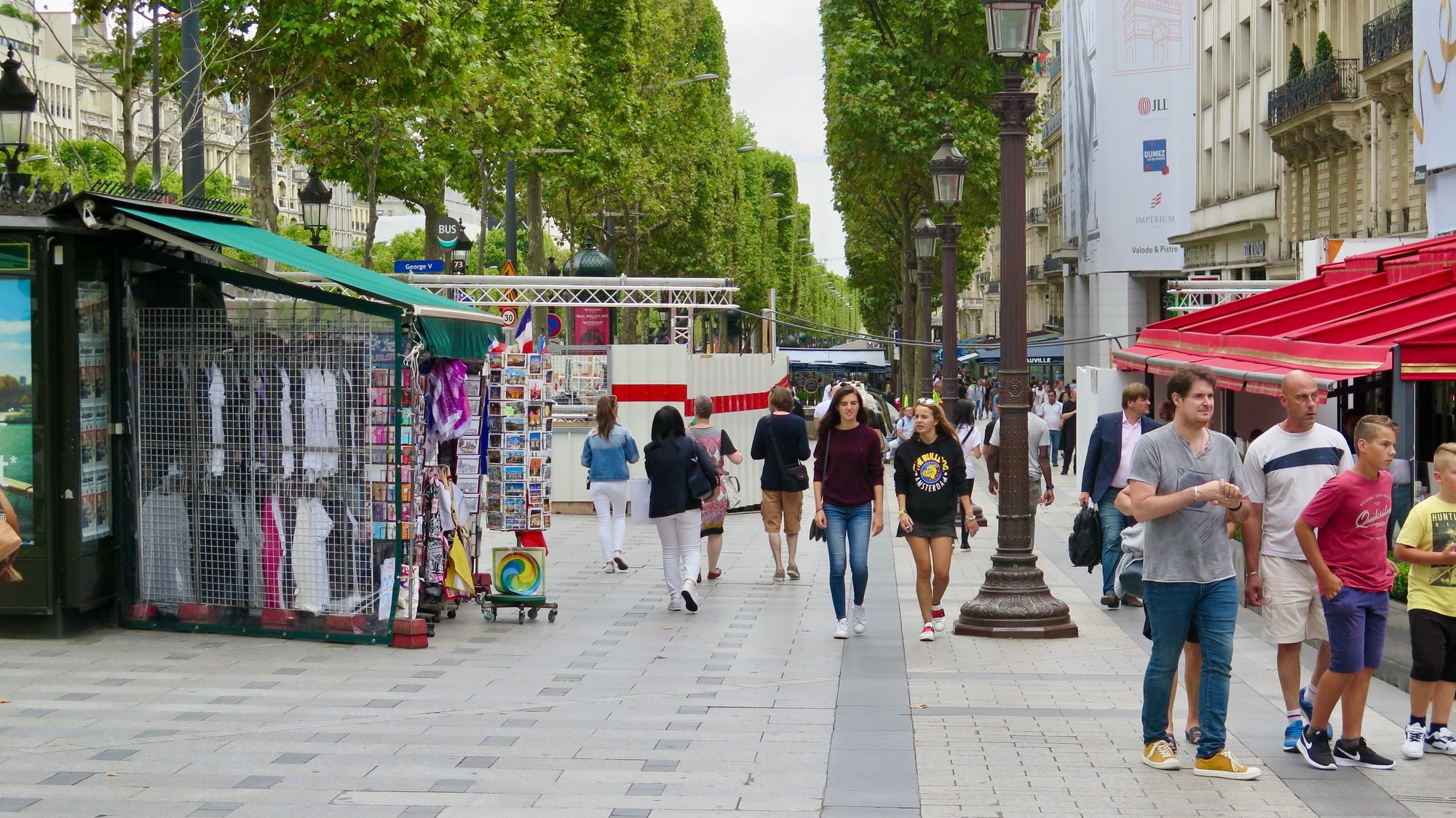
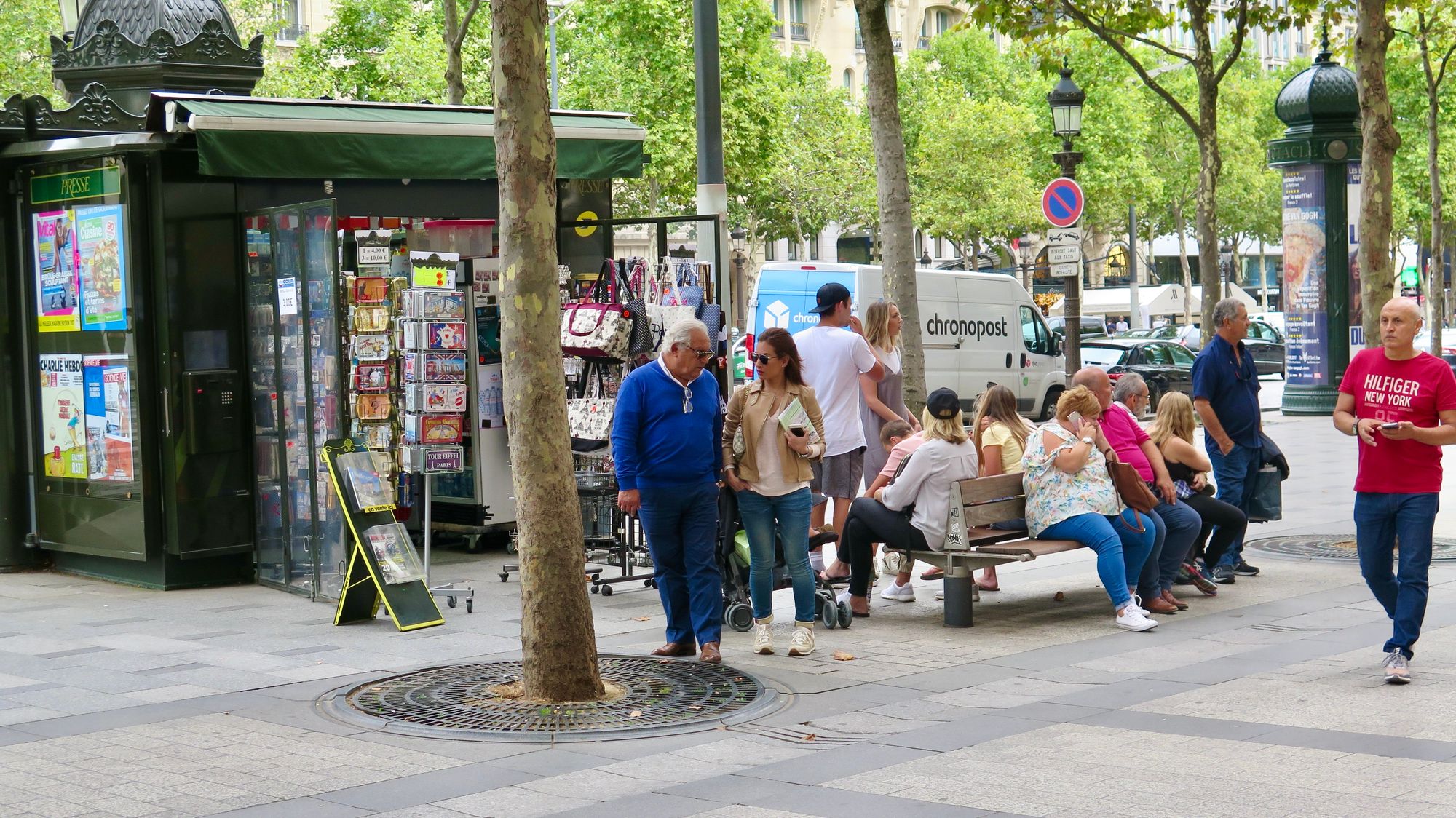
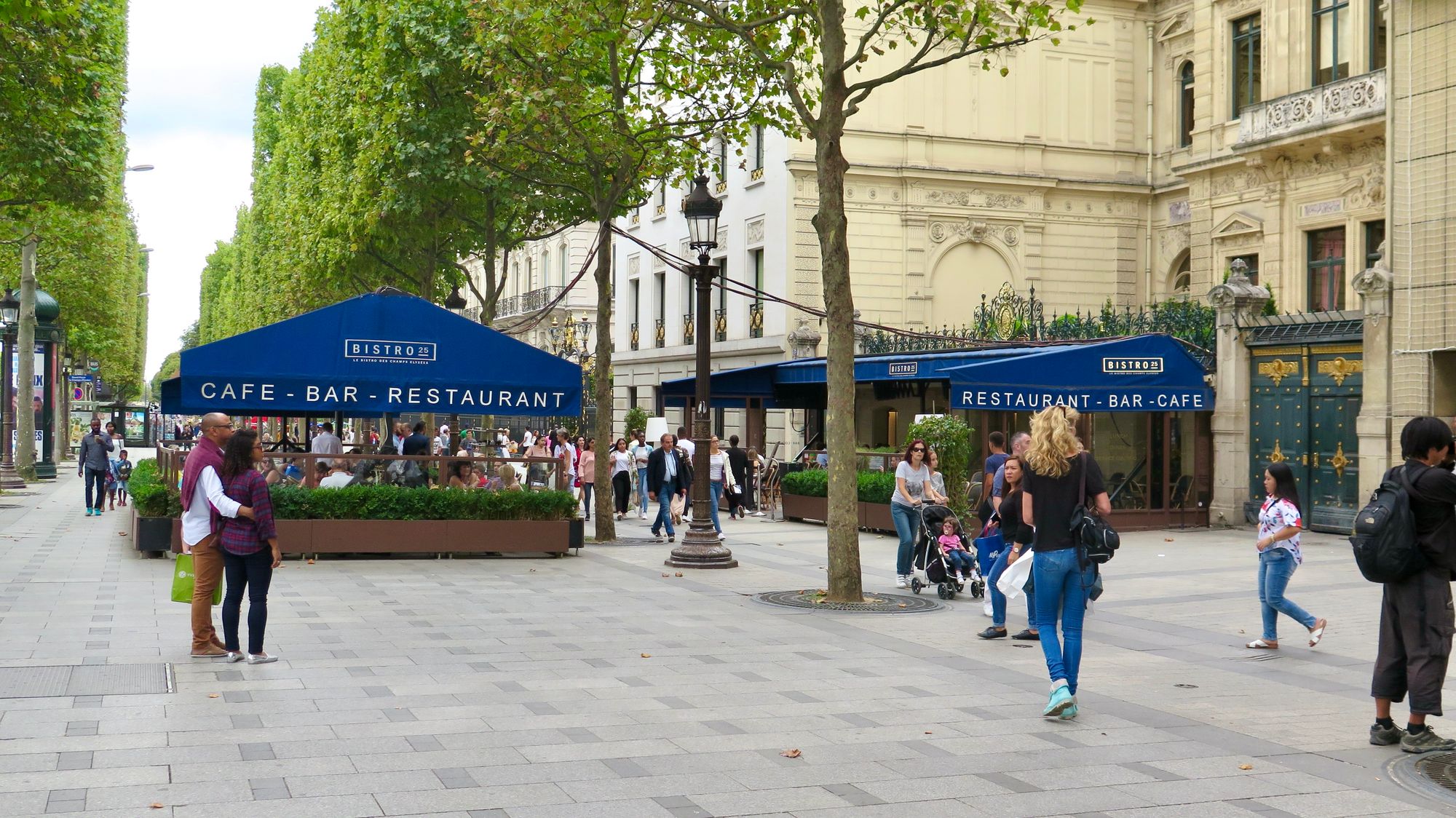
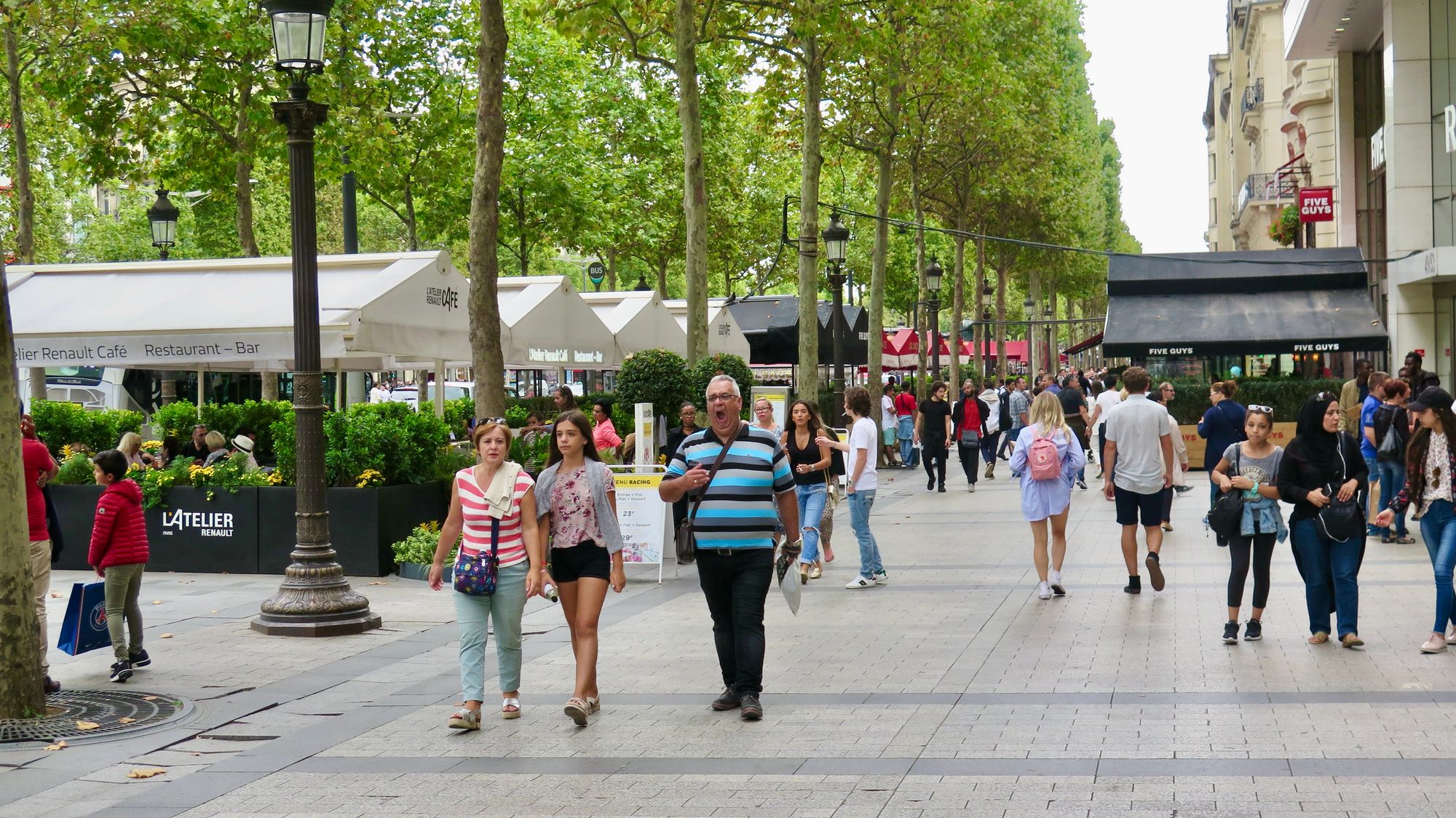
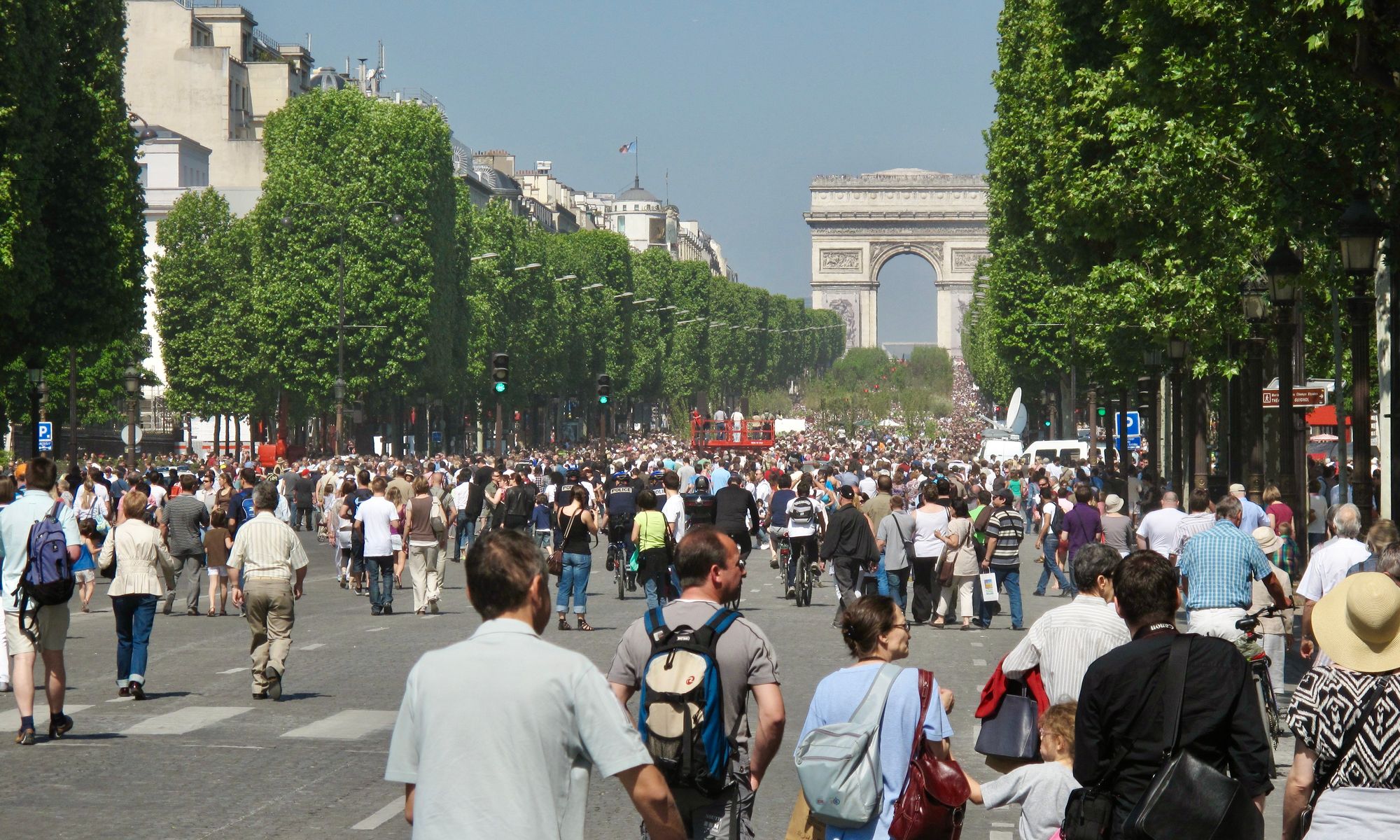
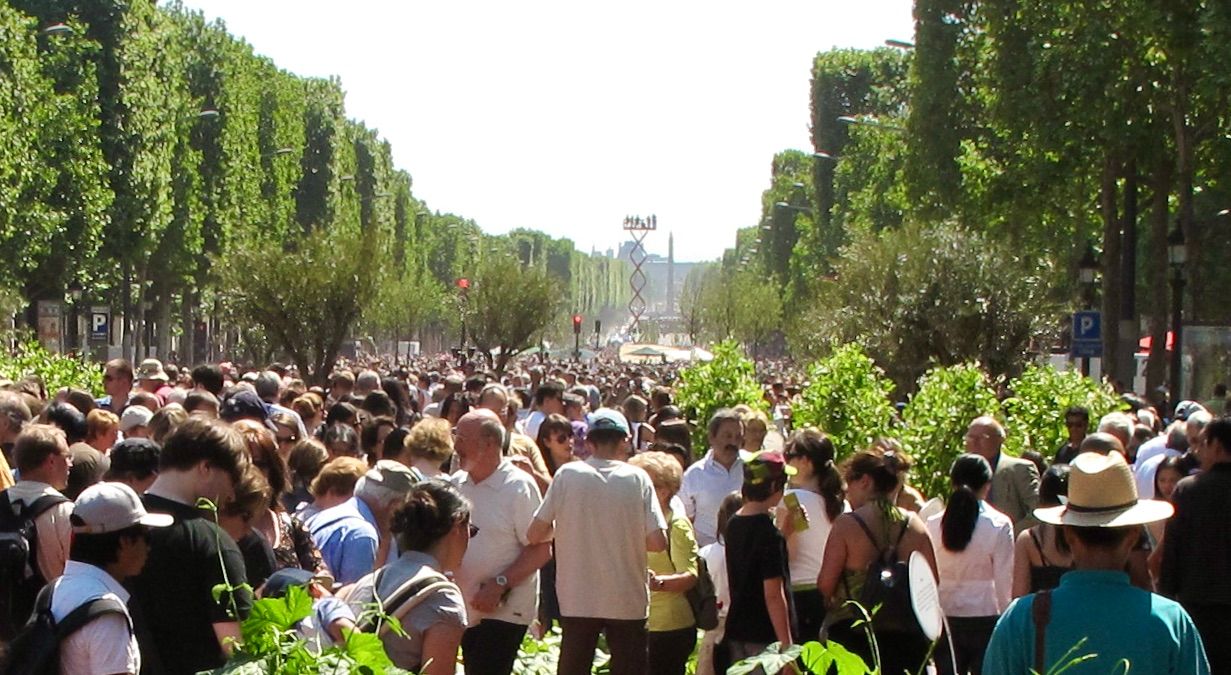
Barcelona
No city has a greater example of different types of beautiful streets than Barcelona. Both the narrow and wide streets in the central core, including the historic part of Barcelona, are exceptional. Even the large avenues are designed in such a way so that they feel intimate and engaging. No wonder this city is known for its social life and warm, friendly people – it is designed to get people to enjoy being out in public among each other and it supports social life in every way.
Passeig de Gracia
Barcelona's main street starts in the hills and goes all the way to the sea. No city has their main avenue travel through so many distinctly different neighborhoods easily fitting in to each in a way that adds to the larger experience.
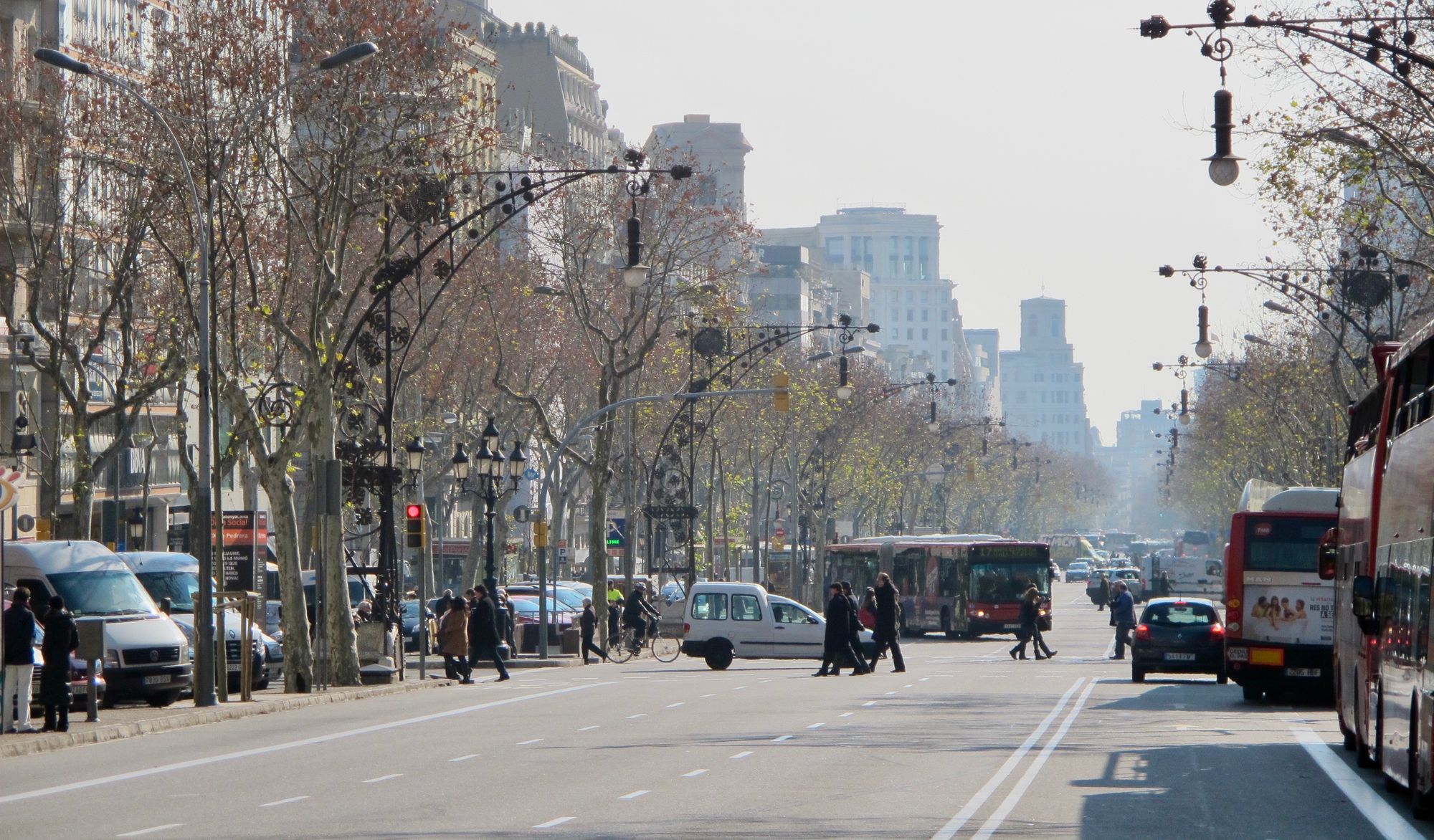
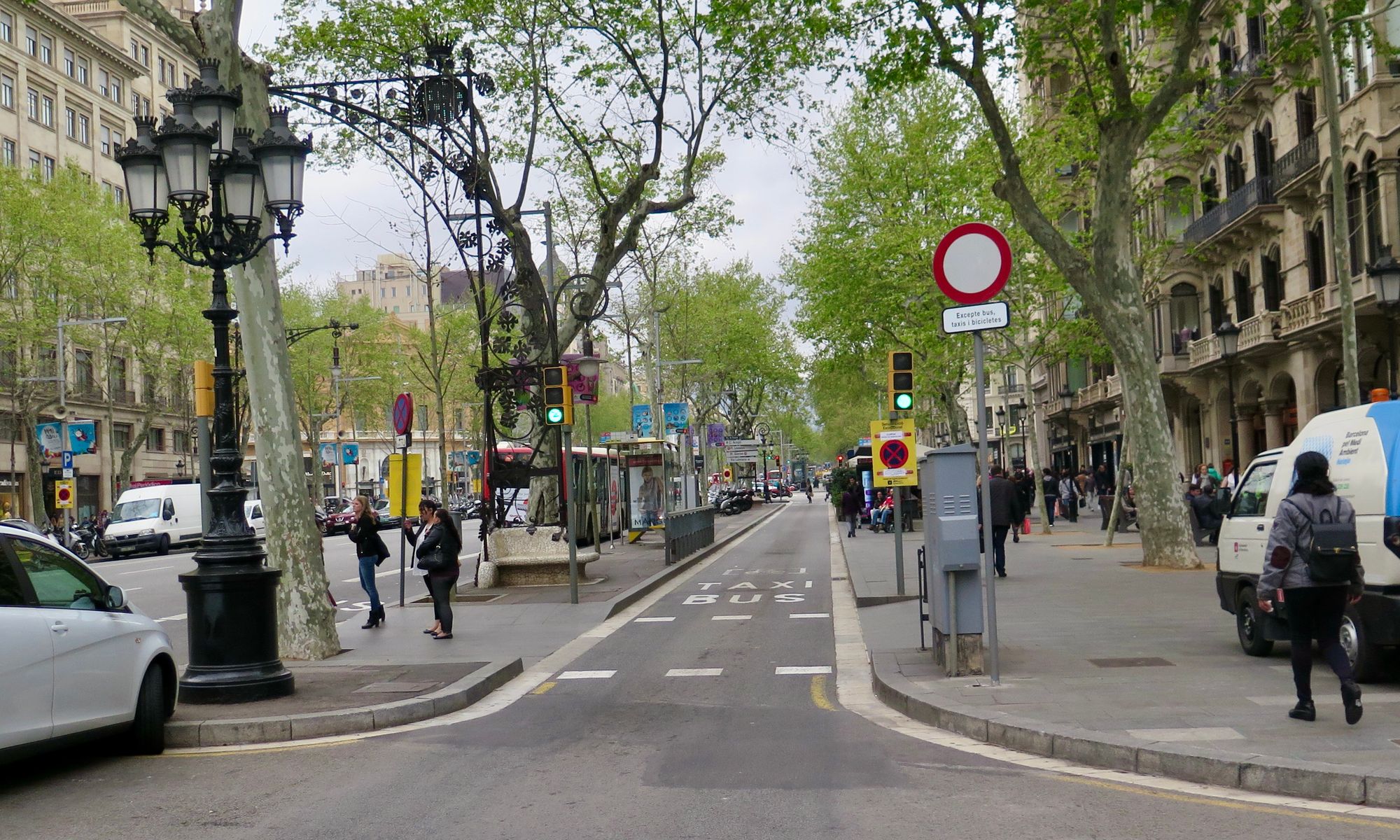
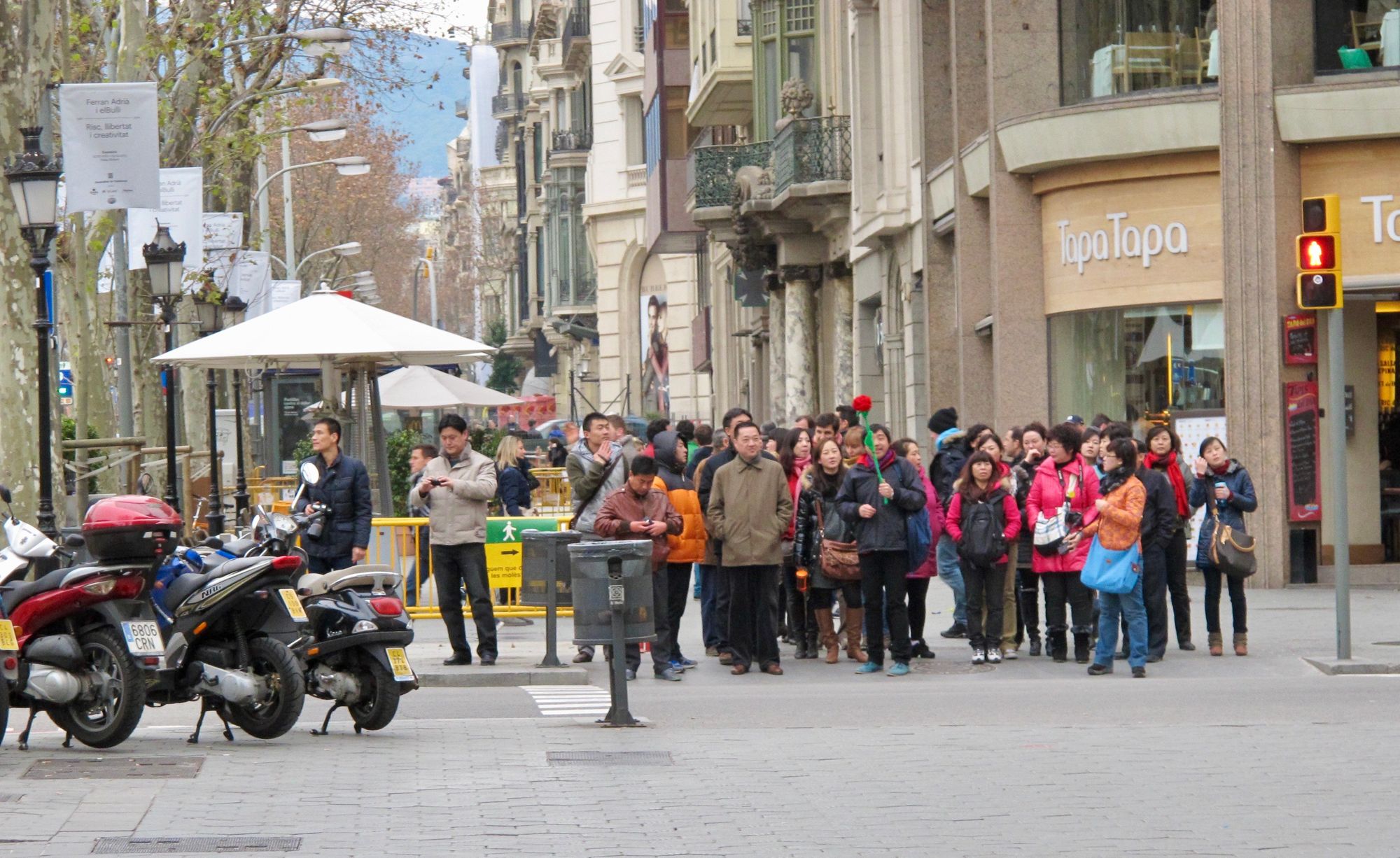
A key feature of great sidewalks is their width. The sidewalk here are 25 to 30 feet wide. A group of five people is very comfortable strolling together. This width balances the width of the street, communicating that pedestrians are just as, if not more, important than cars.
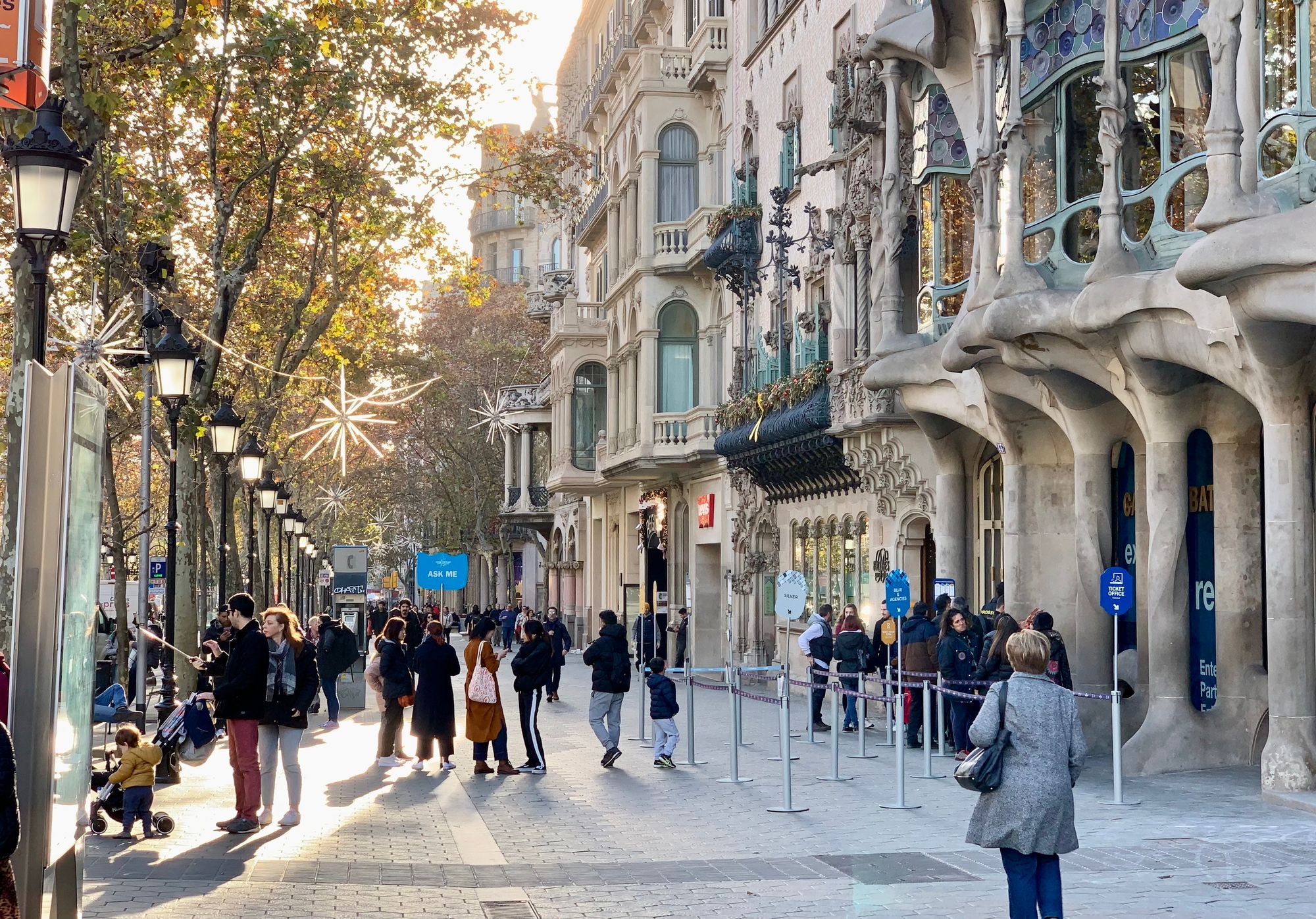
Double loading is an important part of creating a great sidewalk. Double loading means putting amenities on both sides of the walkway. One side is made up of the storefronts and ground floor windows, and the other side can feature things like outdoor seating, coffee and food trucks, newsstands, kiosks, street performers, etc.
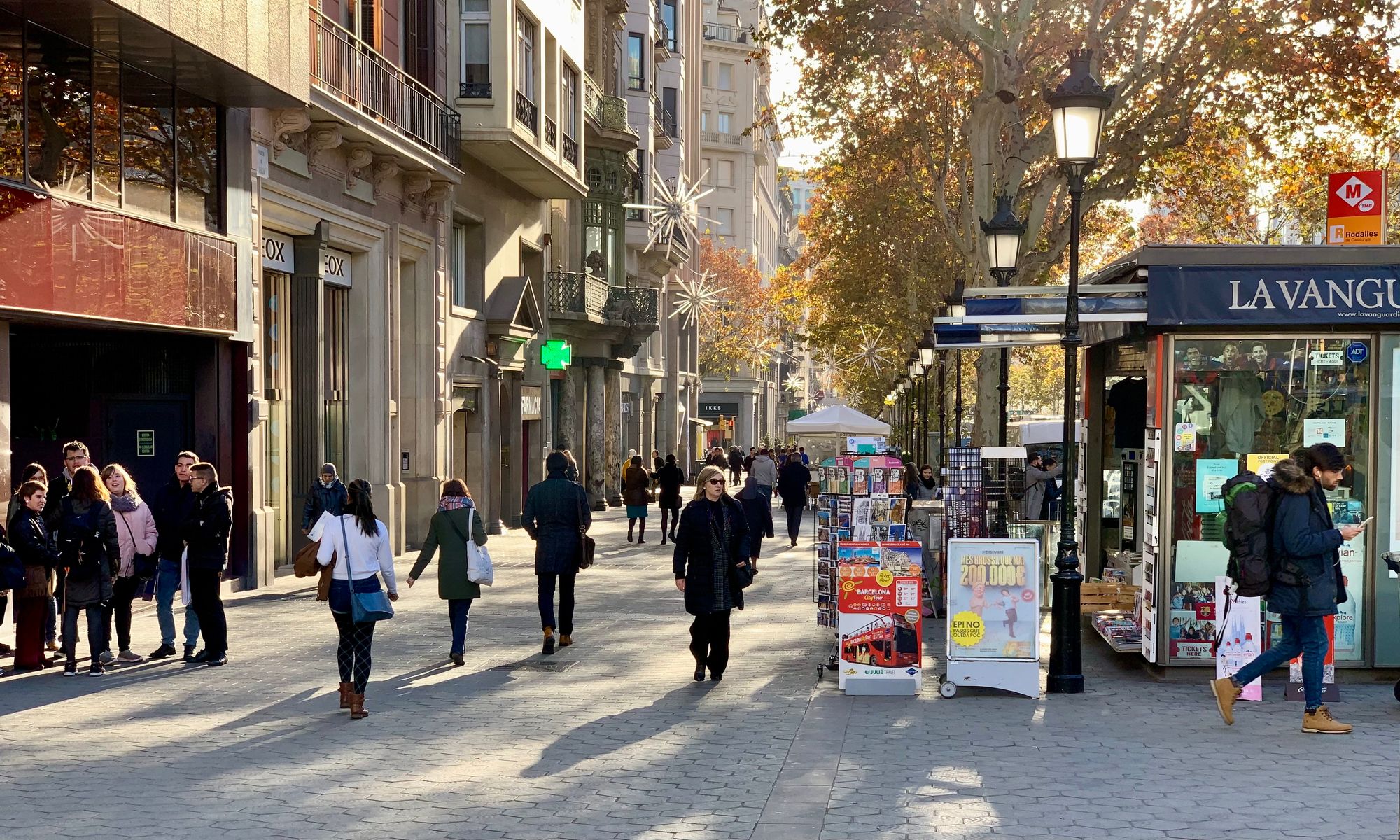
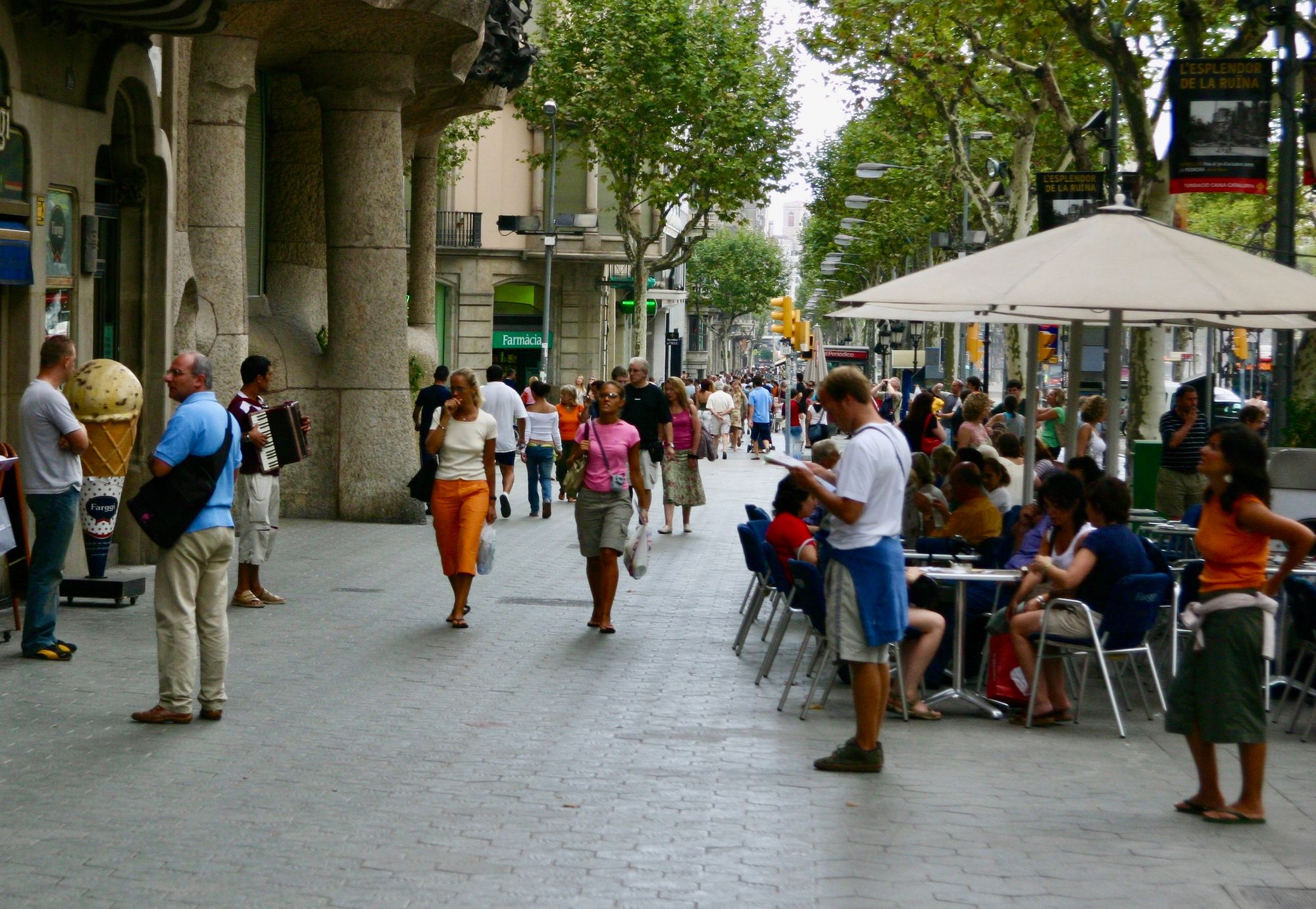
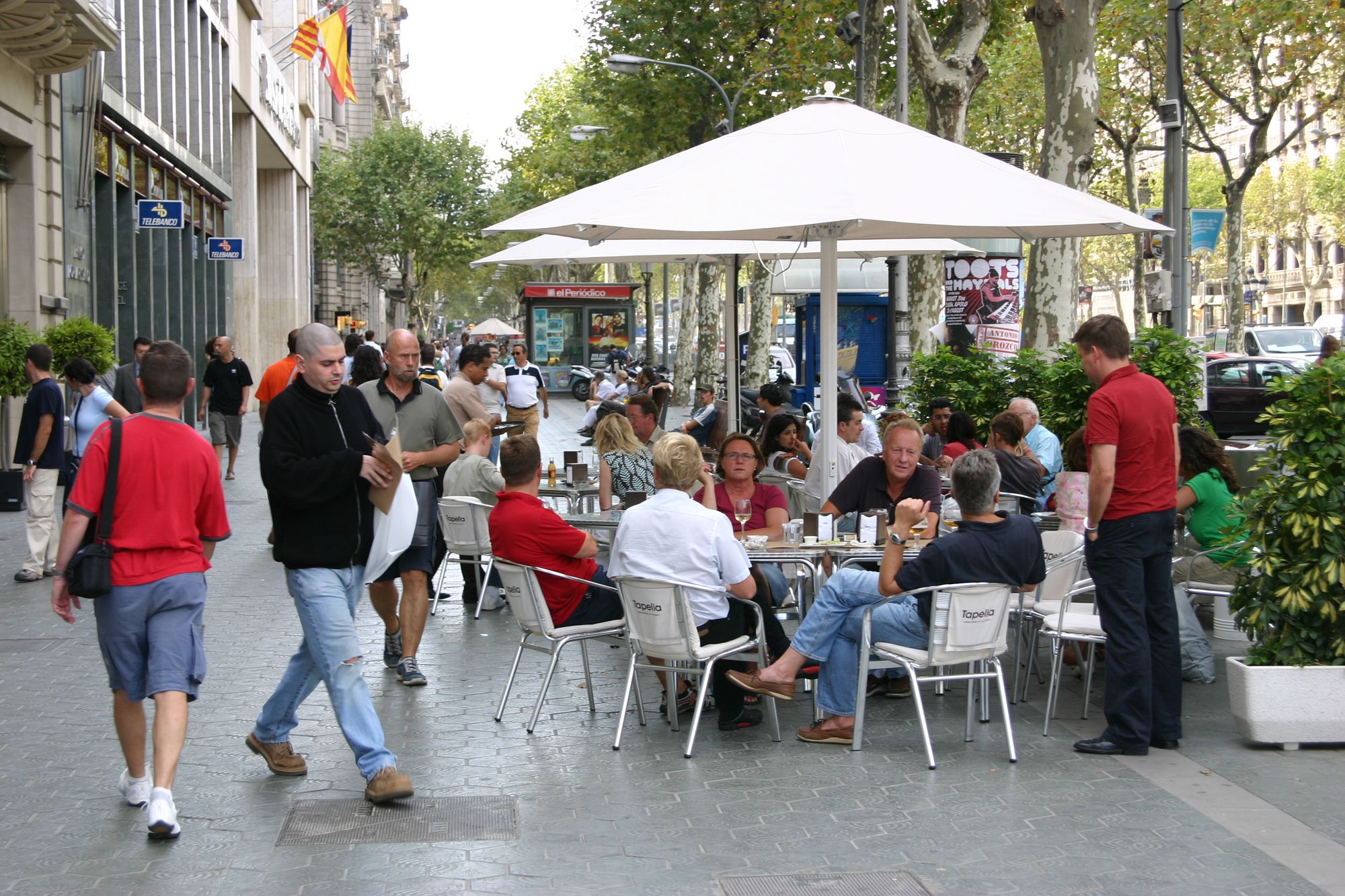
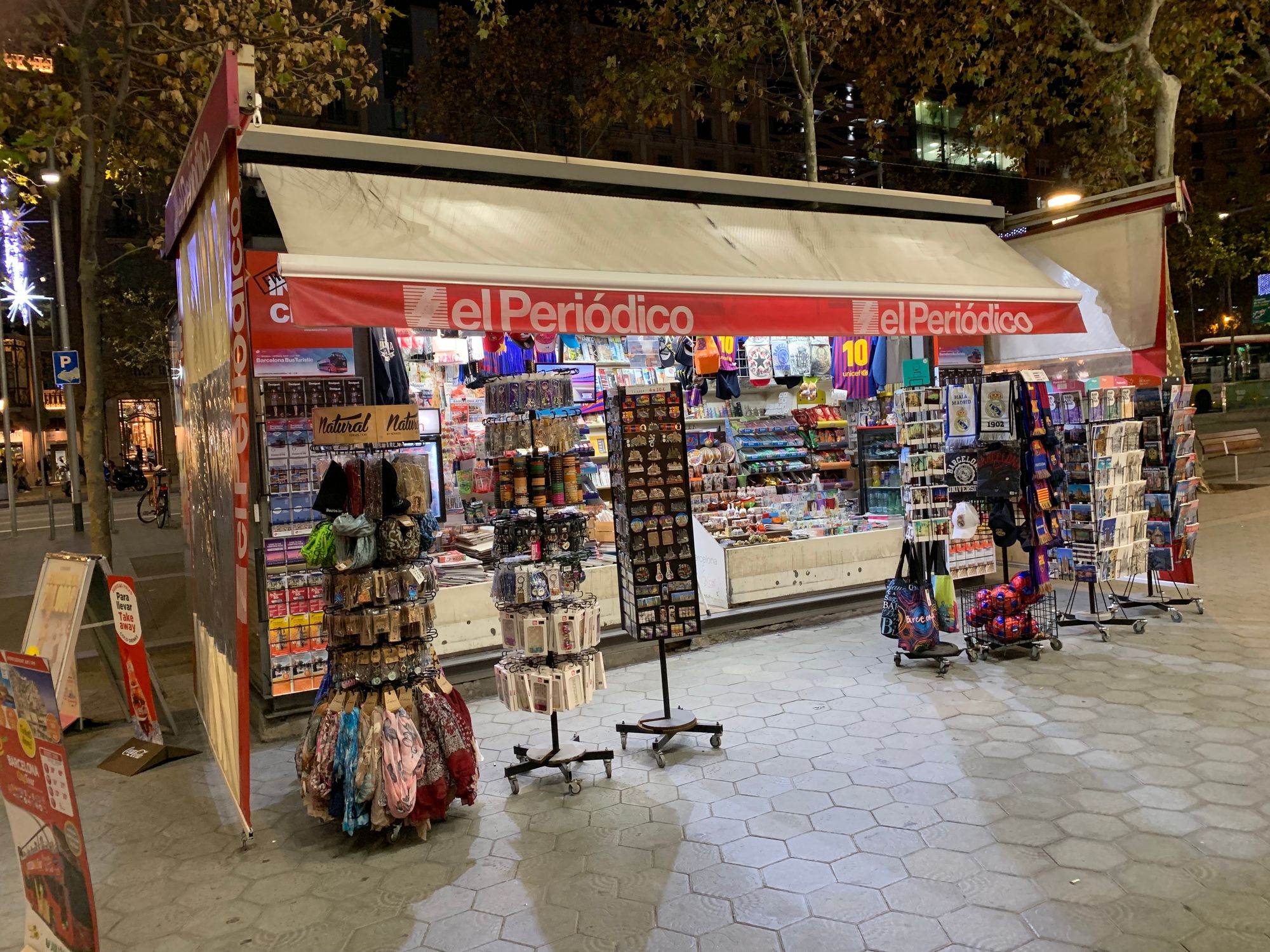
La Rambla
La Rambla, the extension of Passeig de Gracia, leads to the sea. It is one of the best pedestrian dominated streets anywhere.
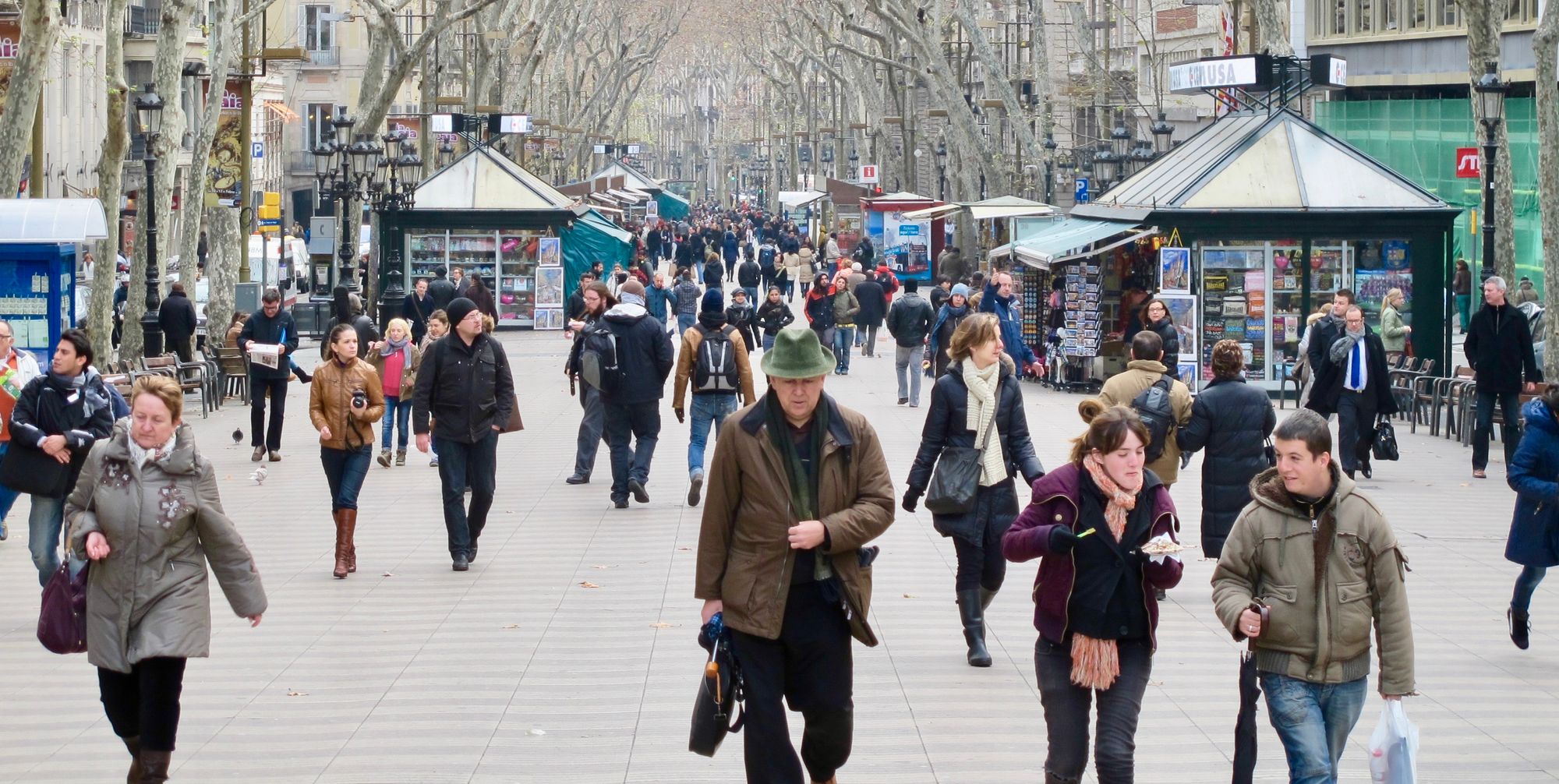
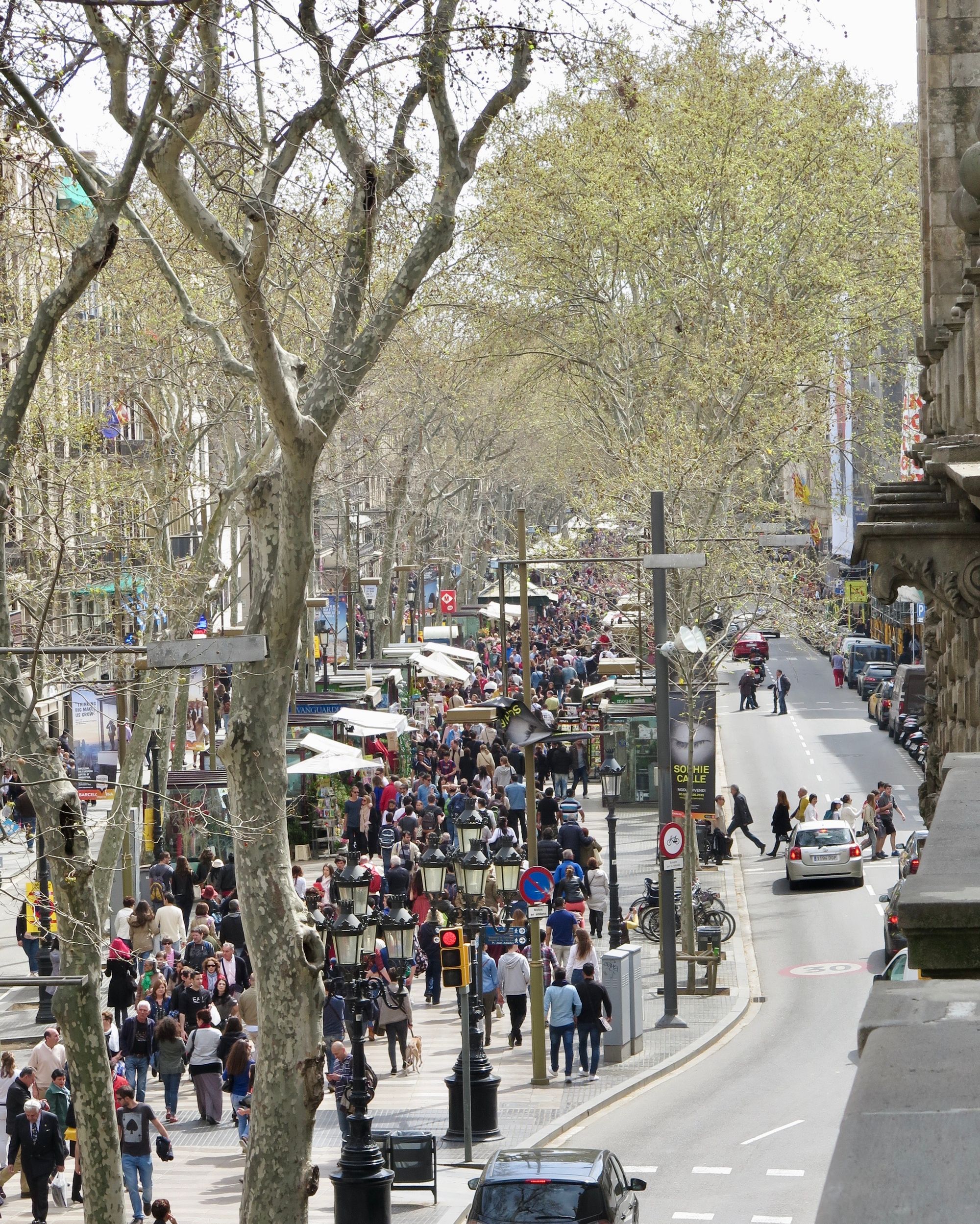
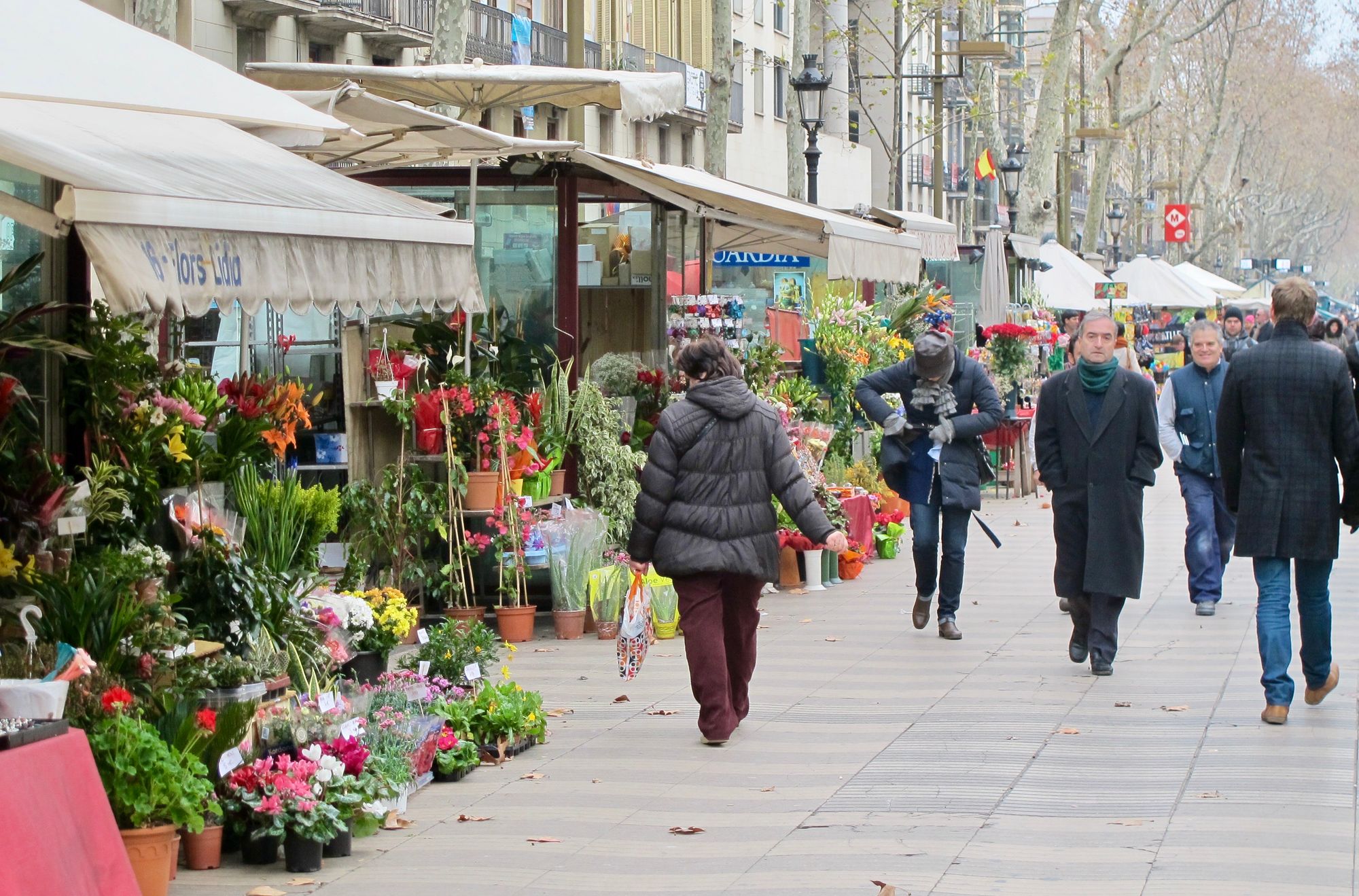
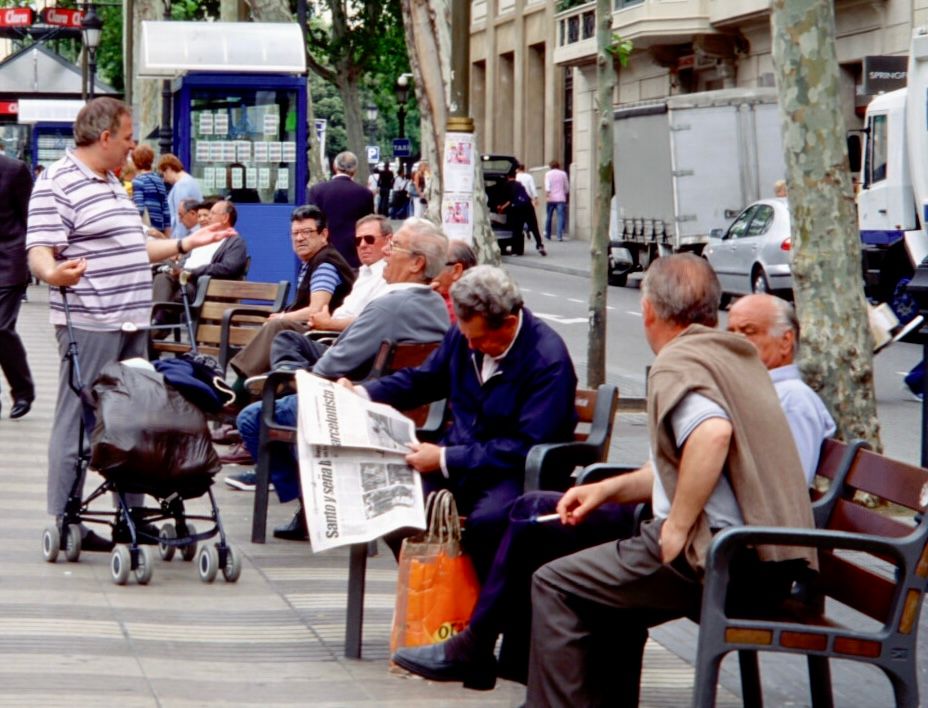
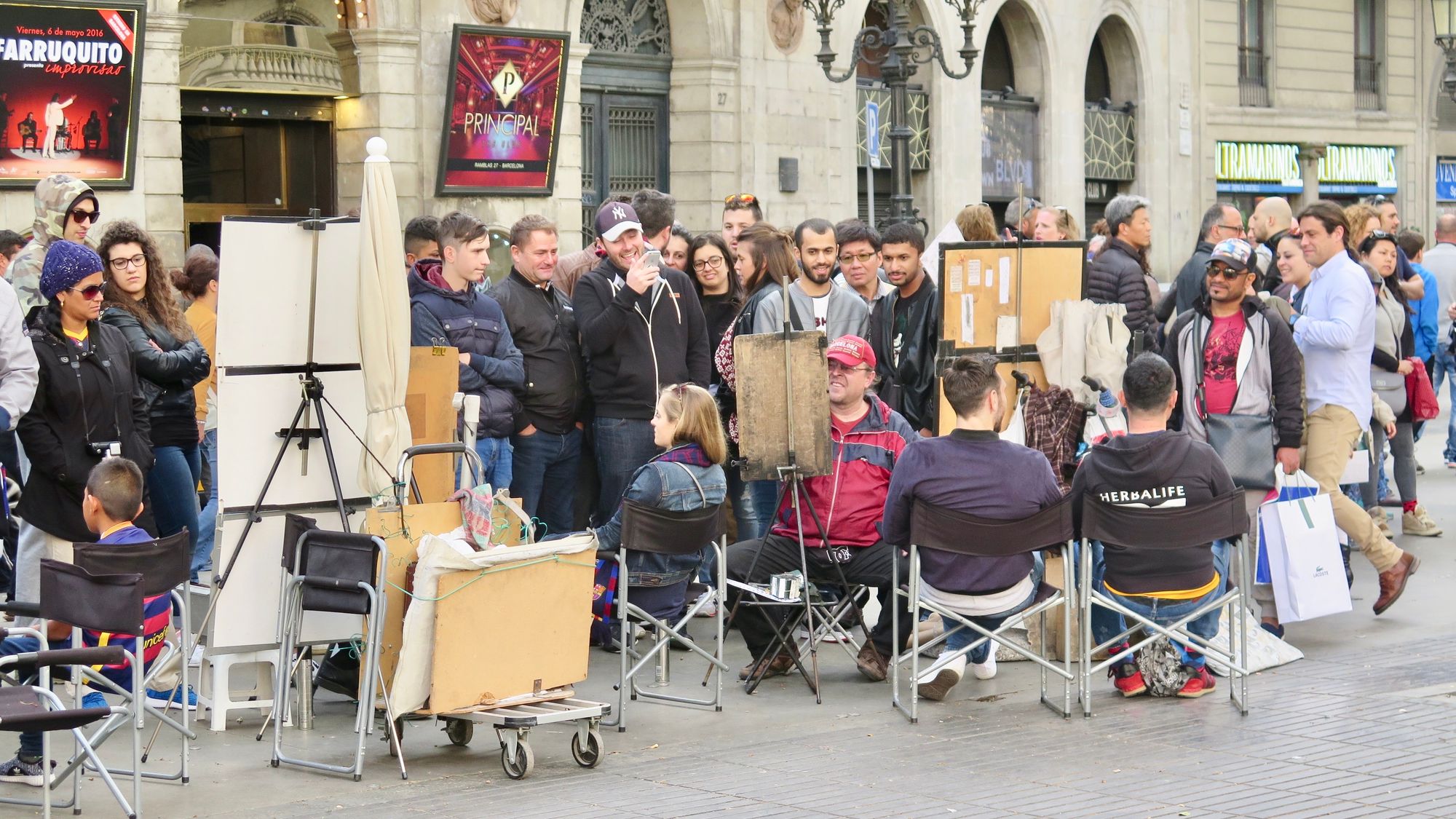
More on Barcelona:

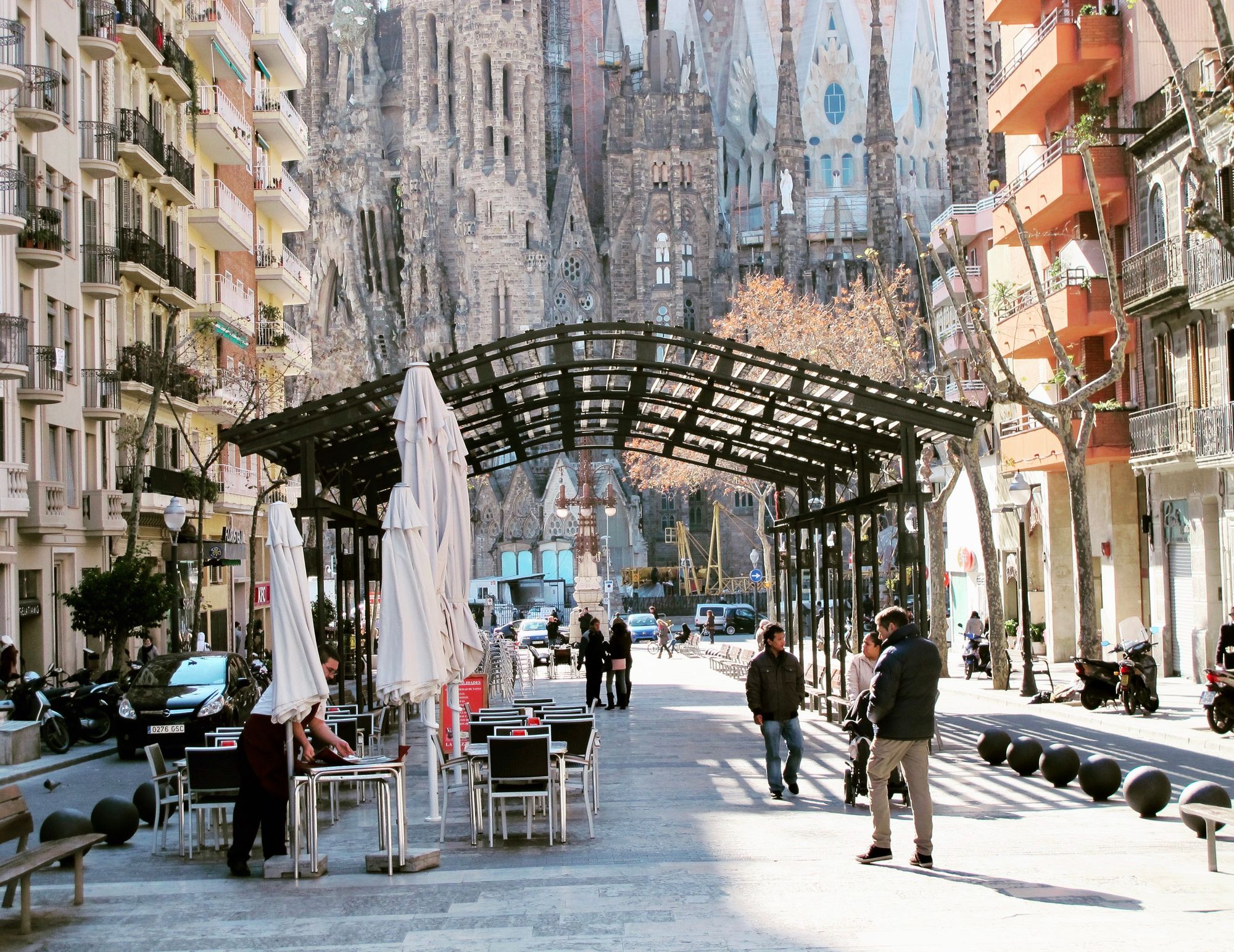
Narrow European-Style Streets
In Europe, because cities are compact and were designed long before the car, it is common to see narrow streets everywhere. Cars are often permitted to drive on them, but there is also thriving social and commercial life along their edges. Everything and everyone can co-exist calmly side-by-side like this because the car lane area is so narrow. This forces drivers to drive very slowly, which makes people feel comfortable being around them. The presence of bollards everywhere also helps.
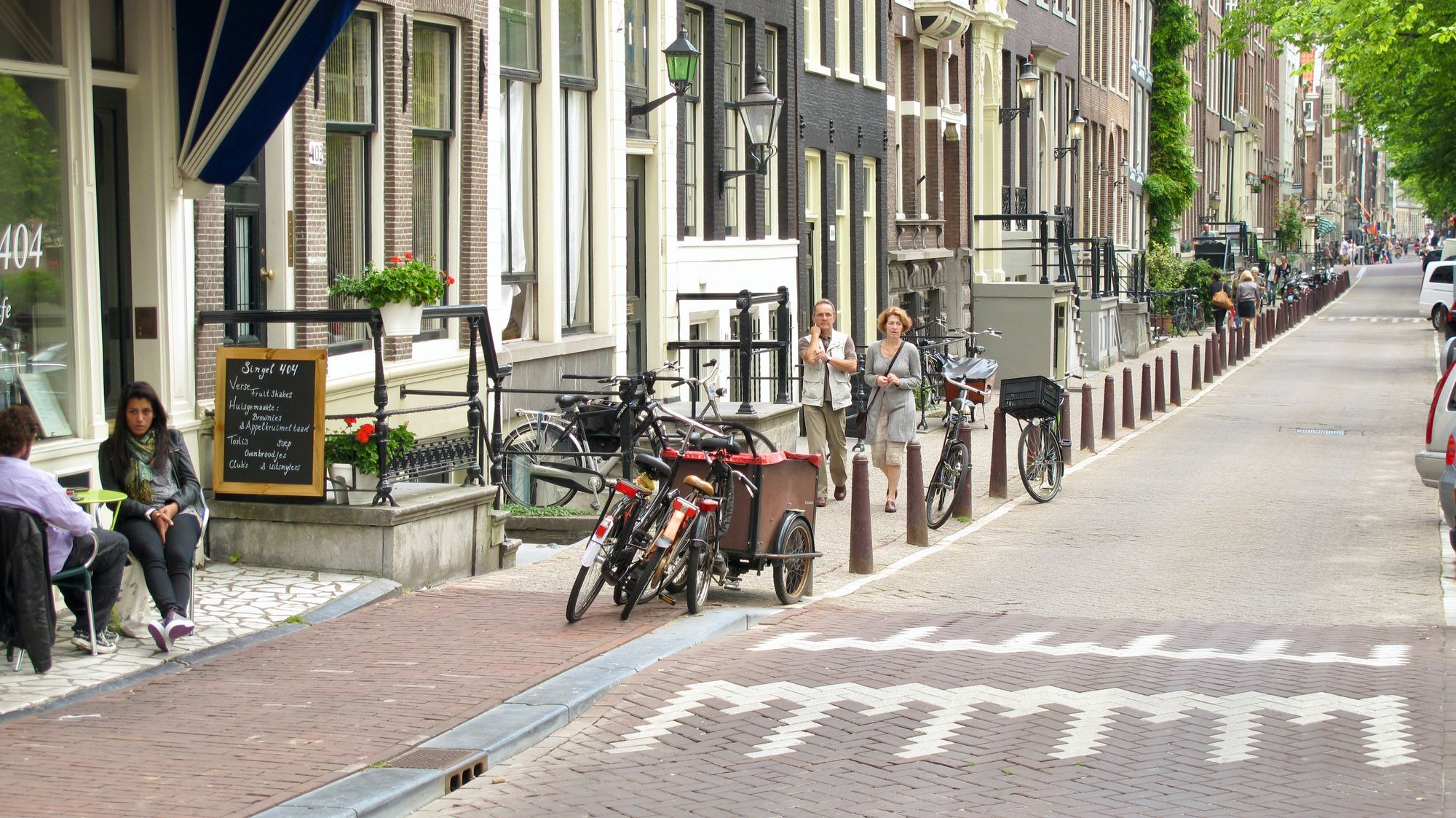
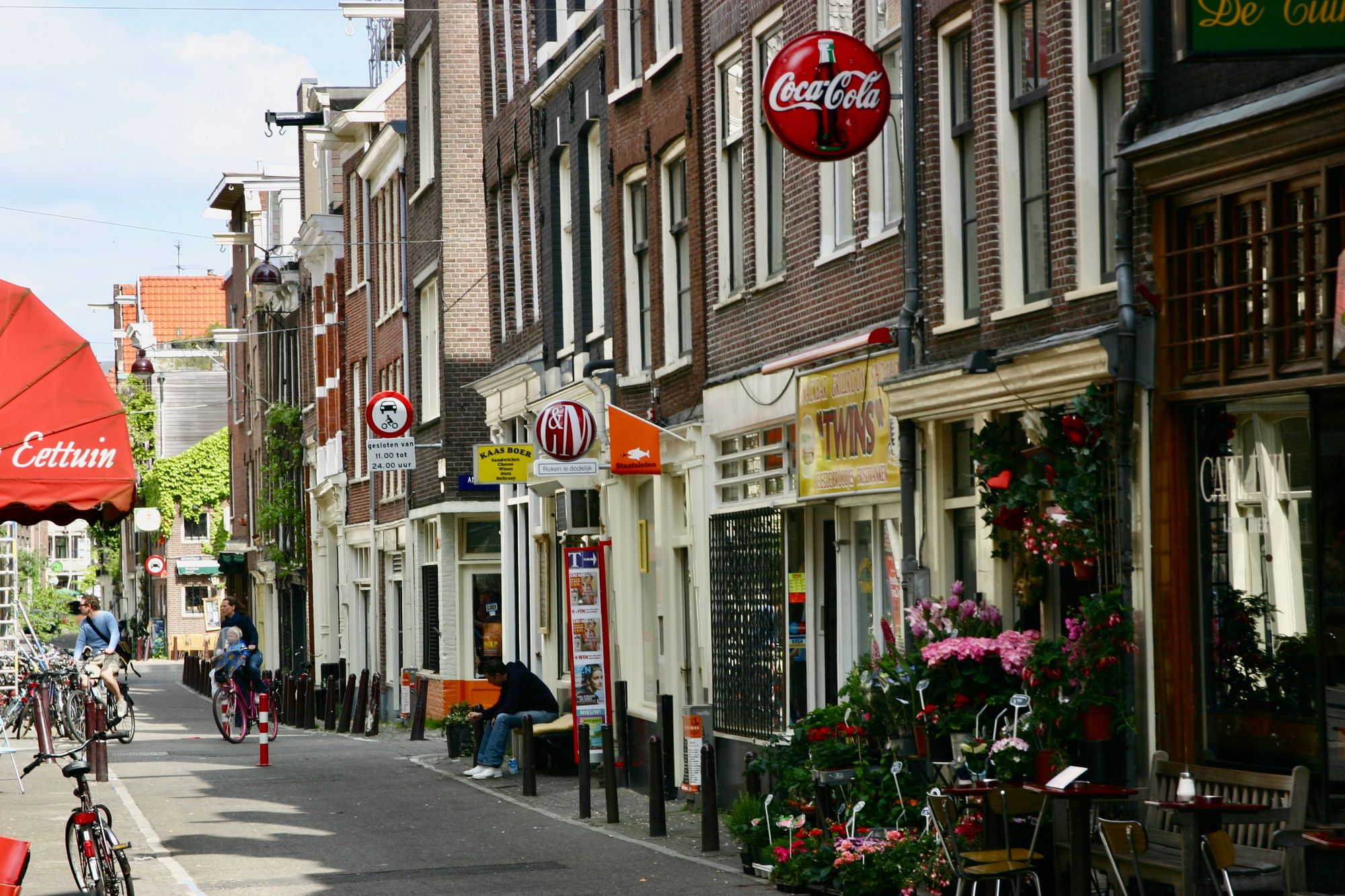
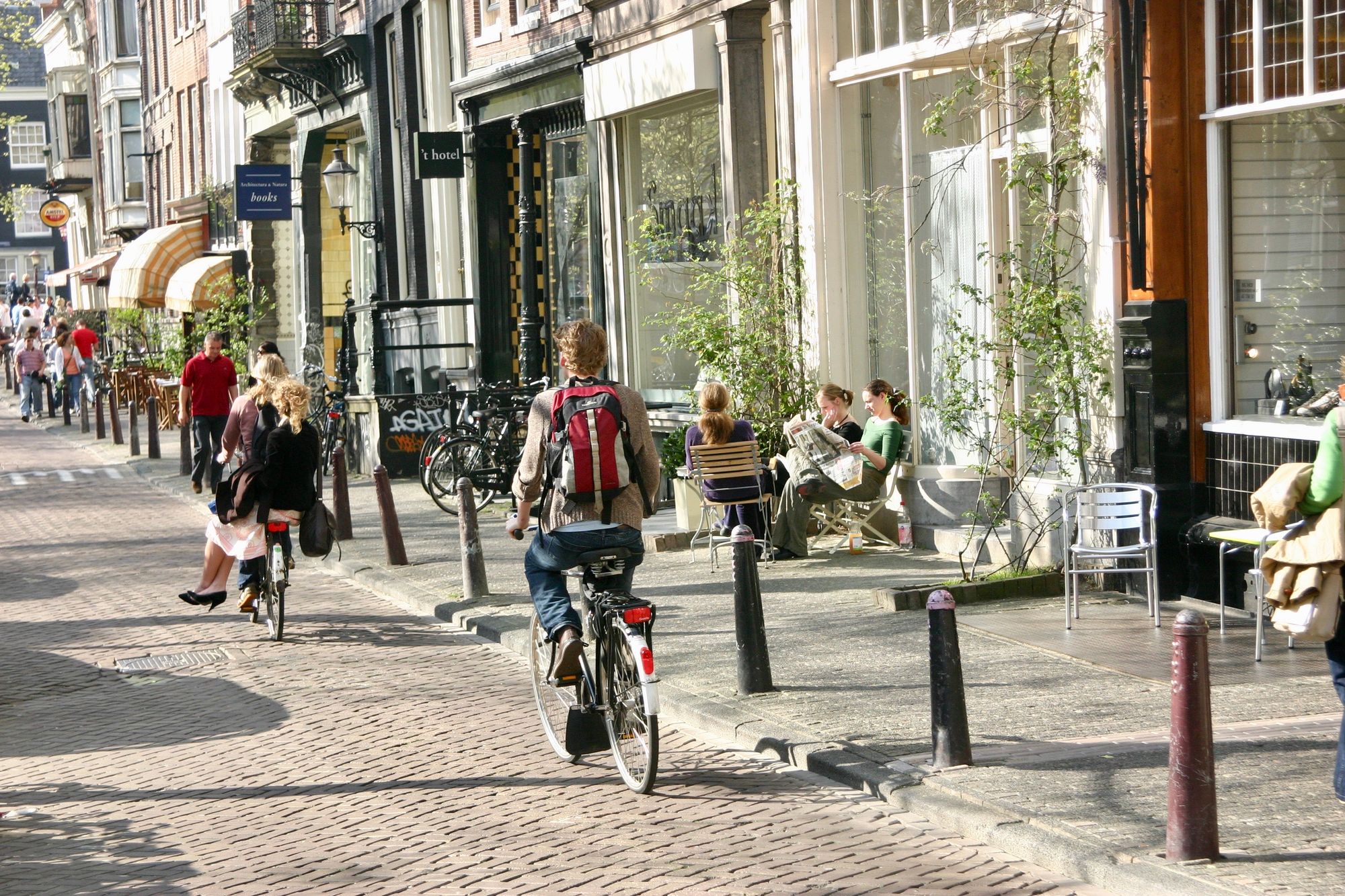
Amsterdam and Paris
Paris has many neighborhood streets full of streets that people can spend a lot of time in. Everything is on display, much of it spilling onto the sidewalk, and the experience of shopping is a joy.
Rue Montorgueil
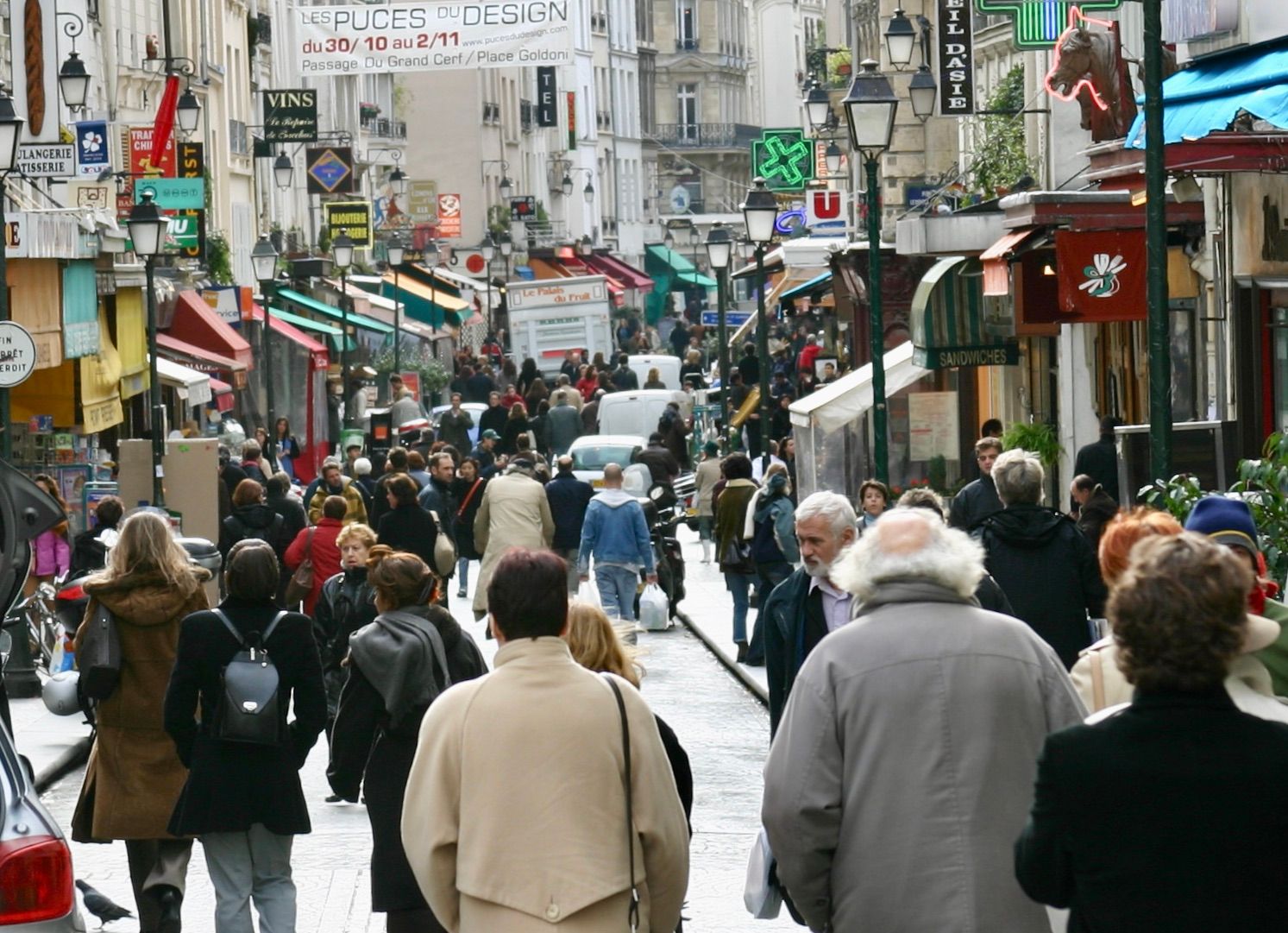
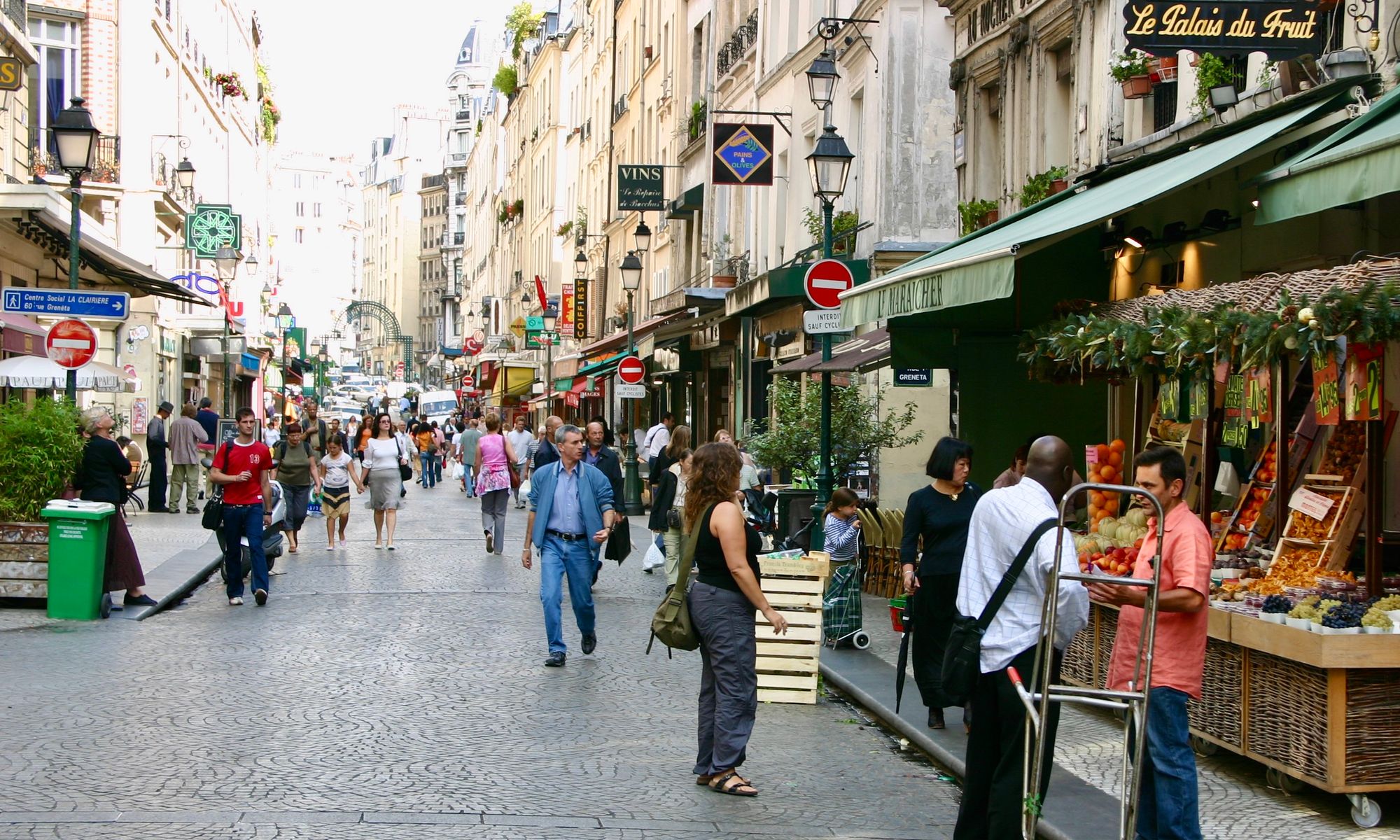
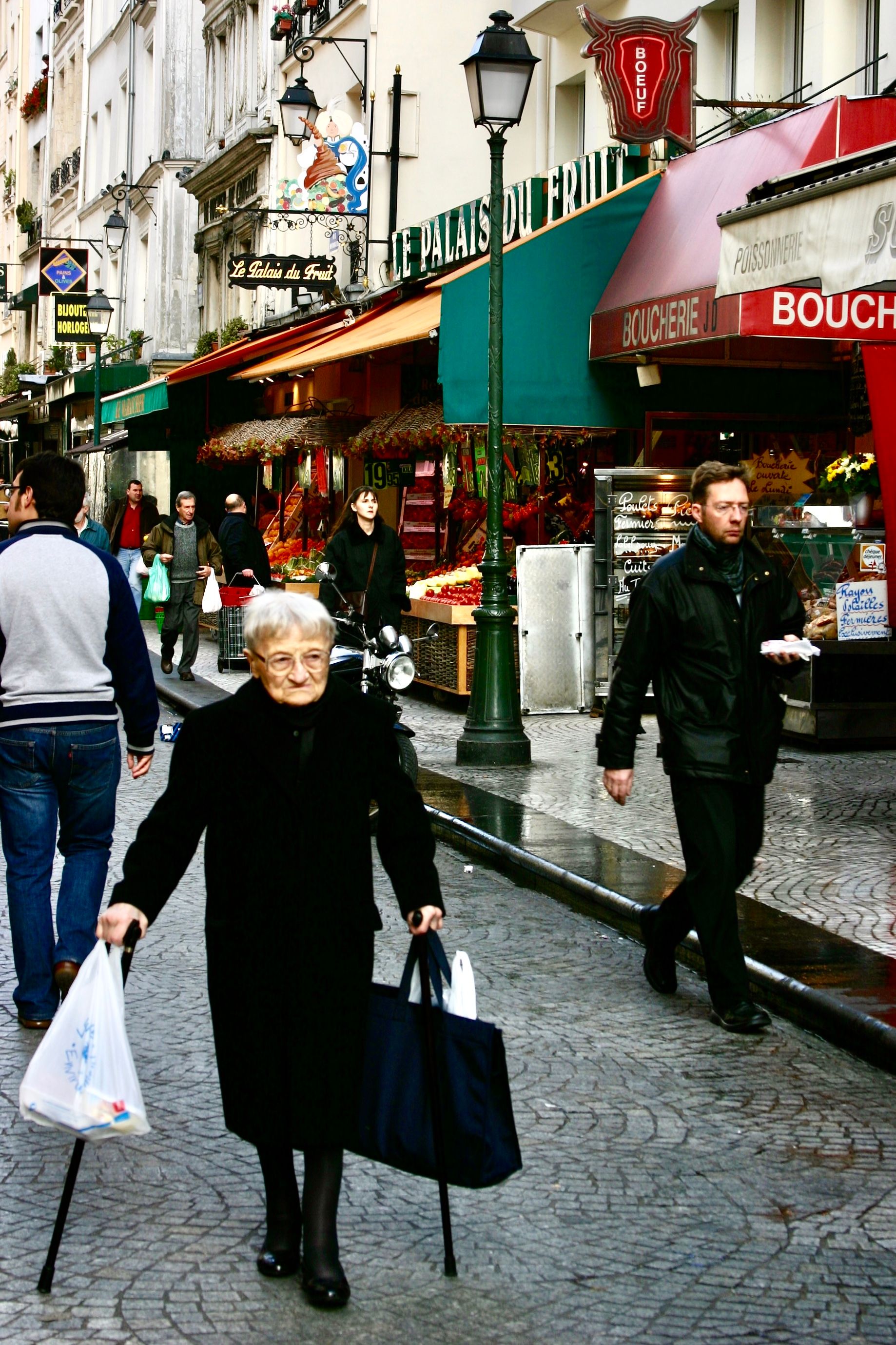
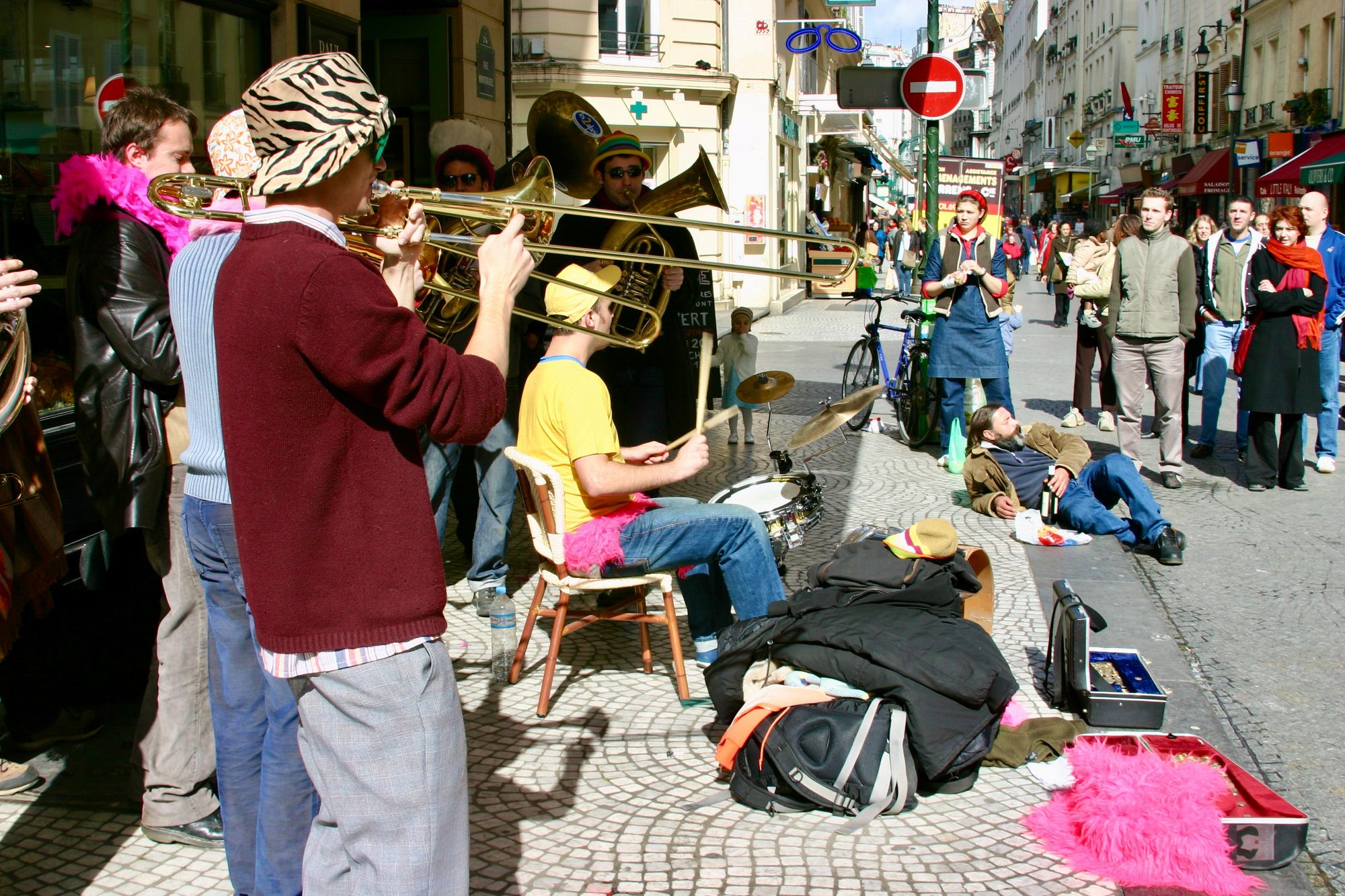
Rue Mouffetard
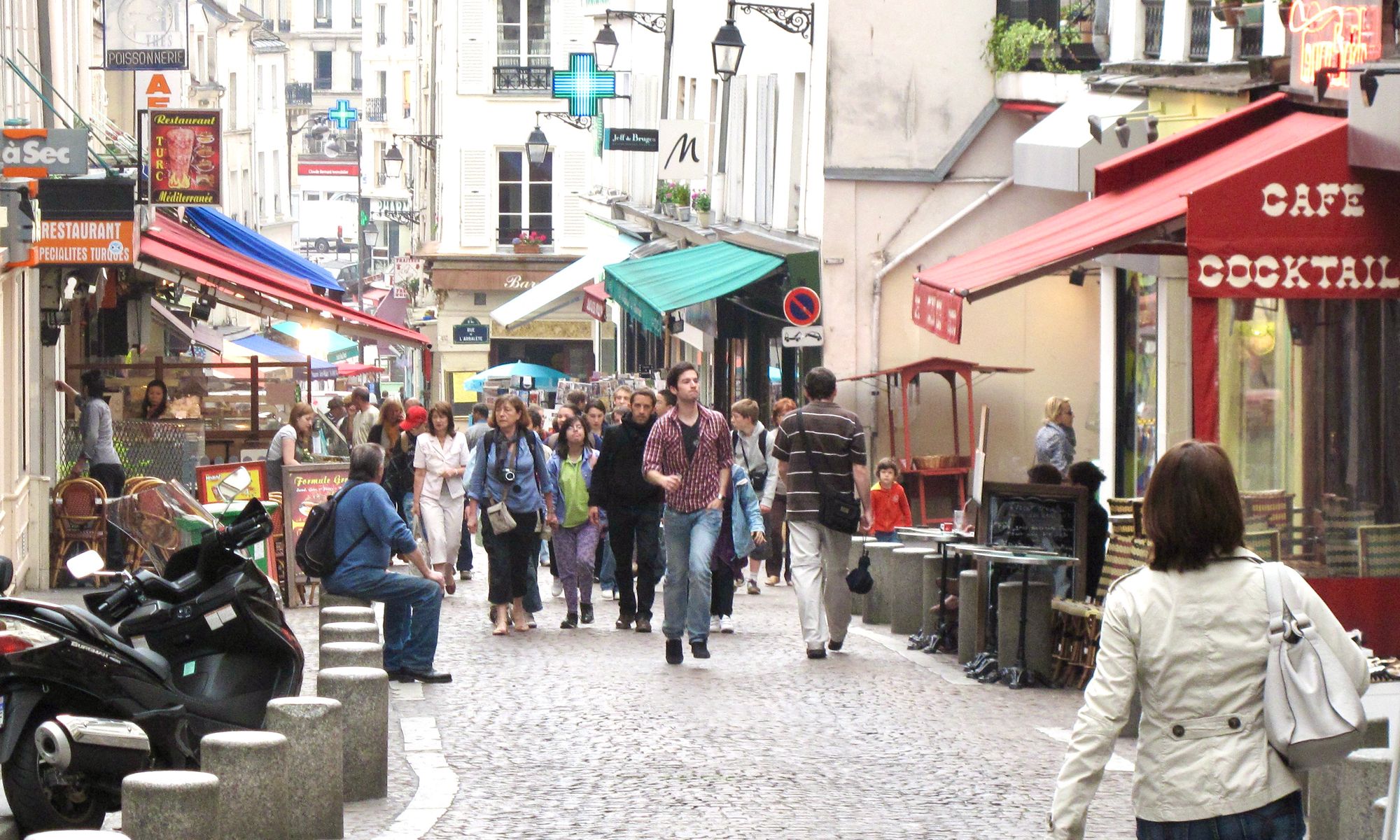
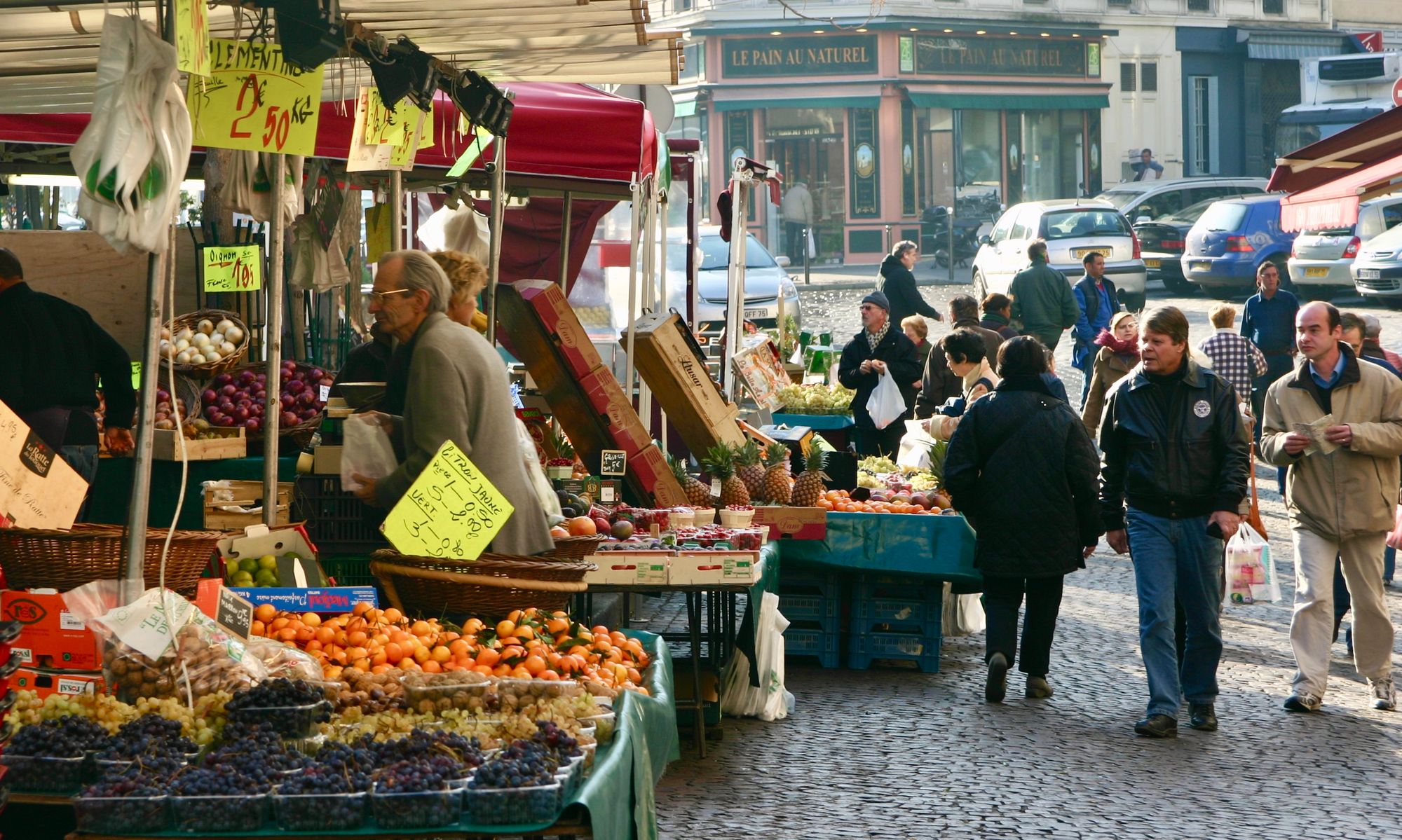
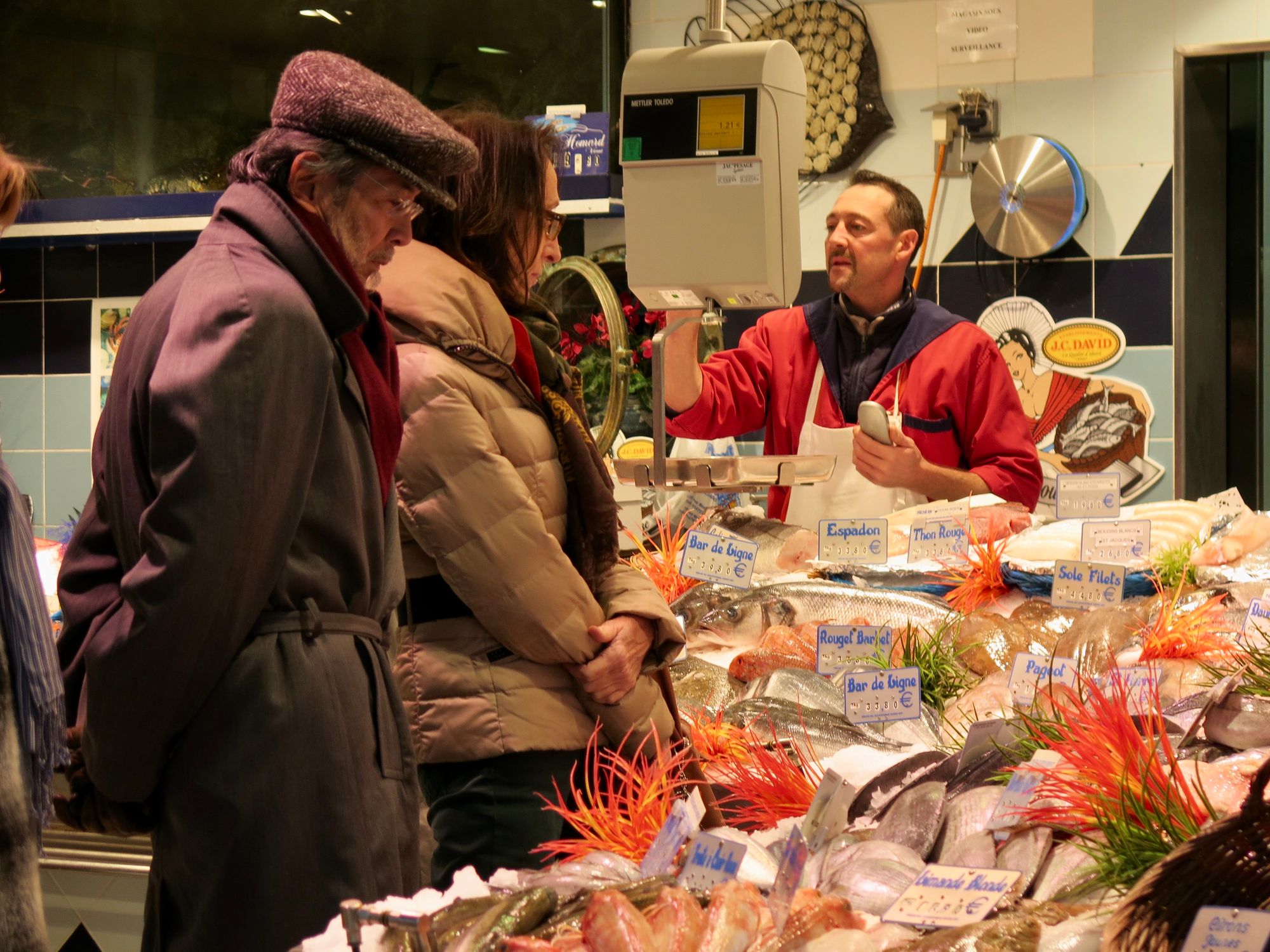
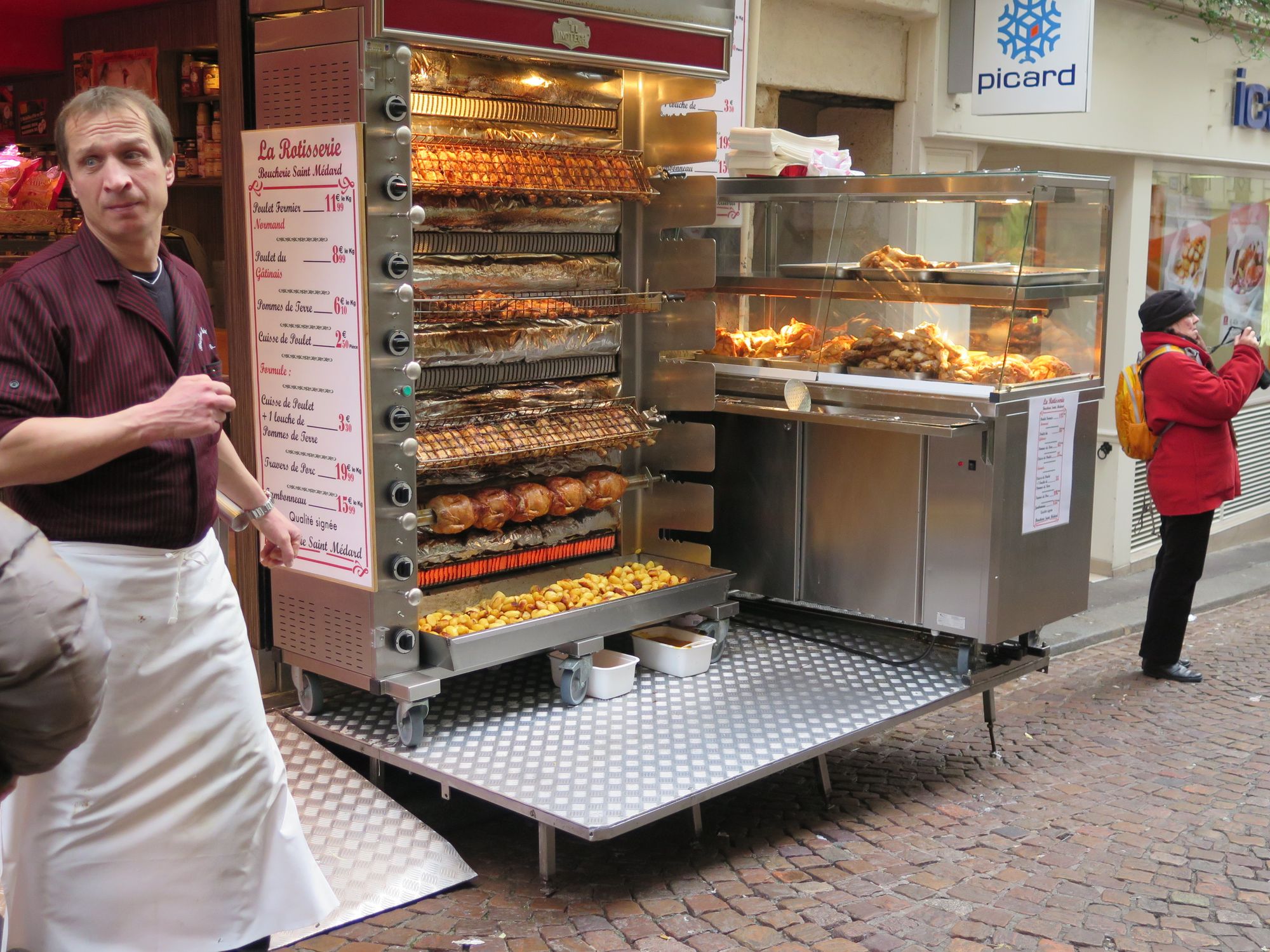
Rue de Buci - One of the Great Intersections
One could stand at this intersection and see every type of person gathering to have conversations or show off, having chance encounters, or just standing and people watching.
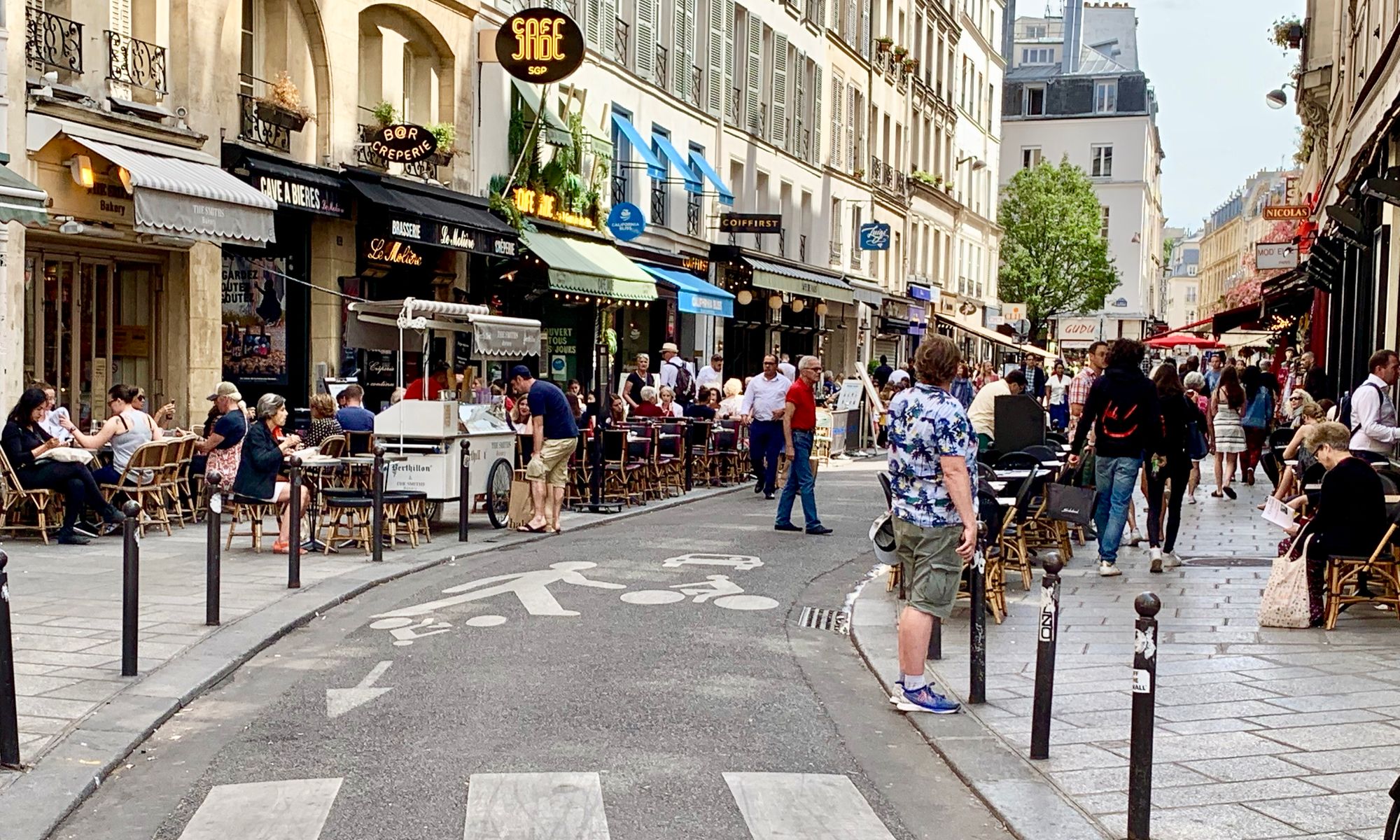
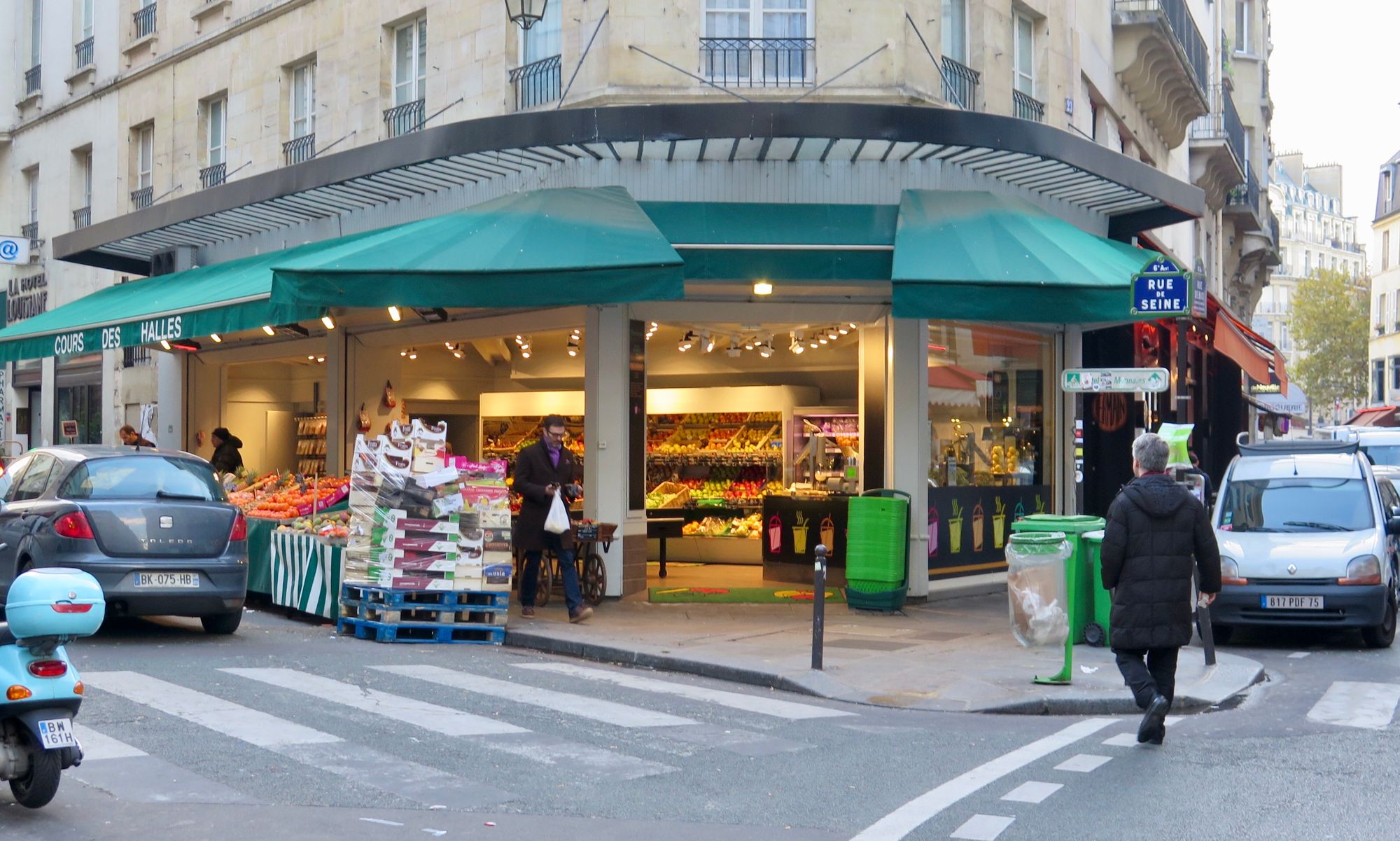
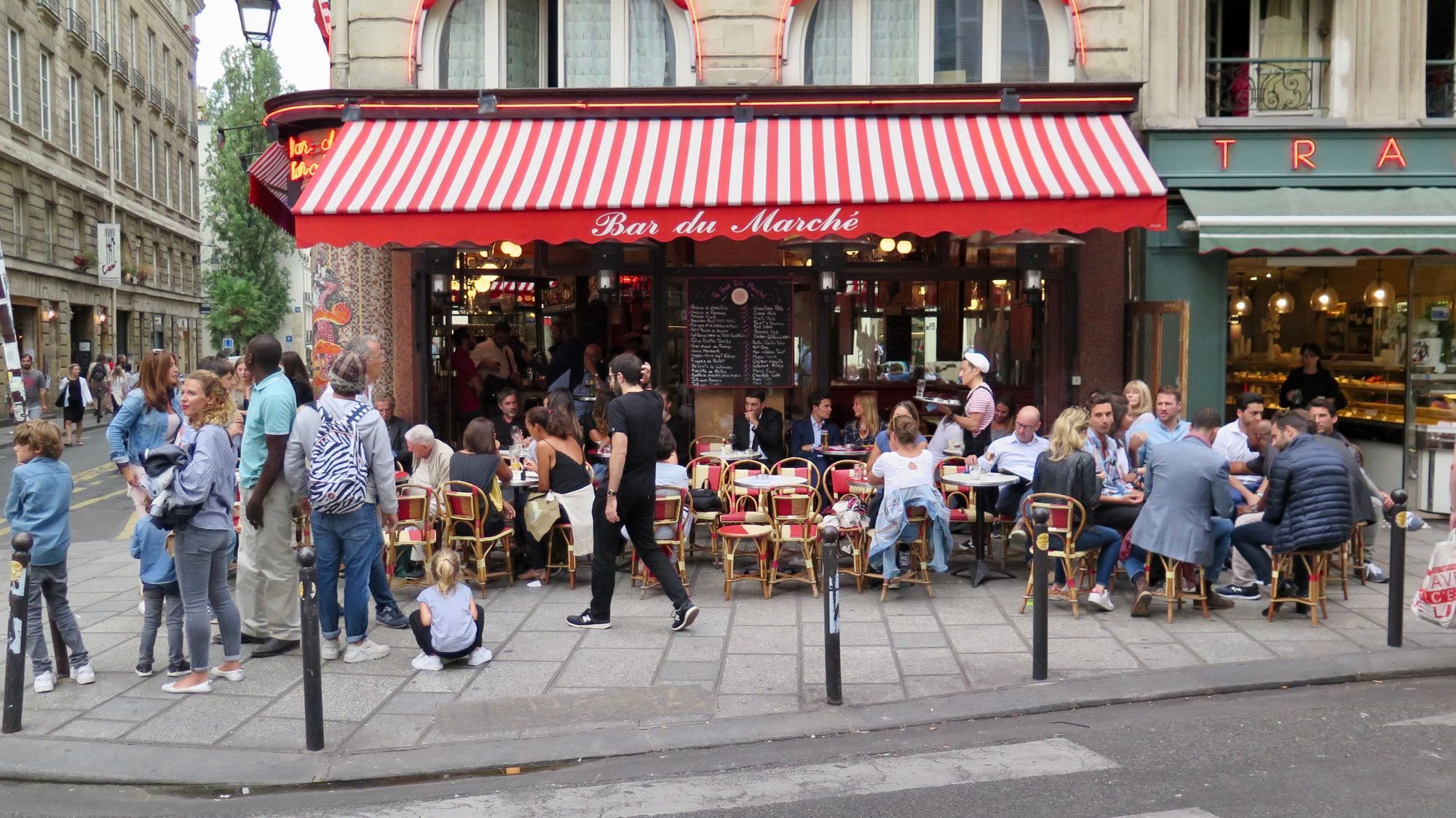
Curiosity and chance encounters at a key intersection
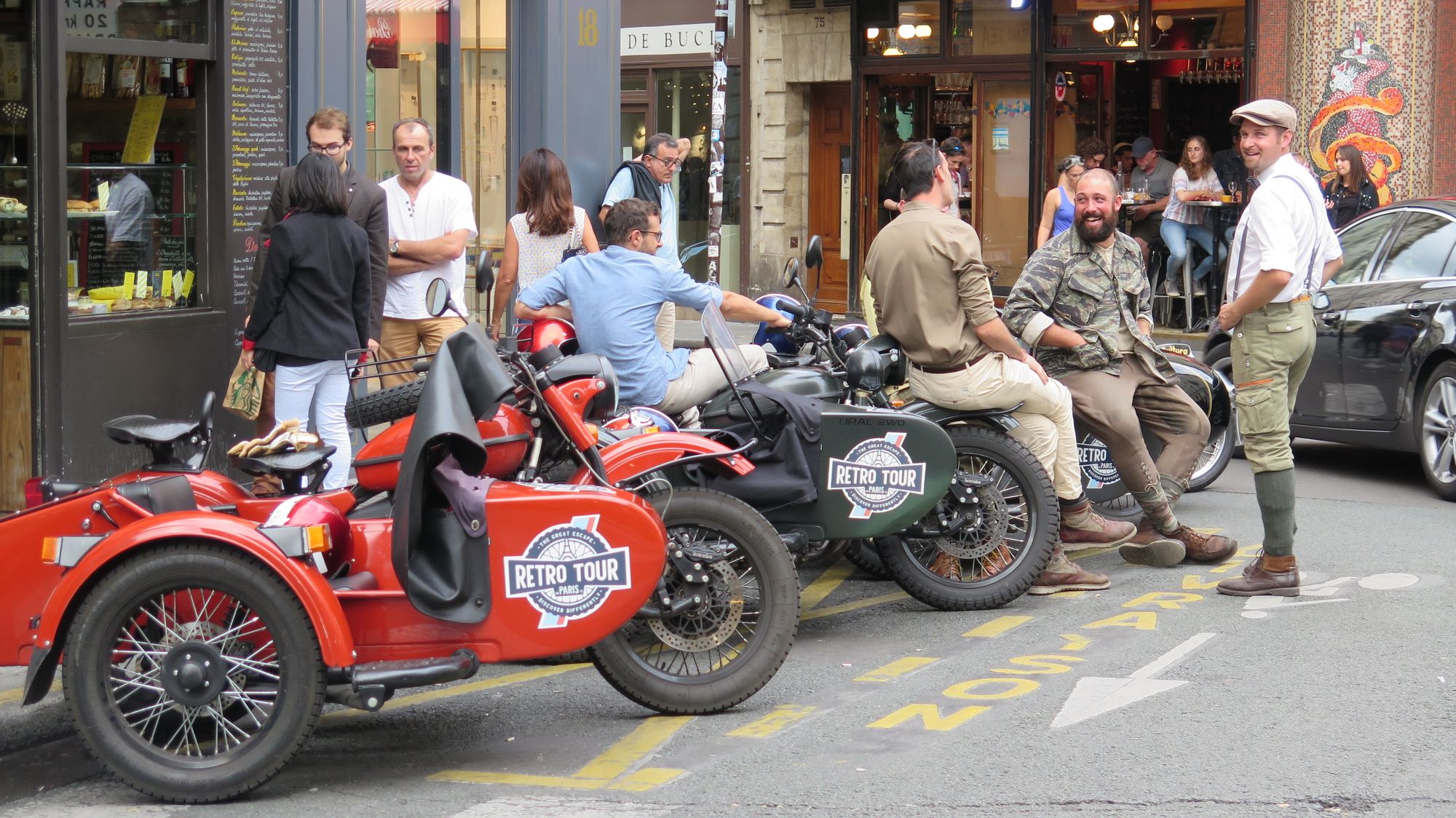
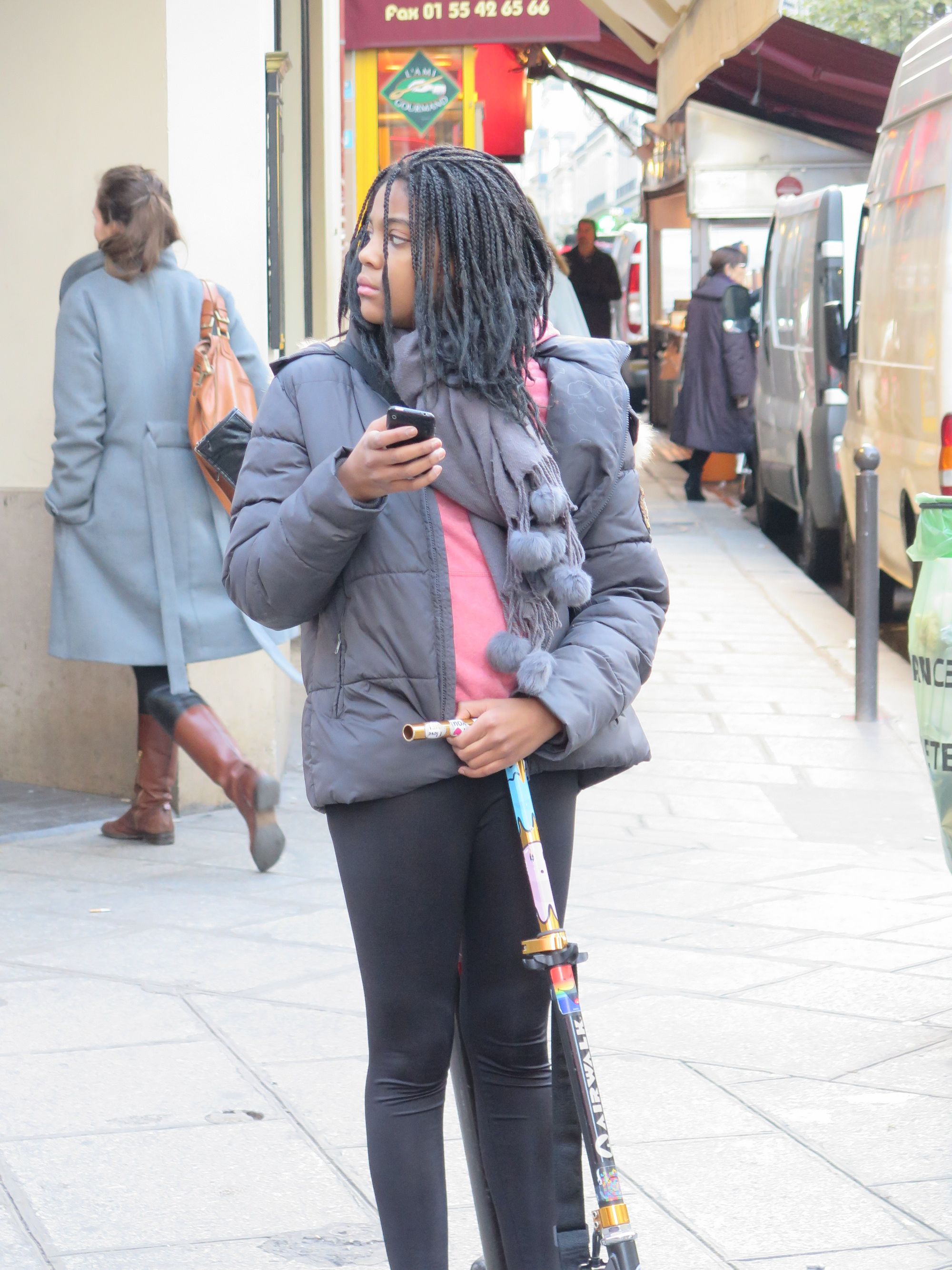
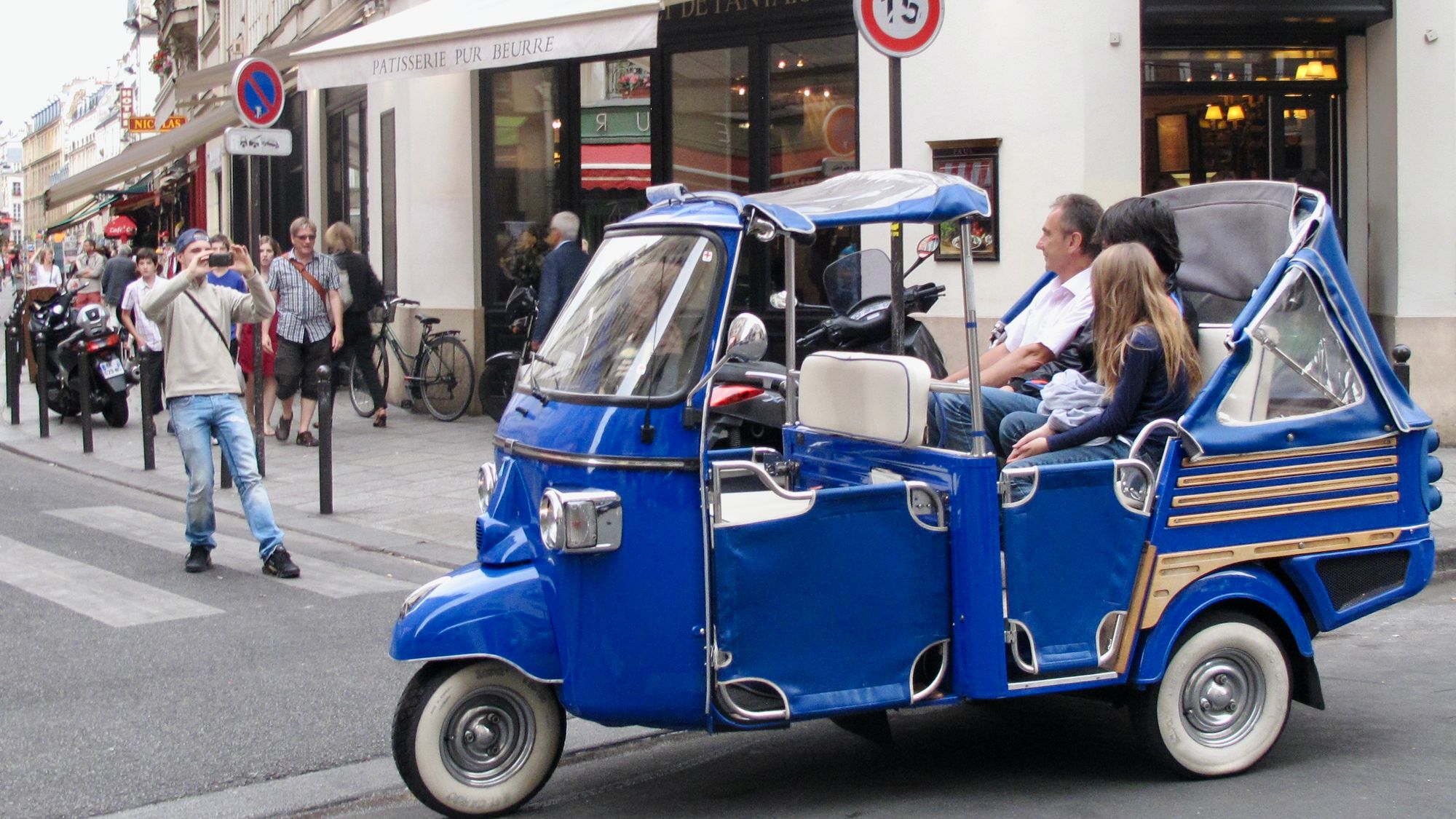
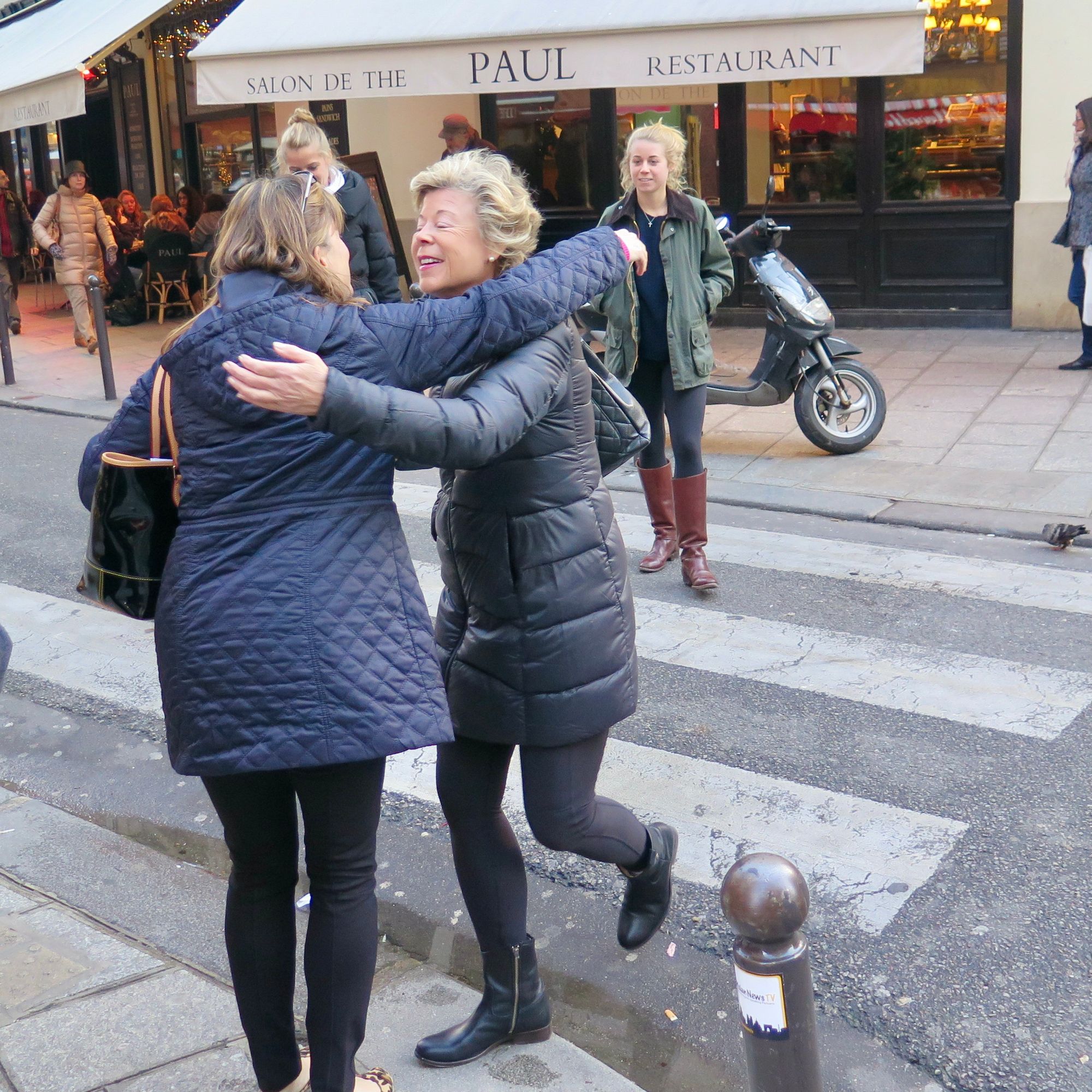
Residential Streets
Delray Beach
The narrow residential streets in Delray's historic neighborhoods are beautiful and peaceful. They're wonderful for walking, biking and playing on. Drivers practically "walk" their car through these neighborhoods.
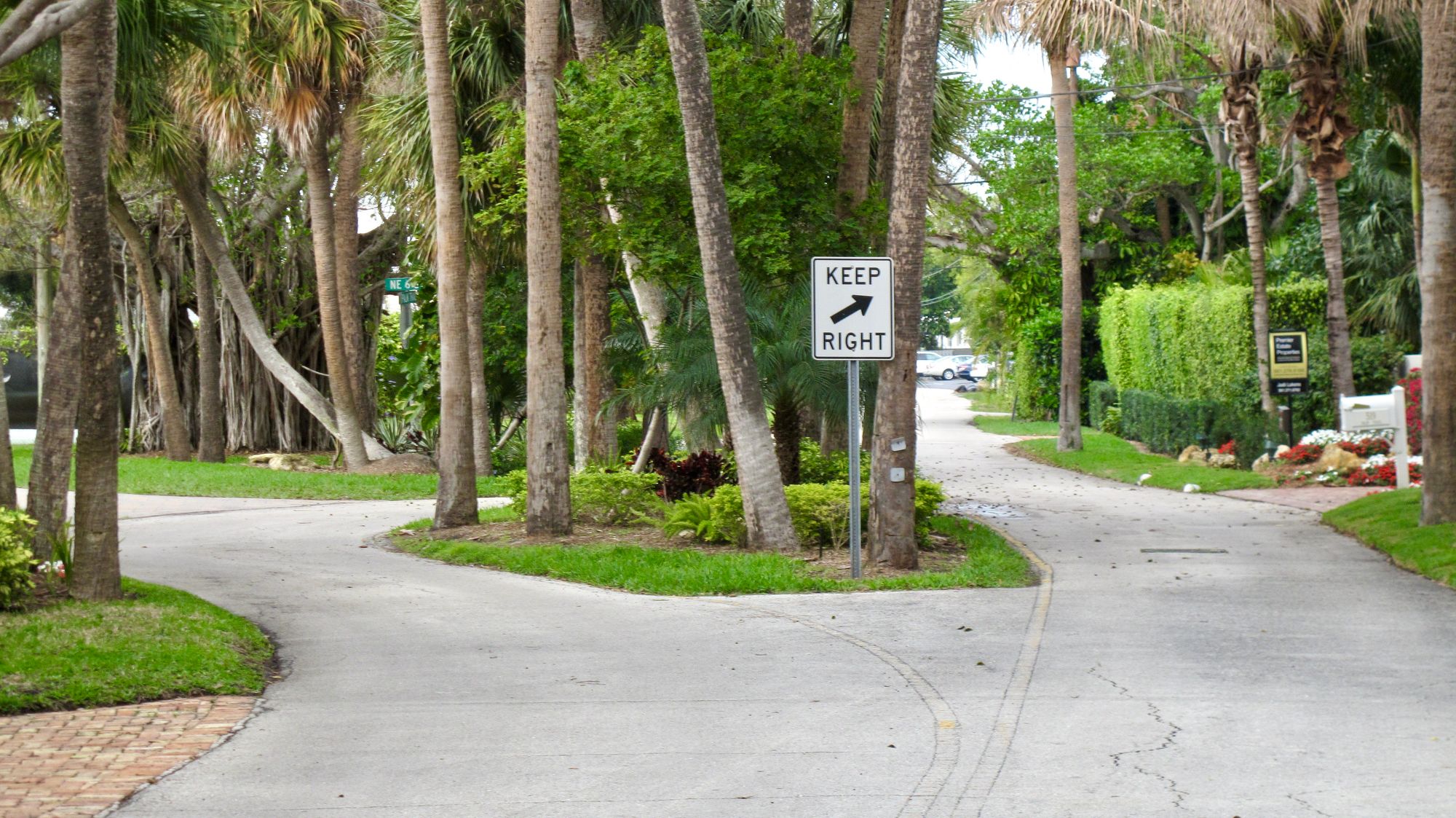
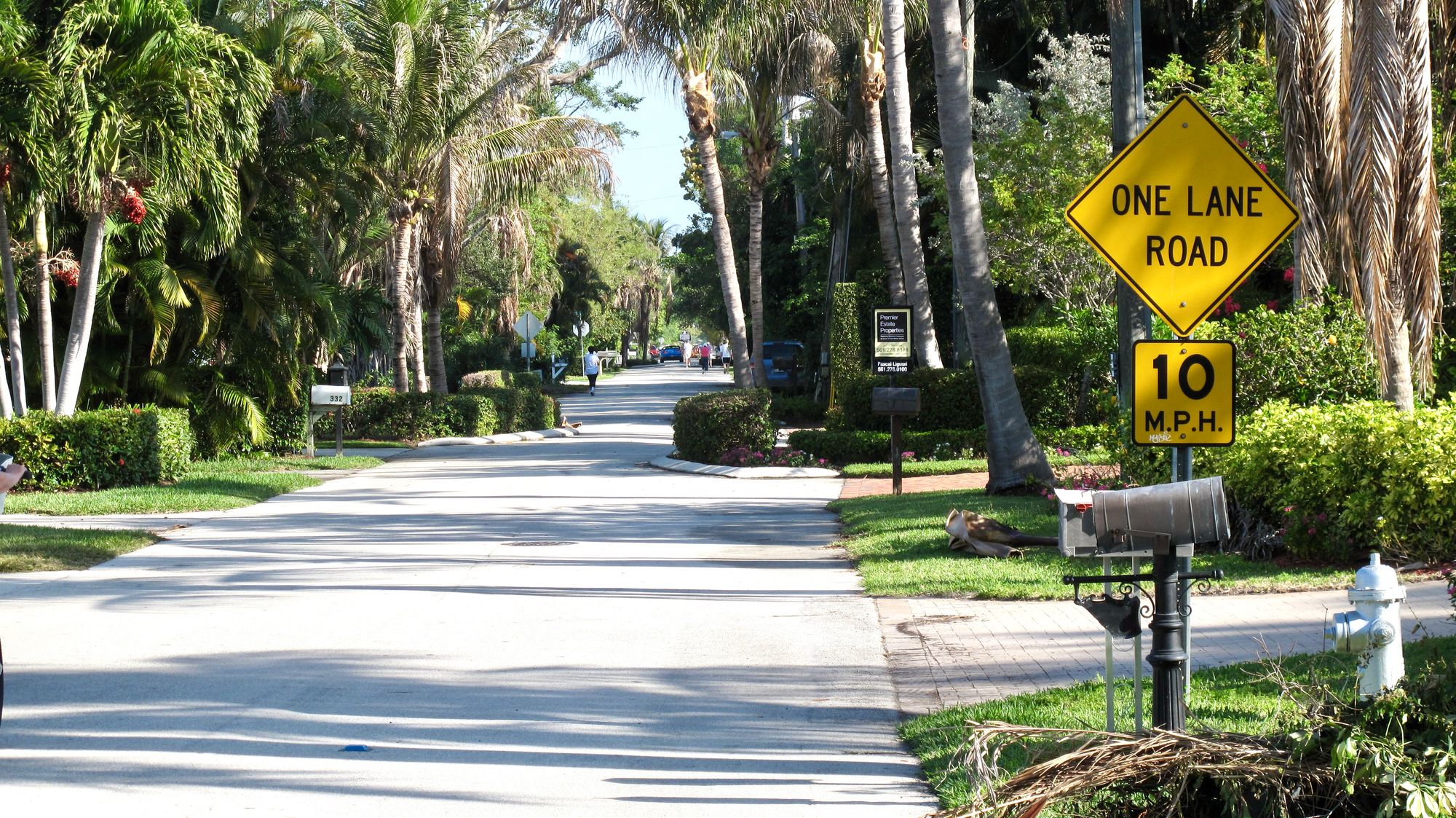
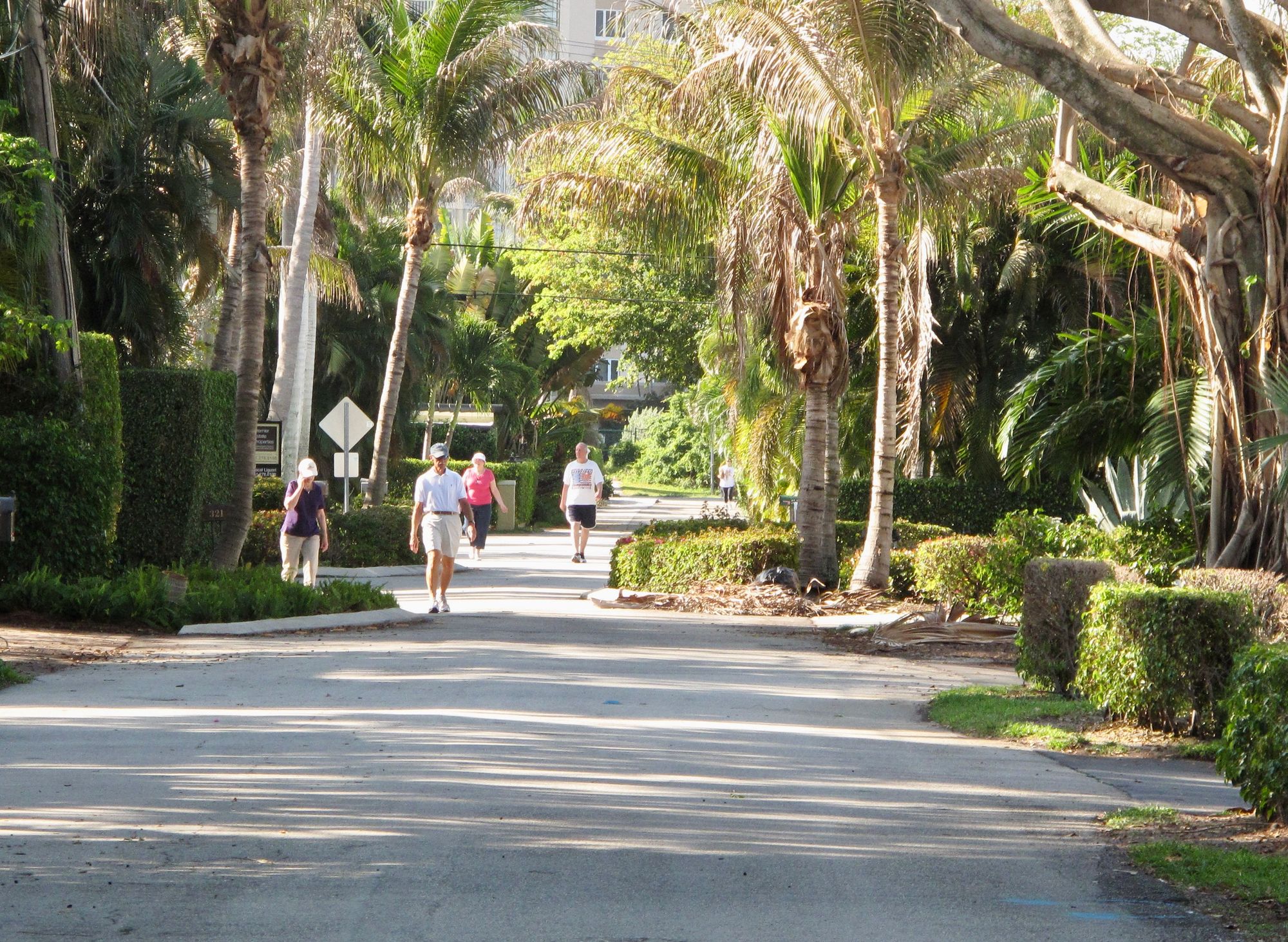
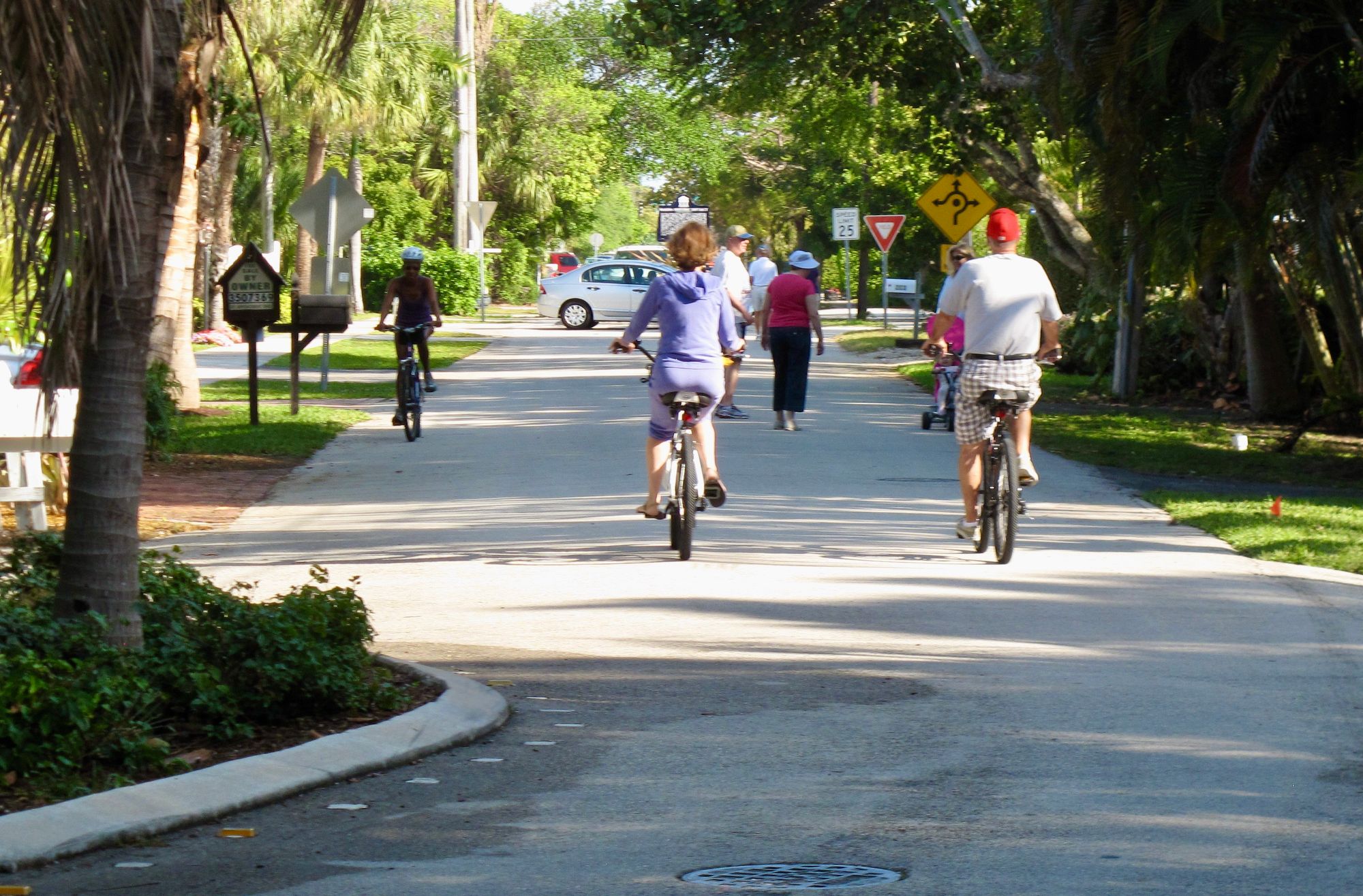
Chautauqua - "An American Utopia"
Chautauqua in Western New York was built in the late 19th Century and is known as "An American Utopia" because of how it focuses on community, nature and beauty, rather than on vehicle throughput. On many of the streets here, people share the space - walking, riding bikes, playing and jogging, all in the same place where cars are because speed limits are only 12 mph. It is understood that the streets are not the domain of cars but that they are shared by everybody.
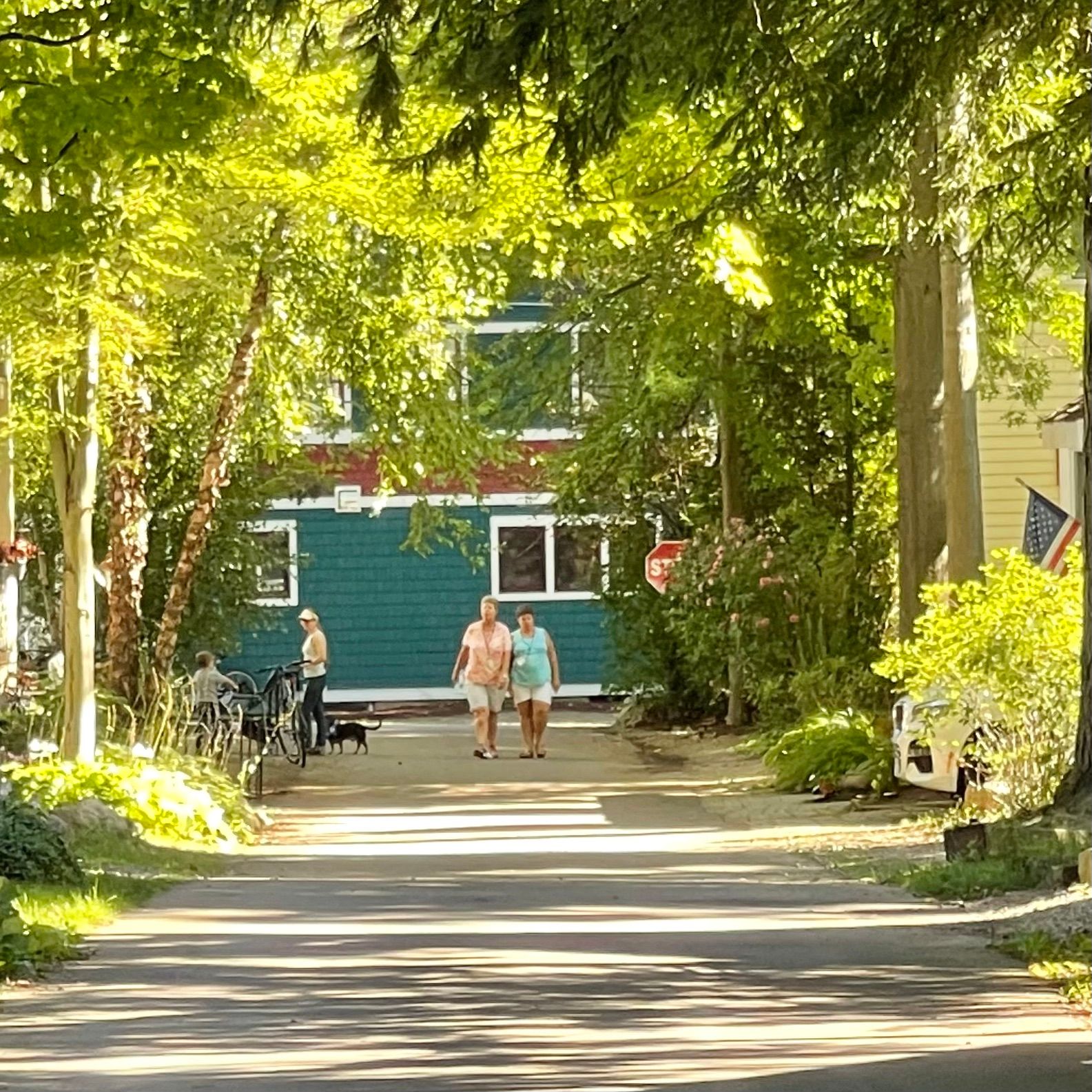
This is a typical
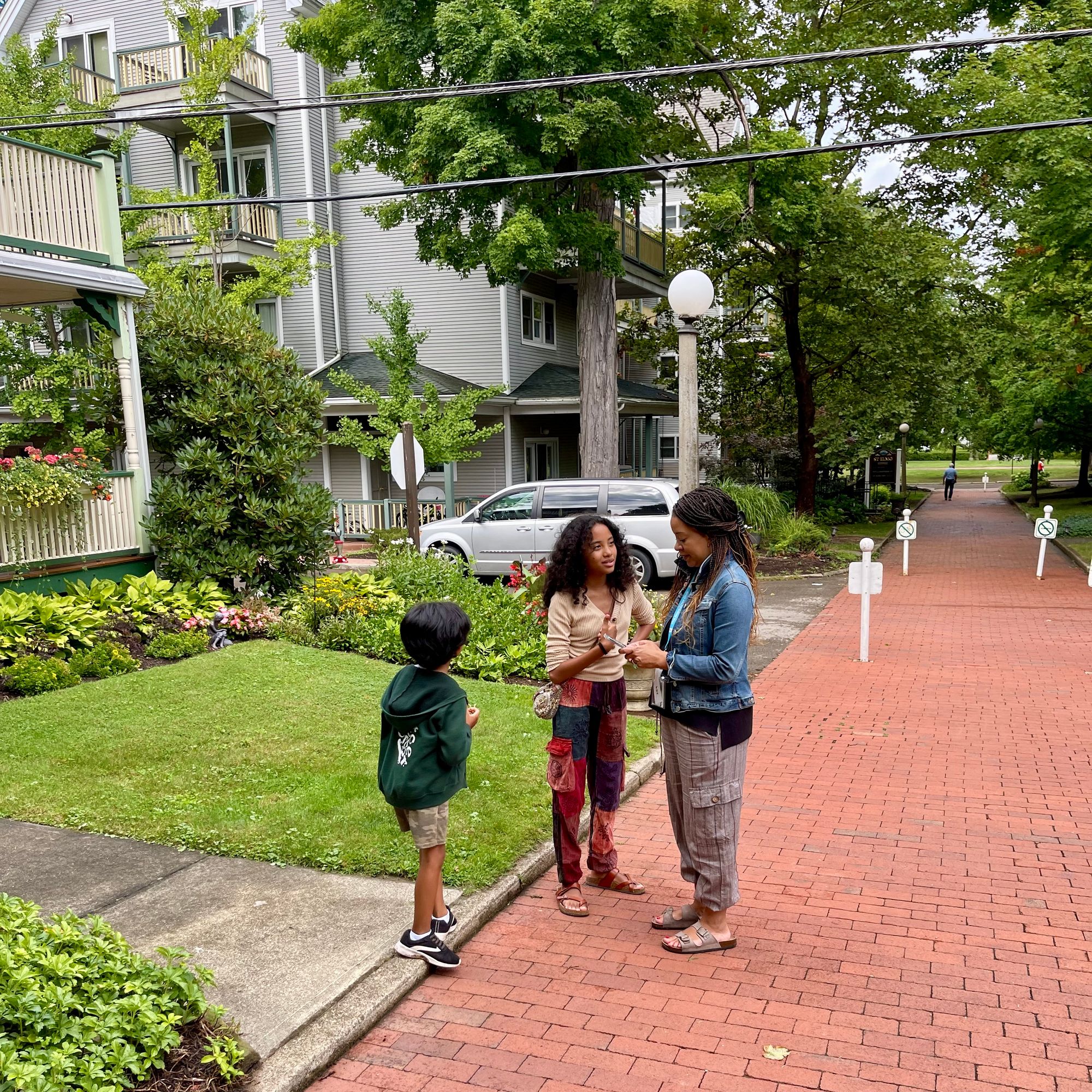
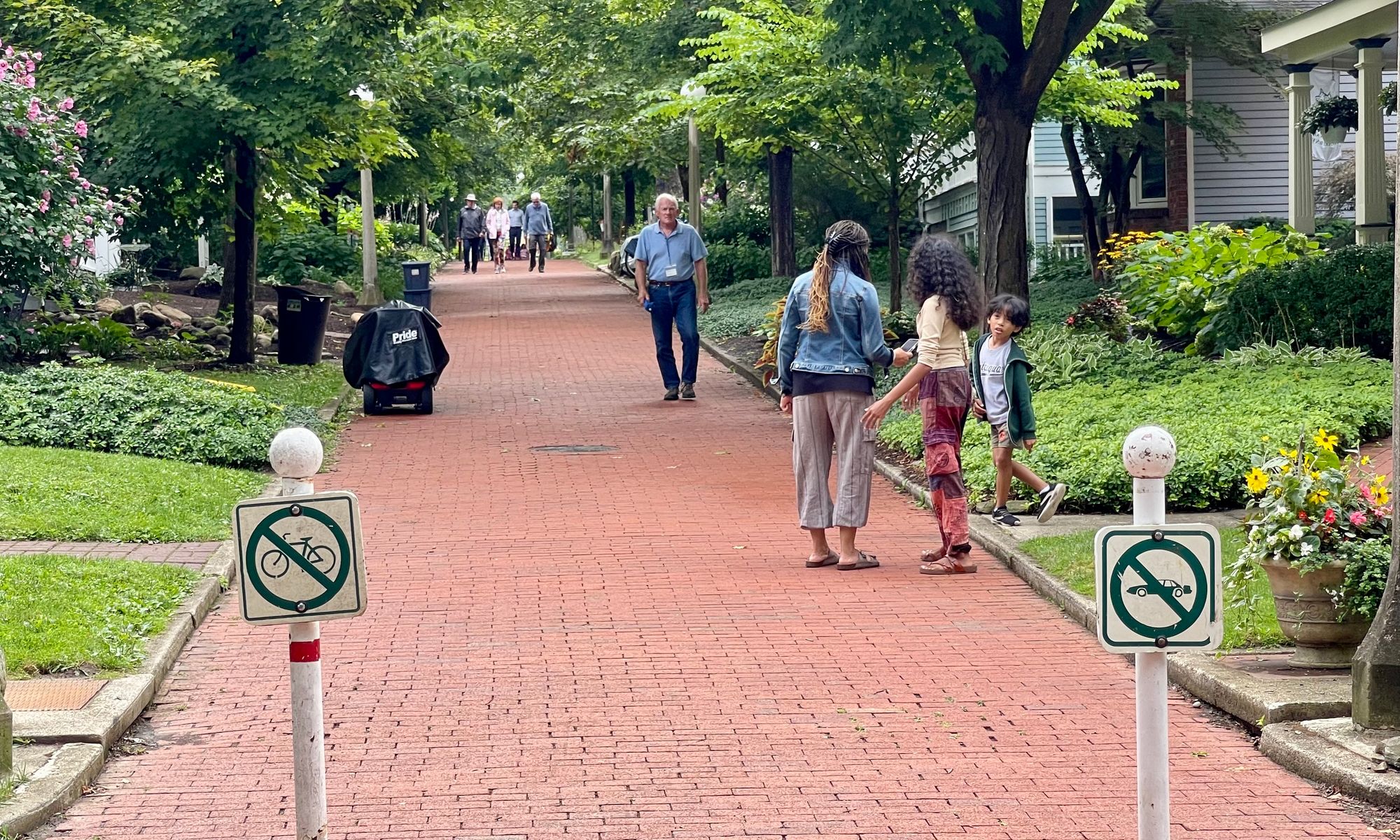
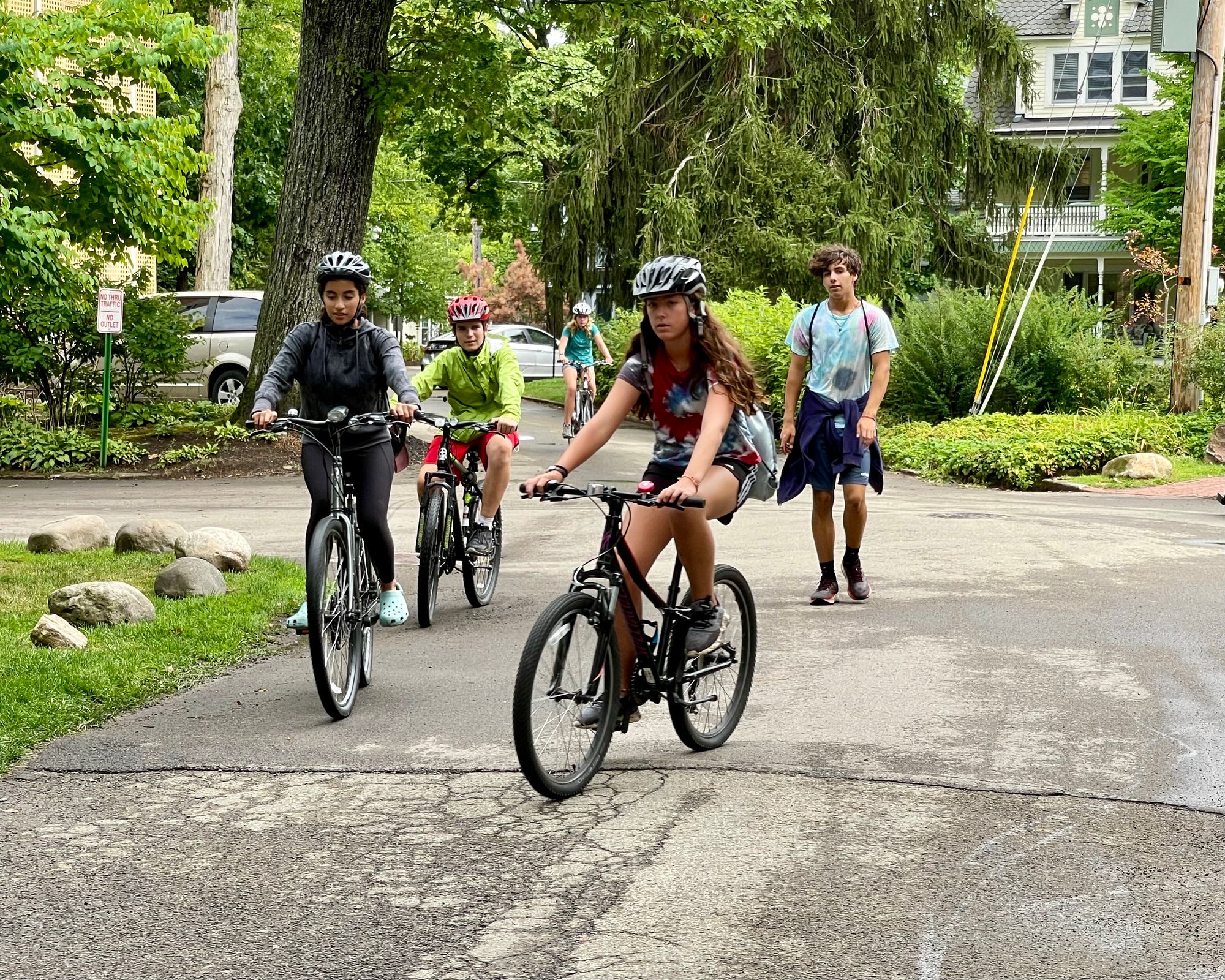
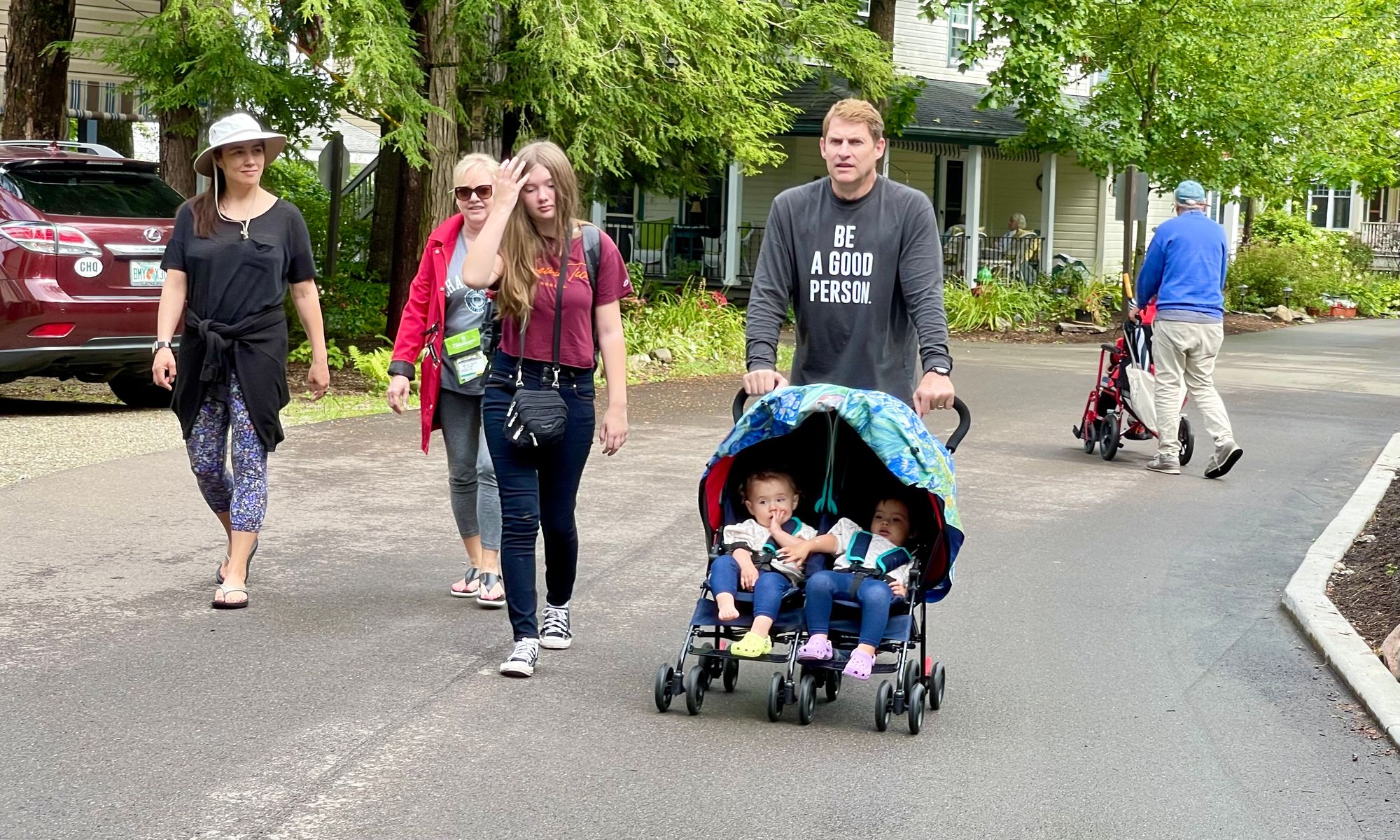
Because there is no noise, pollution, and danger from cars and because there is an absence of garages, Chautauqua is filled with wonderful porches. Theses porches encourage community bonds and social life.
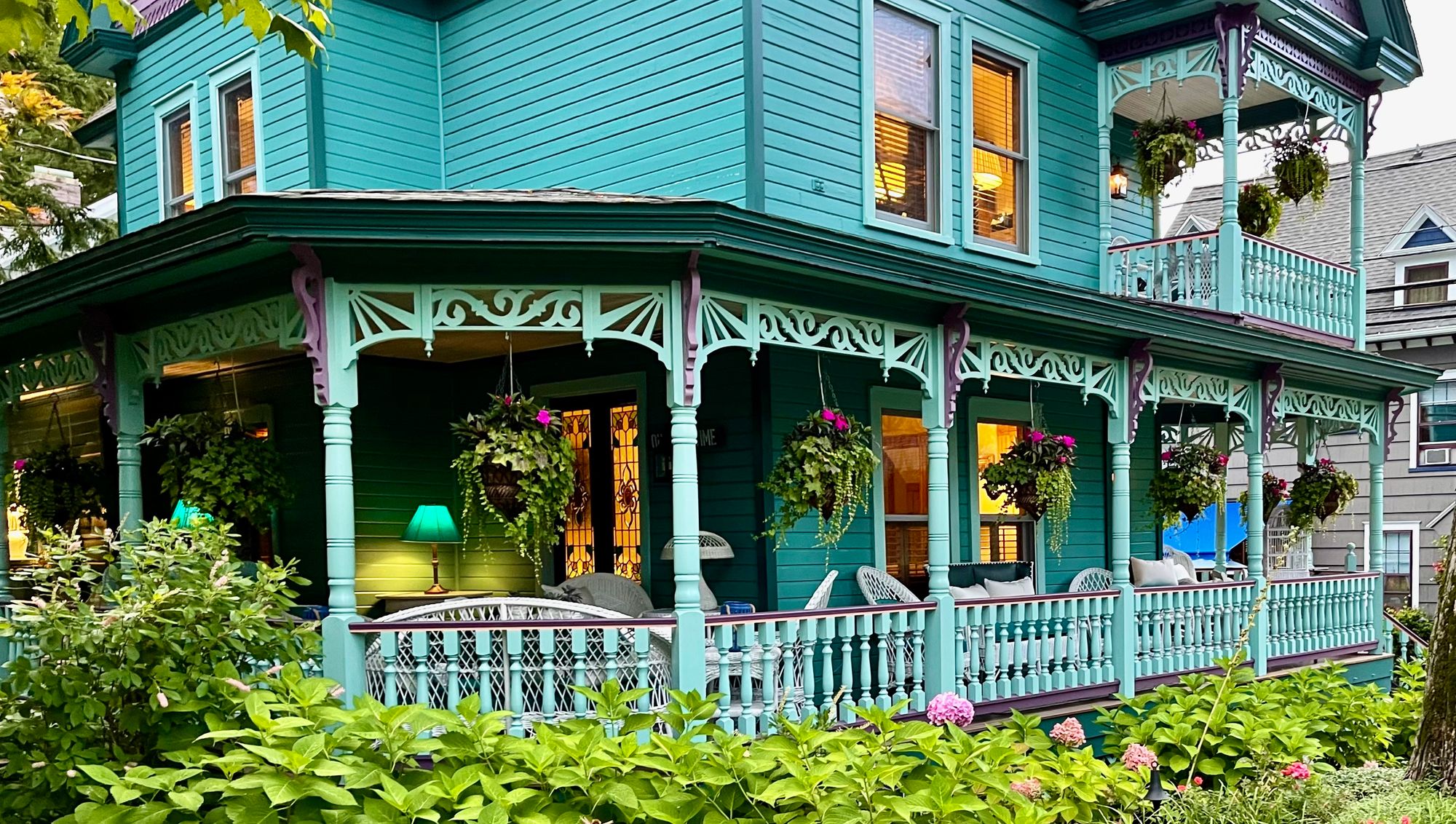
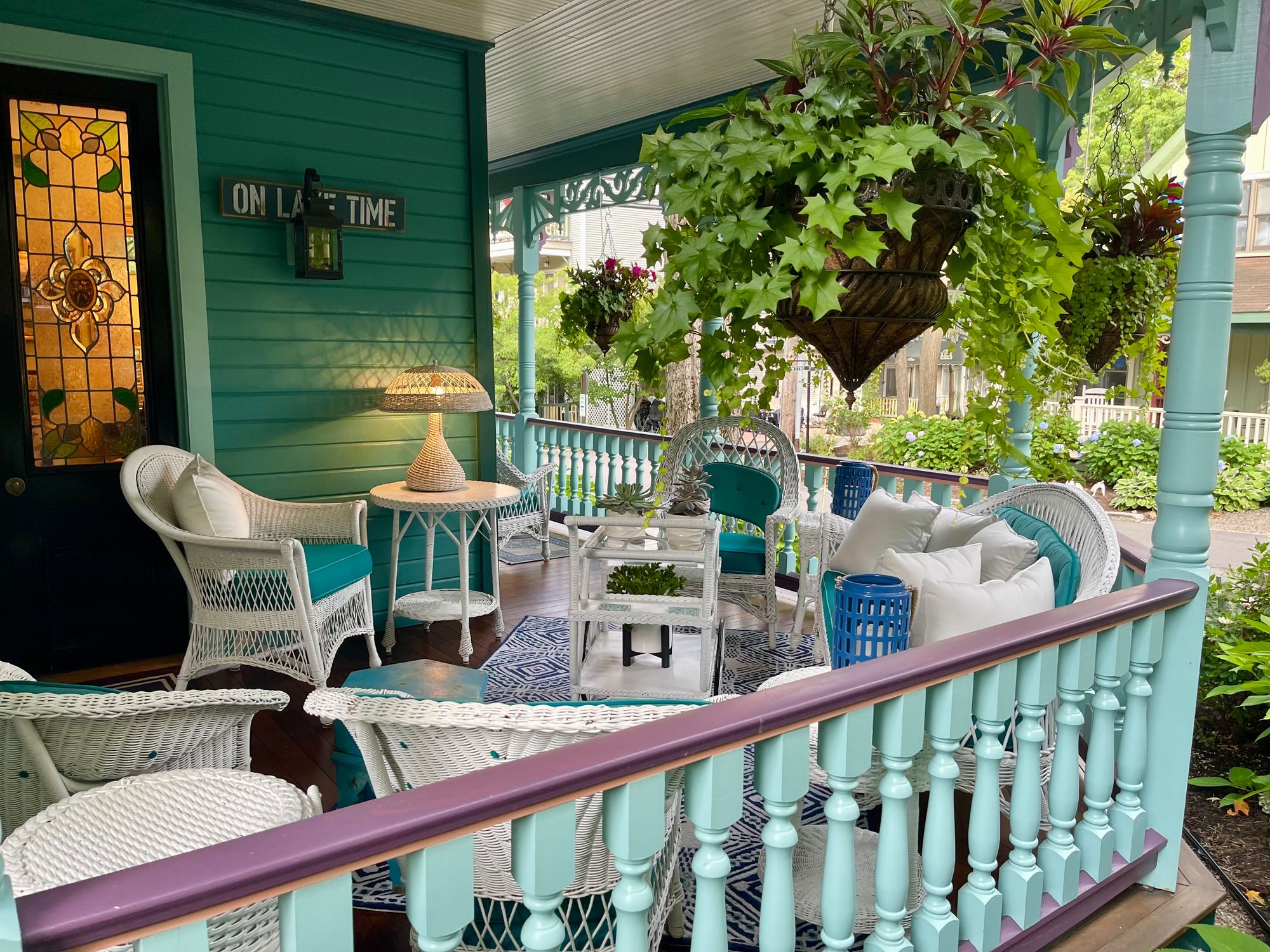
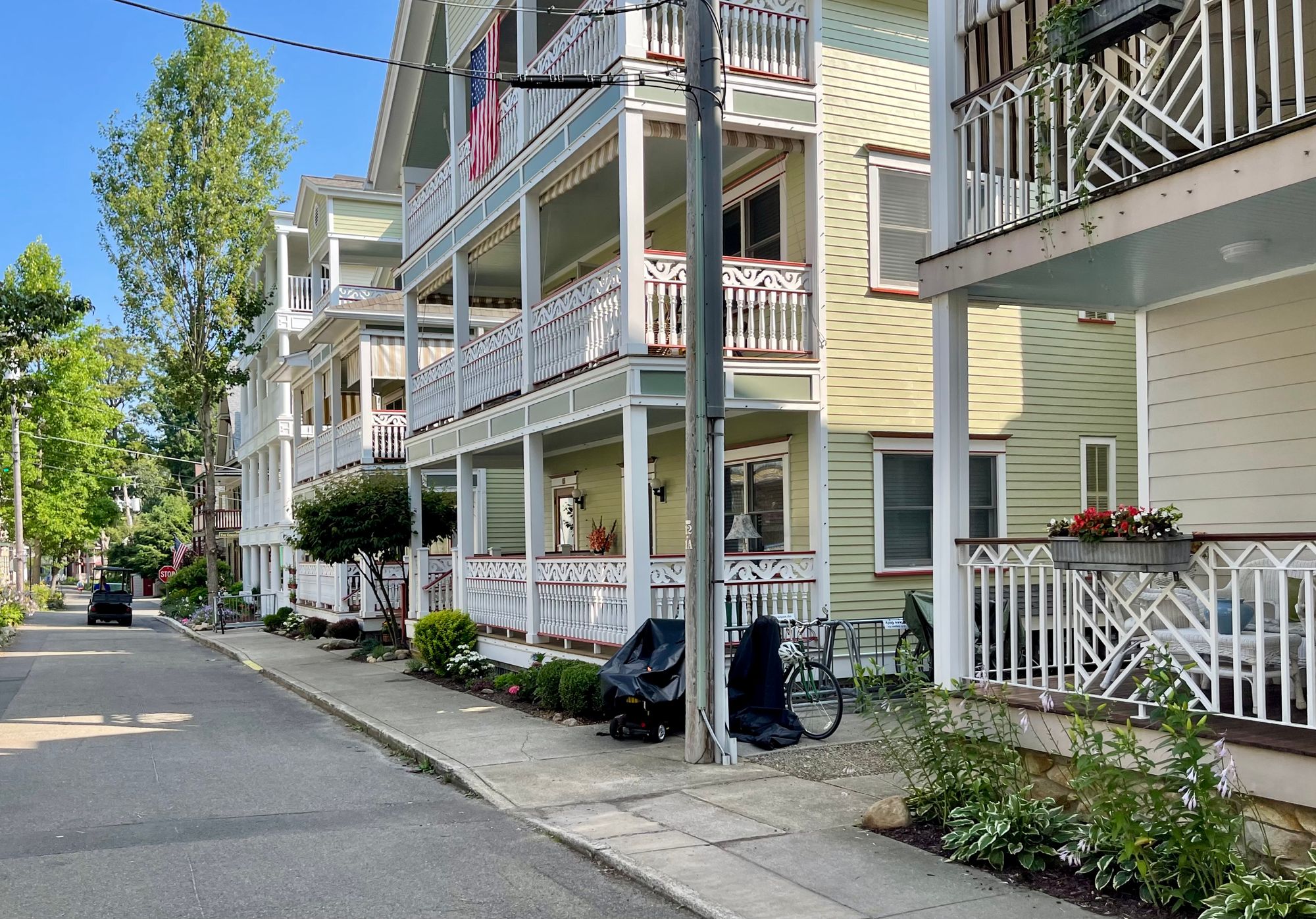
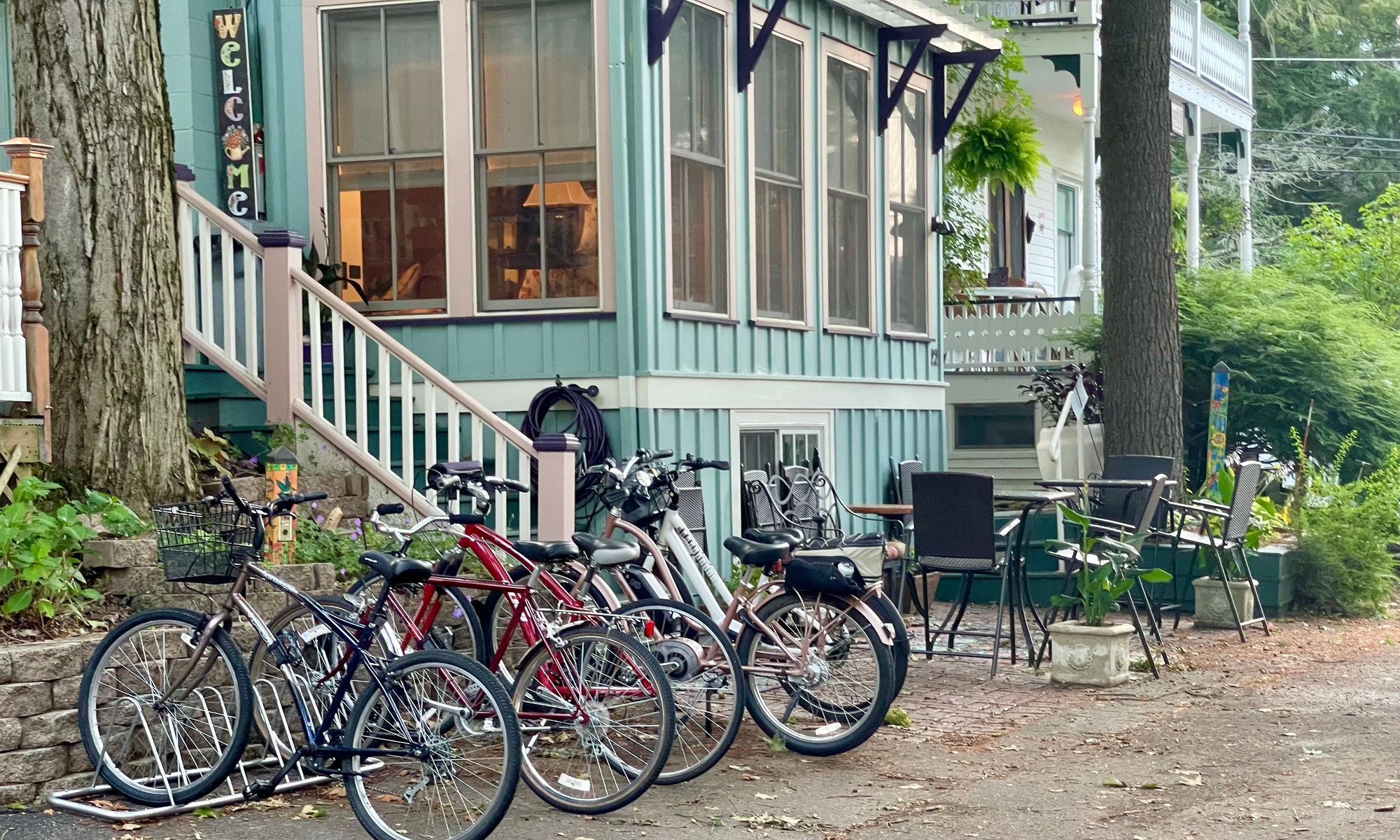
Shared Streets
Shared streets are those where bikes, cars, and pedestrians are all welcome and respect each other's presence. Cars drive slowly which is why they are allowed to brush shoulders with pedestrians and cyclists.
Delray Beach
These vibrant blocks on Delray Beach's main street can be considered shared space because of how they embrace everyone and anyone. Pedestrians feel at ease around bikes and cars because the streets are narrow and vehicles drive slowly. Everyone, on wheels and on foot, can enjoy the liveliness of the area.
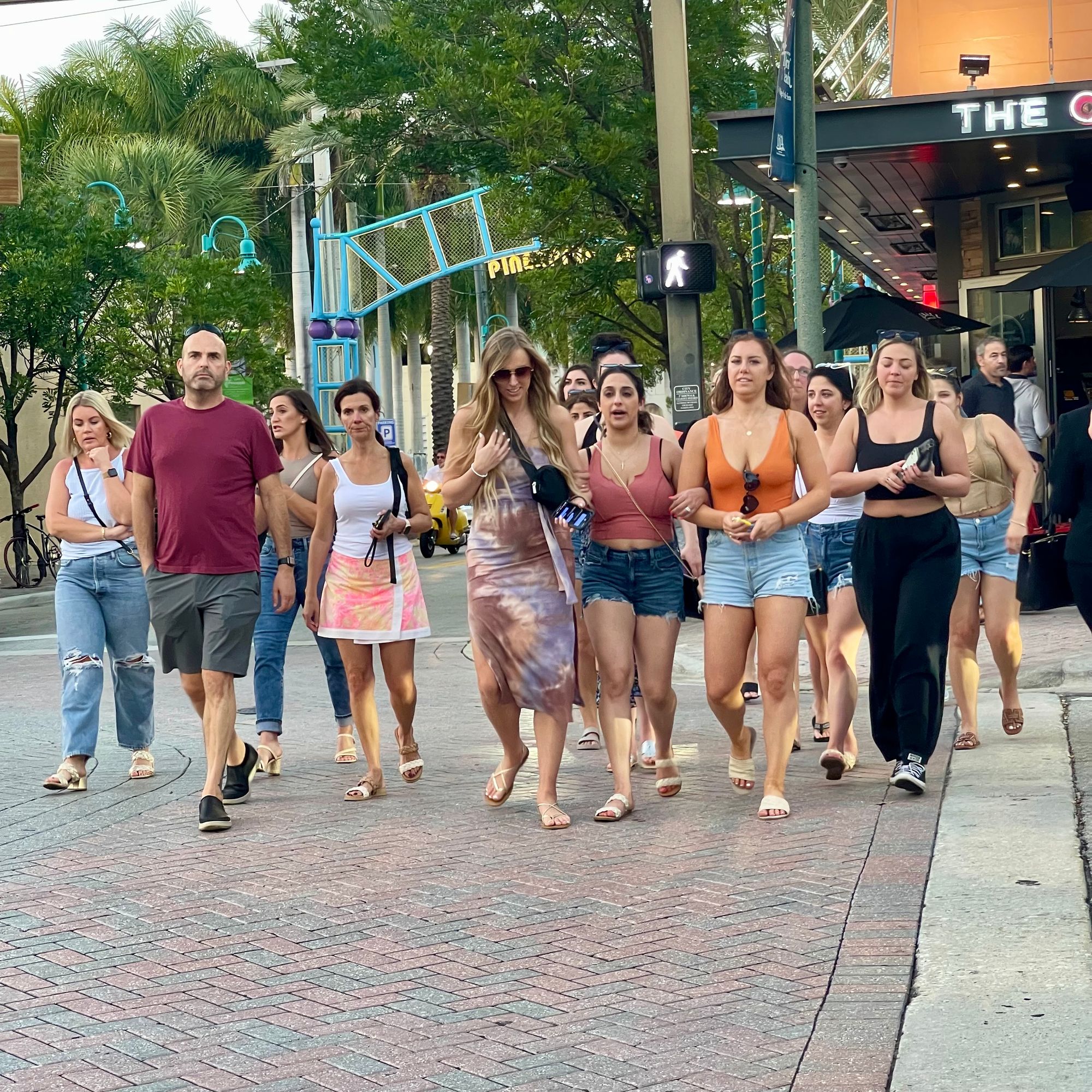
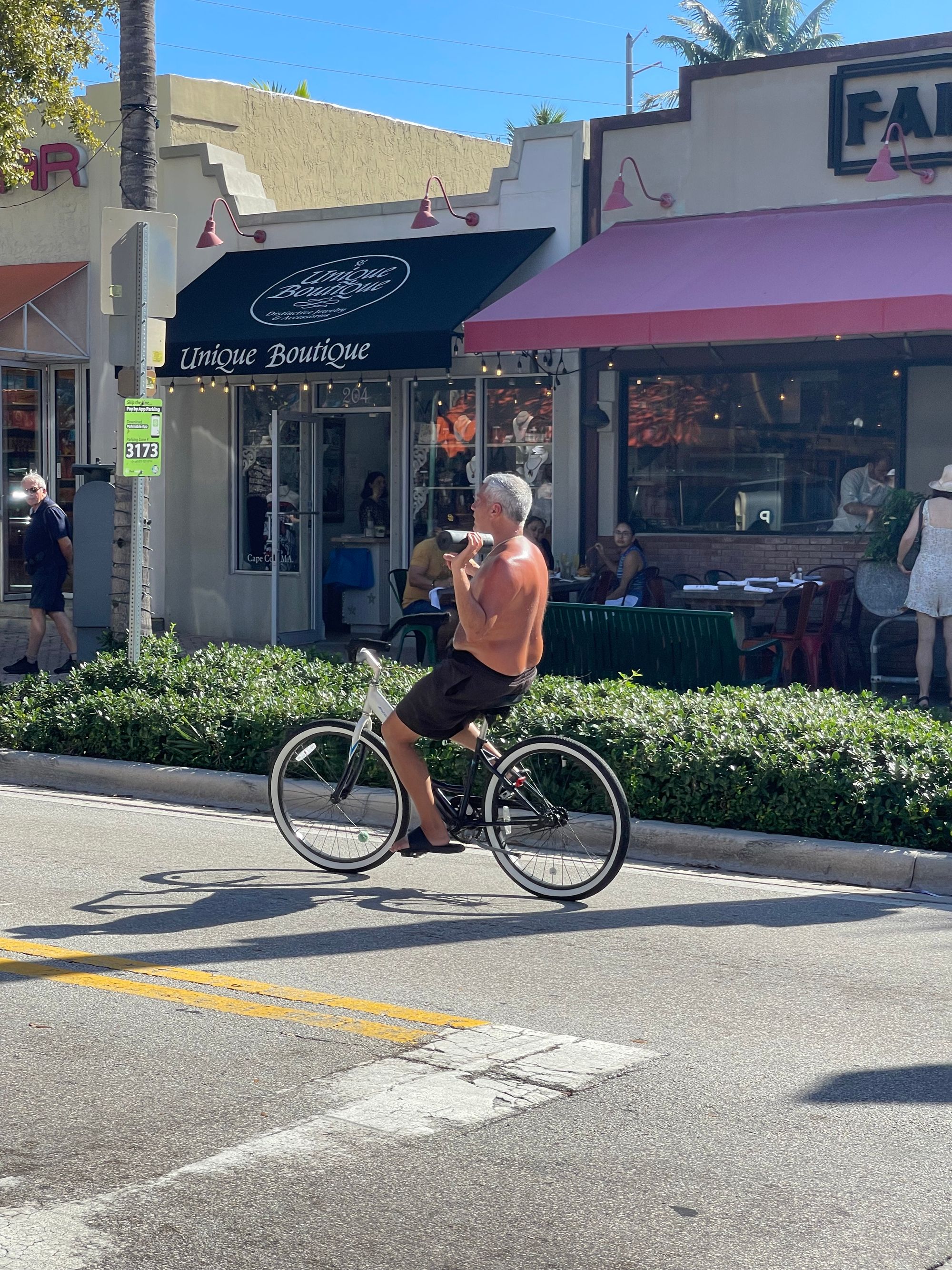
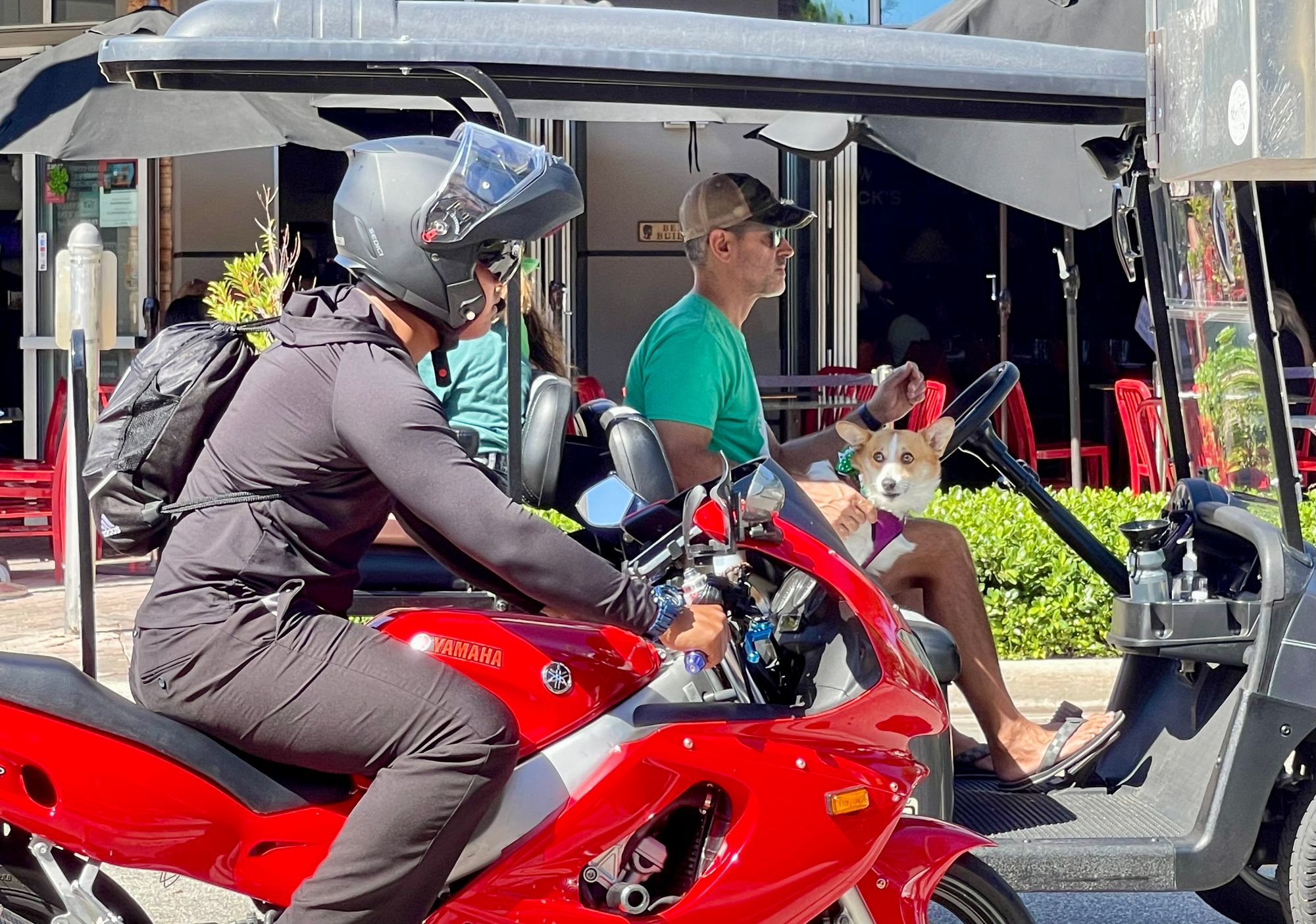
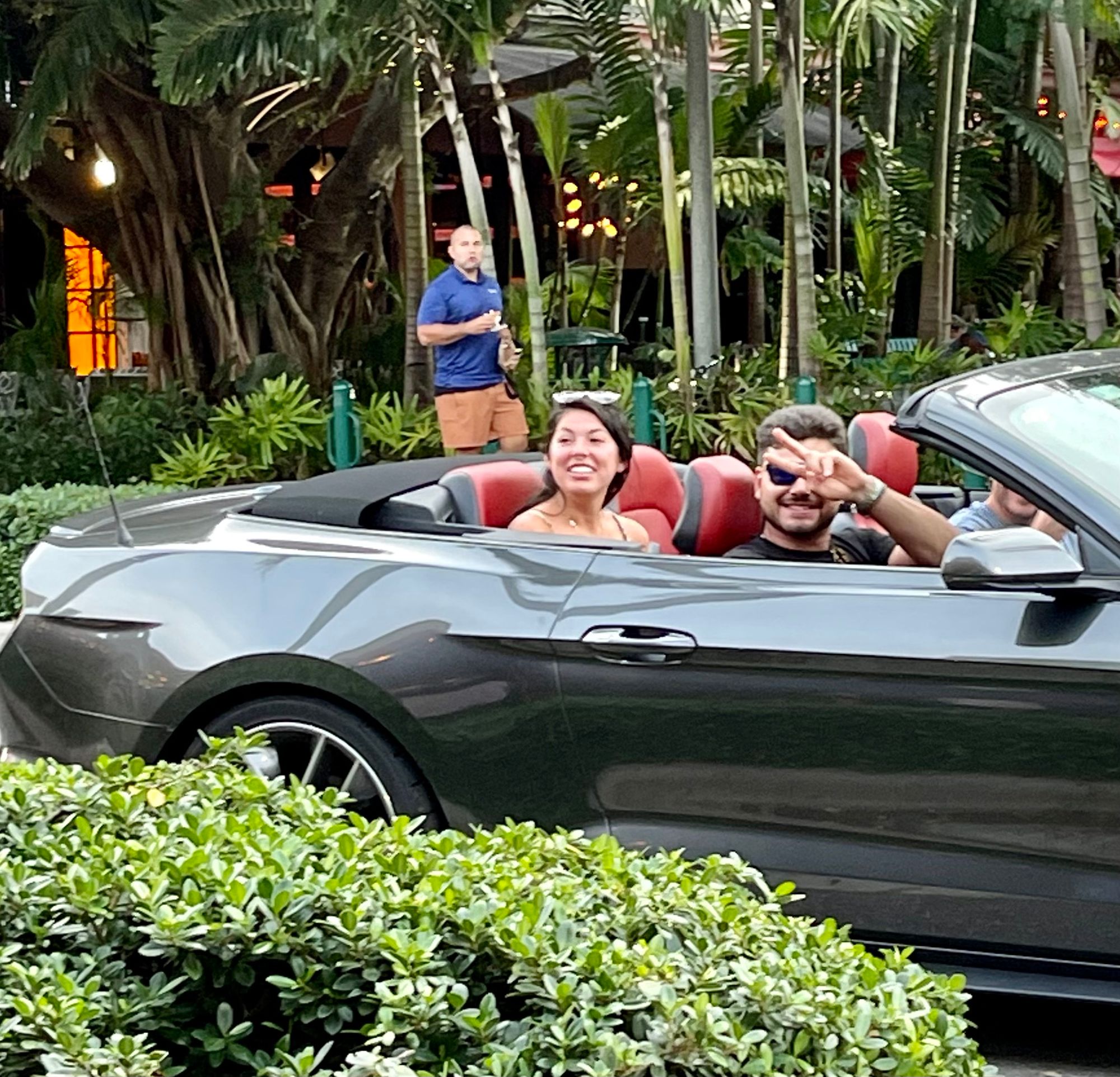
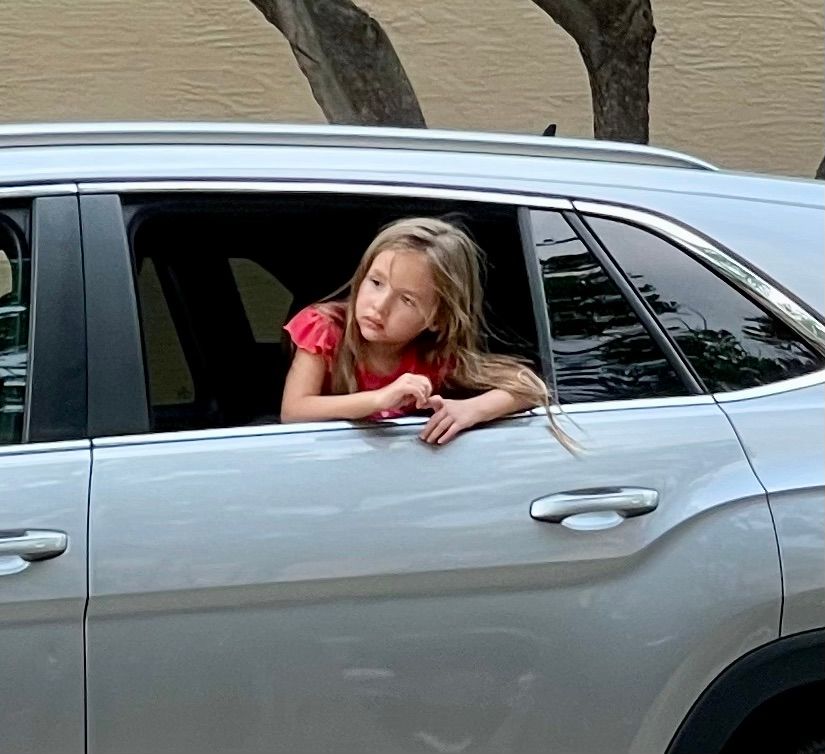
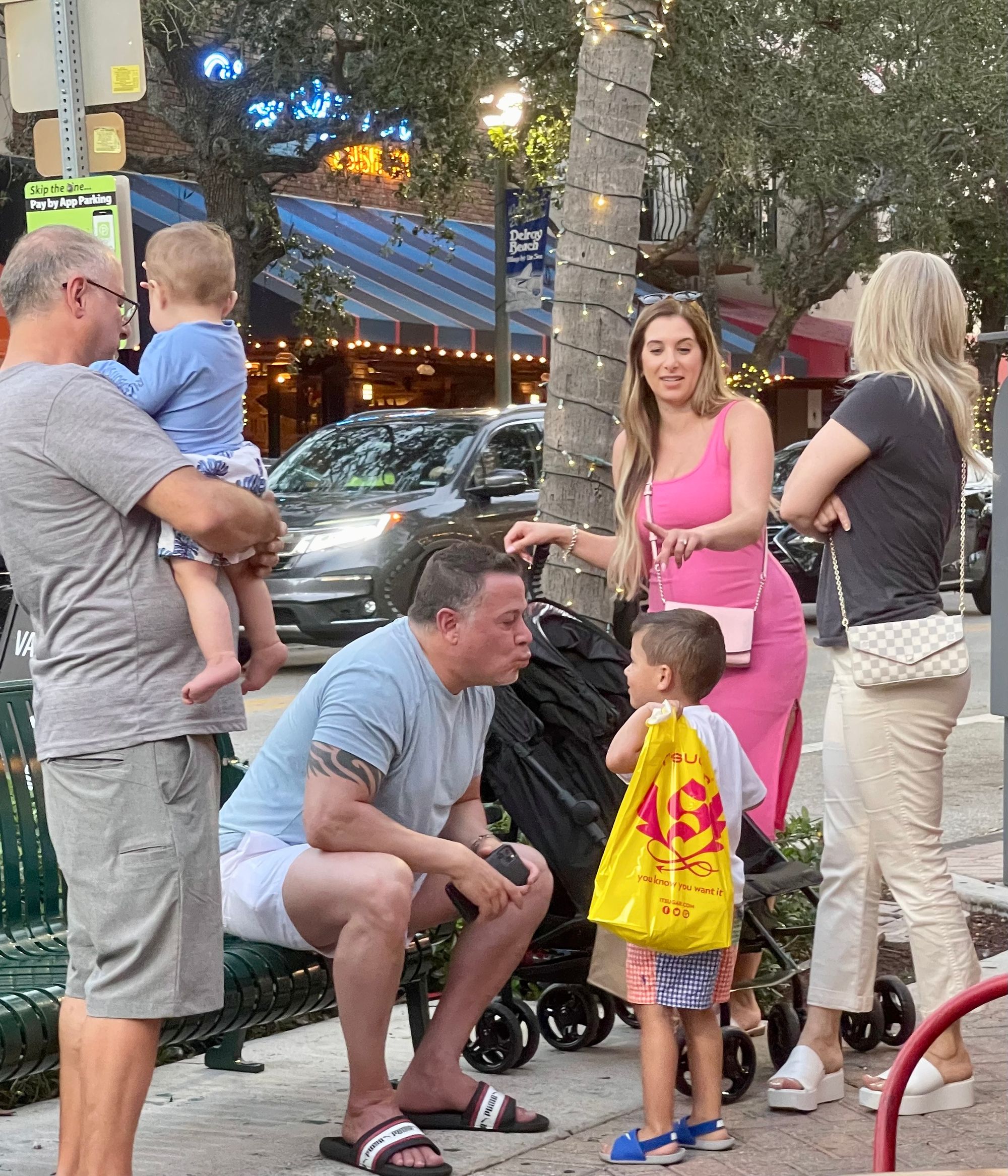
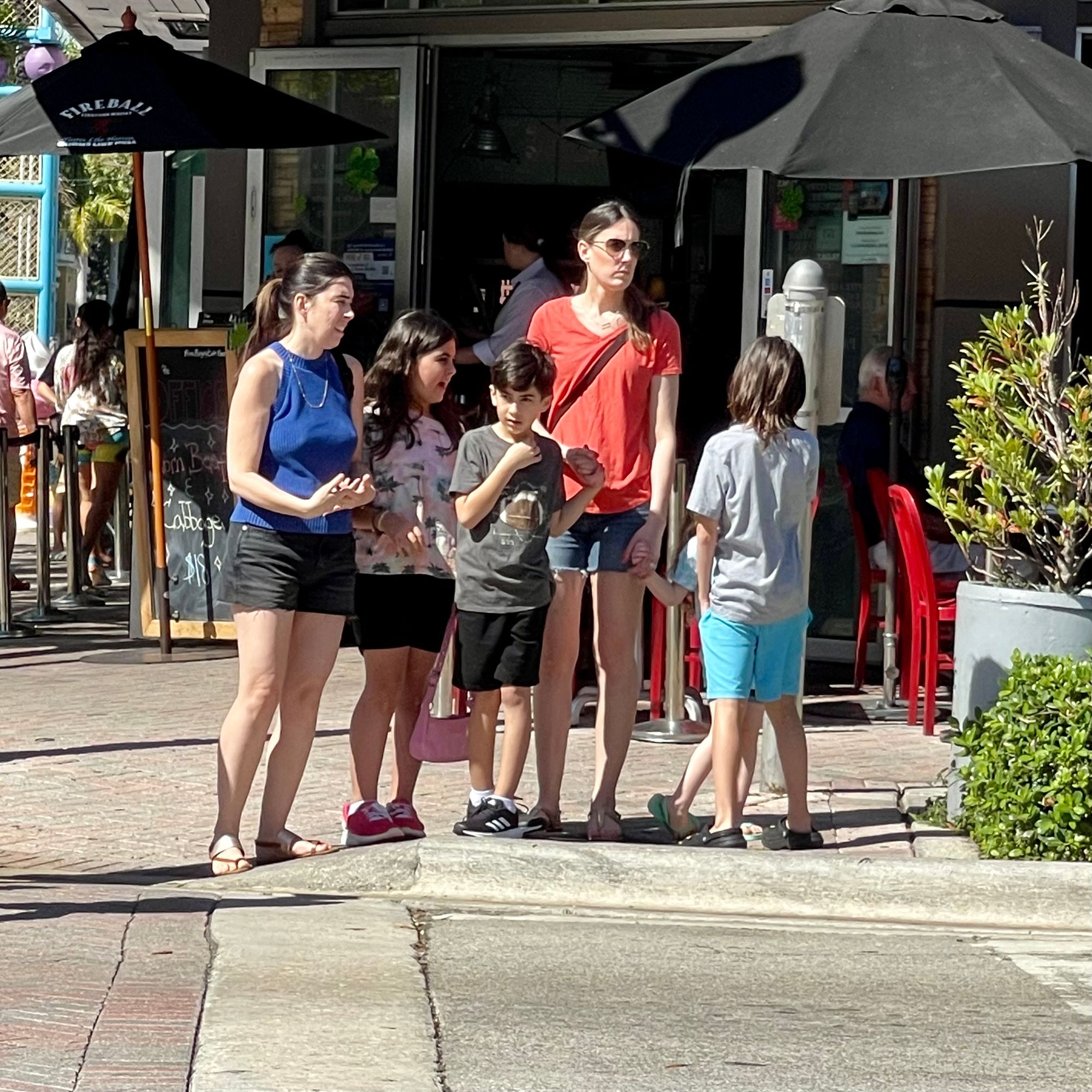
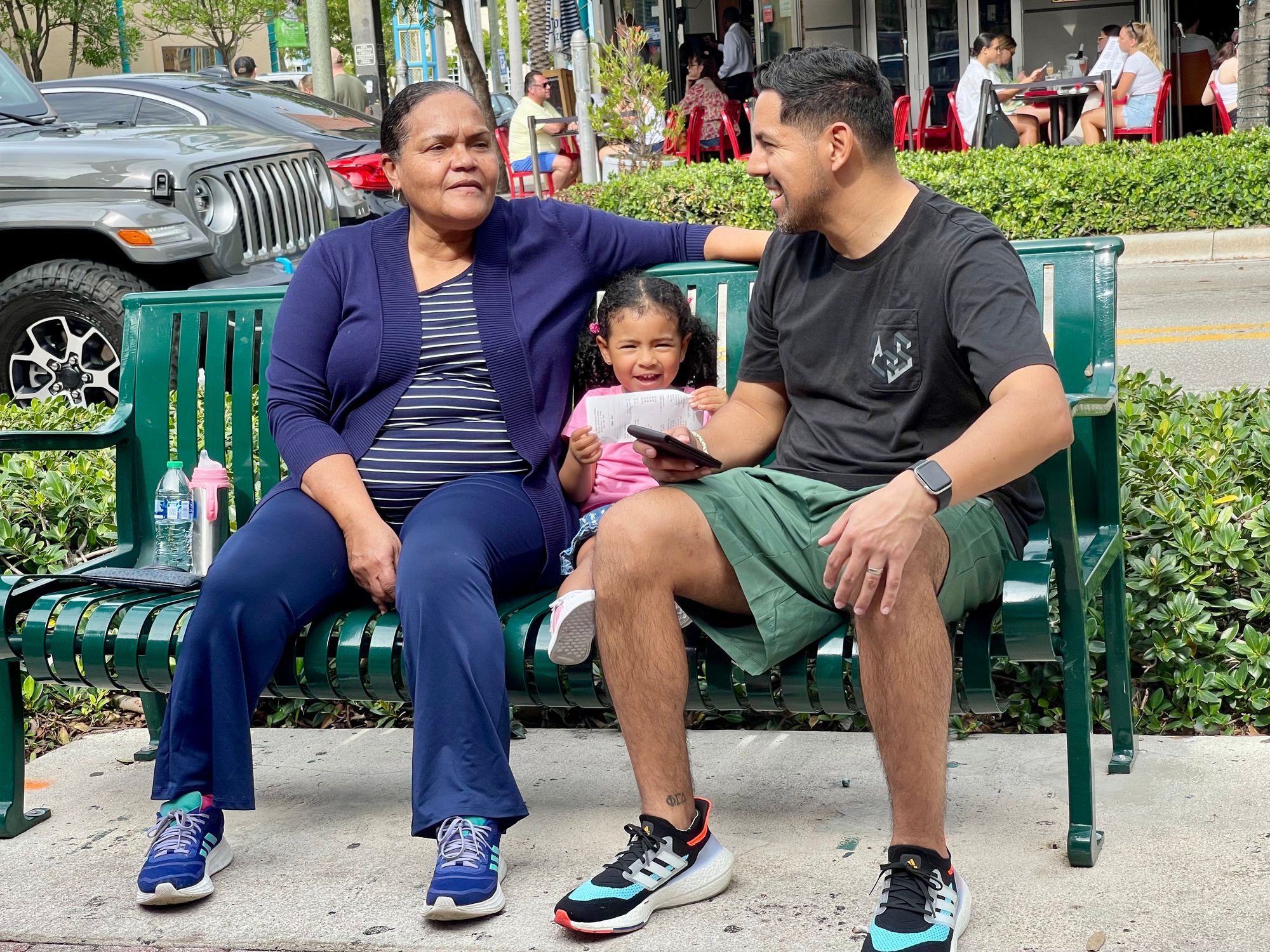
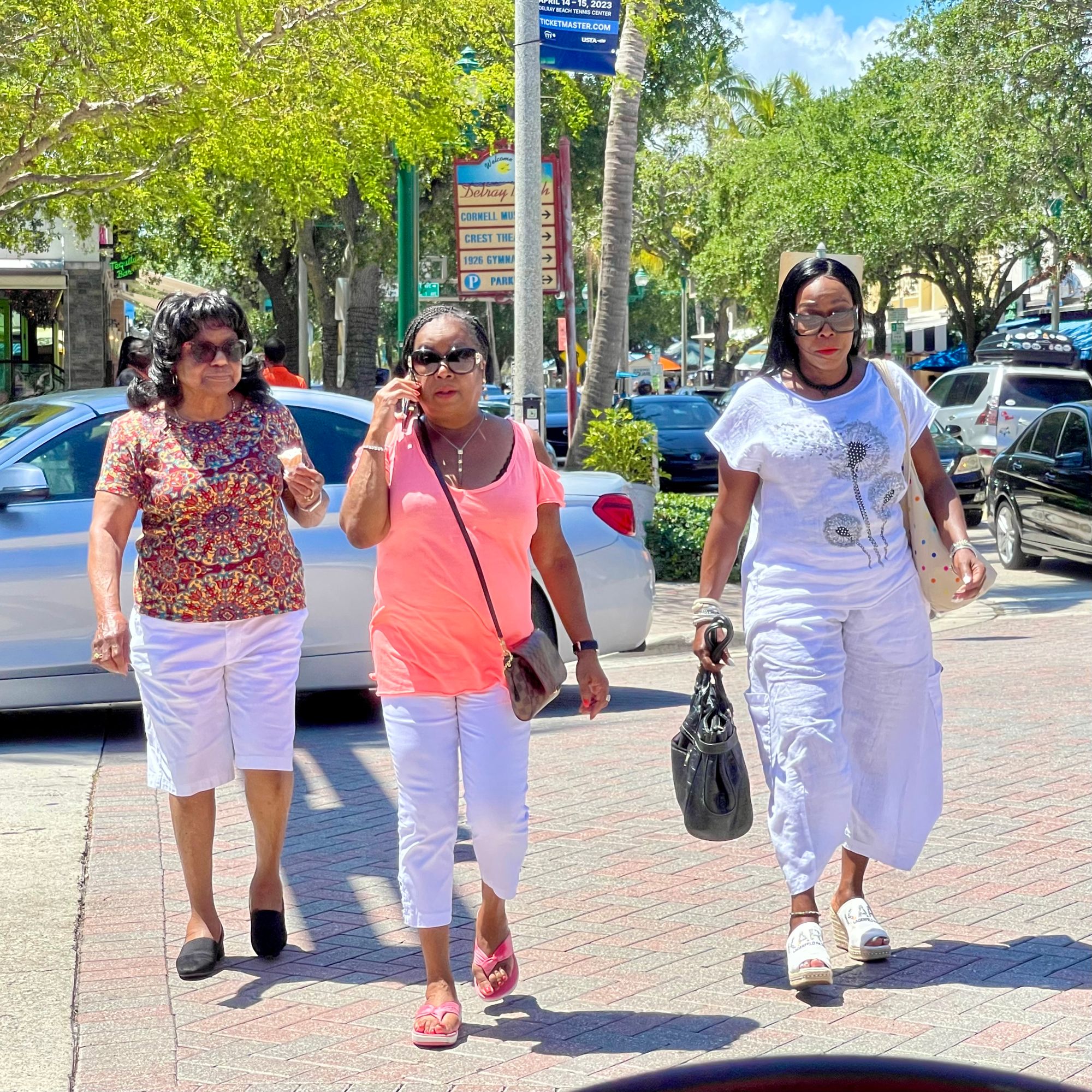
The Best Sidewalks in North America?
As William H. Whyte said, "Rich street life is no frill. It is an expression of the most ancient function of a city—a place for people to come together, all kinds of people, face-to-face."
Saratoga Springs, New York - One of the best places to see rich sidewalk life.
Saratoga Springs gets it right - it has wide sidewalks (30 feet), inside out storefronts, interesting facades and lighting, various options for seating, shade, wide separation from cars, and plentiful opportunities for social and commercial life. These sidewalks can serve as an example for other cities seeking revitalization.
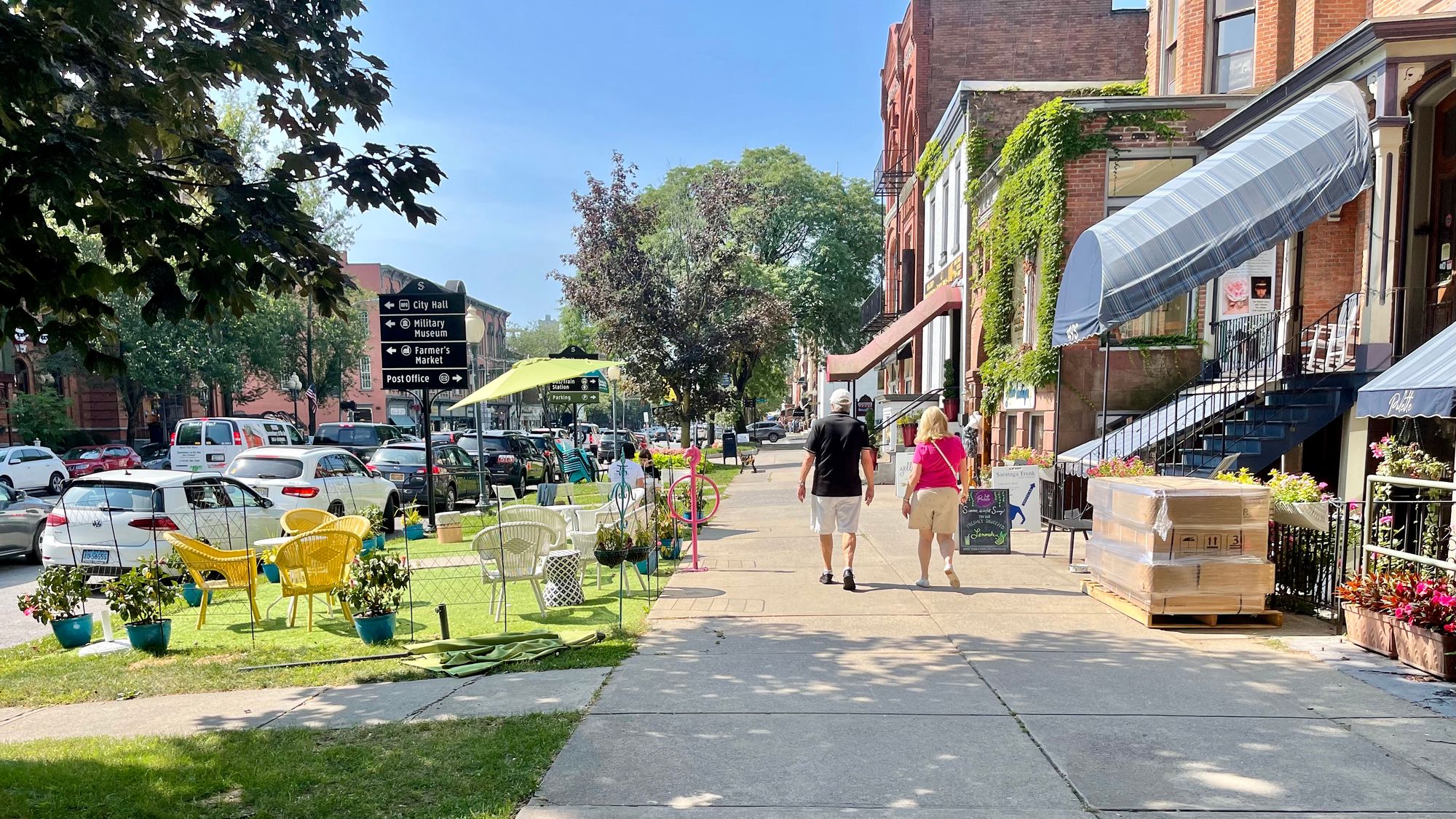
The best sidewalks have traits that make them welcoming, accessible, interesting, safe, and socially active places. They feel like public "living rooms."
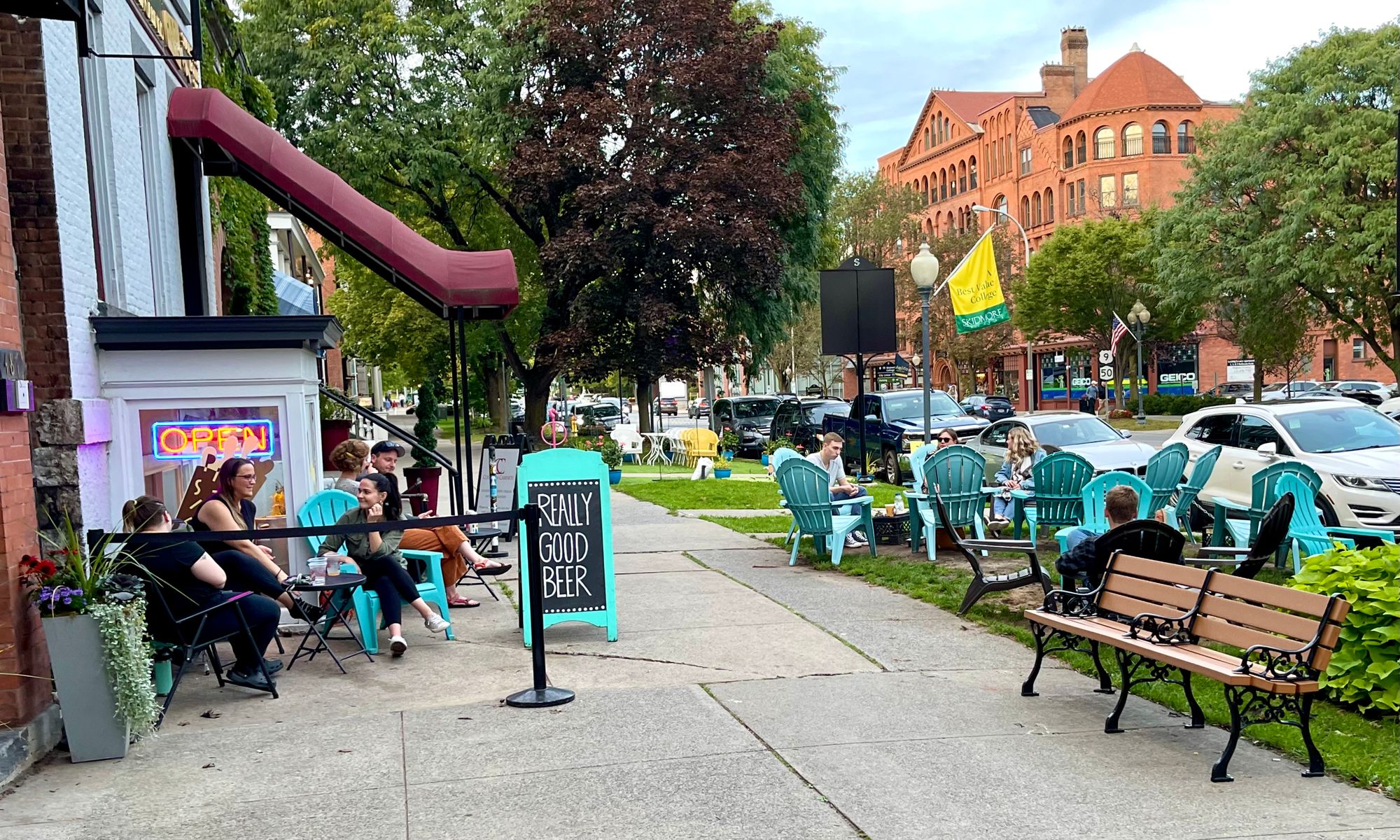
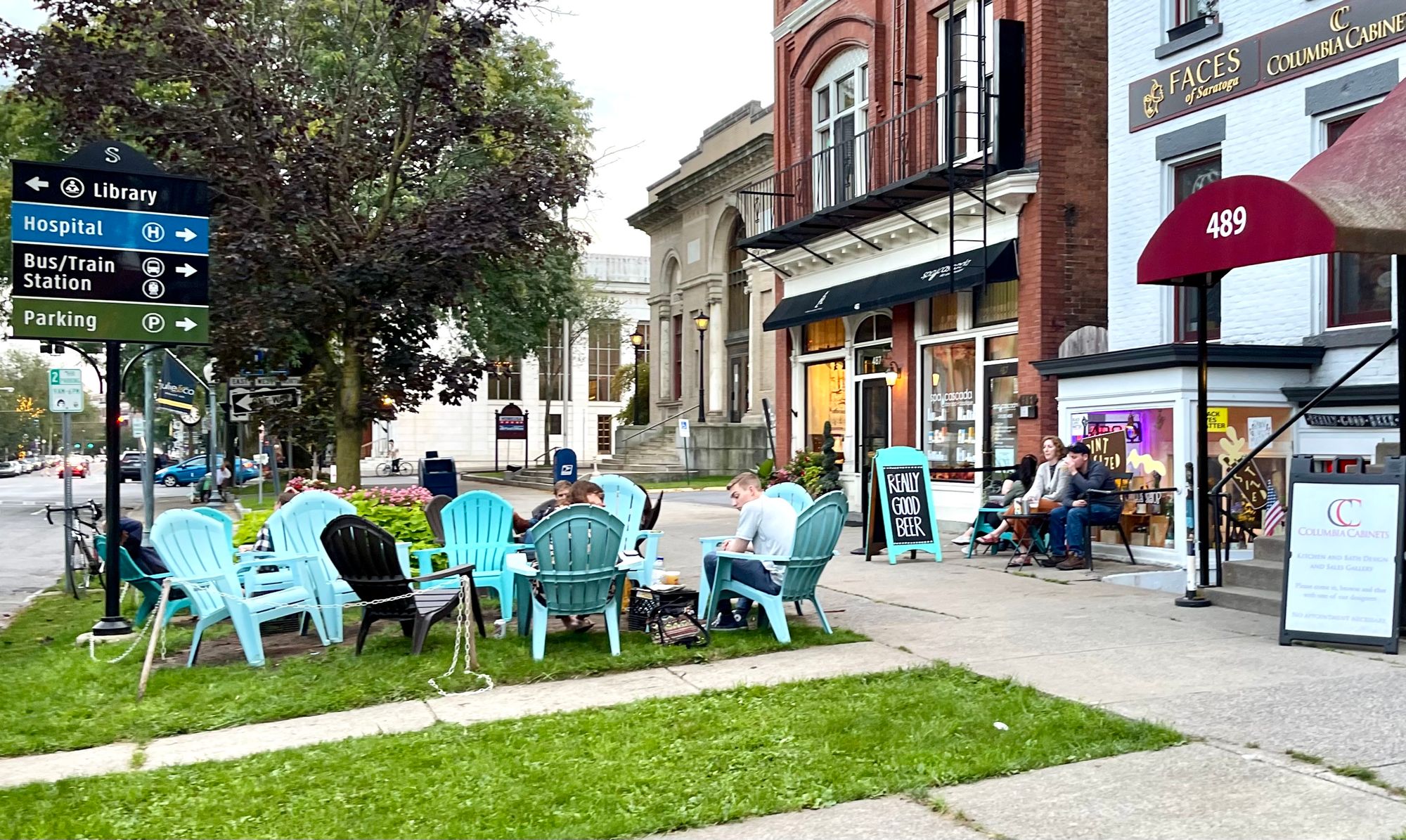
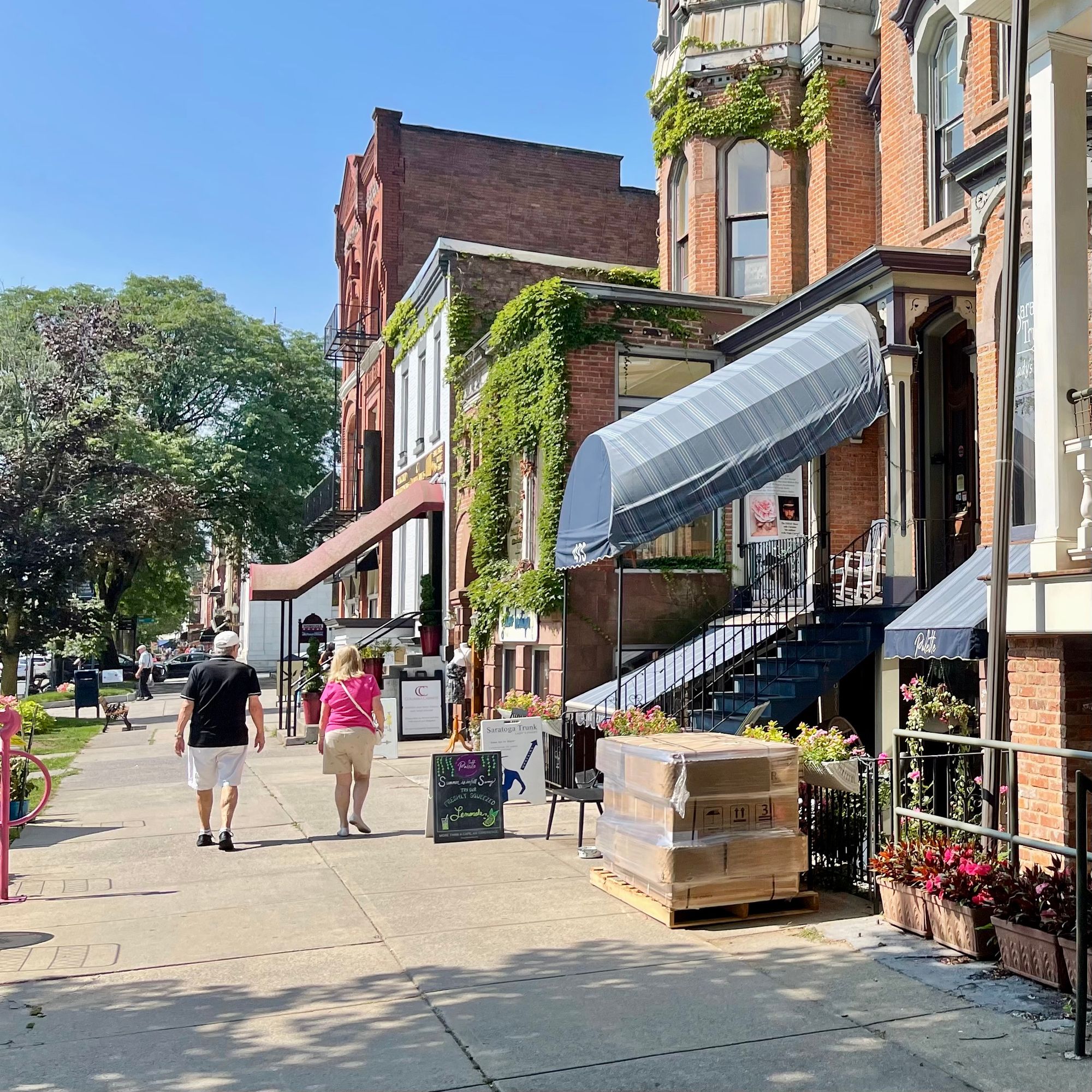
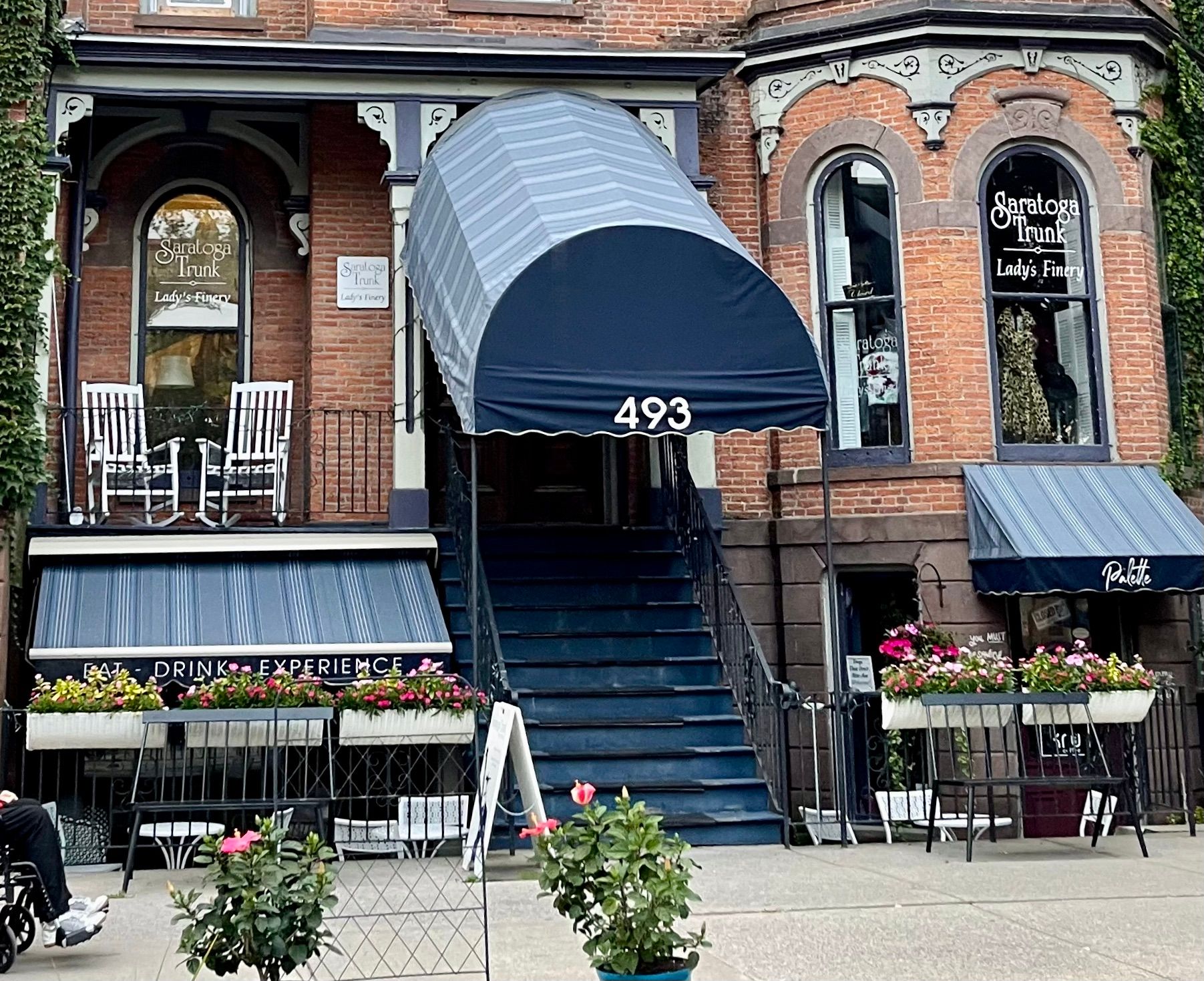

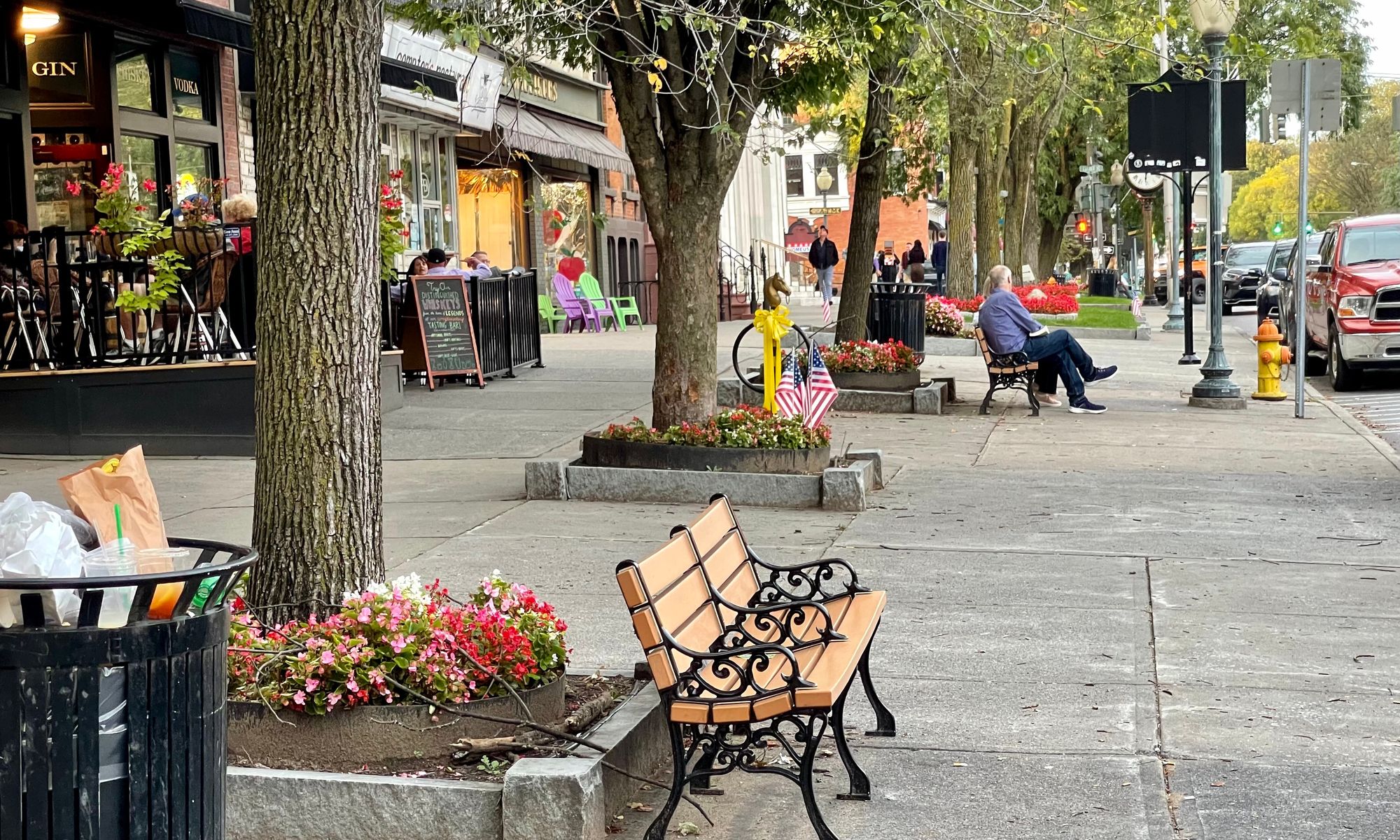
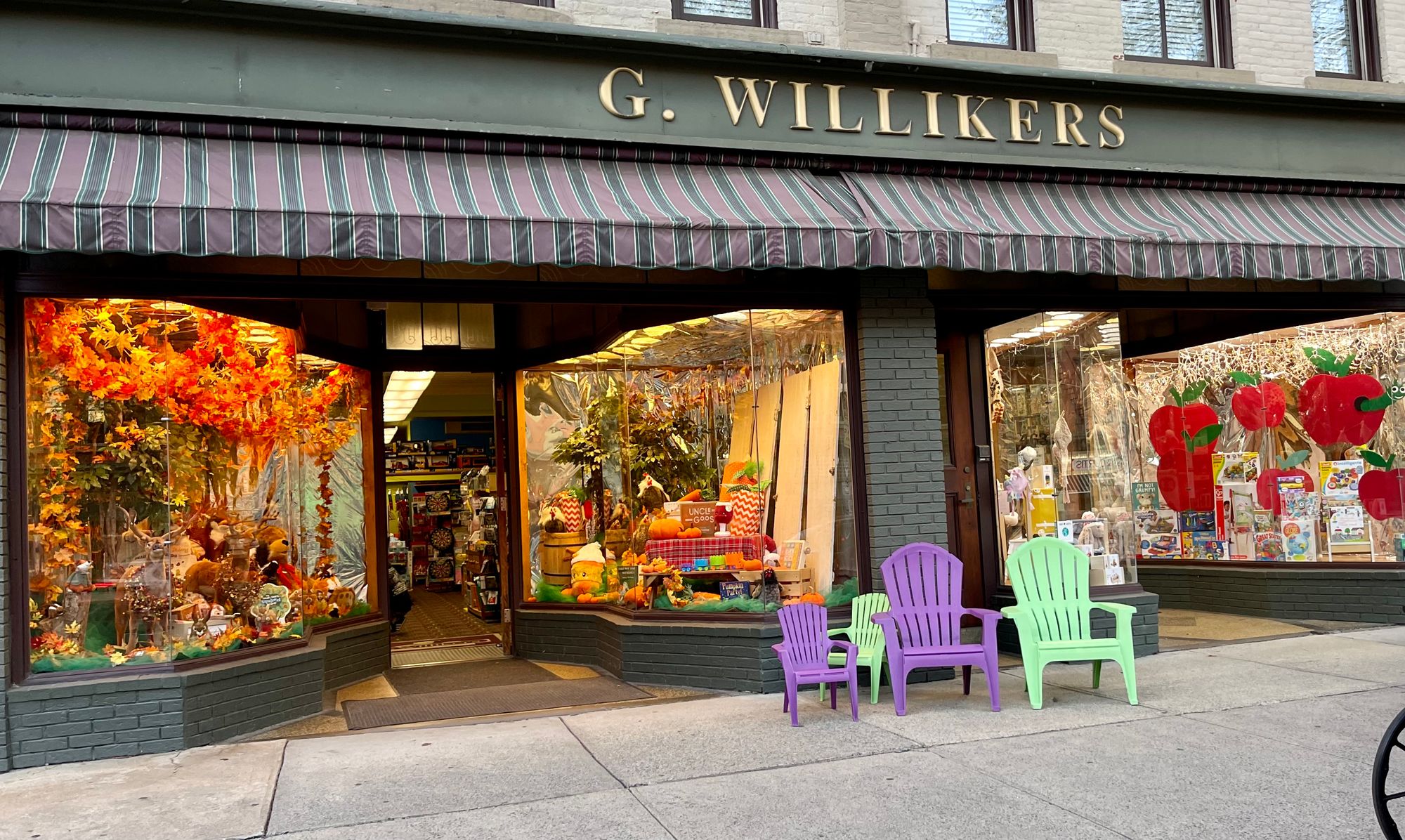
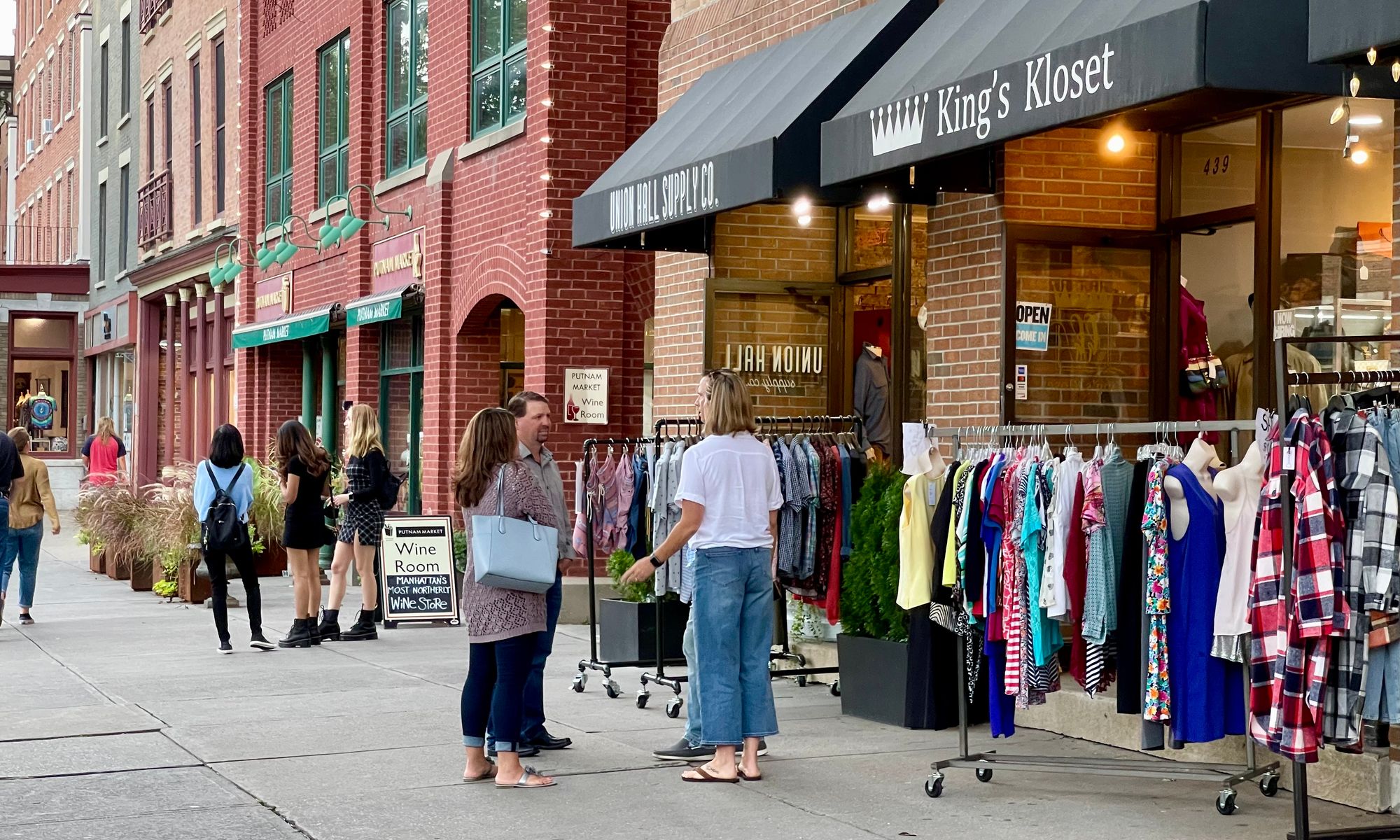
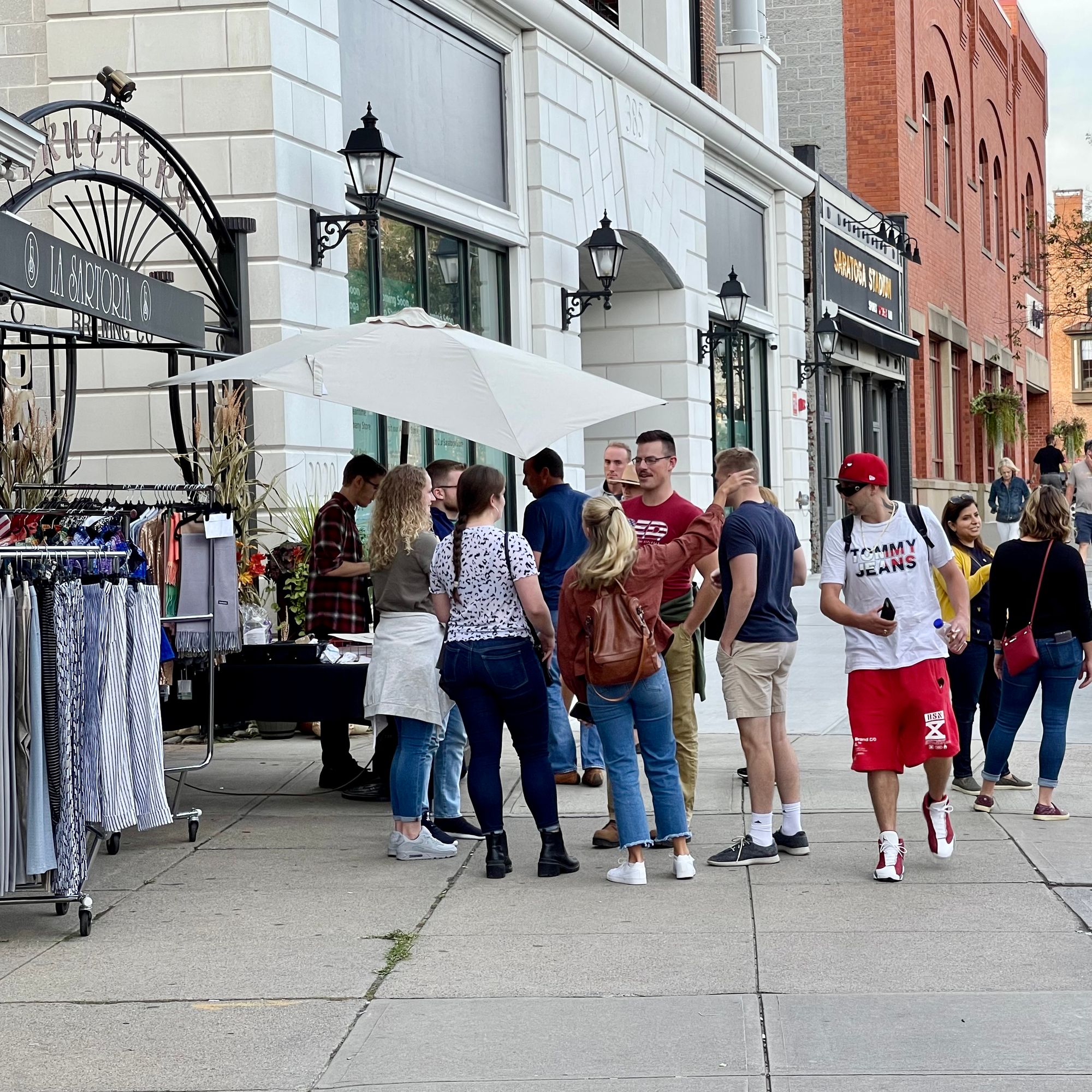
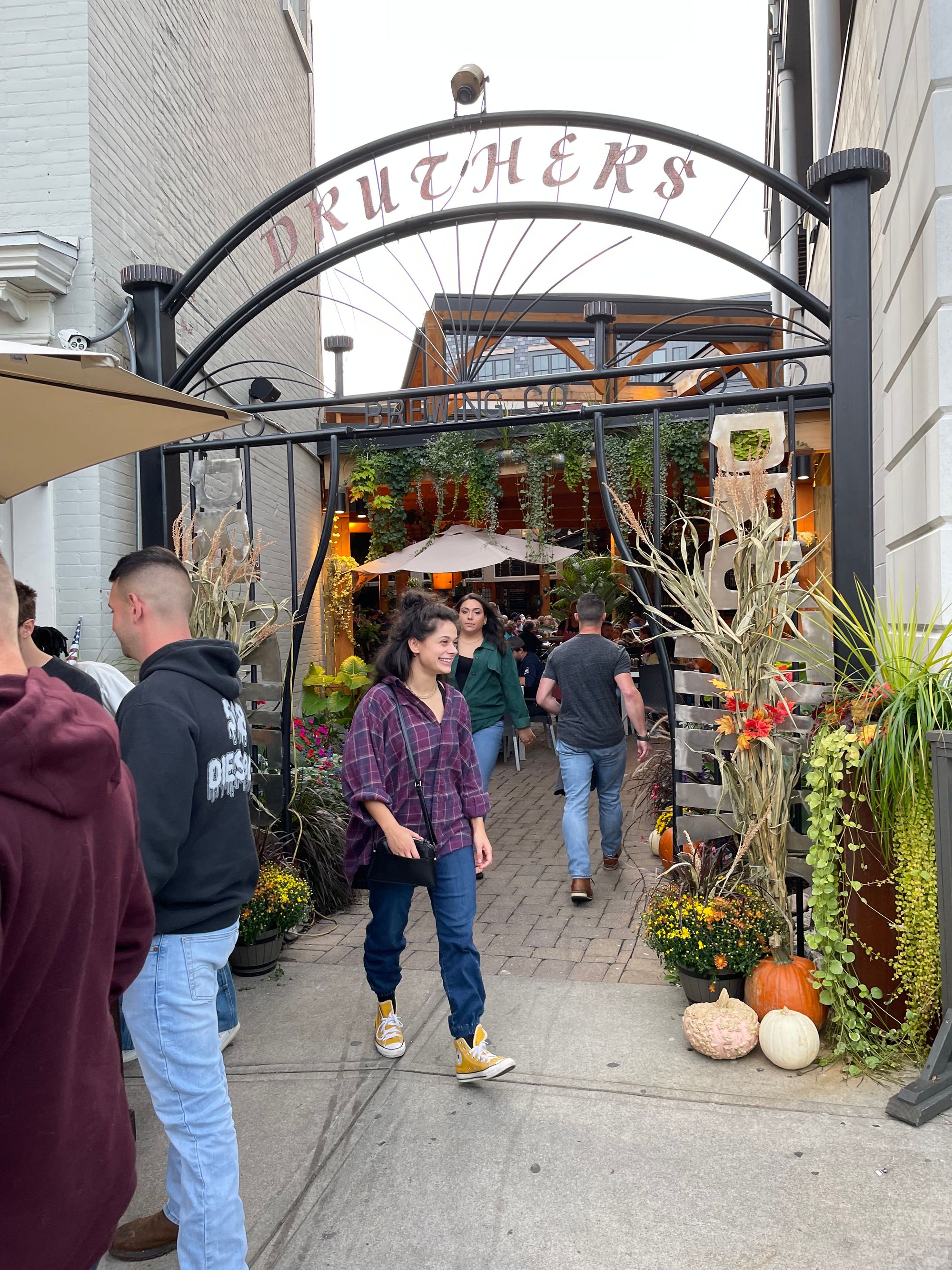
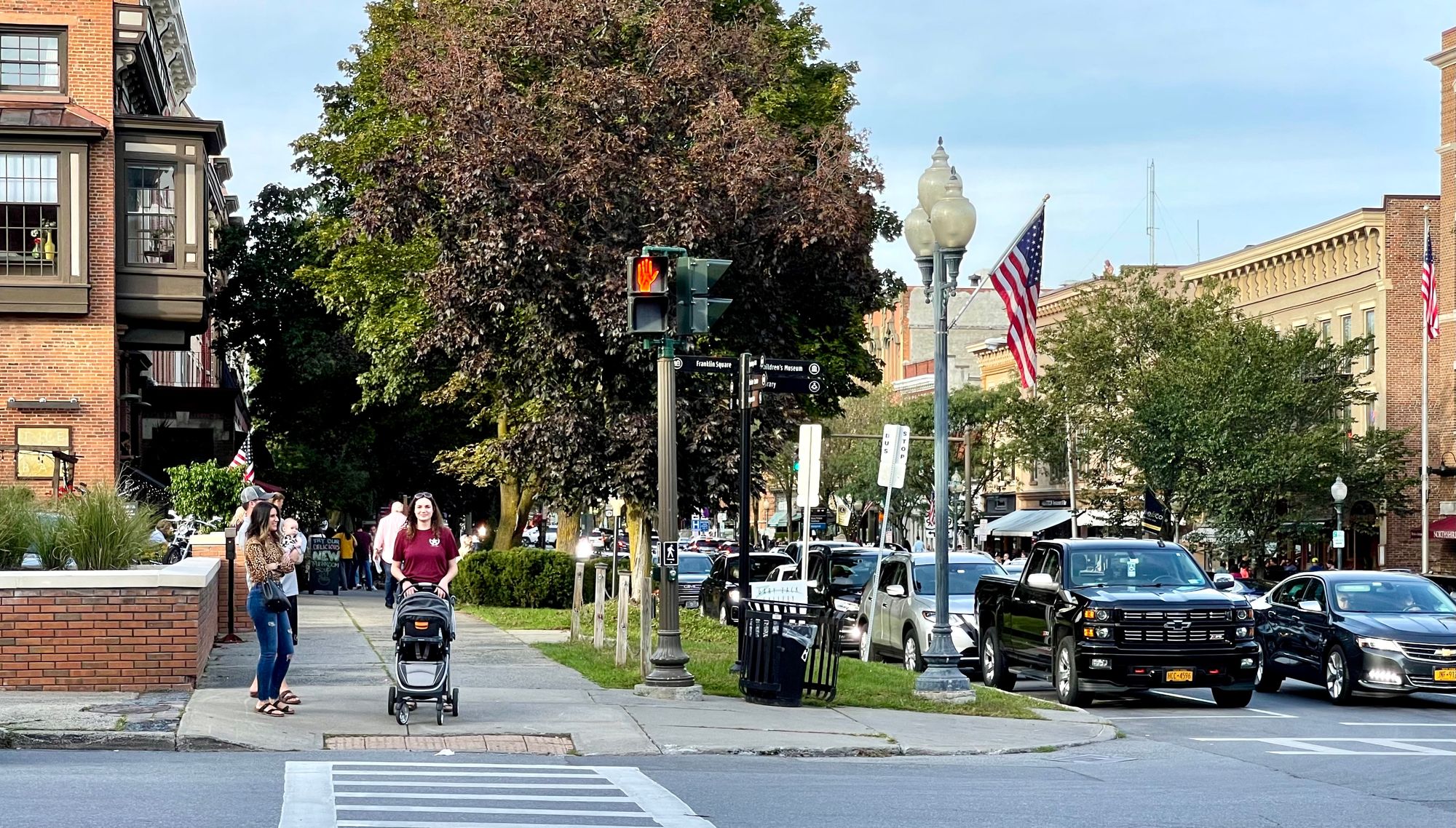
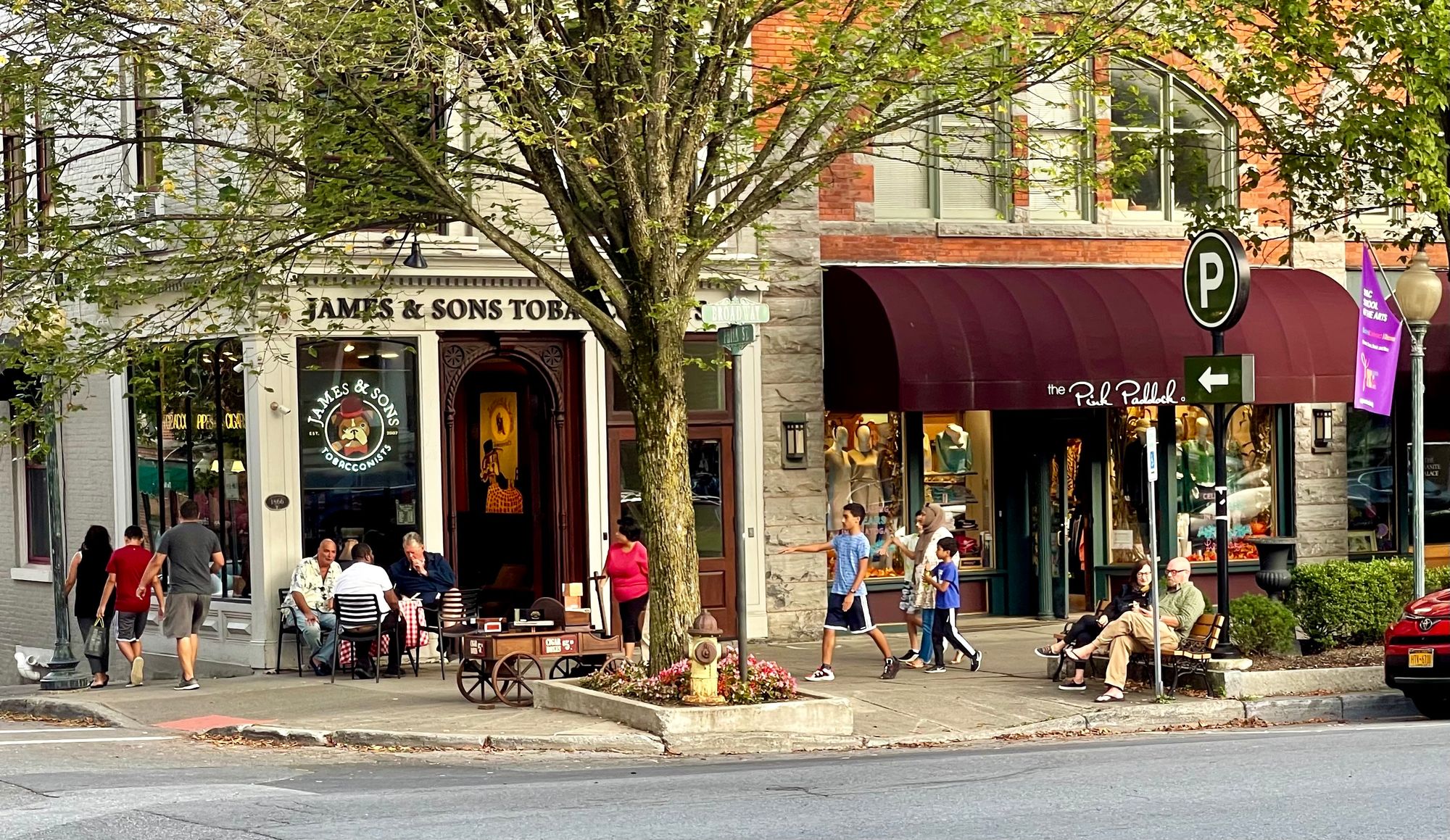
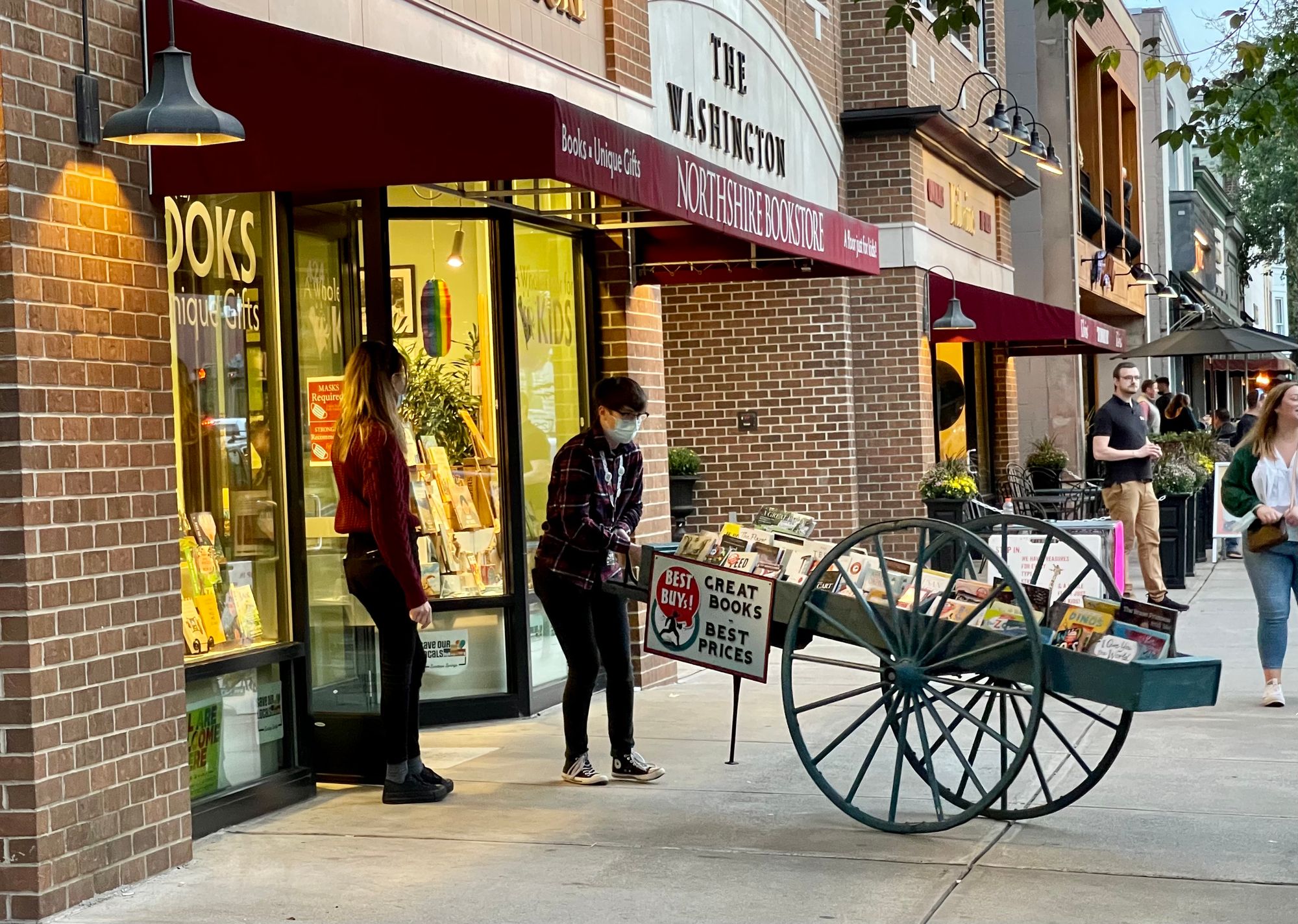
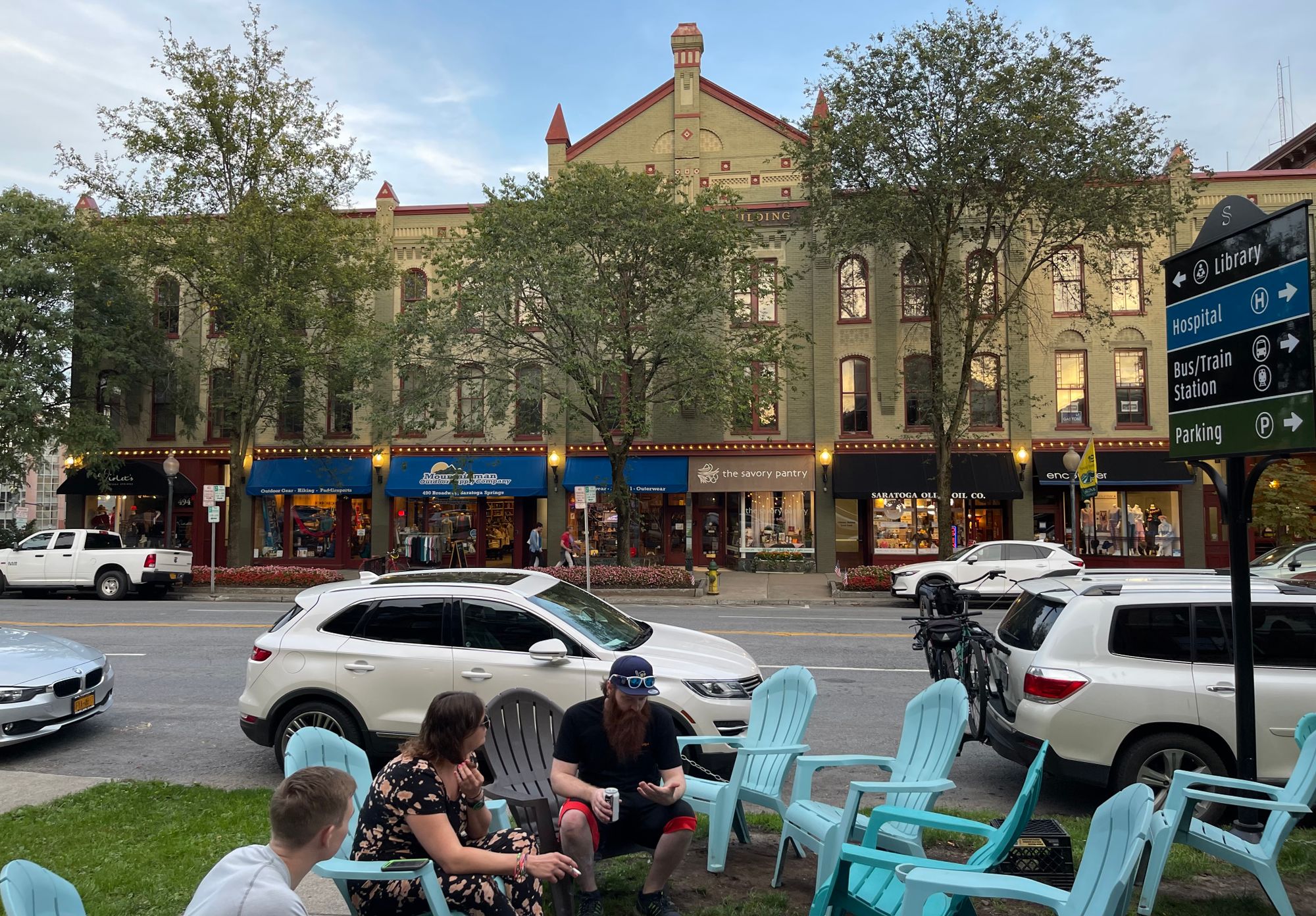
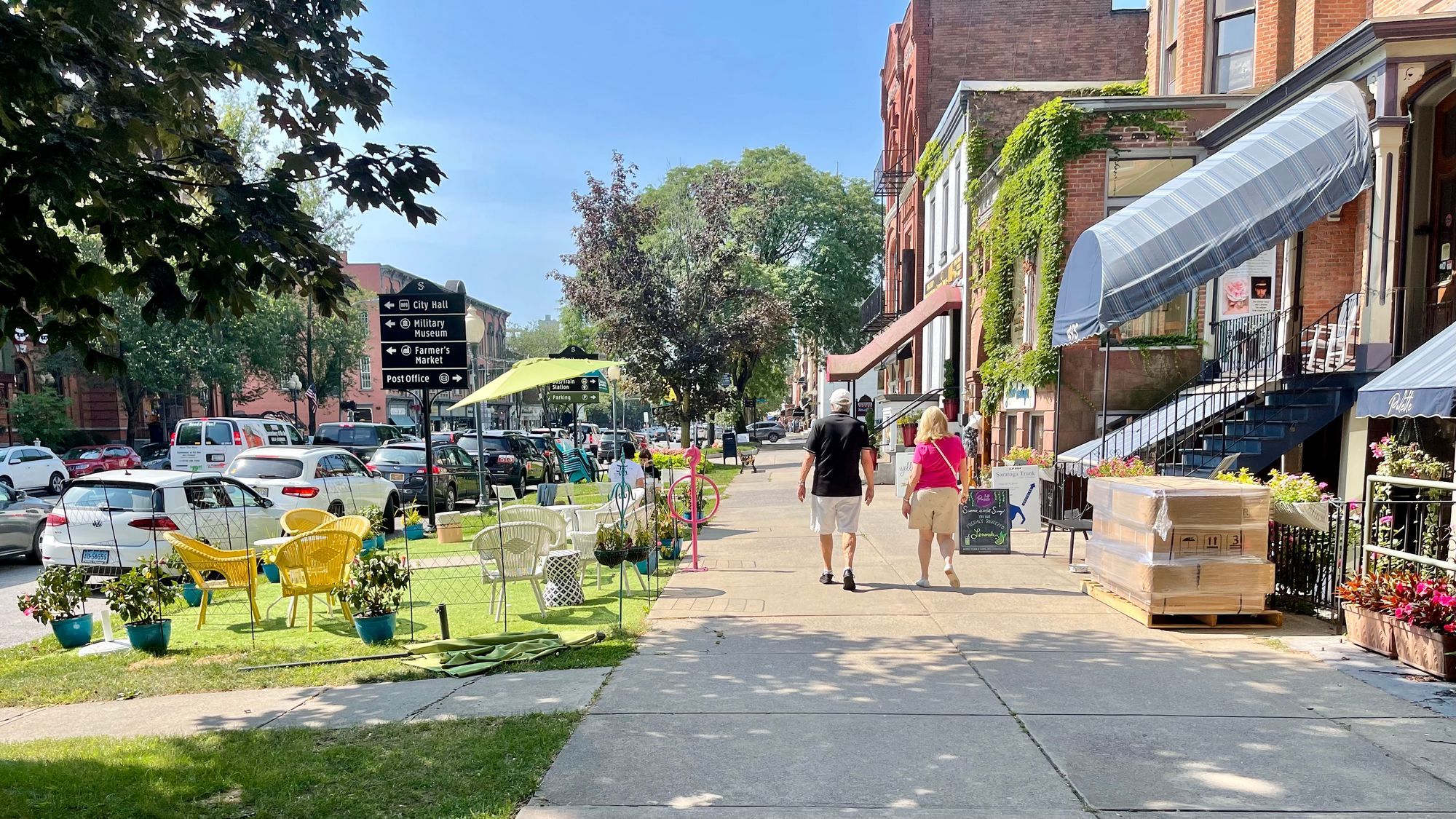
Putting People First
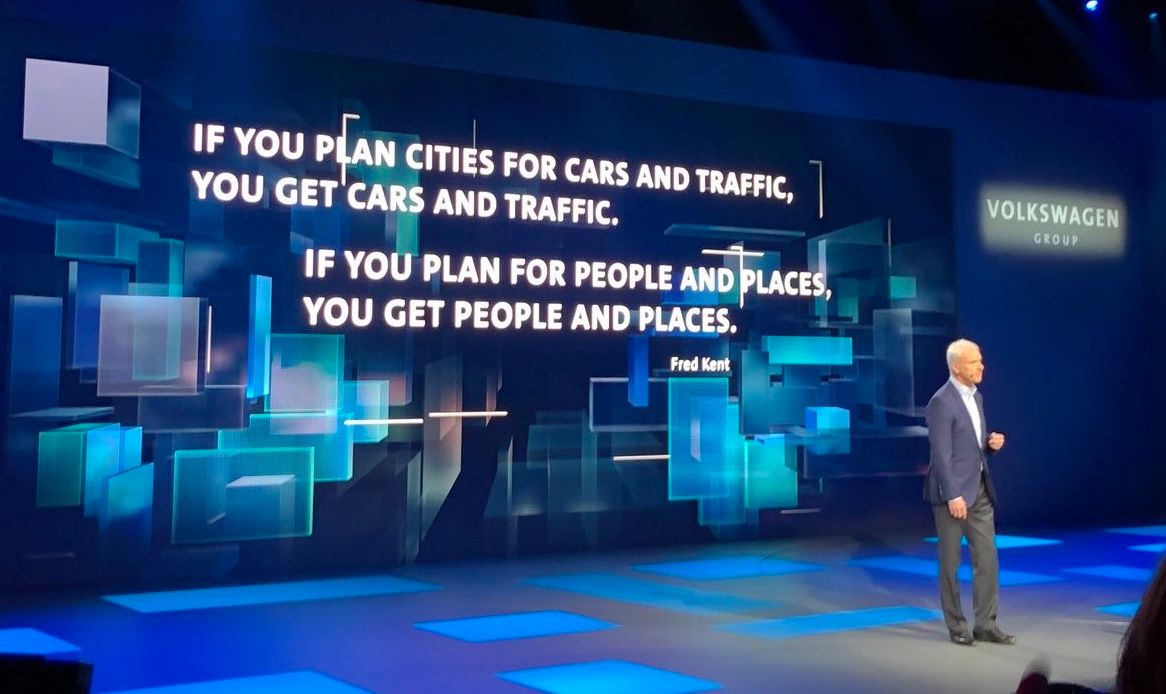
The power of street life is that it can connect us all — all ages, all cultures, all incomes, all faiths. Cities that make social life (and consequently local economic life) a top priority have created some of the best people-friendly streets we know. They have transformed streets into plazas, squares, and markets in ways people never dreamed possible. Often these uses are only temporary and begin as experimental, pop-up prototypes. Great sidewalks are not set in stone but evolve and change over time, becoming dynamic places that you want to come back to often.
And it's not just sidewalks! The late Hans Monderman, a seasoned, data-driven, traffic engineer from the Netherlands, developed what seemed like a radical strategy at the time. Based on years of experience and studies, he arrived at the simple idea that removing all signals and stop signs from an intersection and modifying the roadway to alert people in cars, on bikes and on foot to pay attention to their surroundings, intersections would greatly improve safety for pedestrians as well as motorists. His goal was creating a setting where eye contact between pedestrians and vehicles was necessary, so they would negotiate who should proceed.
He understood the importance of street life as a vital part of this approach he called "Shared Space." As he once put it, "If you want people to behave like they are in a village...build a village." And it works!
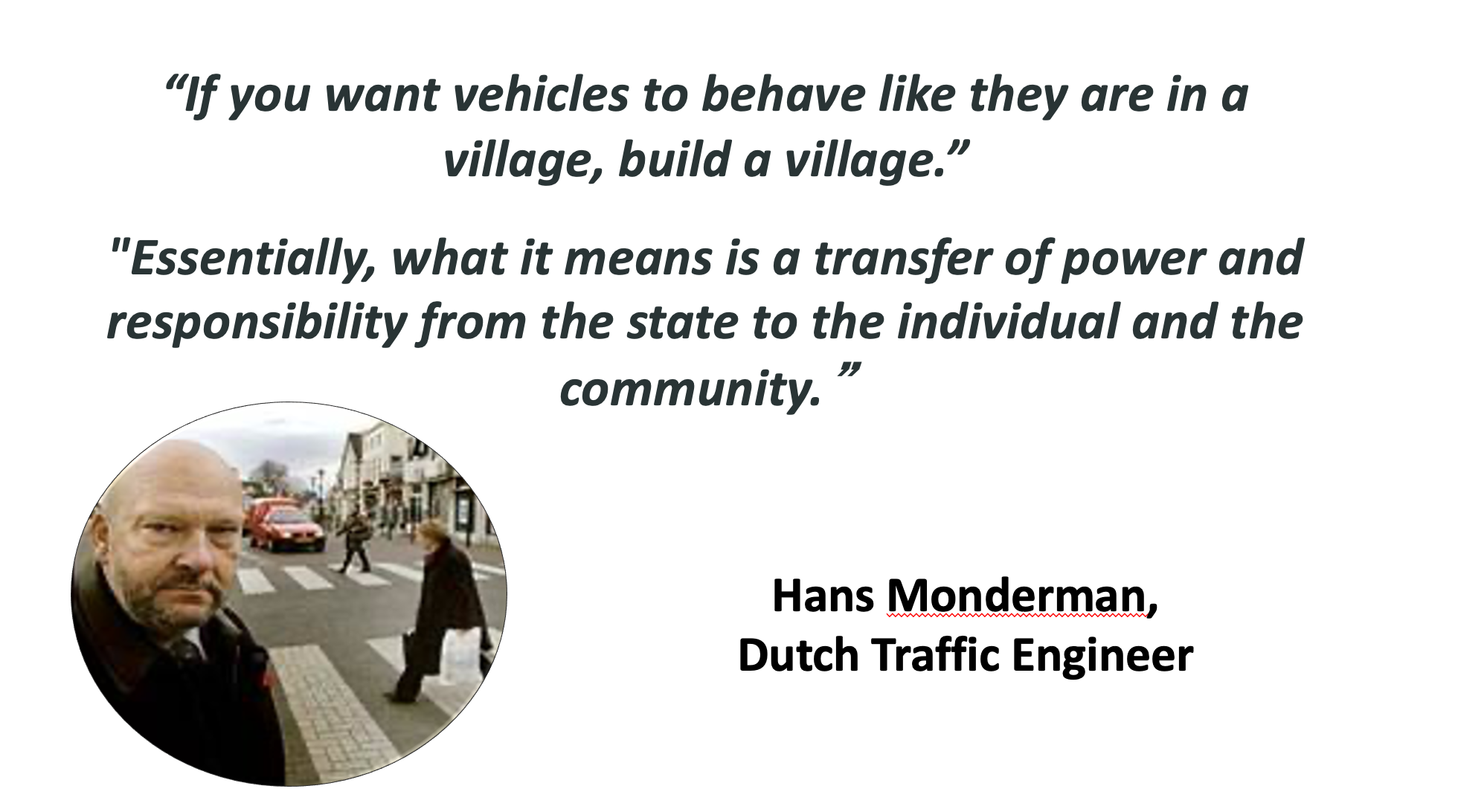
And then there's David Engwicht
David has always had a special place on our list. Hailing from Brisbane, Australia, he developed a concept called Mental Speed Bumps, where people and drivers are taken out of their stupor to recognize that their surroundings deserve more attention. Engwicht is an international leader of efforts to reduce the negative impacts of motor vehicle traffic on cities and towns...he is considered one of the fathers of traffic calming and the inventor of the Walking School Bus street reclaiming techniques.
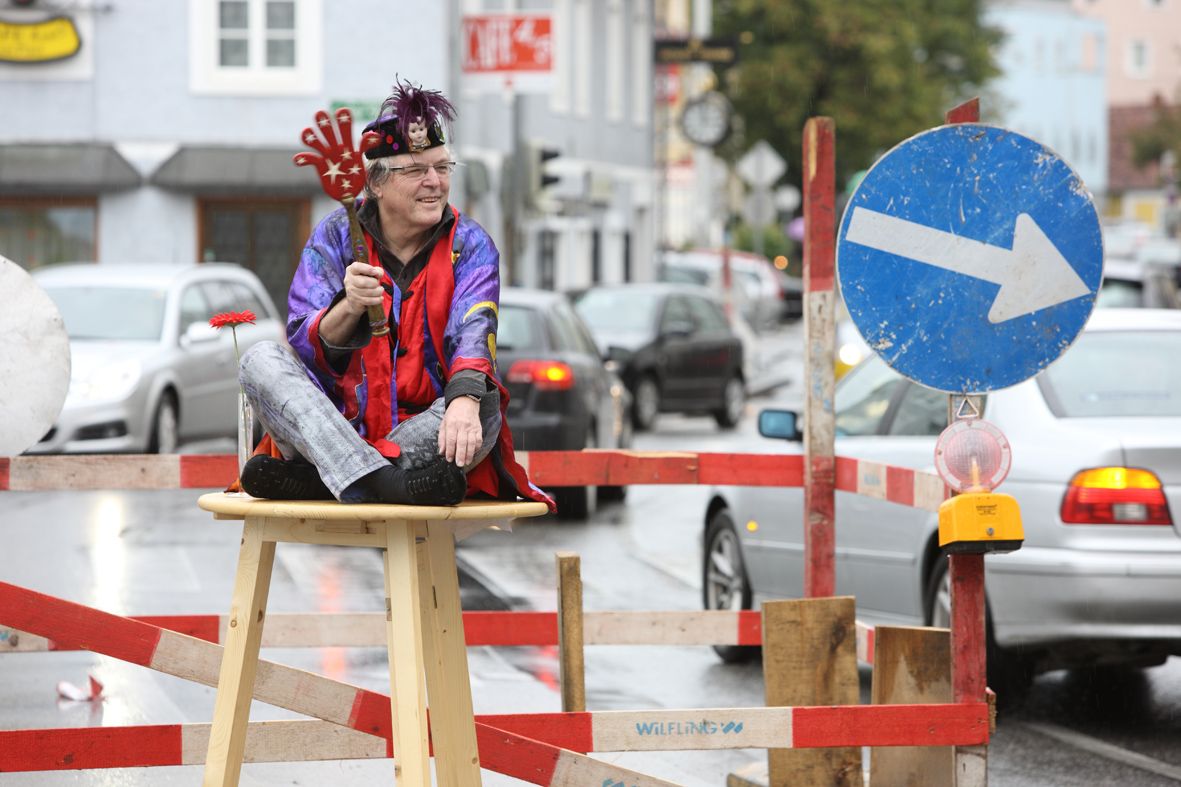
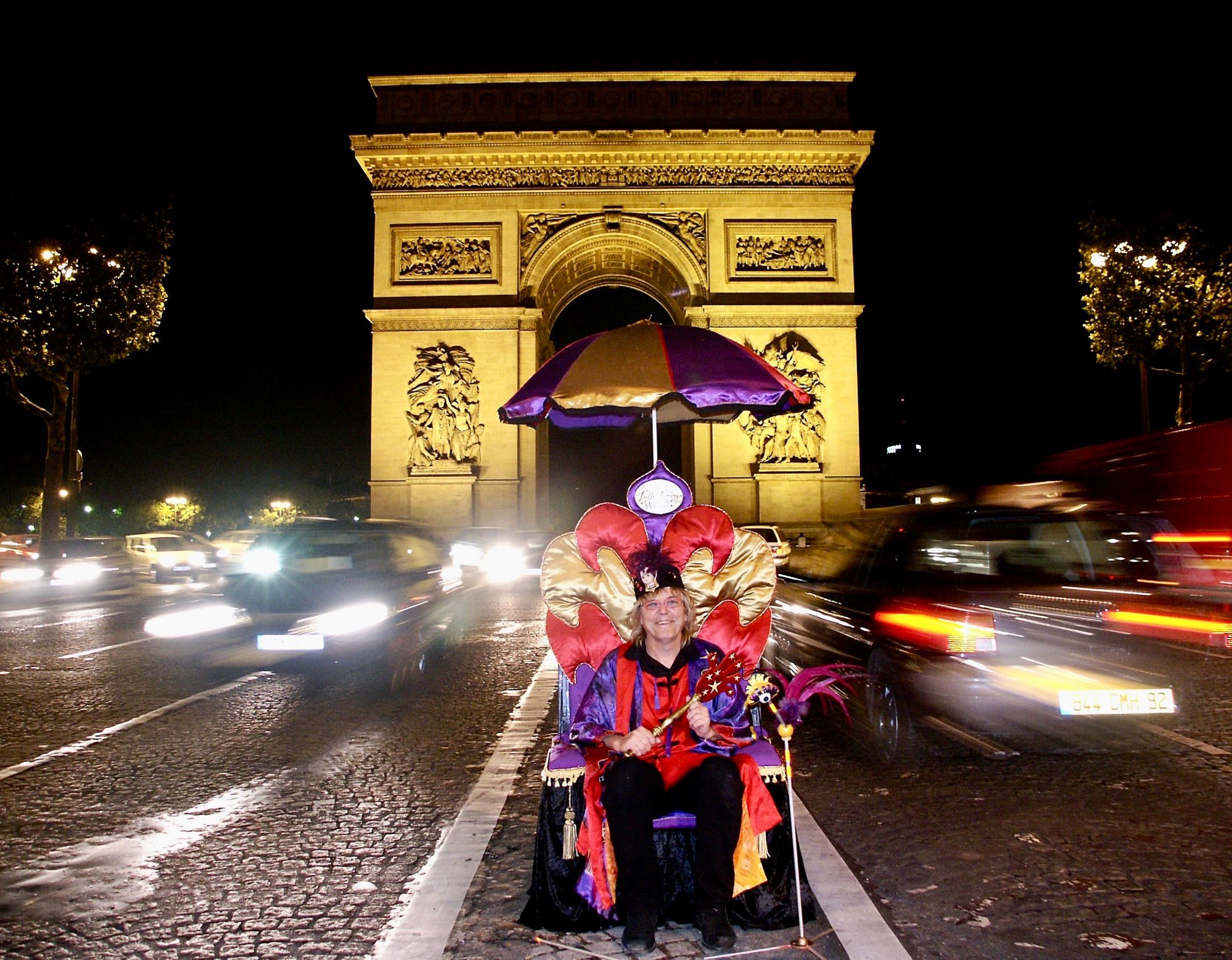
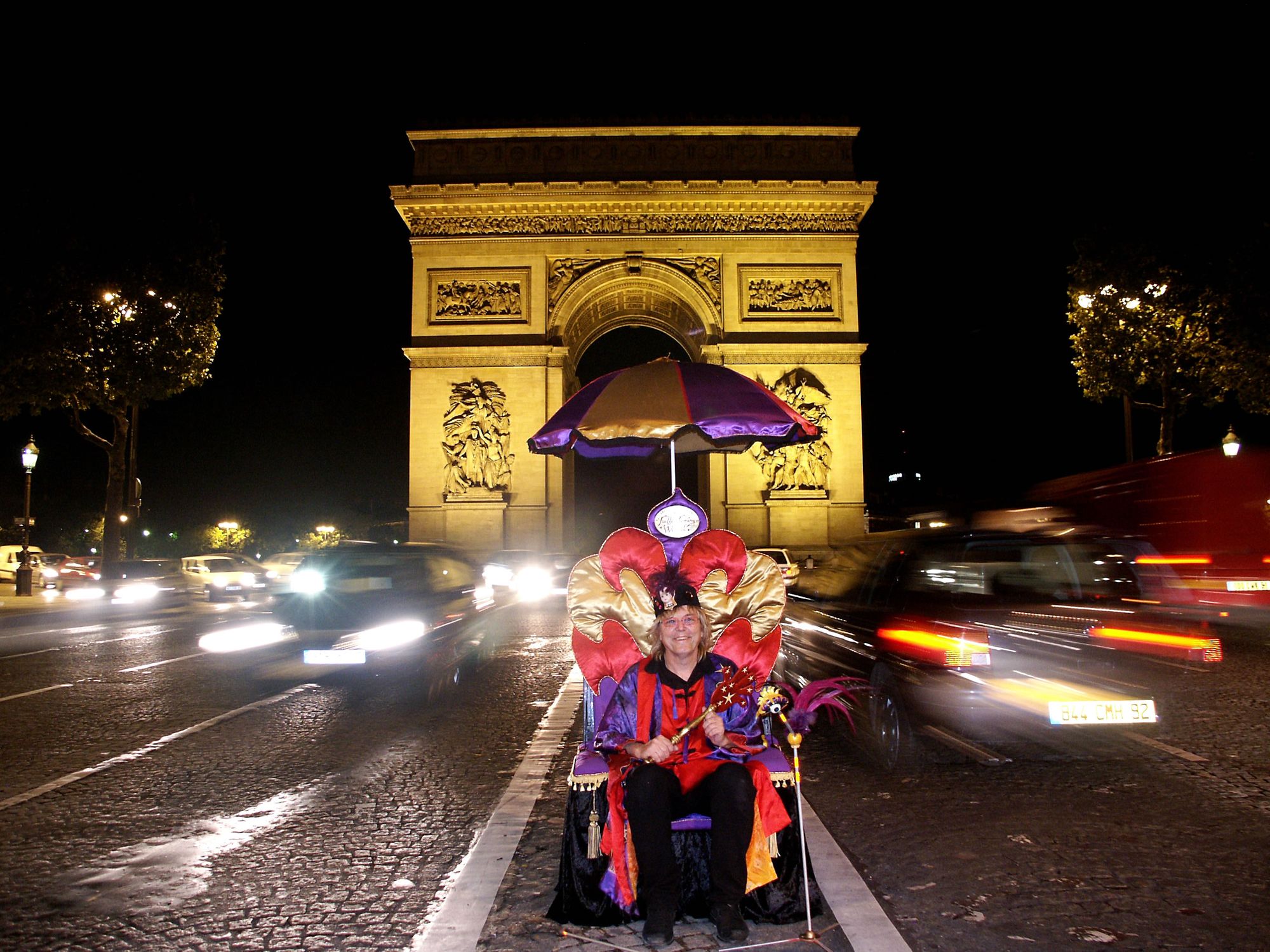
The ideas of these forward-thinkers and others like them (of which we are seeing more and more) outline the ways in which we can move our streets away from supporting traffic and toward supporting people. That way is where the future lies.
Takeaways
"If we can develop and design streets so that they are wonderful, fulfilling places to be—community-building places, attractive for all people—then we will have successfully designed about one-third of the city directly and will have had an immense impact on the rest." —Allan Jacob, Placemaking Pioneer
- Streetlife connects us all.
- Start with the sidewalk to create streets filled with people and great places.
- If cars must be present around people and businesses, they need to drive slow. This can be achieved by narrowing lanes and reducing the number of lanes.
- Blur the distinction between sidewalks and street when you can, which sends the message the entire roadway is a shared space. Experiment with flexible ways of sharing the streets among all kinds of users—people on foot, bike, transit and inside cars. Follow the lead of David Engwicht (find out more here) and Hans Monderman (1945-2008, find out more here).
- Keep in mind that social life on streets is a key local economic development strategy.
Additional Resources on Streets and Sidewalks:
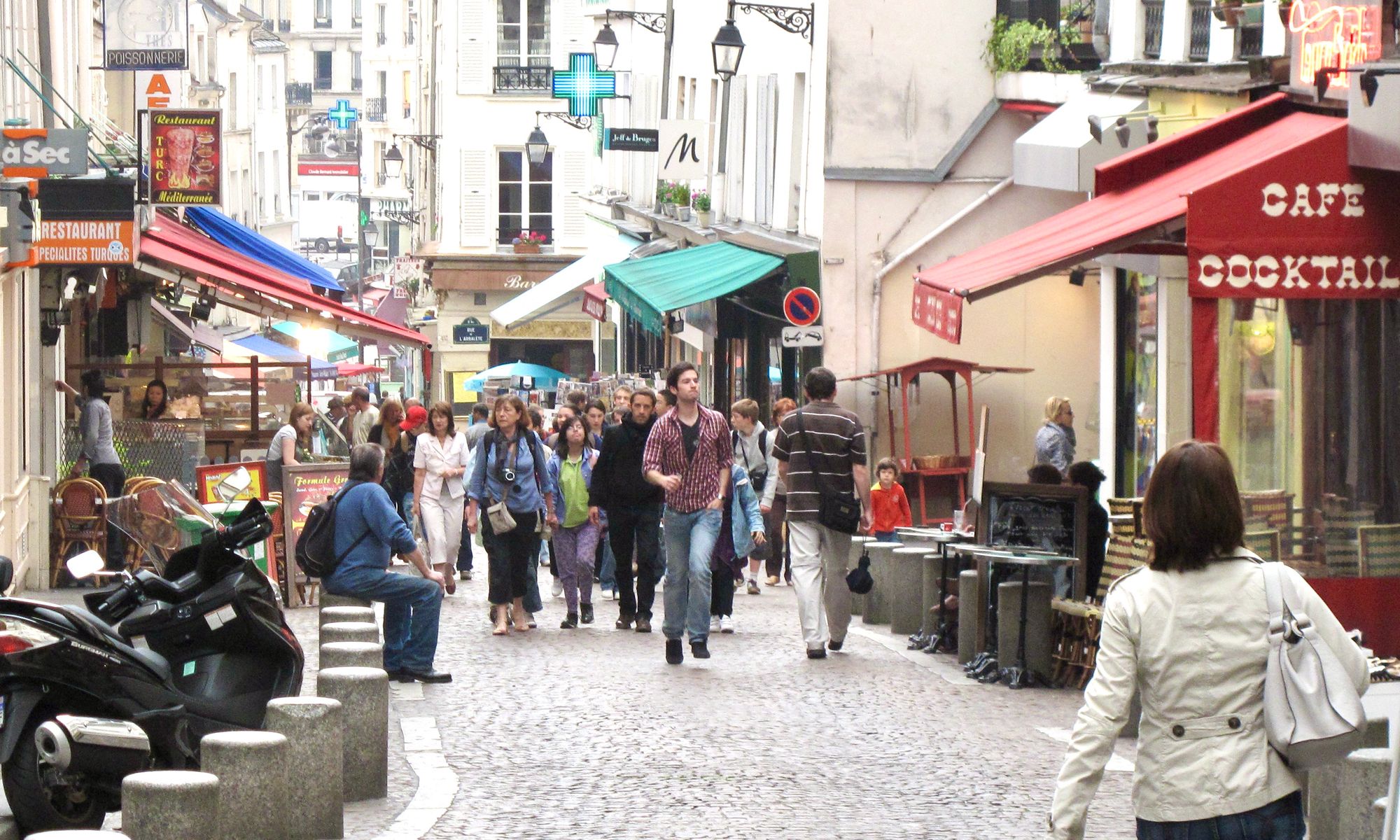
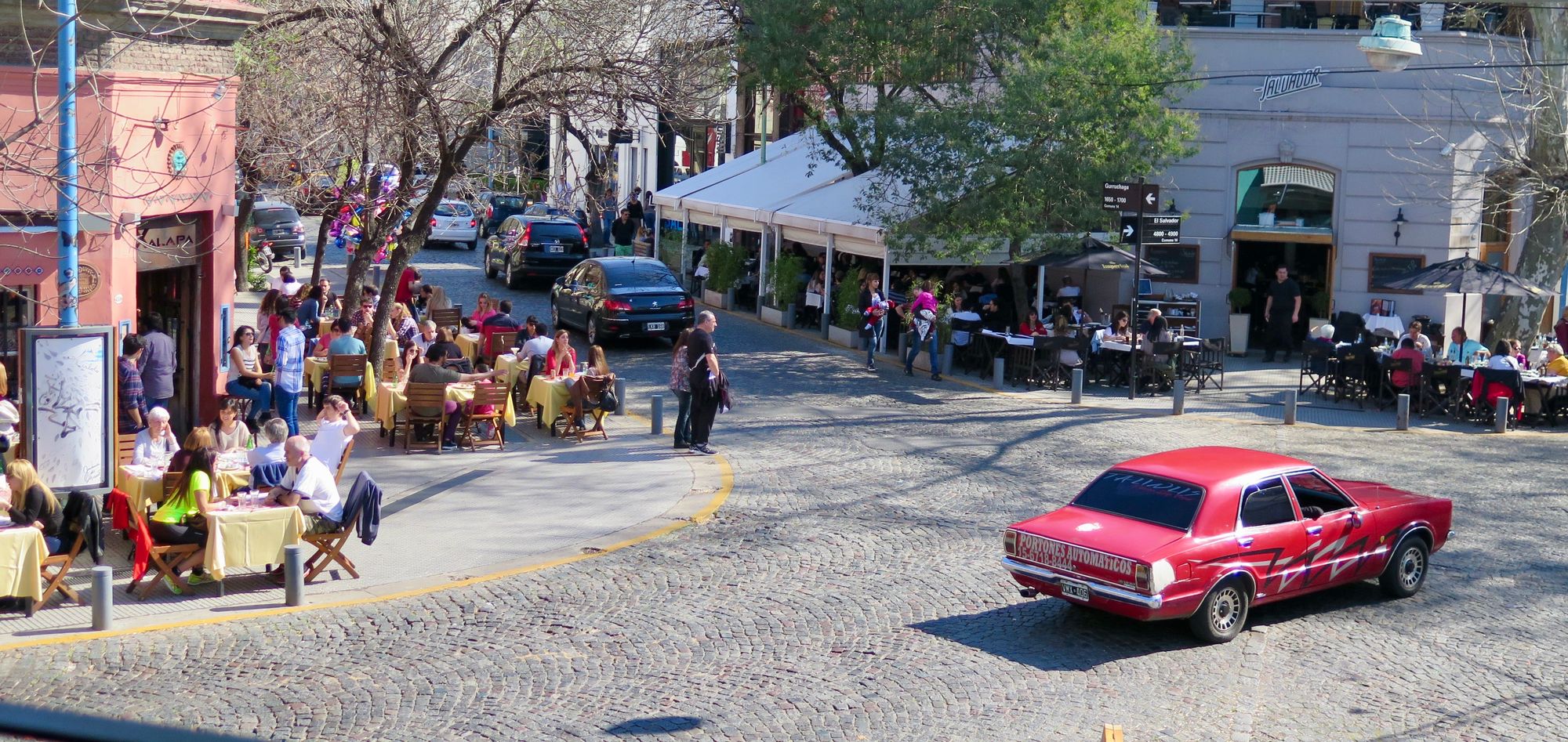
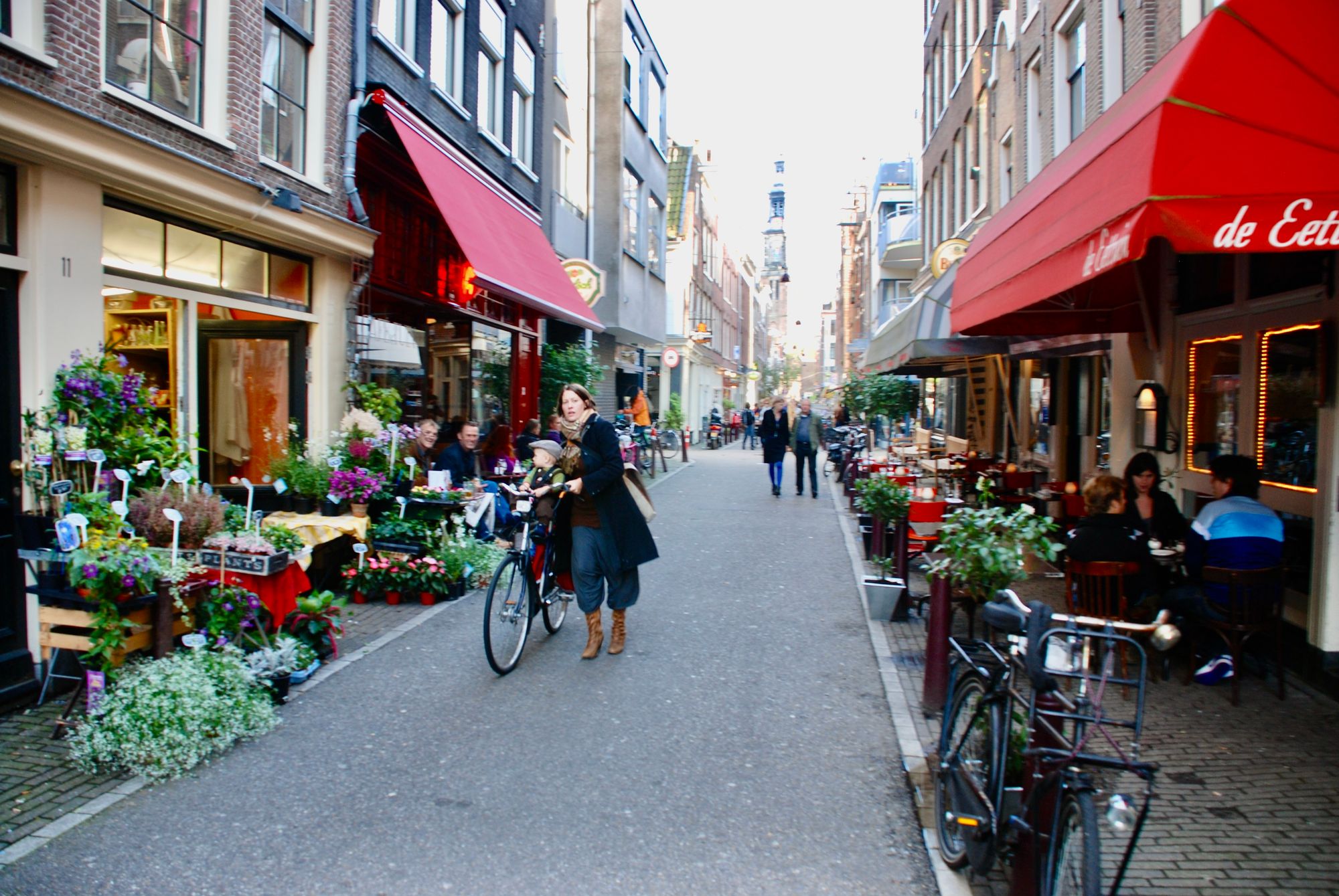
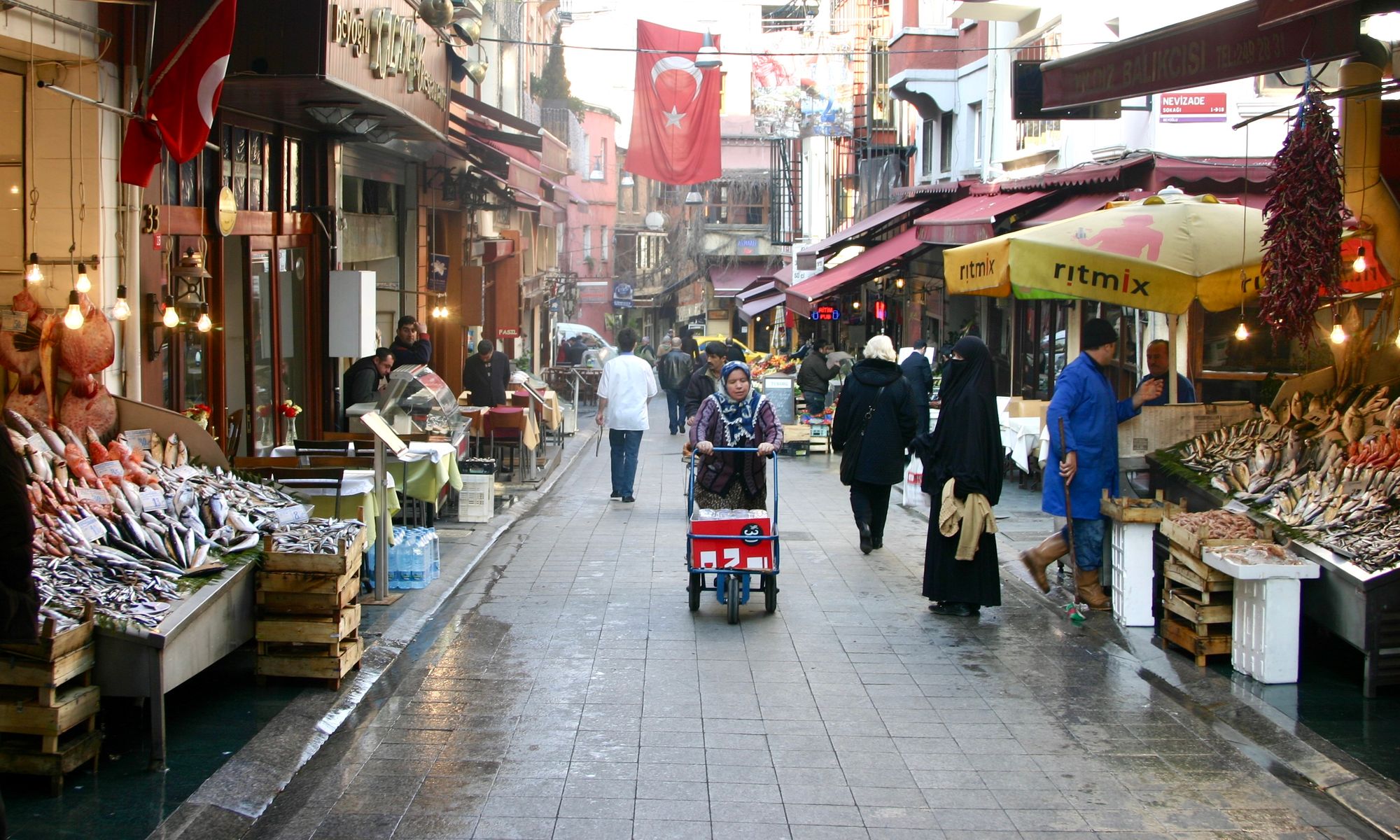
Next Steps for the Placemaking Movement:
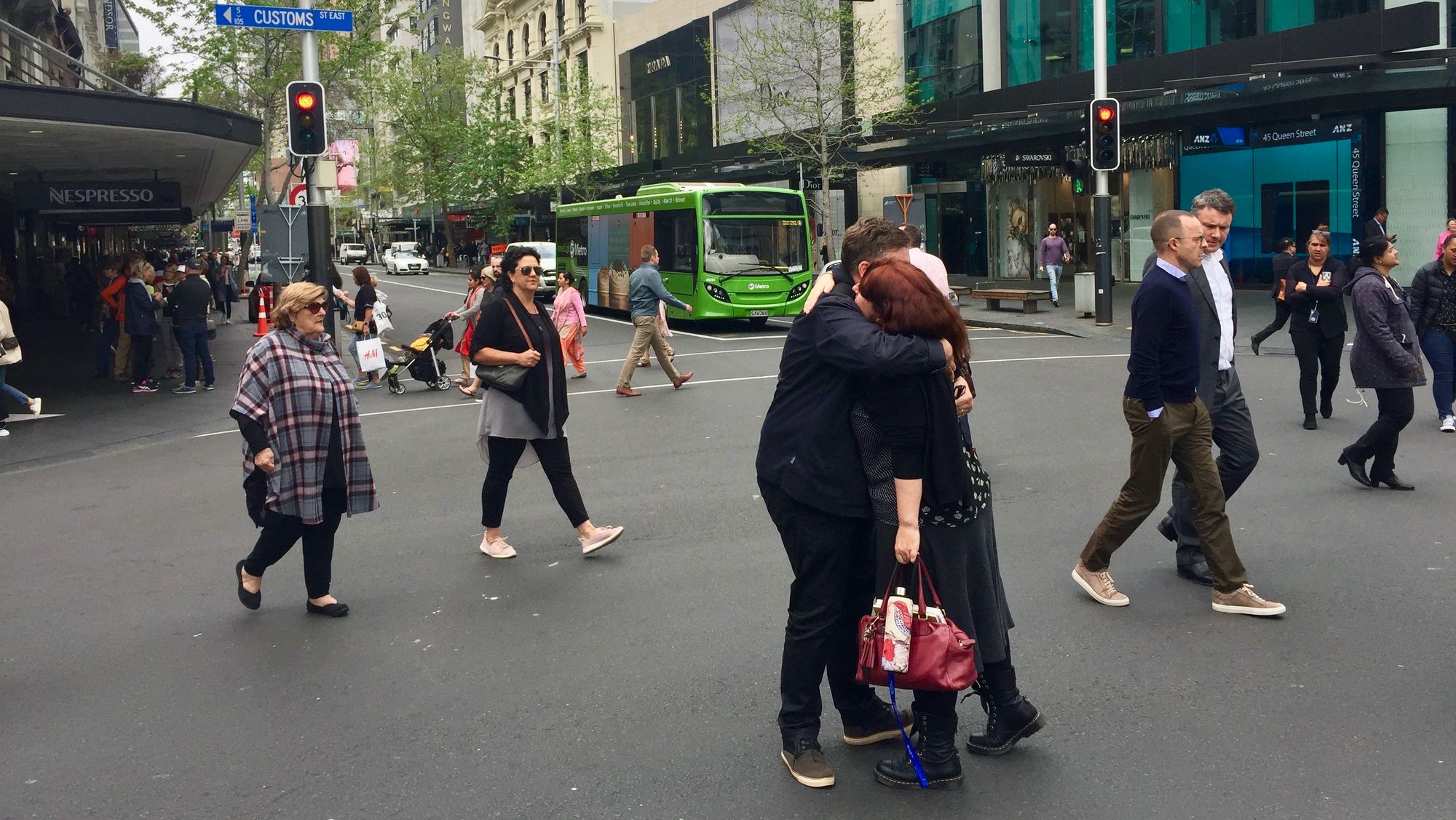
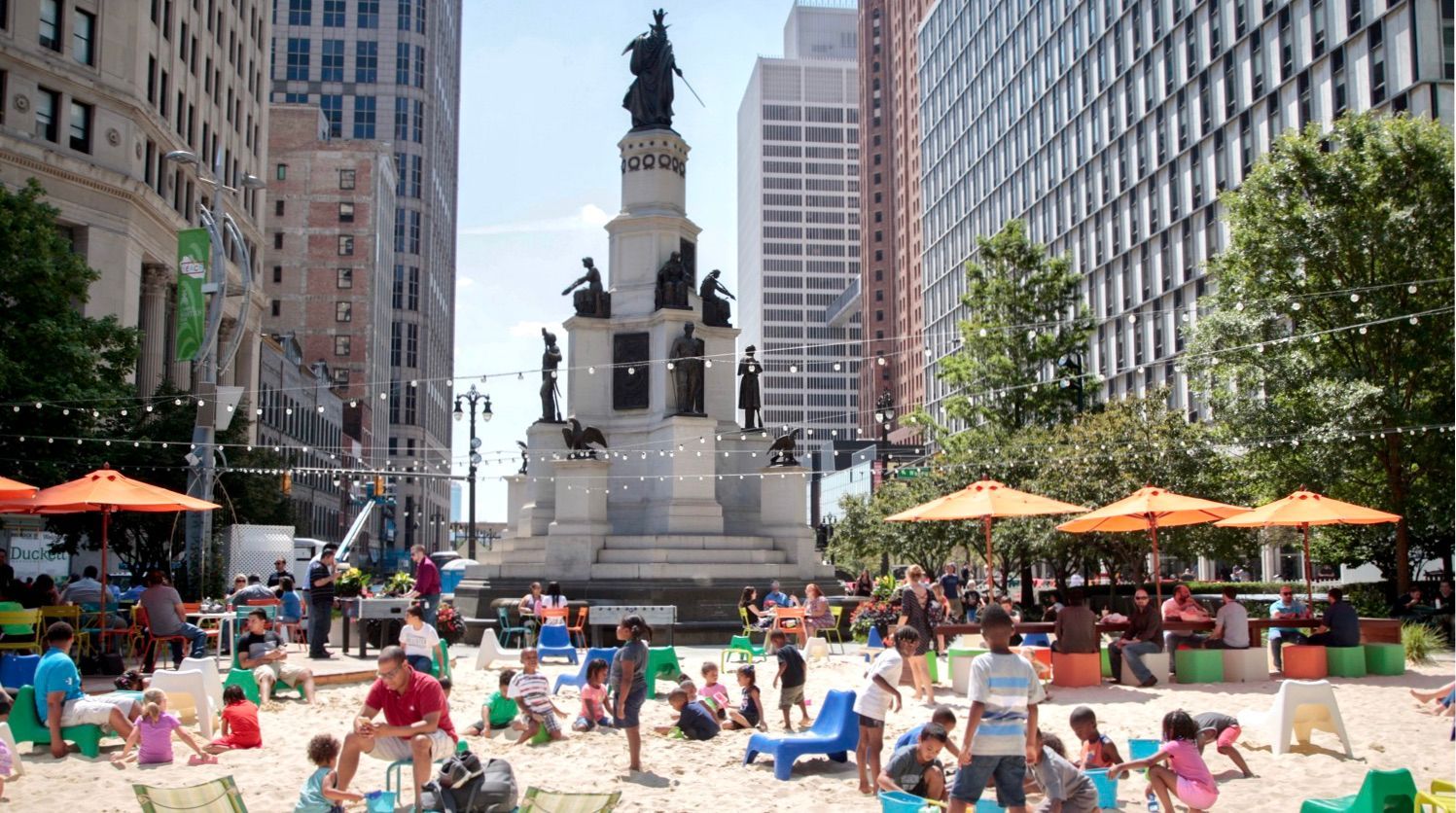
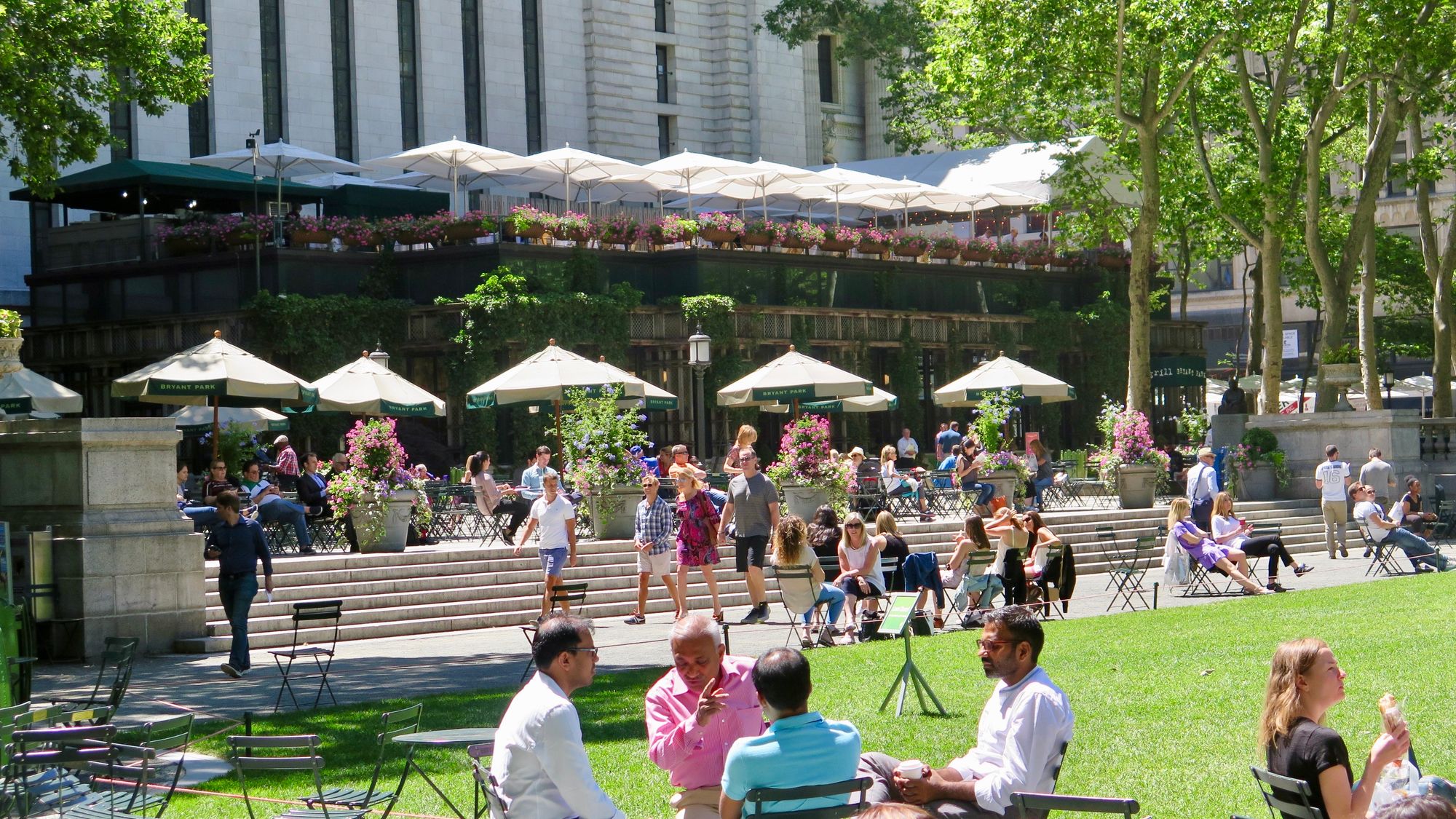
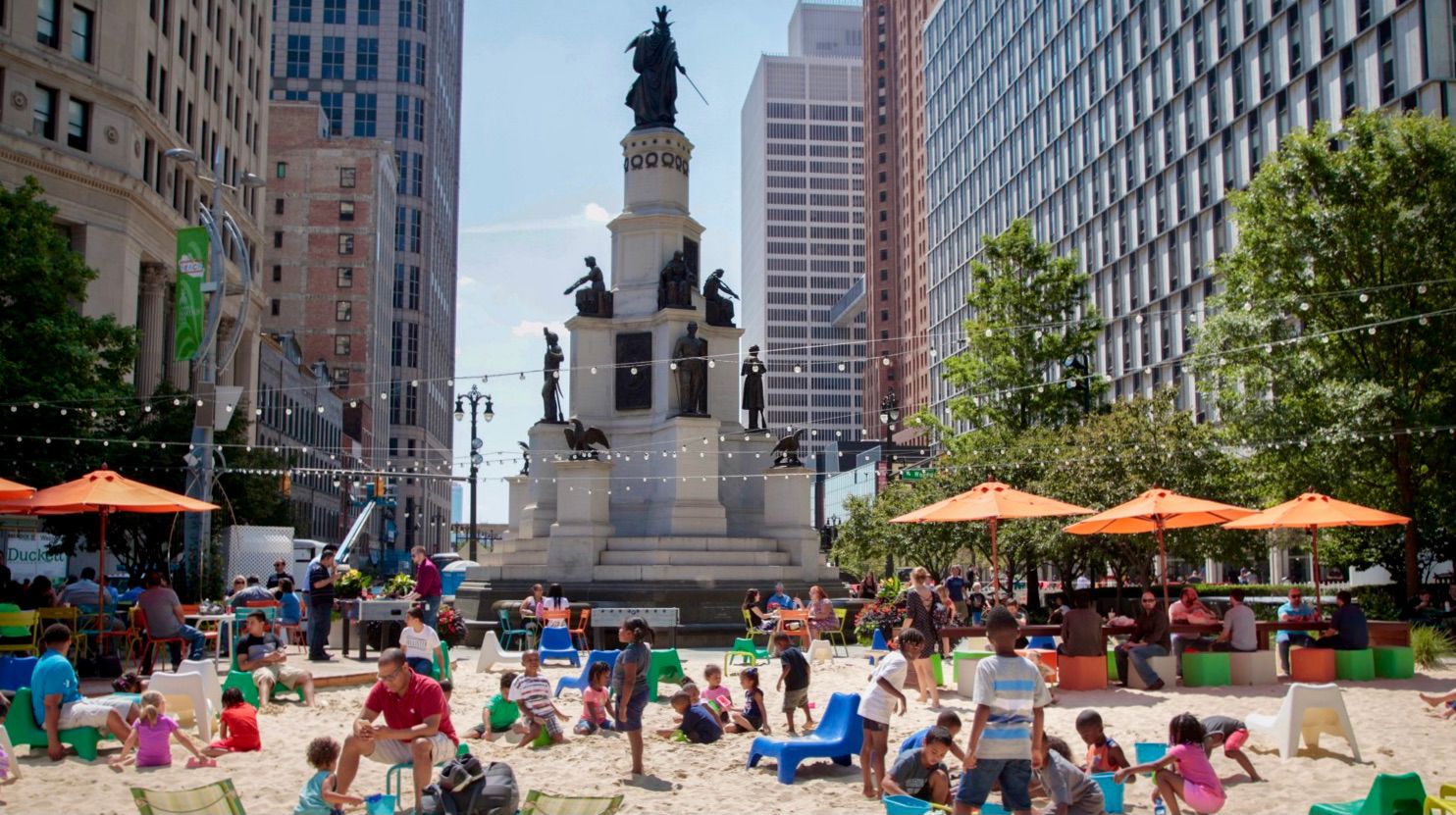
Like all of our work, these articles are constantly evolving. We encourage you to be part of this effort.



